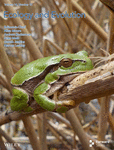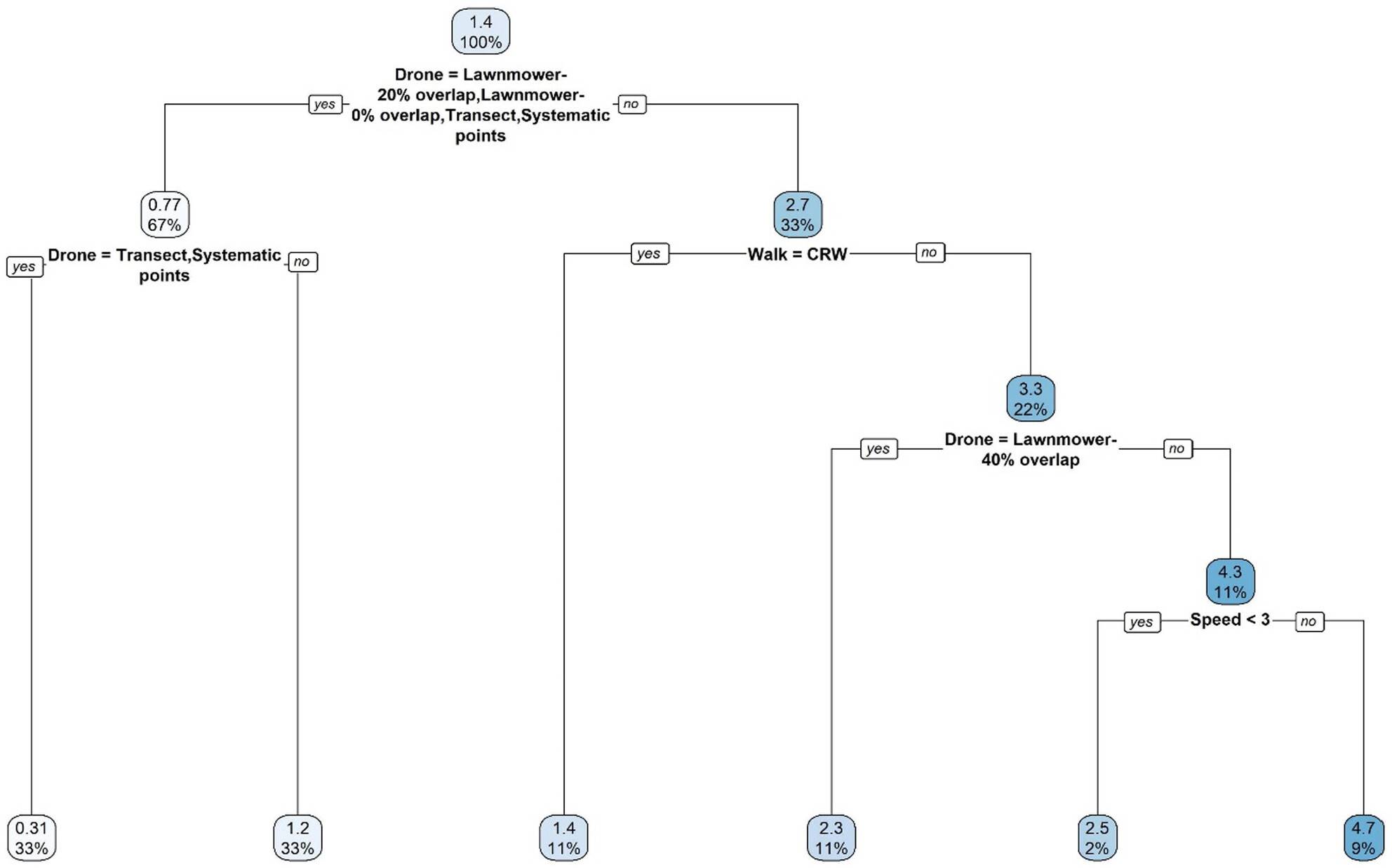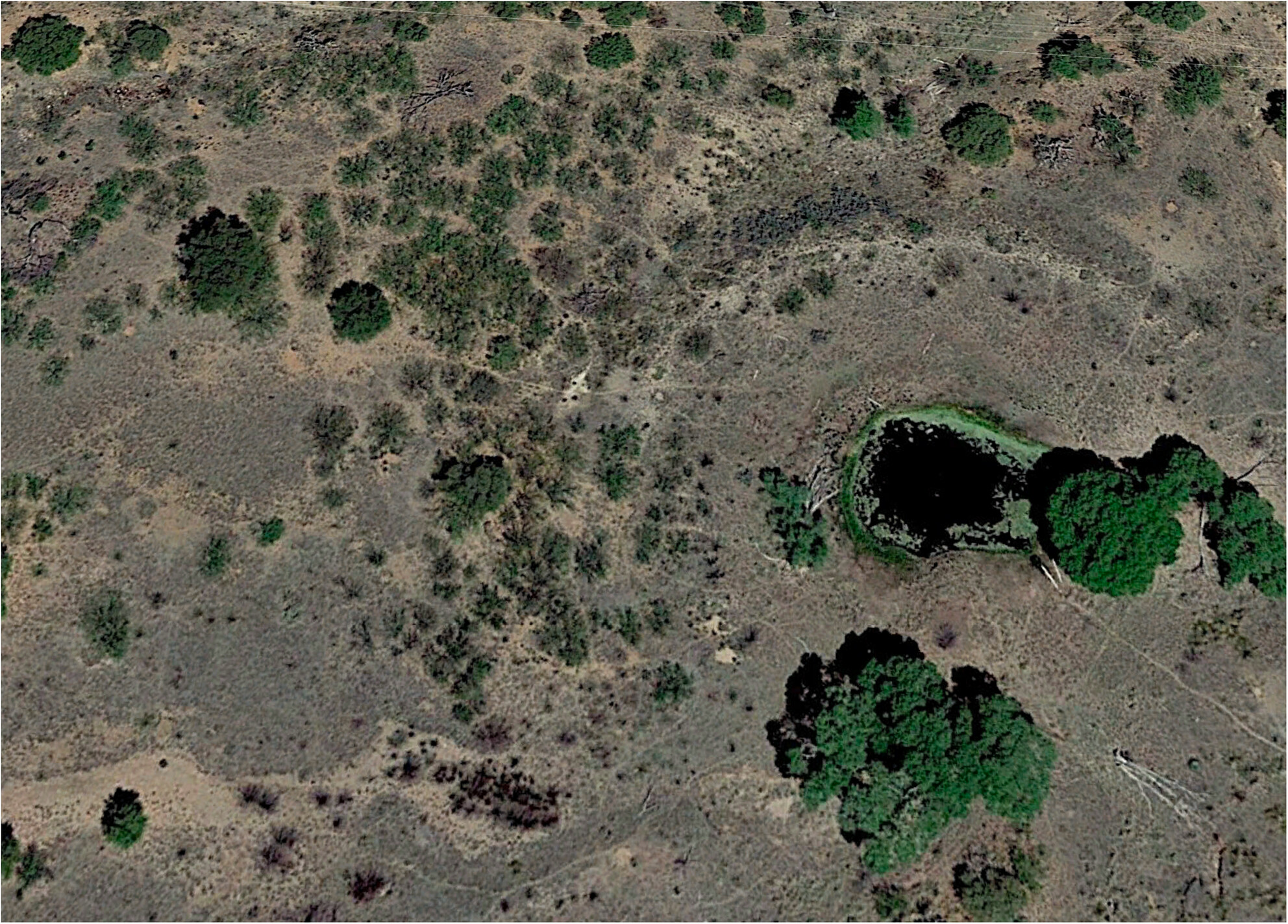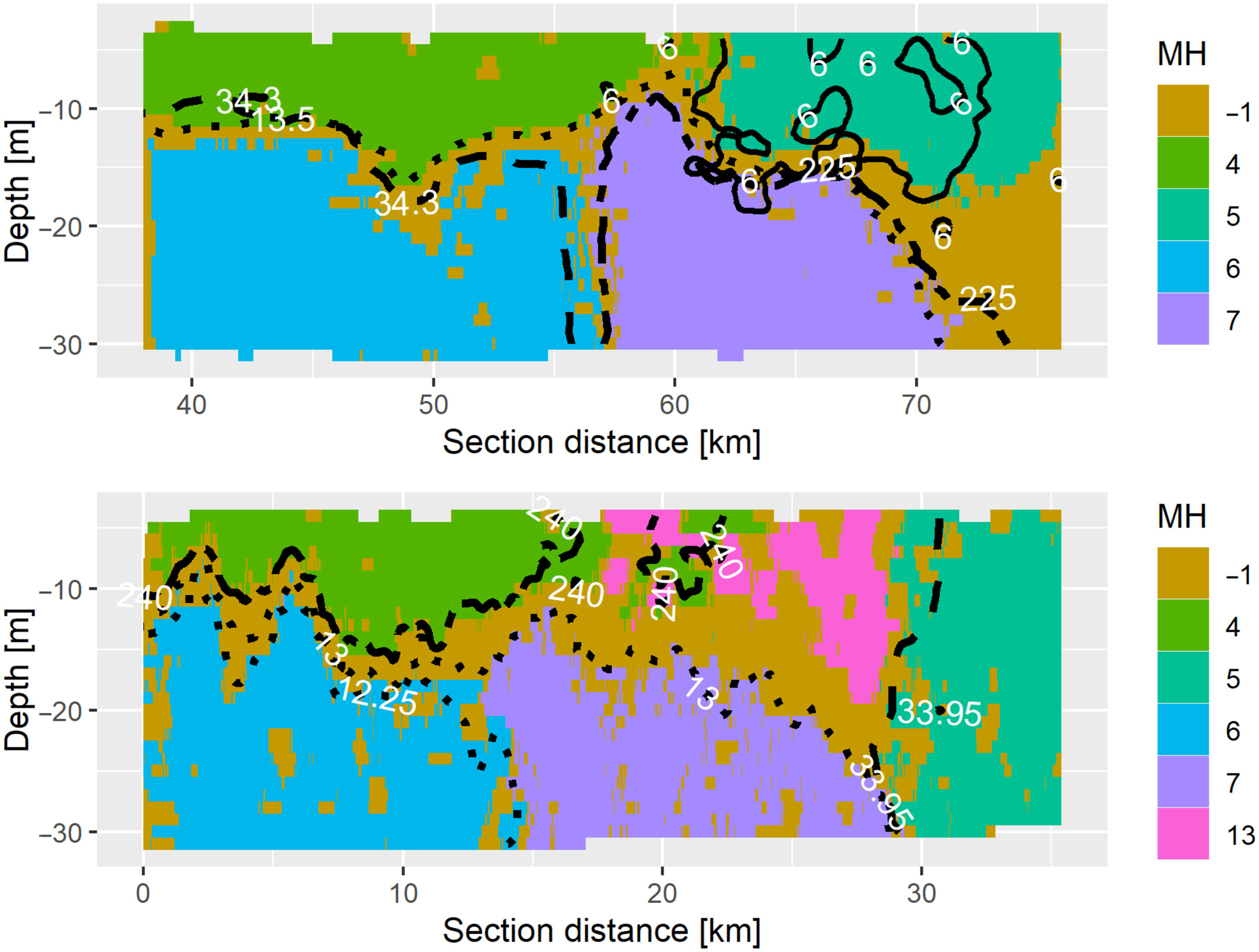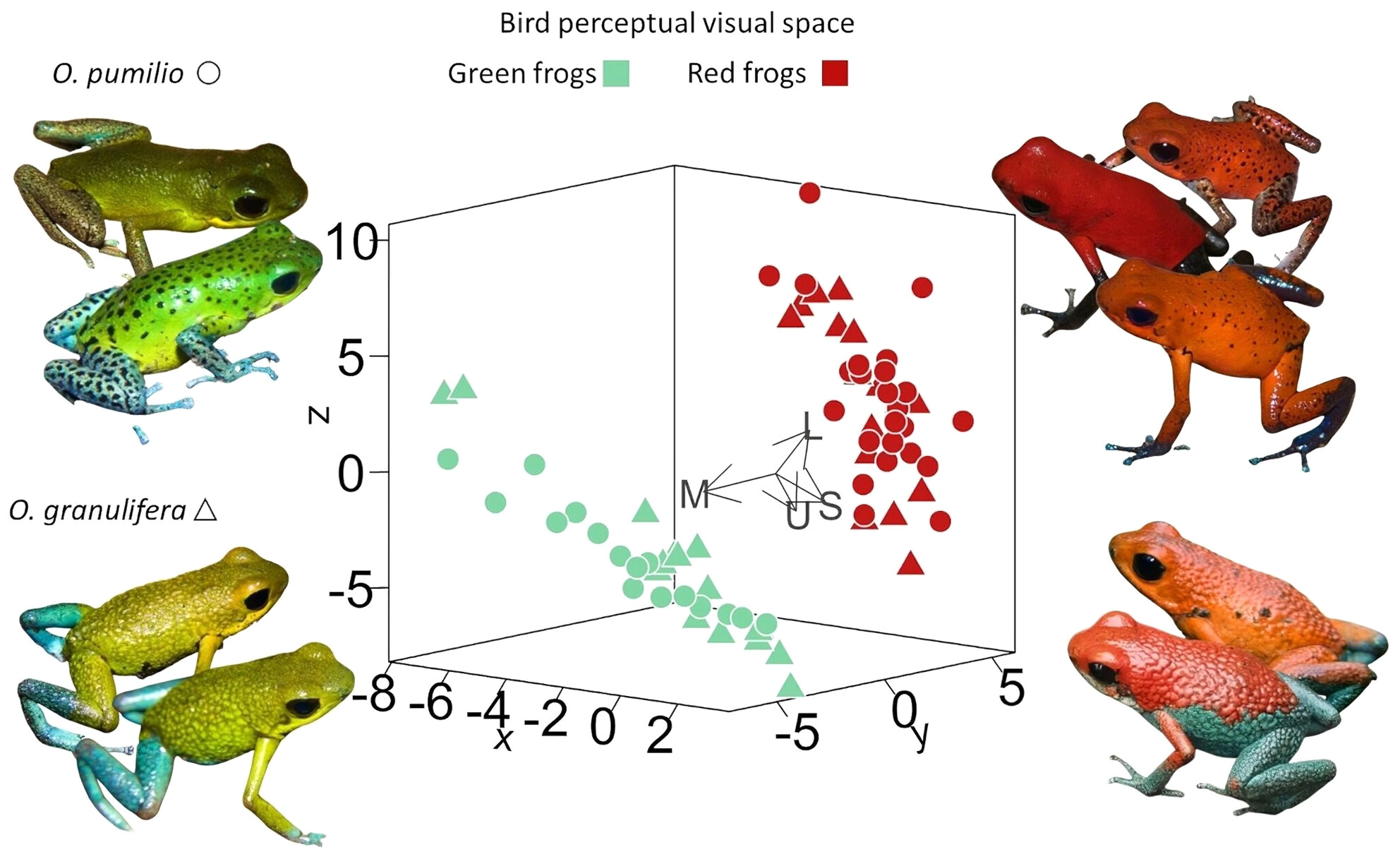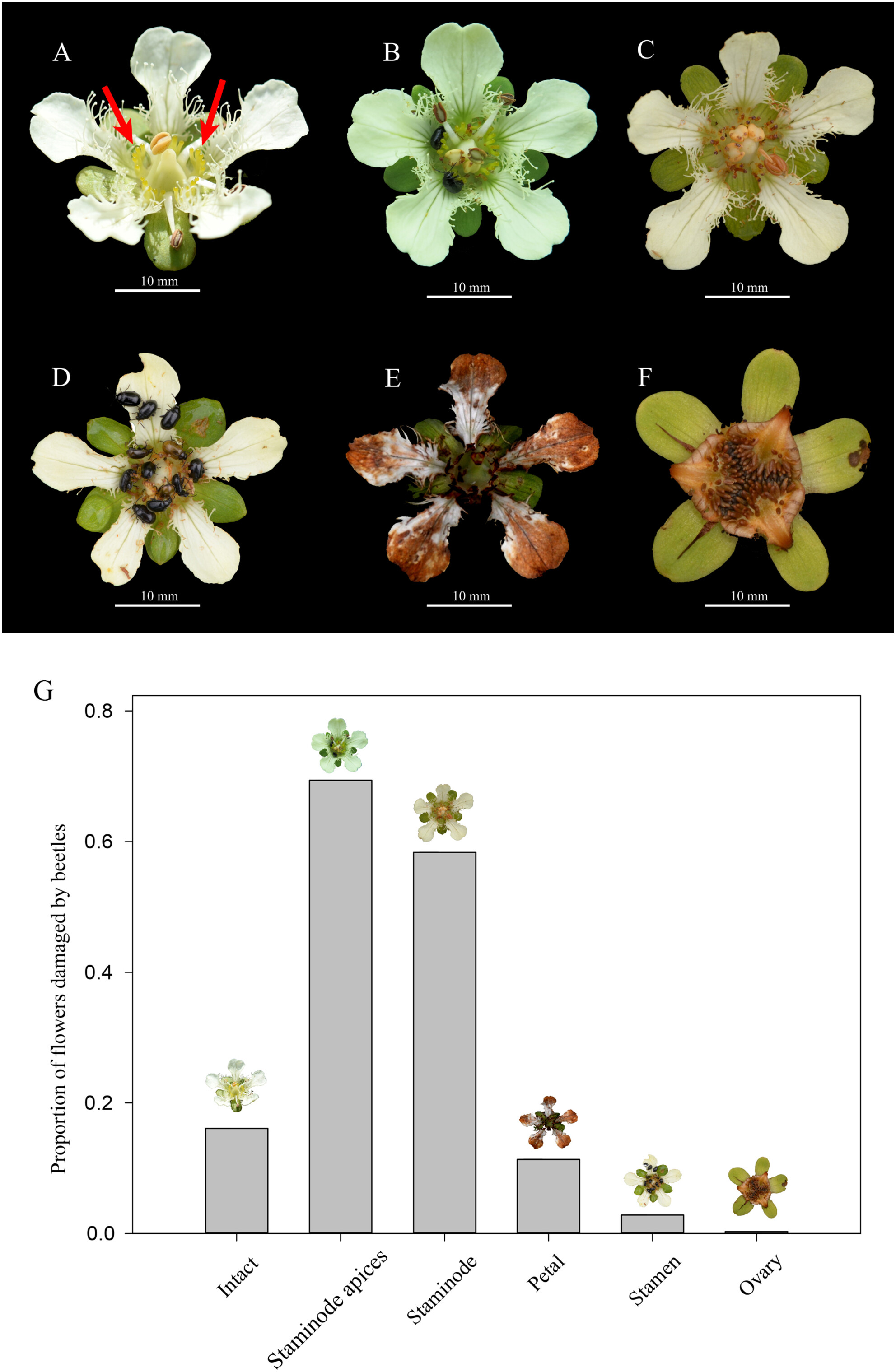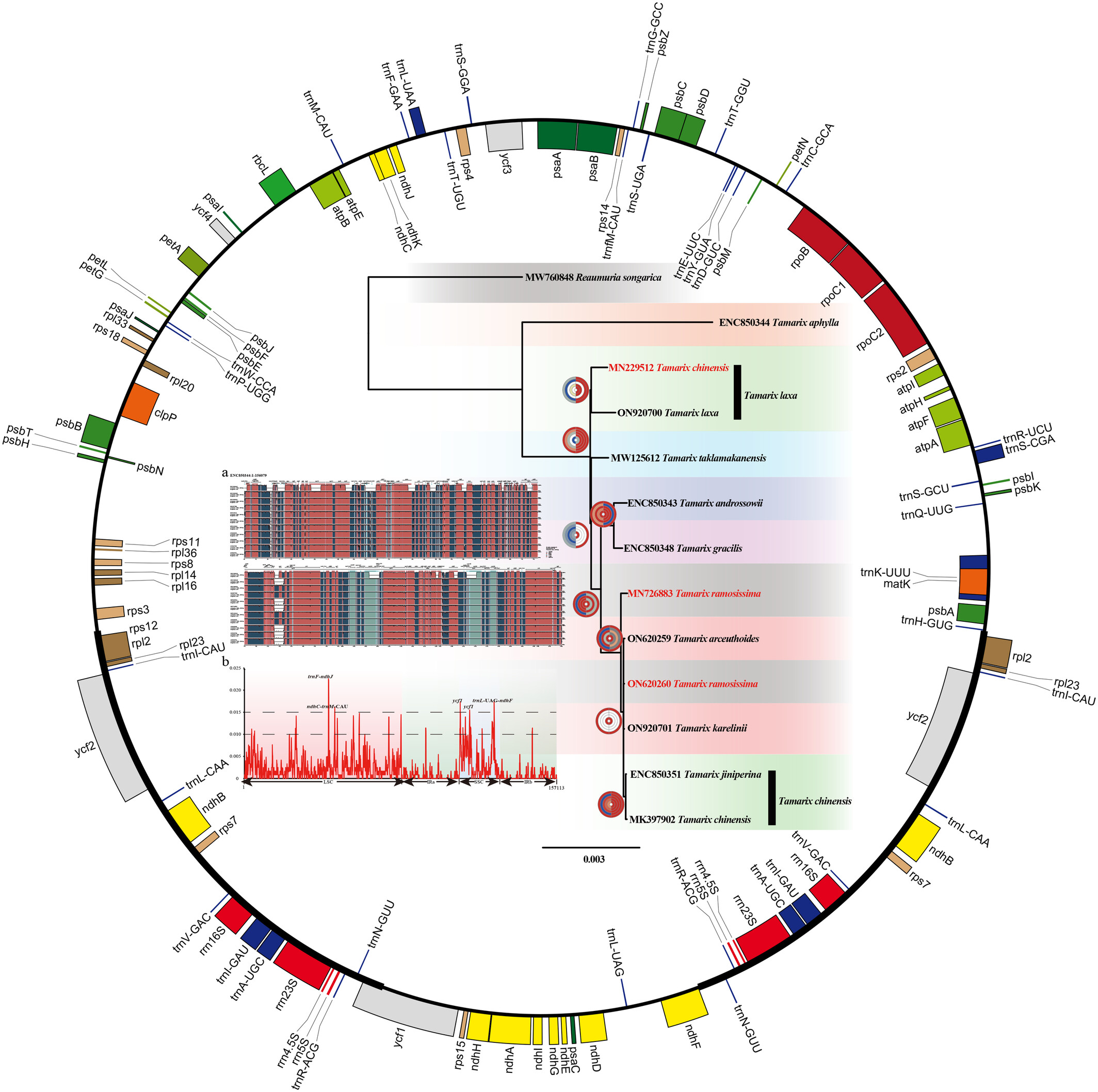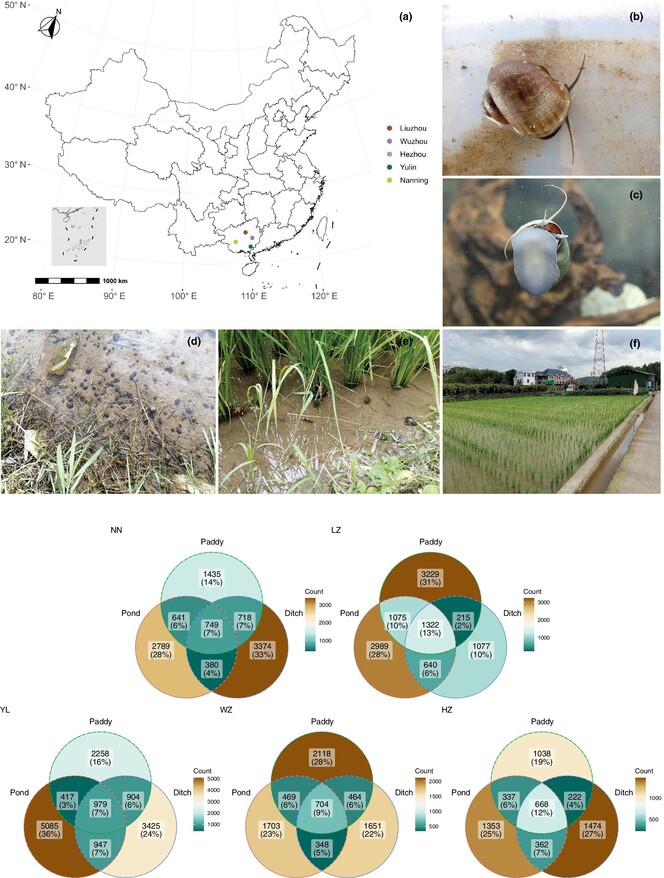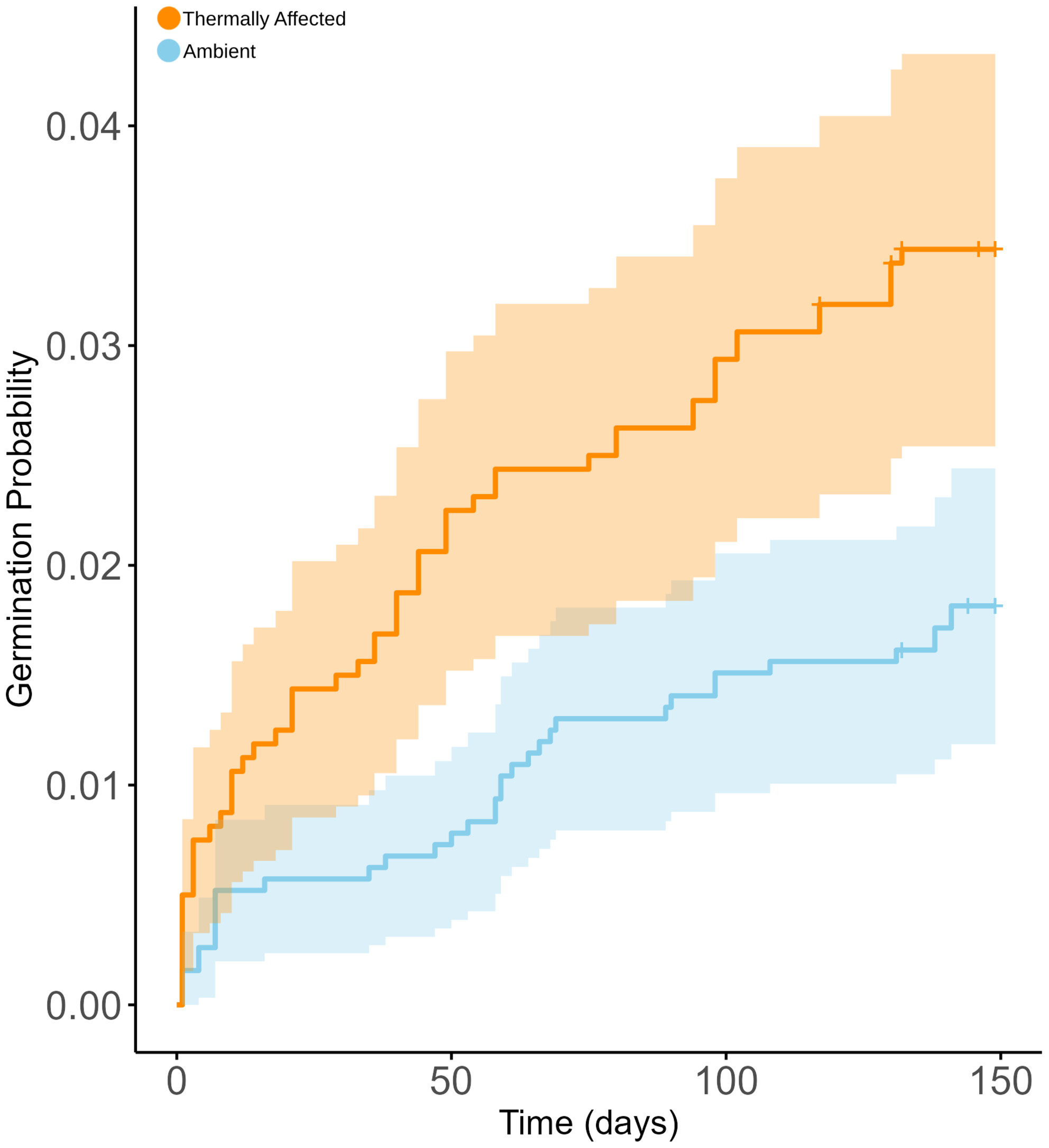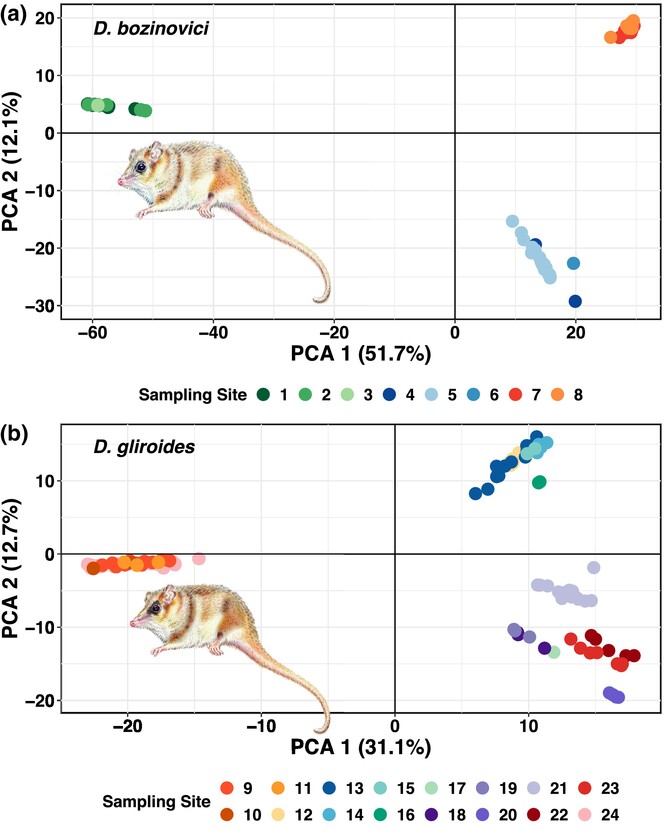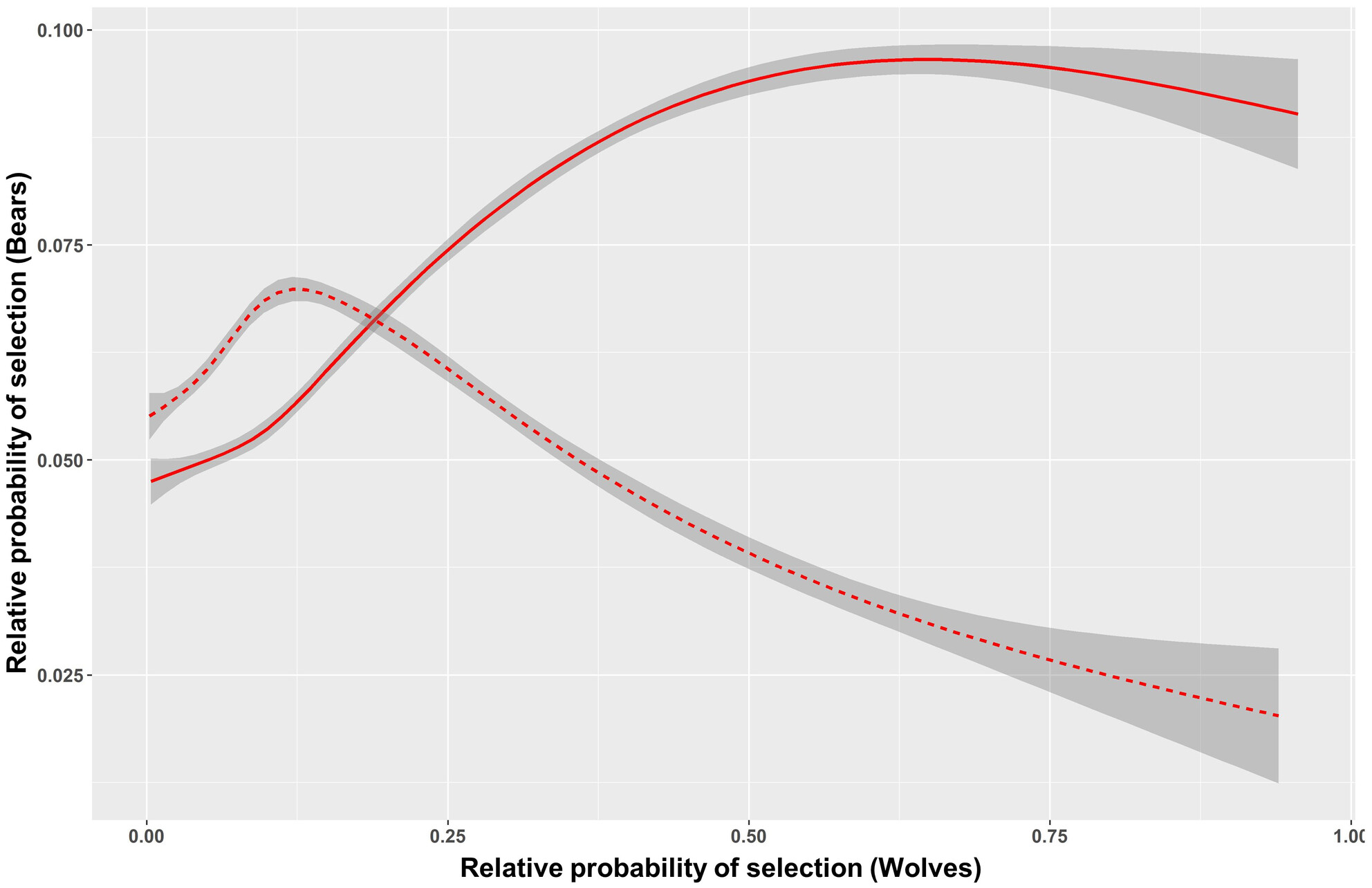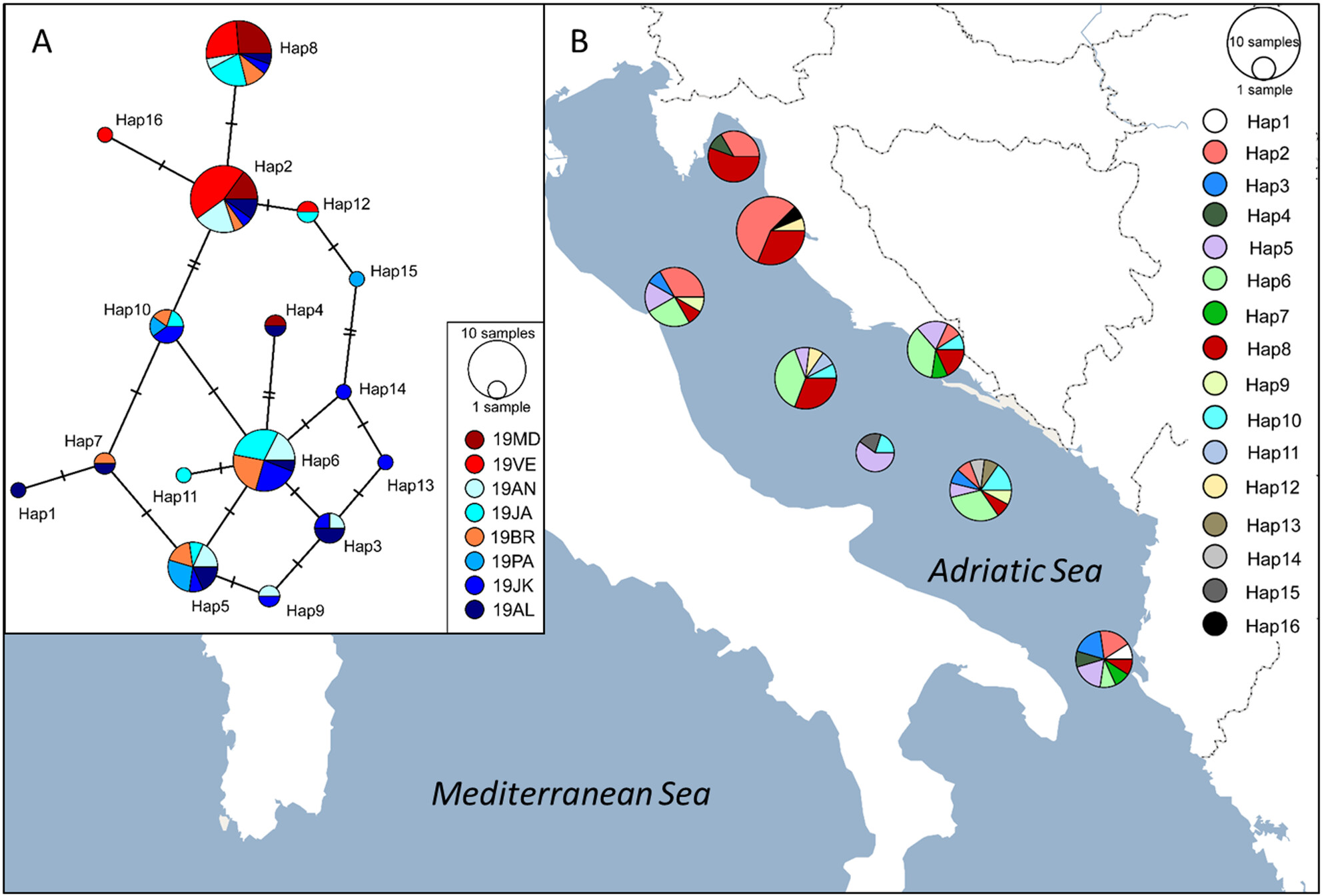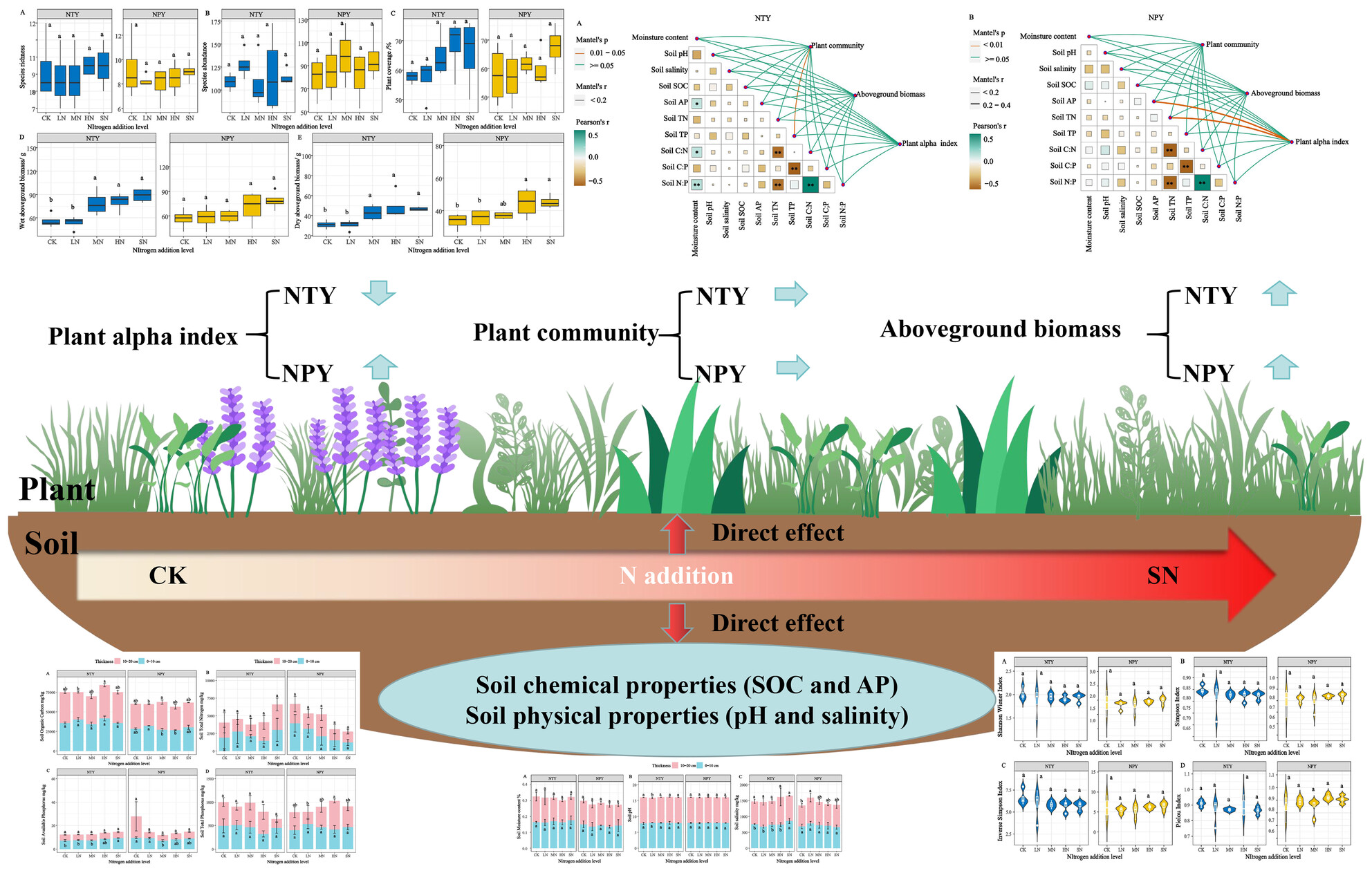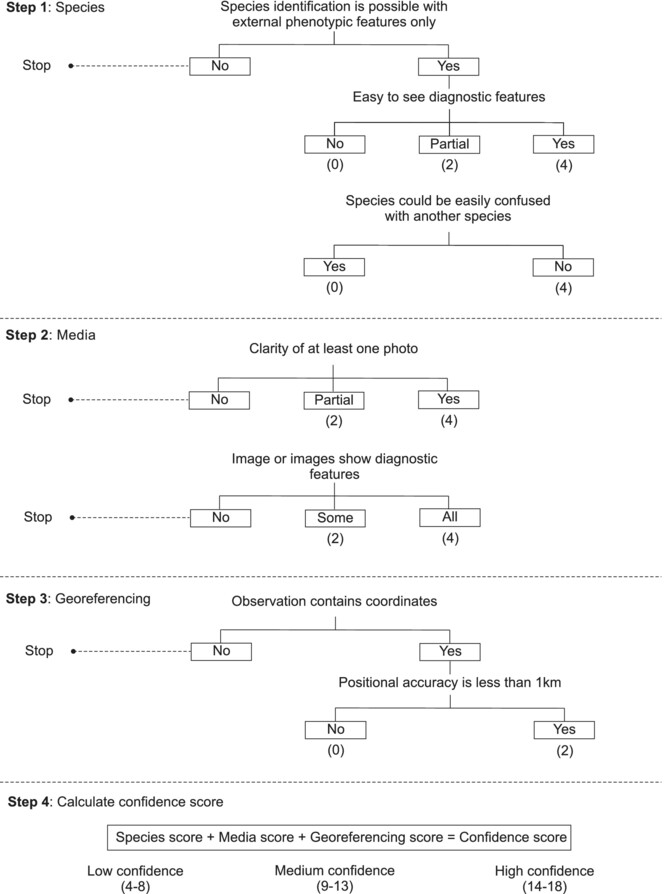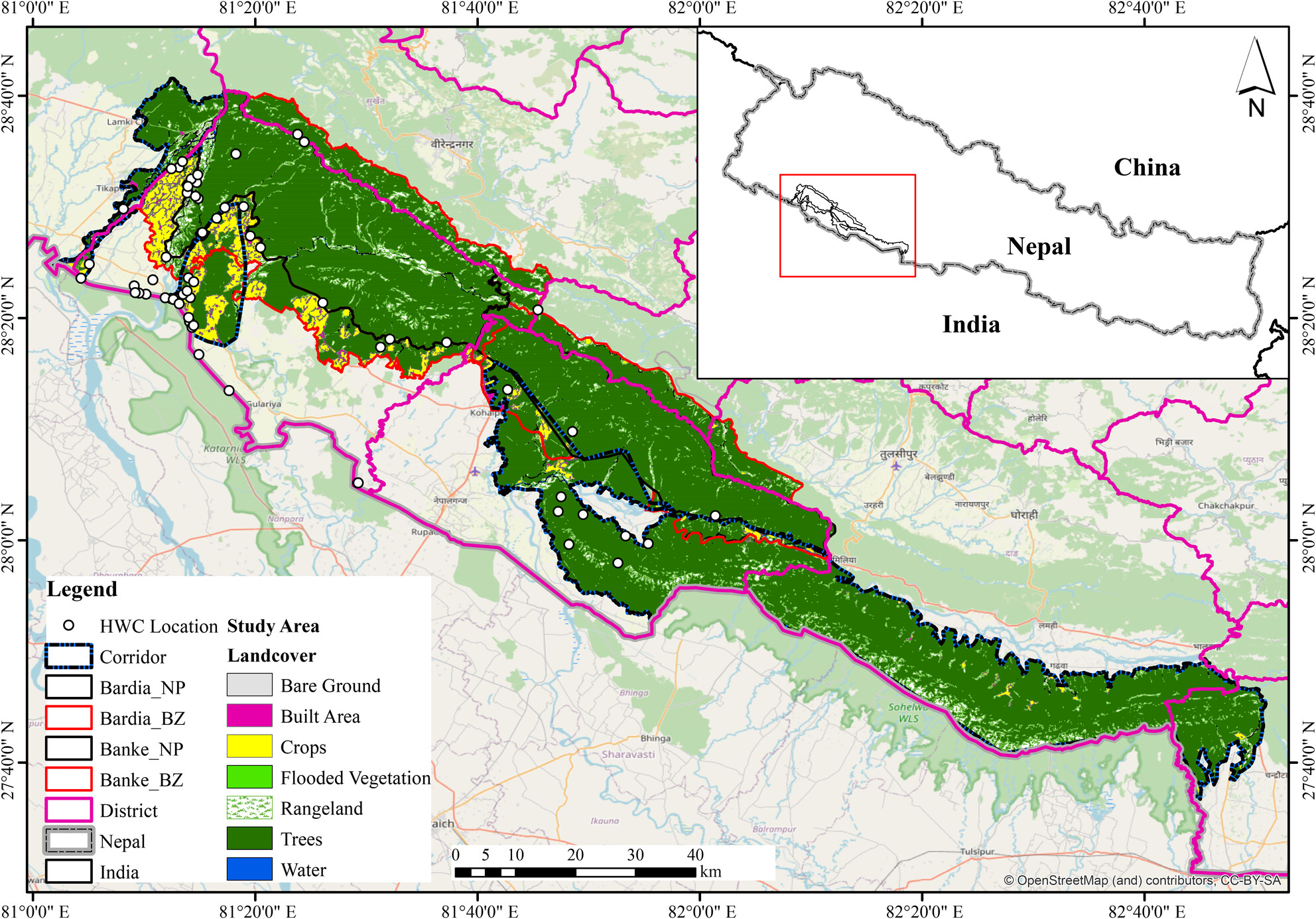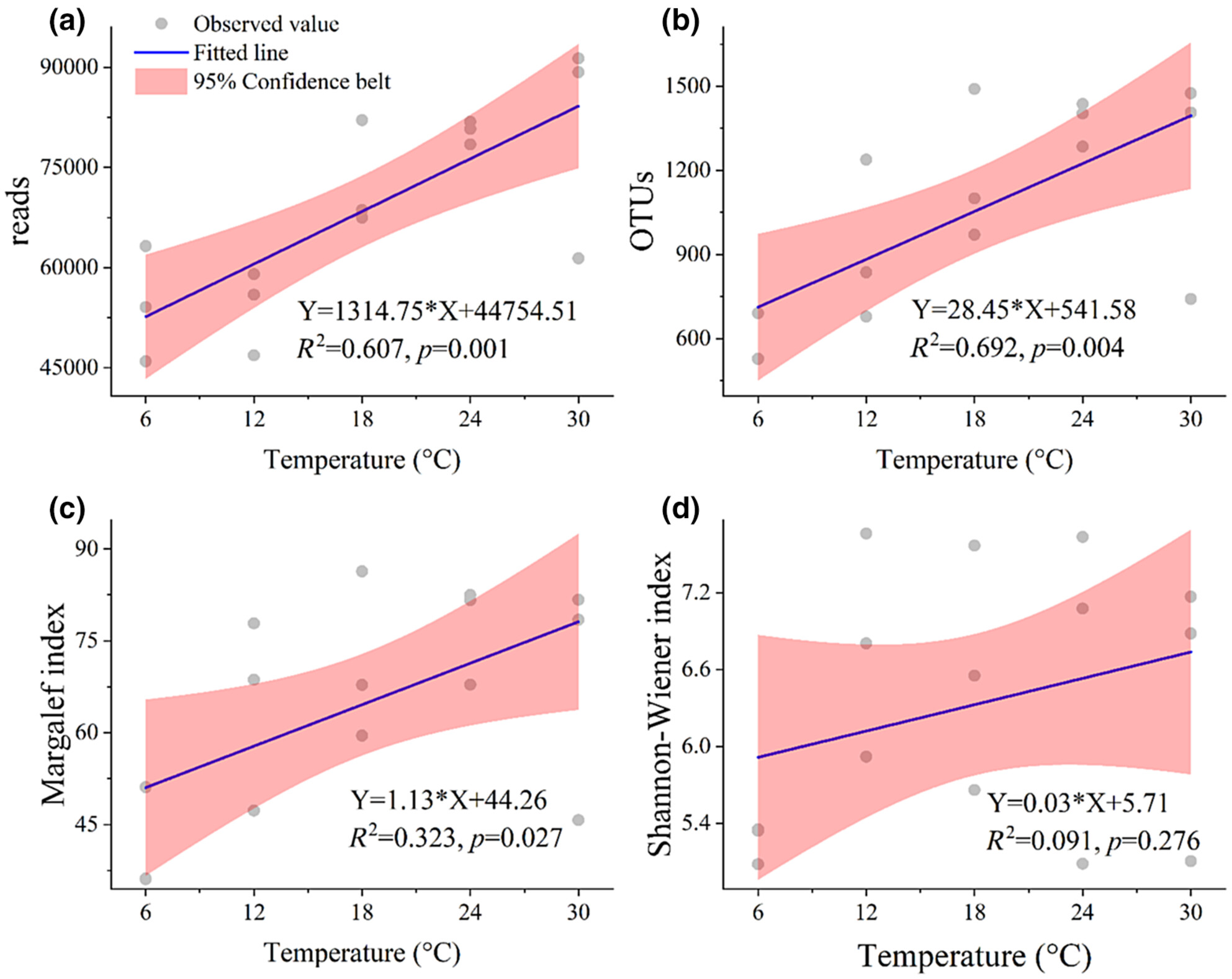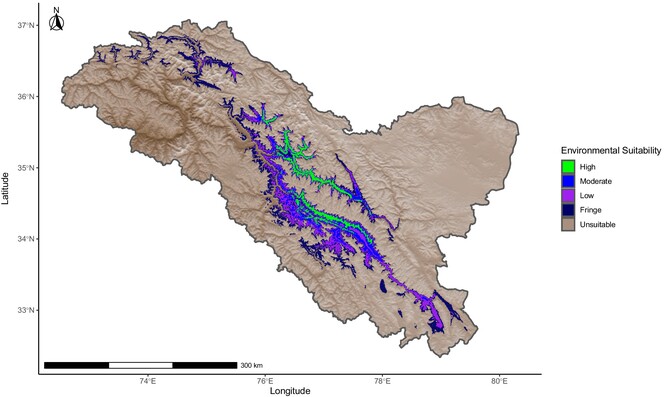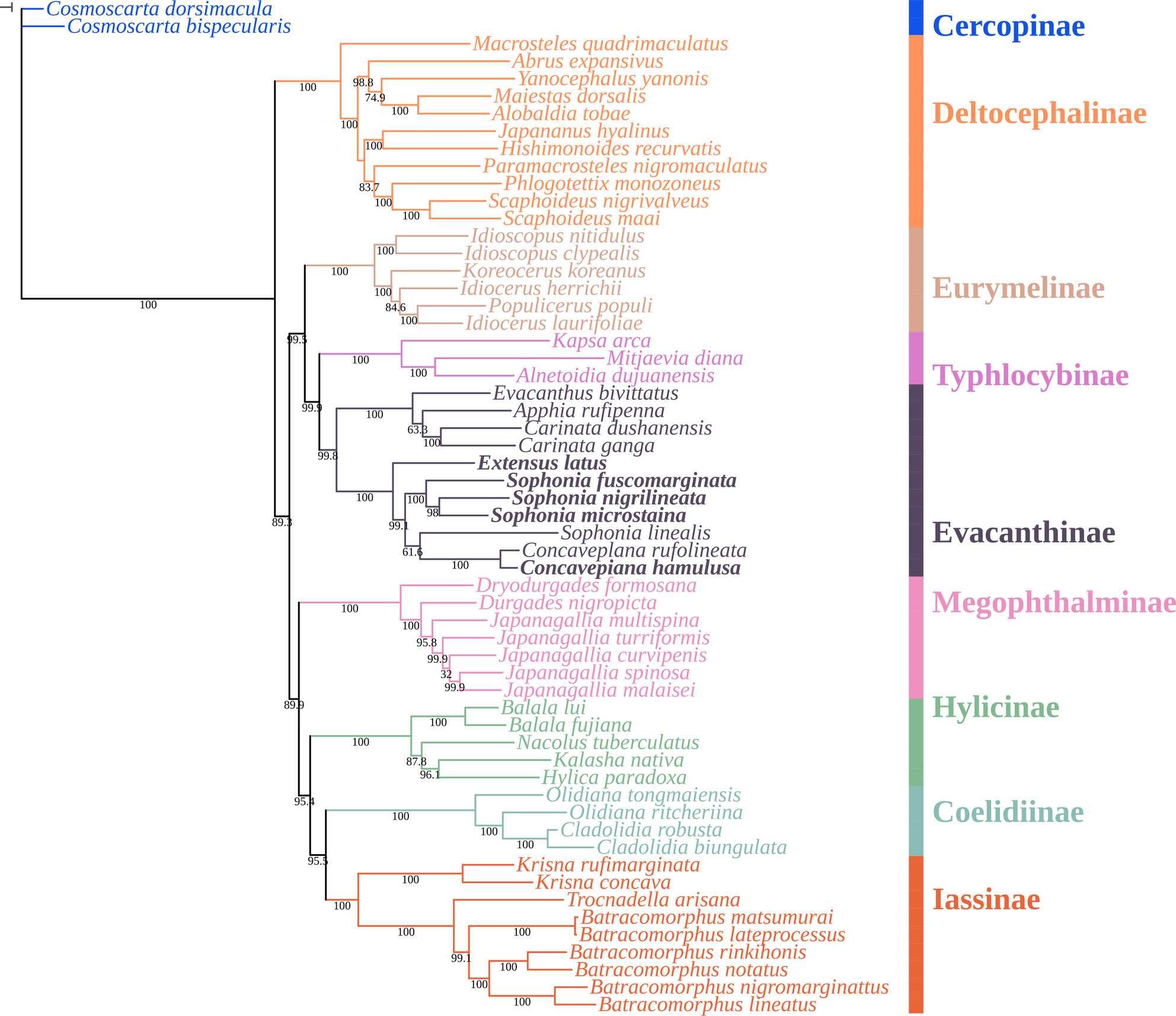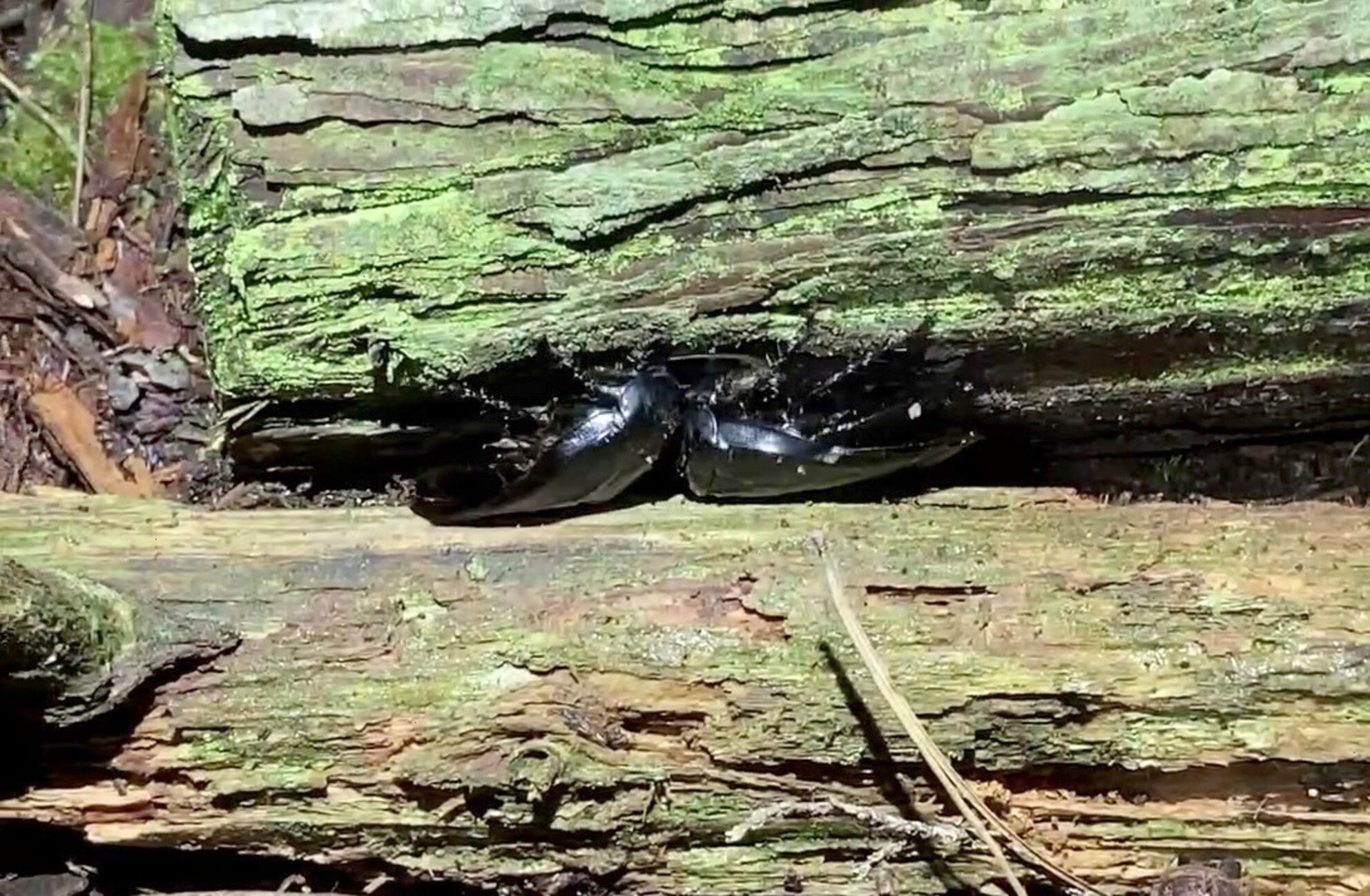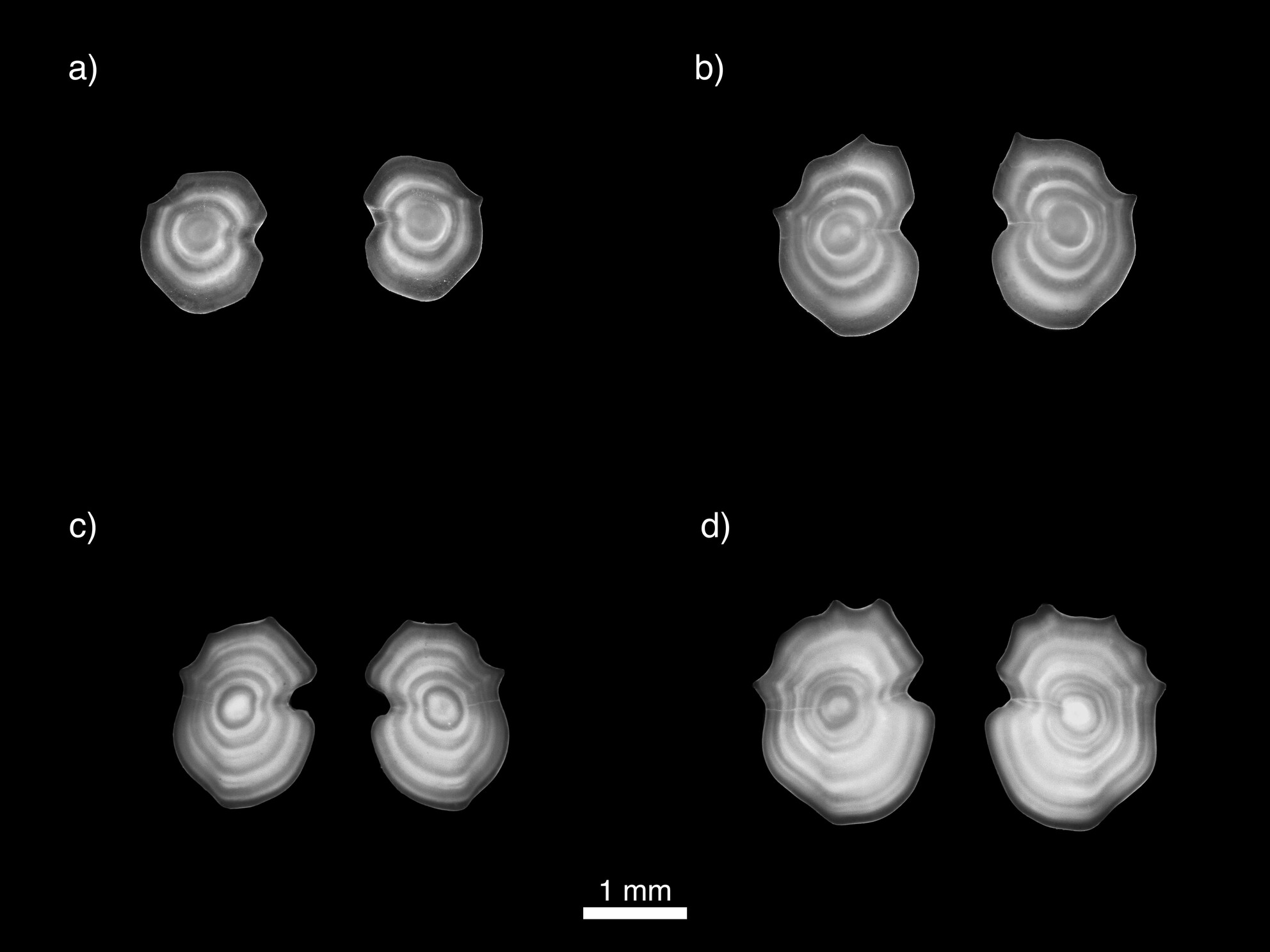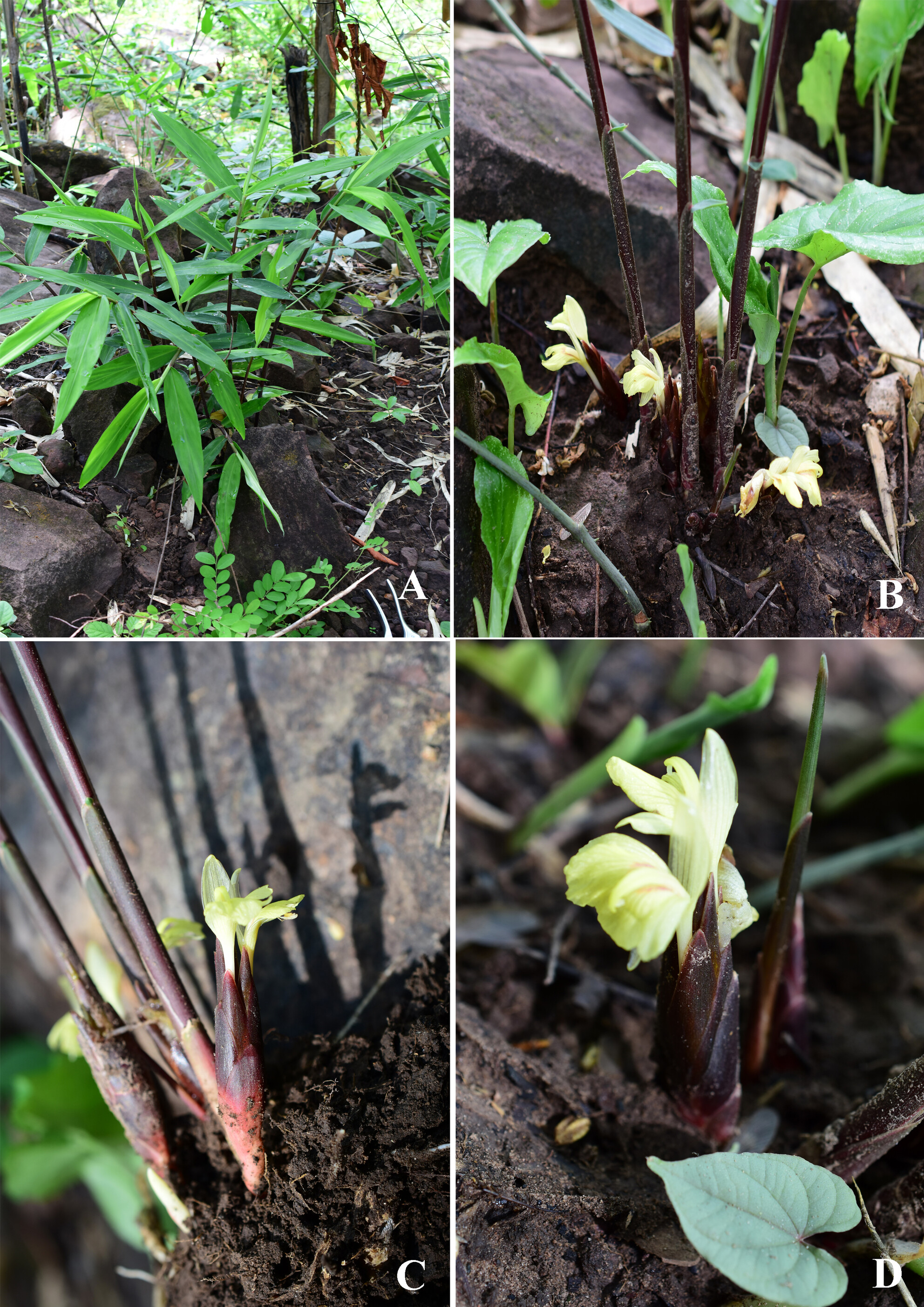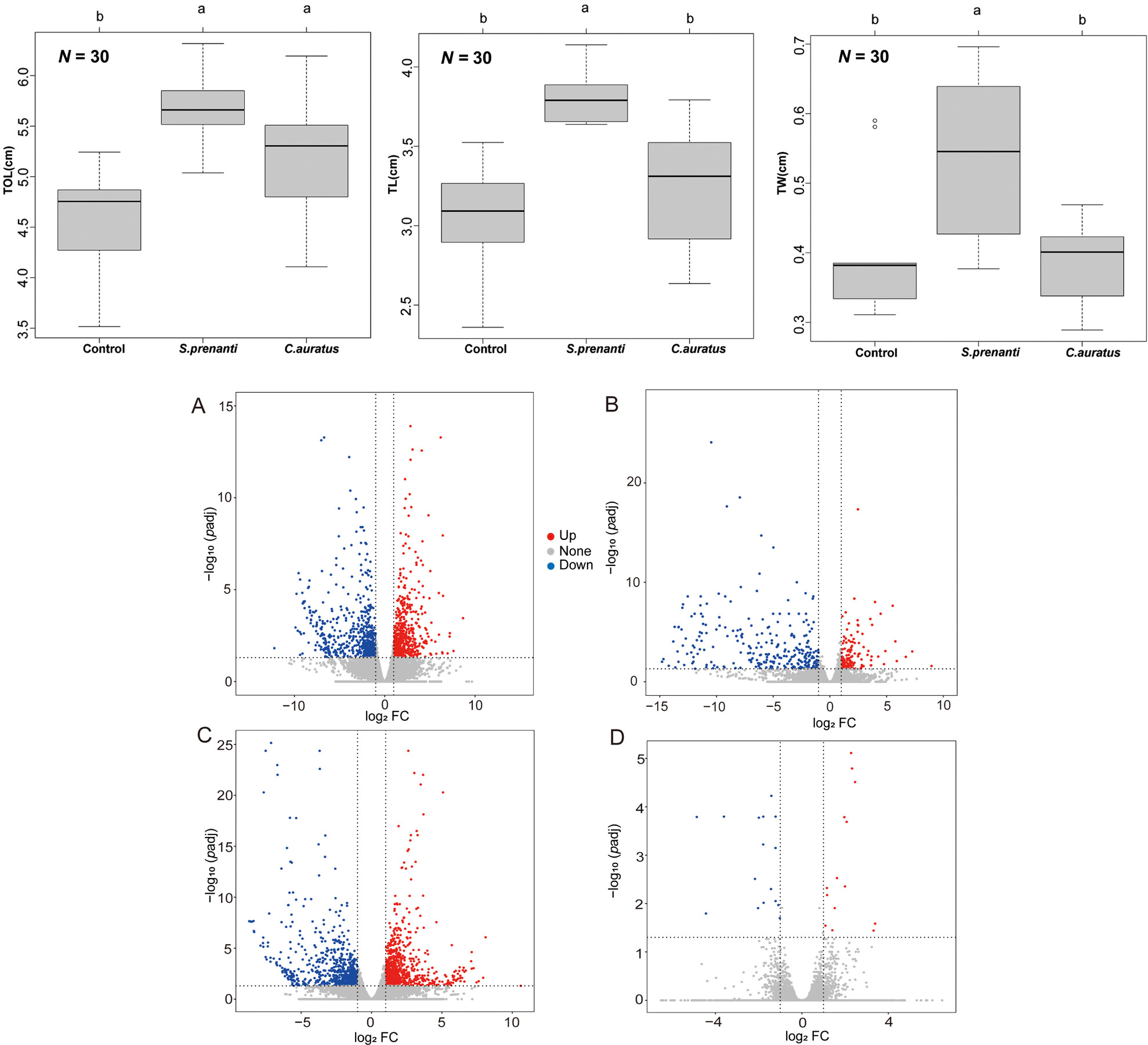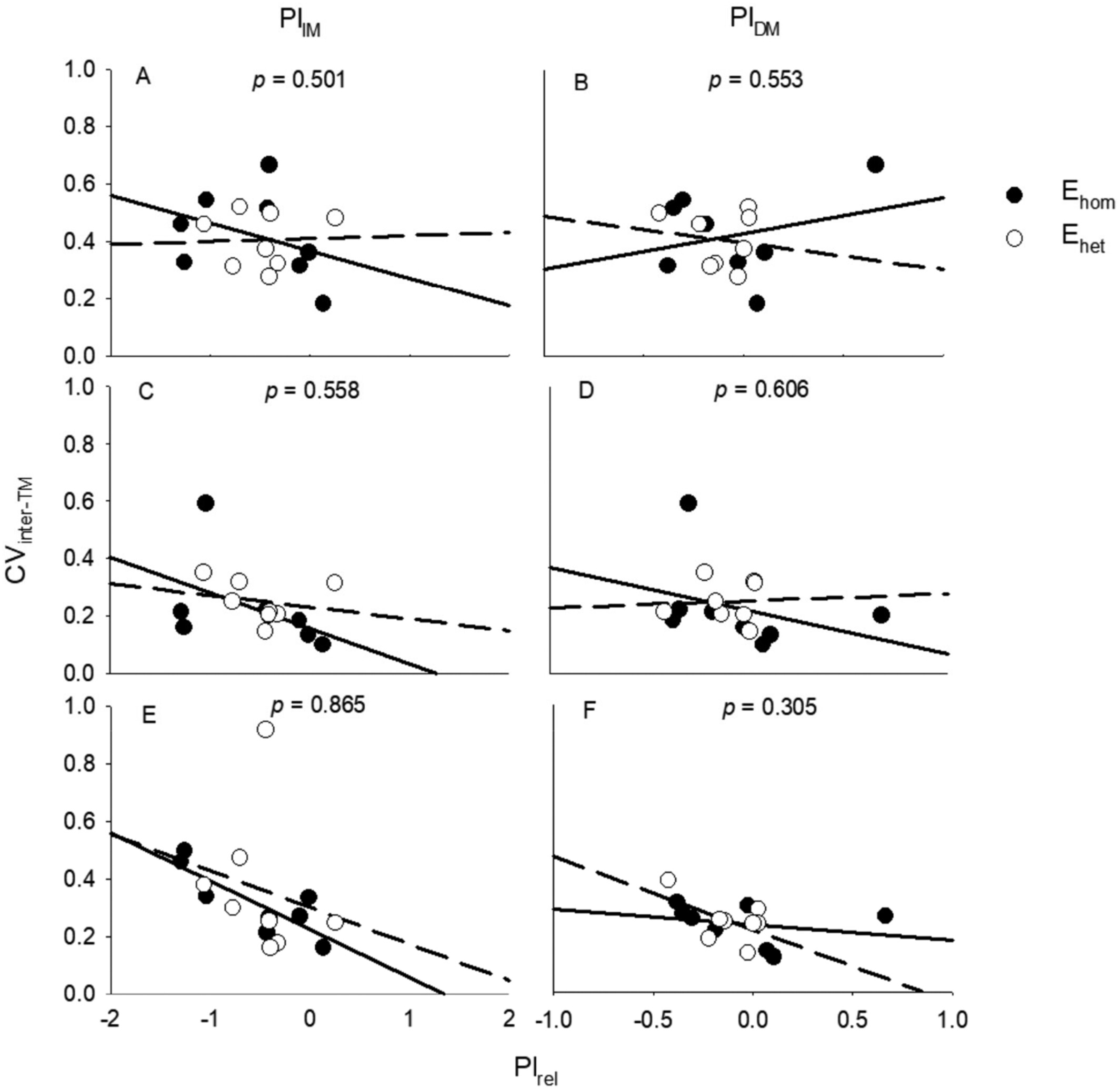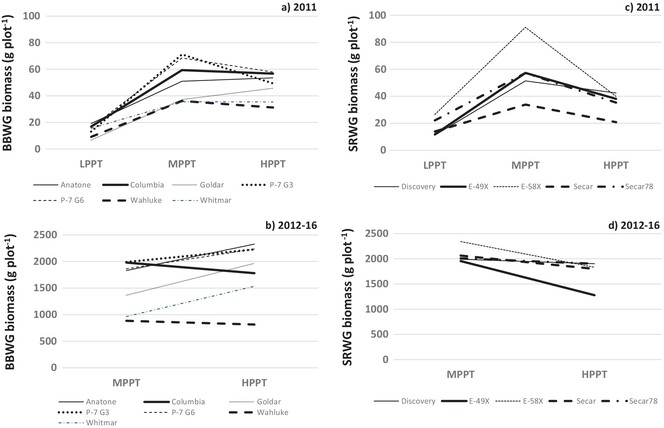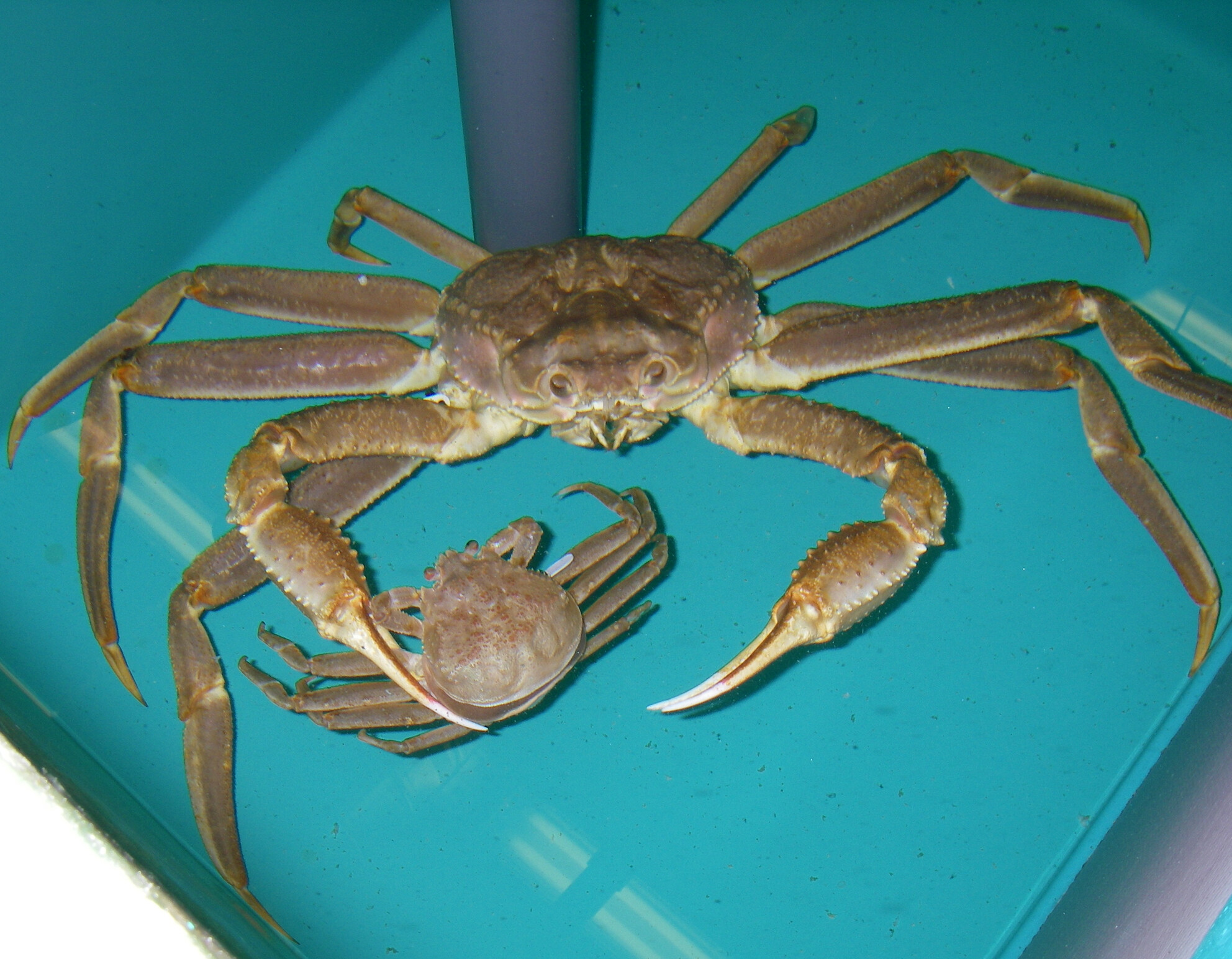Journal list menu
Export Citations
Download PDFs
ISSUE INFORMATION
RESEARCH ARTICLES
Comparative analysis reveals assortative mate preferences in darters independent of sympatry and sex
- First Published: 29 September 2024
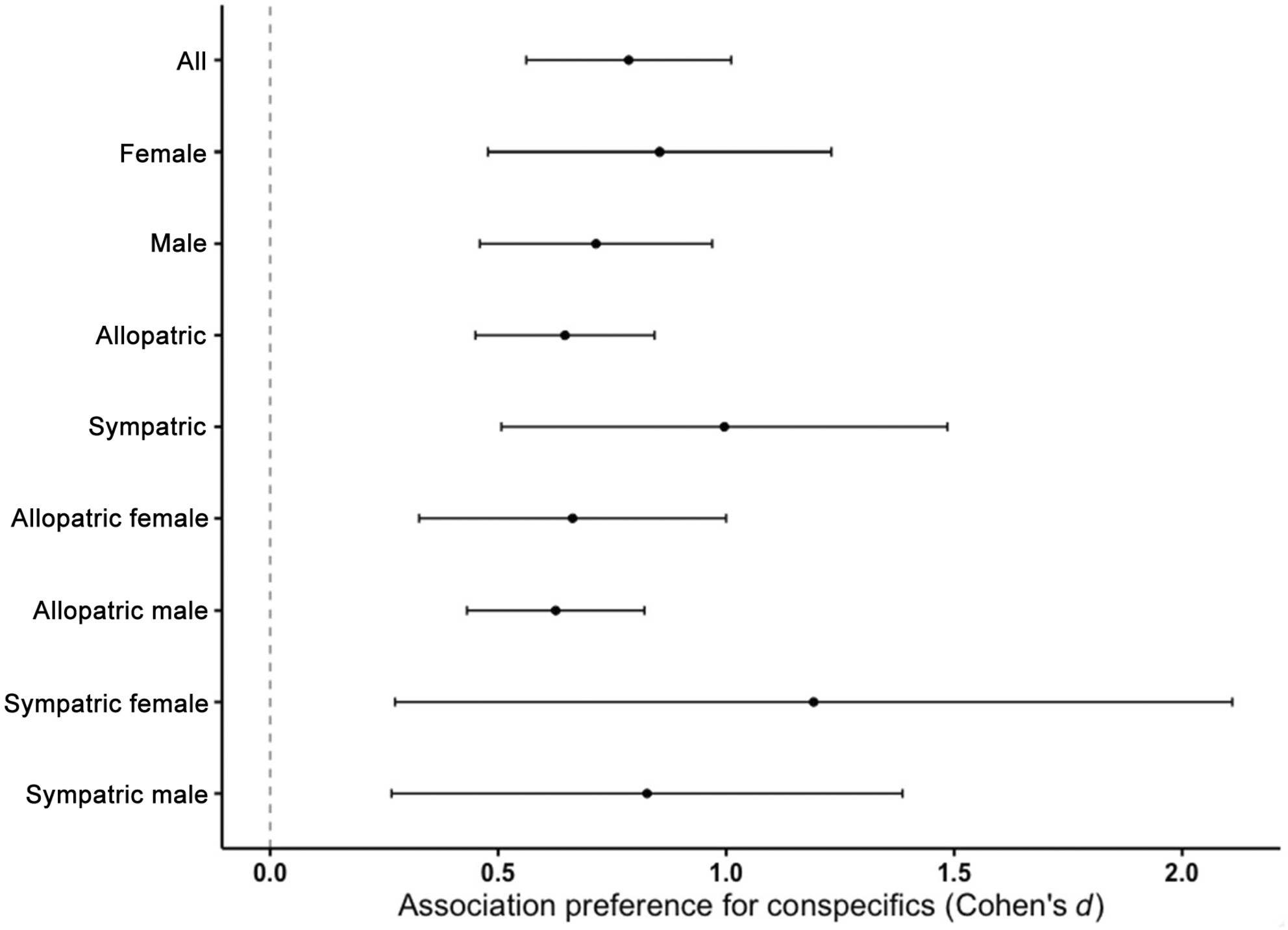
Mating preference for conspecifics is fundamental to species diversity maintenance in sexually reproducing organisms. Previous comparative analyses suggest that geography plays a key role in such preferences. Our comparison of sympatric and allopatric species of darters (genus Etheostoma) revealed that the link between assortative mating and geography is not as straightforward as might be predicted from hypotheses of reinforcement, and the link between assortative mating and sex is not as straightforward as classical interpretations of sexual selection might suggest.
RESEARCH ARTICLE
Summer primary production of Arctic kelp communities is more affected by duration than magnitude of simulated marine heatwaves
- First Published: 29 September 2024
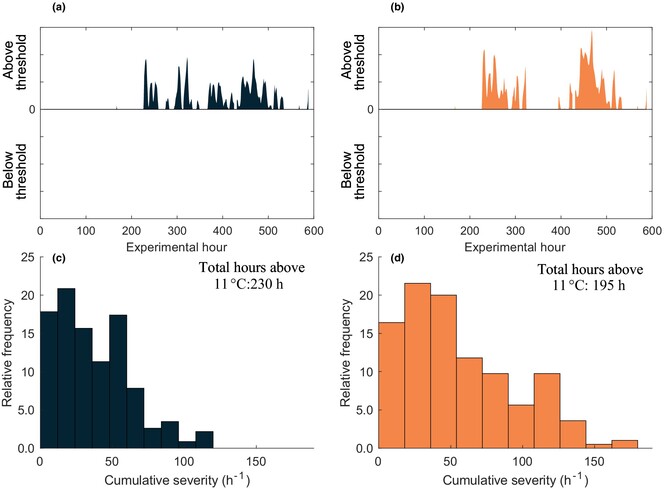
This study aims to understand the potential impacts of marine heatwaves now and in the future on Arctic kelp ecosystems by simulating scenarios projected for the year 2100. Our findings reveal that both marine heatwave treatments significantly reduced net community production. Notably, the long marine heatwave scenario had a more severe impact on accumulated net production compared with the two short-term heatwaves.
On the move: Influence of animal movements on count error during drone surveys
- First Published: 29 September 2024
Ectomycorrhizal fungi and the nitrogen economy of Nothofagus in southern Patagonia
- First Published: 29 September 2024

Ectomycorrhizal fungi play essential roles in nitrogen cycling and plant nutrient uptake at high latitudes. However, they have disproportionately been studied in boreal forests dominated by evergreen conifers. We characterized ectomycorrhizal associations and the nitrogen economy of co-occurring deciduous and evergreen angiosperms from the genus Nothofagus across fertility gradients in Patagonia. Our findings illustrate the diversity of nitrogen acquisition strategies of ECM fungi in these forests that do not always reflect northern hemisphere paradigms.
Long-term monitoring of a population of greater horseshoe bat emphasises the importance of a pest beetle prey on demographic trends
- First Published: 29 September 2024
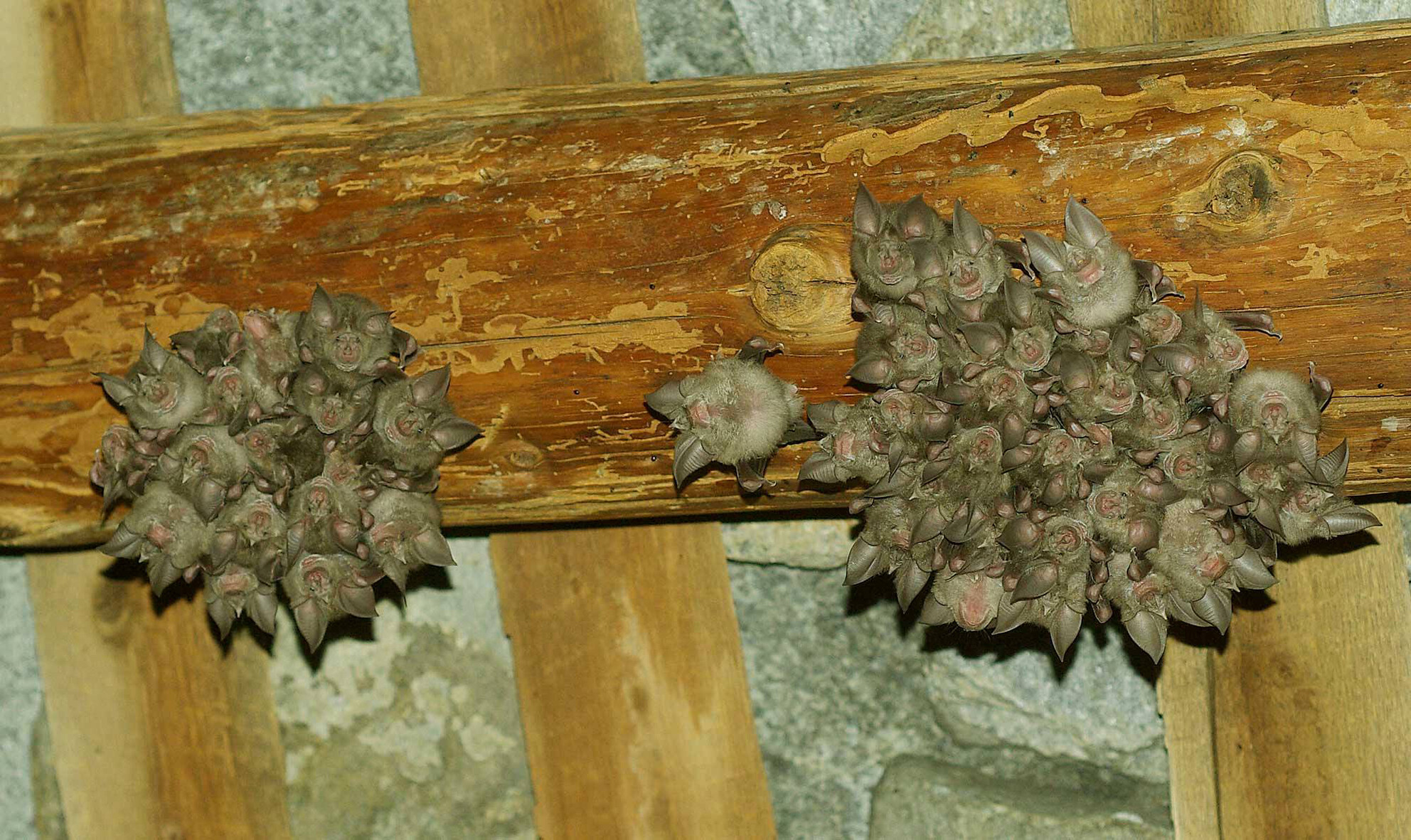
We present the results of 31 years of monitoring data for a greater horseshoe bat (Rhinolophus ferrumequinum) population in NW Italy. We investigated whether annual fluctuations in bat counts are influenced by common cockchafer availability and weather conditions. Our results underscore the importance of considering predator–prey dynamics when examining the long-term population trends of species of conservation concern.
REVIEW ARTICLE
Hidden gems: Scattered knowledge hampered freshwater jellyfish research over the past one-and-a-half centuries
- First Published: 29 September 2024
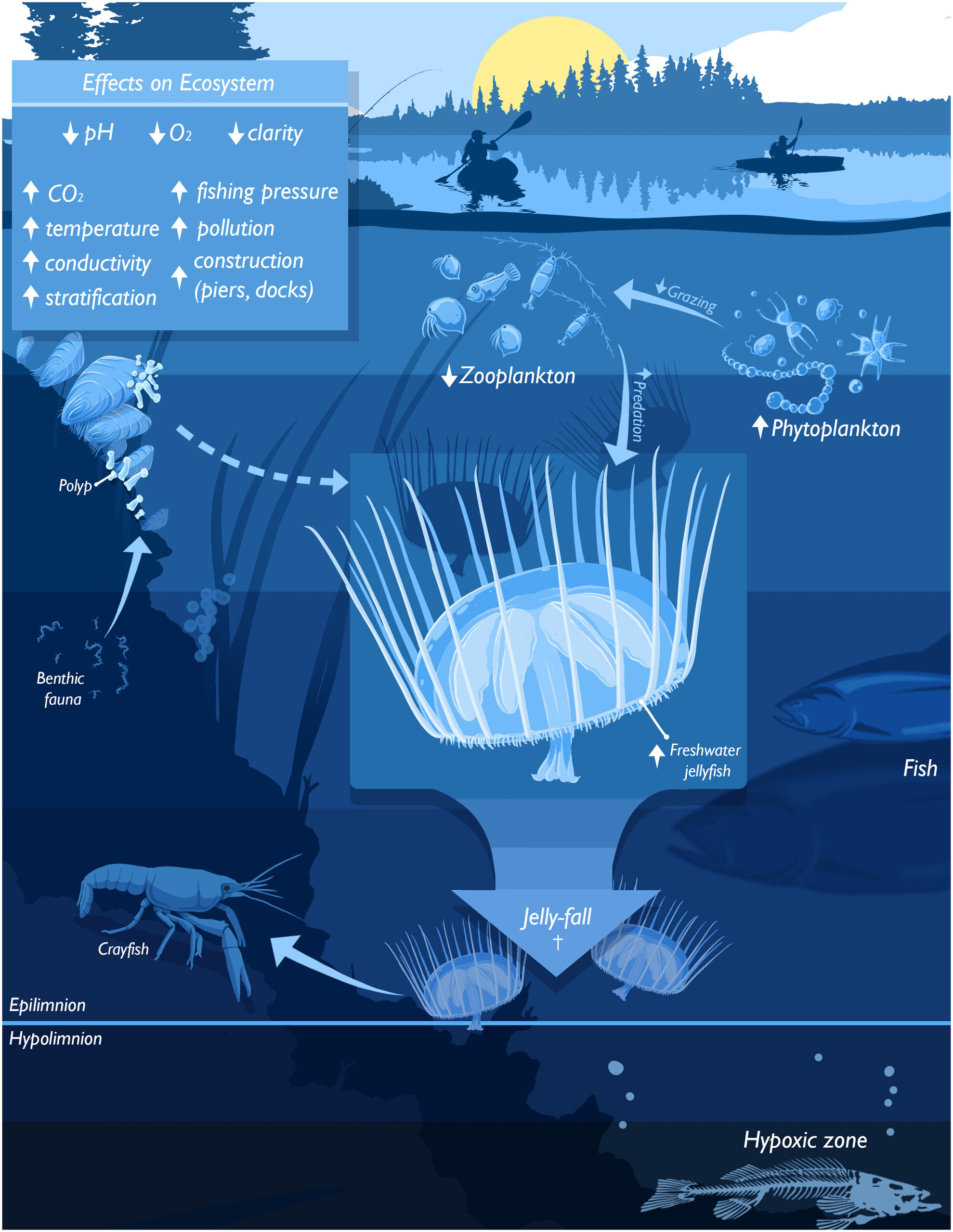
Approximately 150 years of research on freshwater jellyfish globally have resulted in a considerable amount of information. However, this is not comprehensively available to most researchers worldwide. Scattered information allows only for a fragmented view of the research field, which mediated by climate change received increasing importance. Trends, patterns, recent developments and urgent research needs are critically reviewed.
RESEARCH ARTICLE
A Novel Web-Based Approach for Monitoring Biodiversity
- First Published: 29 September 2024
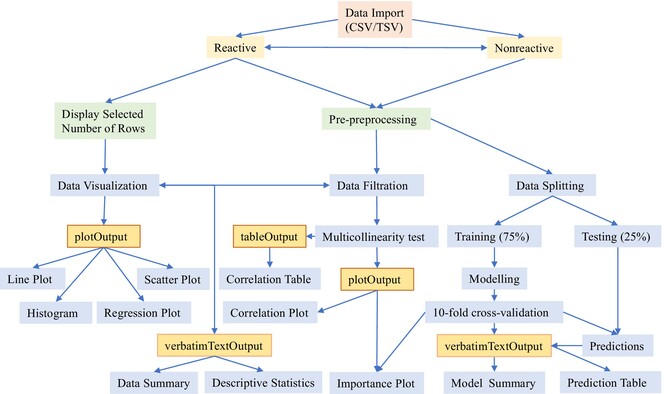
Understanding complex datasets efficiently and easily using visualization tools is useful for quick decision-making. The proposed interactive tool is designed to study the data structure, summary, correlations, and sampling efficiency. It also helps to understand the ecosystem structure, species richness patterns, and species–environment relationships. The R-codes used in this tool are reproducible for datasets of multiple ecosystems. The tool could help planning for conservation be more meaningful and easy.
Territorial status is explained by covariation between boldness, exploration, and thermal preference in a colour polymorphic lizard
- First Published: 30 September 2024
Emaciated enigma: Decline in body conditions of common dolphins in the Celtic Seas ecoregion
- First Published: 30 September 2024
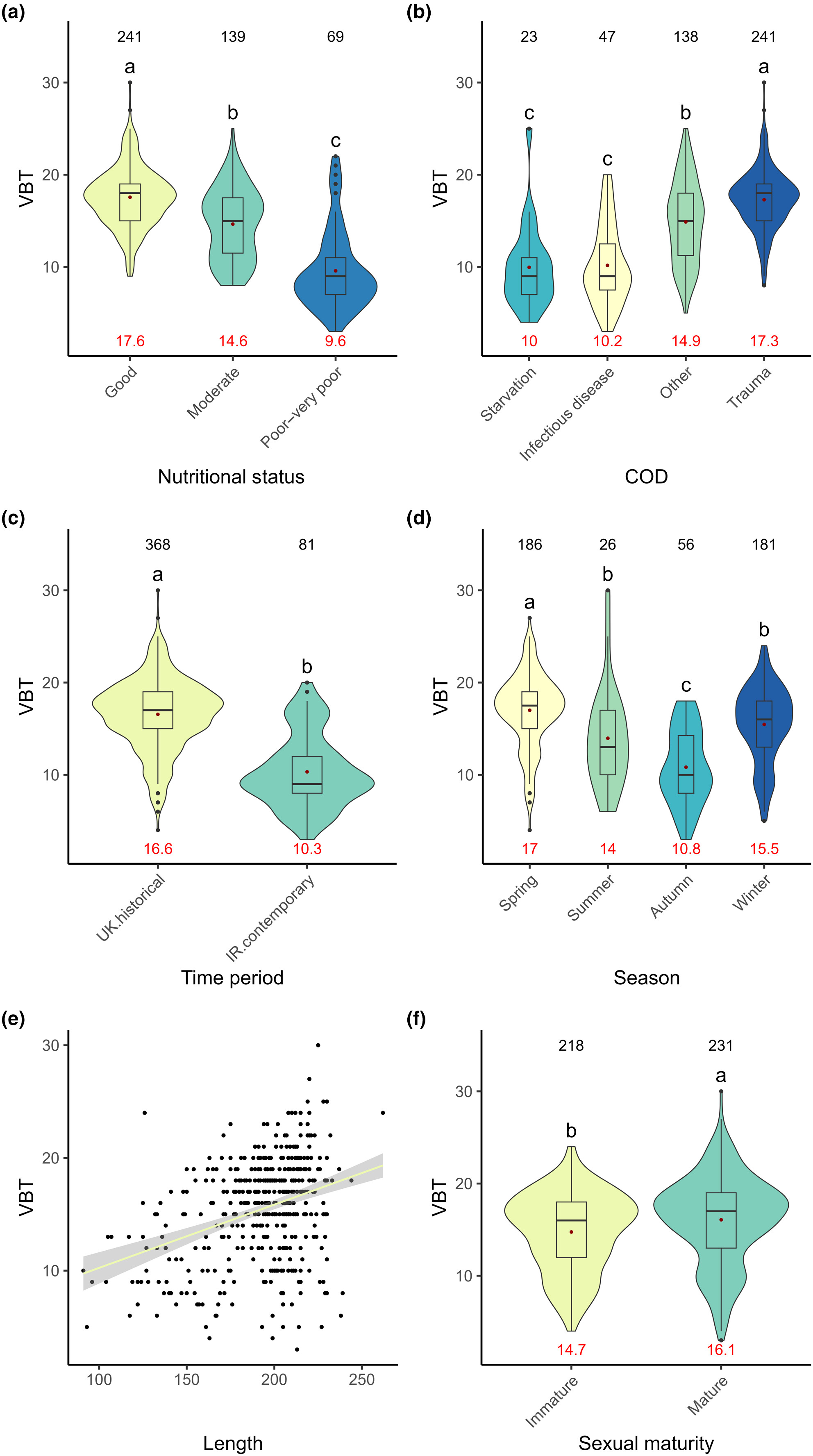
The nutritional health of stranded common dolphins in the Celtic Seas ecoregion has recently declined, as evidenced by a decrease in nutritional status and an increase in starvation-related deaths. Ventral blubber thickness was identified as the most reliable predictor of nutritional status when comparing various morphometric indices using ordinal regression tree analysis. We recommend using ventral blubber thickness while considering body length and seasonal variations to monitor the health of these dolphins and to inform conservation strategies.
Identification of plankton habitats in the North Sea
- First Published: 30 September 2024
Phenotypic divergence of Glossina morsitans (Diptera: Glossinidae) populations in Zambia: Application of landmark-based wing geometric morphometrics to discriminate population-level variation
- First Published: 30 September 2024
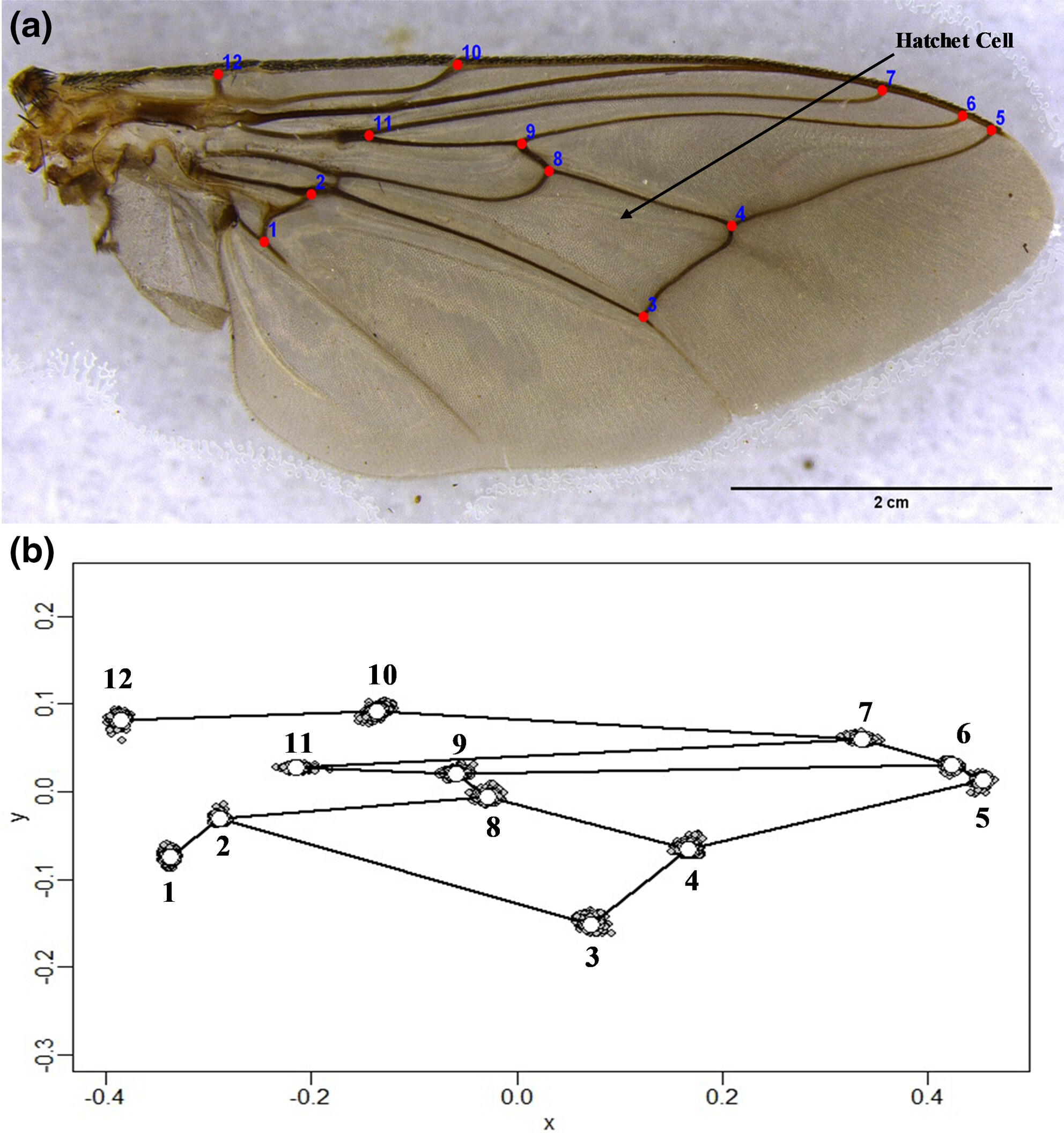
Land-mark based geomorphometric wing analysis of Glossina morsitans populations in Zambia shows that this tsetse exhibit significant population-level variation in fly size and wing shape suggesting high levels of population structuring. The main drivers of this structuring could be random genetic drift and local adaptation to environmental conditions.
Predator perception of aposematic and cryptic color morphs in two Oophaga species
- First Published: 30 September 2024
CORRECTION
Correction to “Adapting to Change: Exploring the Consequences of Climate-Induced Host Plant Shifts in Two Specialist Lepidoptera Species”
- First Published: 30 September 2024
RESEARCH ARTICLE
The Functional Dilemma of Nectar Mimic Staminodes in Parnassia wightiana (Celastraceae): Attracting Pollinators and Florivorous Beetles
- First Published: 30 September 2024
Modeling Habitat Suitability for Cerithidea rhizophorarum and Telescopium telescopium in Indo-West Pacific Mangroves
- First Published: 30 September 2024

Mangroves provide critical habitats for marine species, particularly snails. Using the MaxEnt model and 667 occurrence records from GBIF, we predicted suitable habitat for Cerithidea rhizophorarum and Telescopium telescopium in the Indo-West Pacific. Temperature, contributing over 80%, was the key factor in both present and future models, with suitable habitats shrinking by 2100 due to global warming, highlighting the vulnerability of these species under future climate conditions.
Response of Species Diversity and Stability of Typical Steppe Plant Communities on the Mongolian Plateau to Different Grazing Patterns
- First Published: 30 September 2024
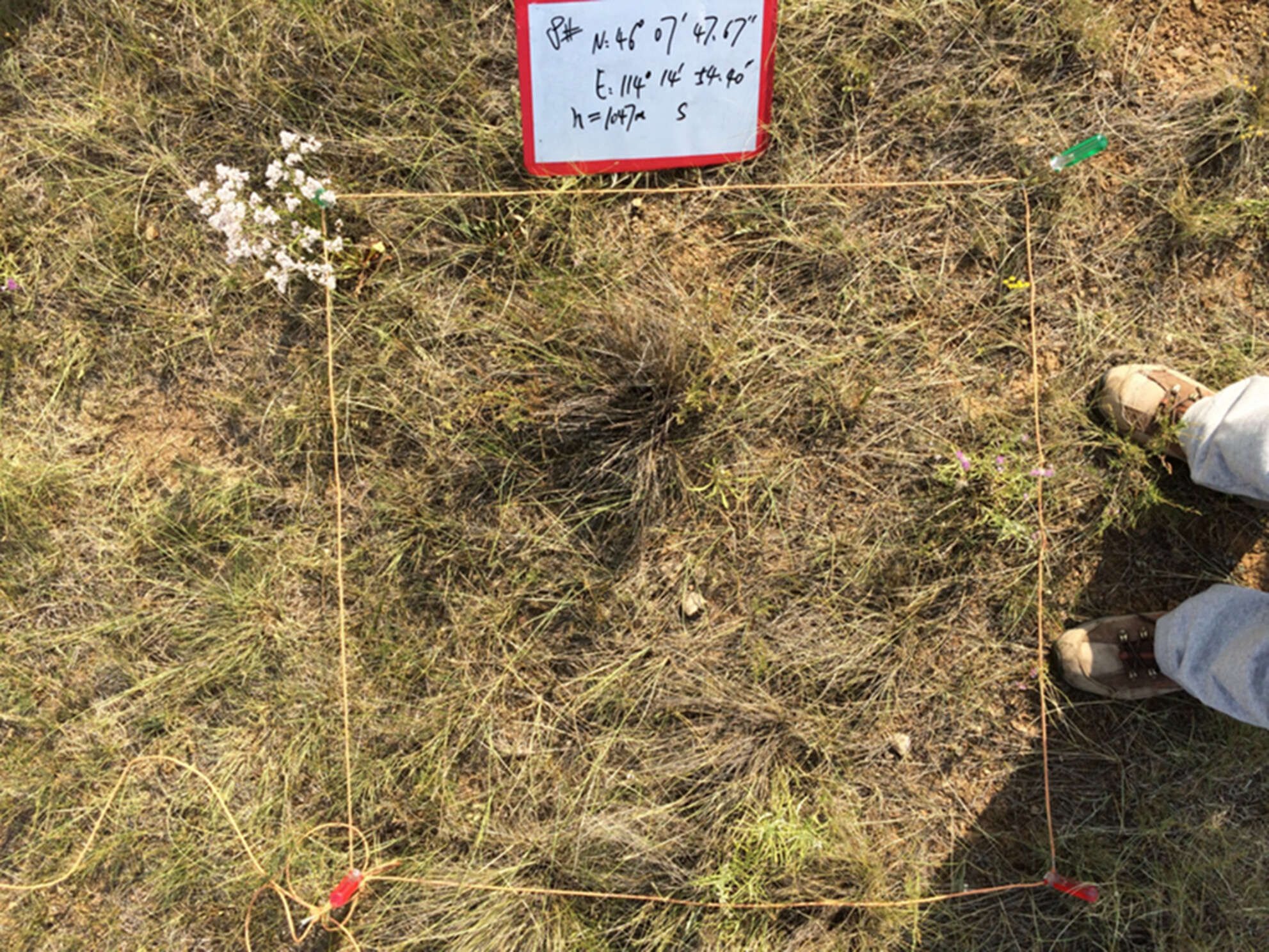
This paper focuses on the Wuzhumuqin–Wendurhan Sample Strip, a typical grassland on the Mongolian Plateau, and explores the structural characteristics, species diversity, and stability of plant communities in response to different grazing practices, which is relevant to the scope of the journal's theme.
No impact of cyantraniliprole on the hibernation success of bumble bees (Bombus terrestris audax) in a soil-mediated laboratory exposure study
- First Published: 01 October 2024
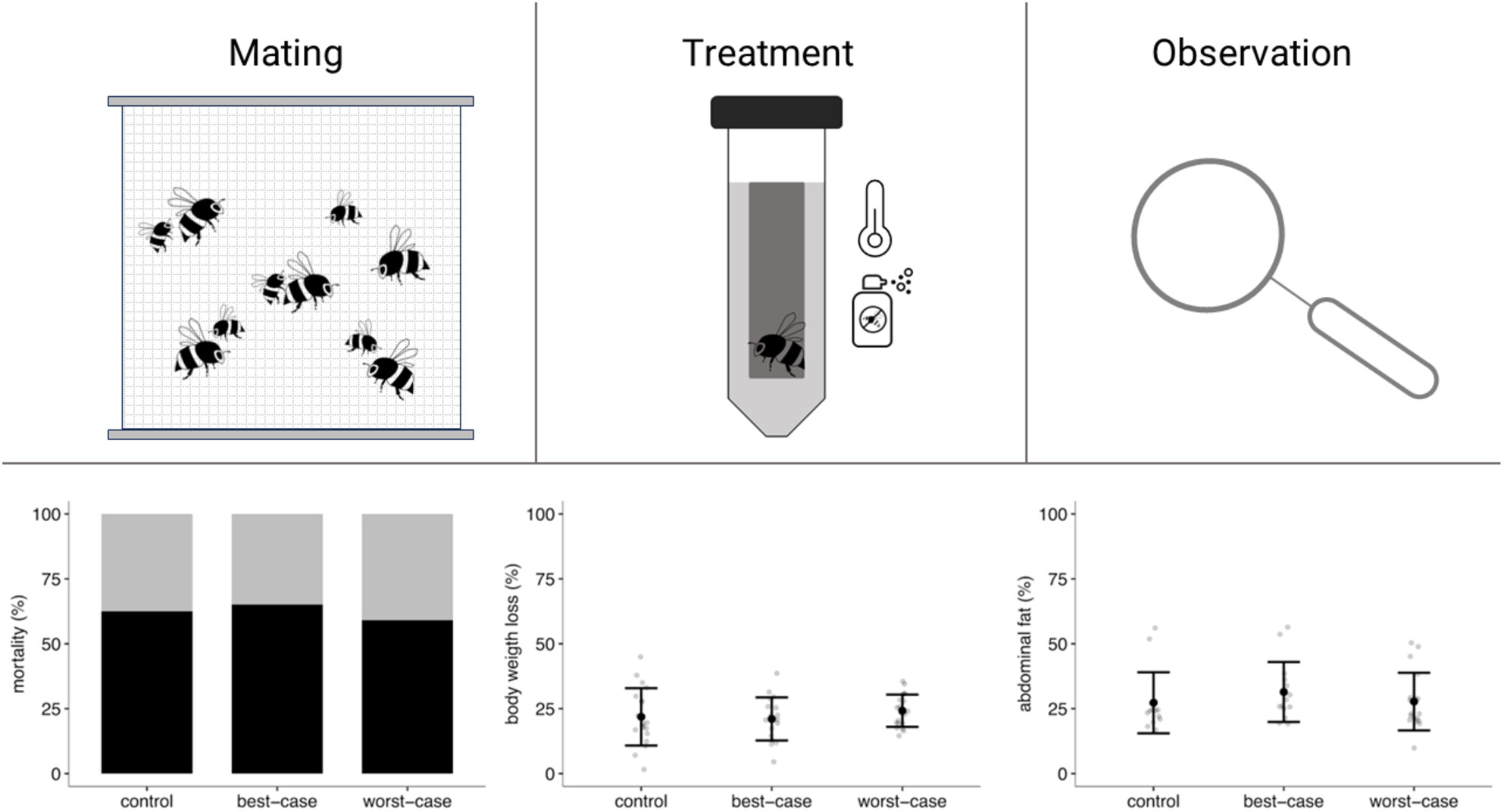
We tested the effects of soil-mediated, field-realistic exposure to cyantraniliprole on bumble bee queen hibernation success. We measured survival, body weight change and abdominal fat content of queens and found that none of these responses were affected by the chemical exposure. Our study may help in developing a standardised method to test the effects of the soil-mediated pesticide exposure route in bumble bee queens.
Scale-dependence in elk habitat selection for a reintroduced population in Wisconsin, USA
- First Published: 01 October 2024
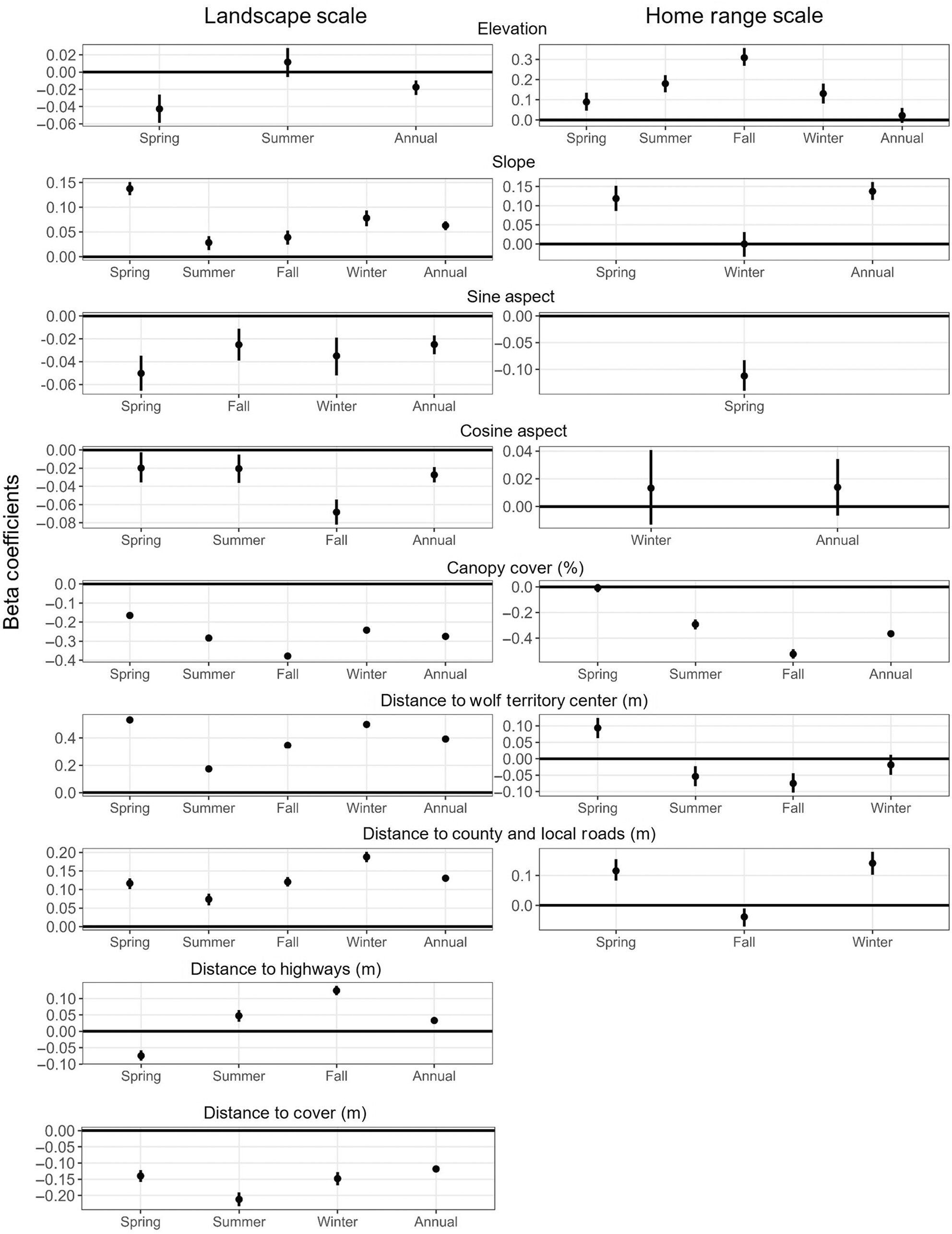
Habitat selection is a critical aspect of a species' ecology requiring complex decision-making that is both hierarchical and scale-dependent, since factors that influence selection may be nested or unequal across scales. This study investigates how risky features at different spatial and temporal scales influence species' decision making surrounding life history characteristics. It provides insight into the complexity of making informed decisions in which an individual is responding to their immediate environment while simultaneously making decisions in context of the larger landscape. Scale-dependent behavior is crucial to understand within specific geographic regions as these decisions scale up to influence population dynamics.
Characterization of the reproductive strategy of invasive Round Goby (Neogobius melanostomus) in the Upper Danube River
- First Published: 01 October 2024
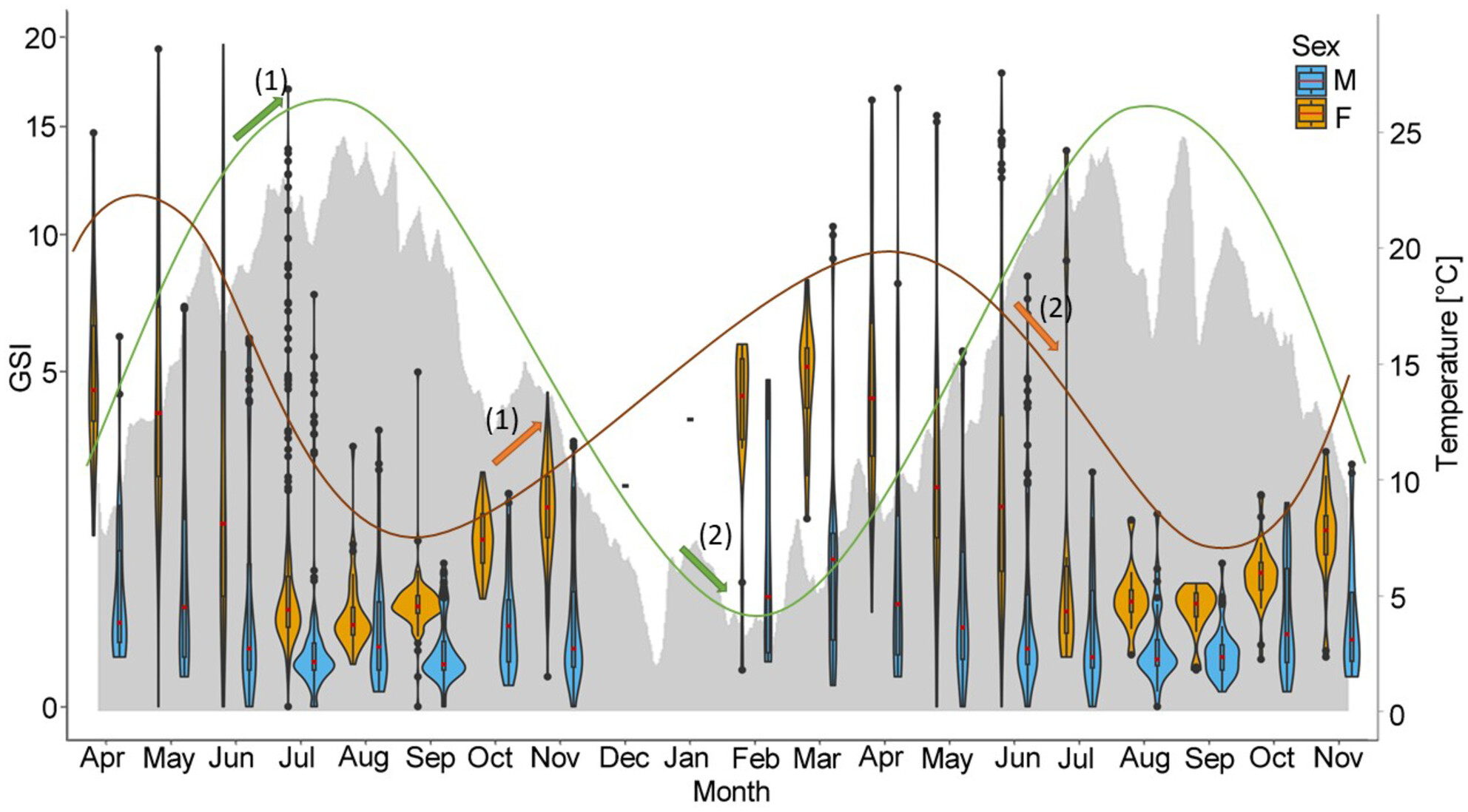
Characterization of the reproductive strategy of round goby (Neogobius melanostomus) in the Upper Danube over 1.5 years revealed the interrelations of temperature, discharge and photoperiod with gonadosomatic index and spawning. Differences in sex ratios found between sampling months as well as differences in size-dependent reproductive investments among sexes can be explained by the nest-guarding behavior of males. The great plasticity of reproductive and other life history traits across the distribution range of round goby likely explain the invasion success at different environmental conditions.
GENETICS NOTES
Comparative study on chloroplast genome of Tamarix species
- First Published: 01 October 2024
RESEARCH ARTICLE
Adaptive evolution and functional significance of the PPARGC1A gene across diverse animal species
- First Published: 03 October 2024
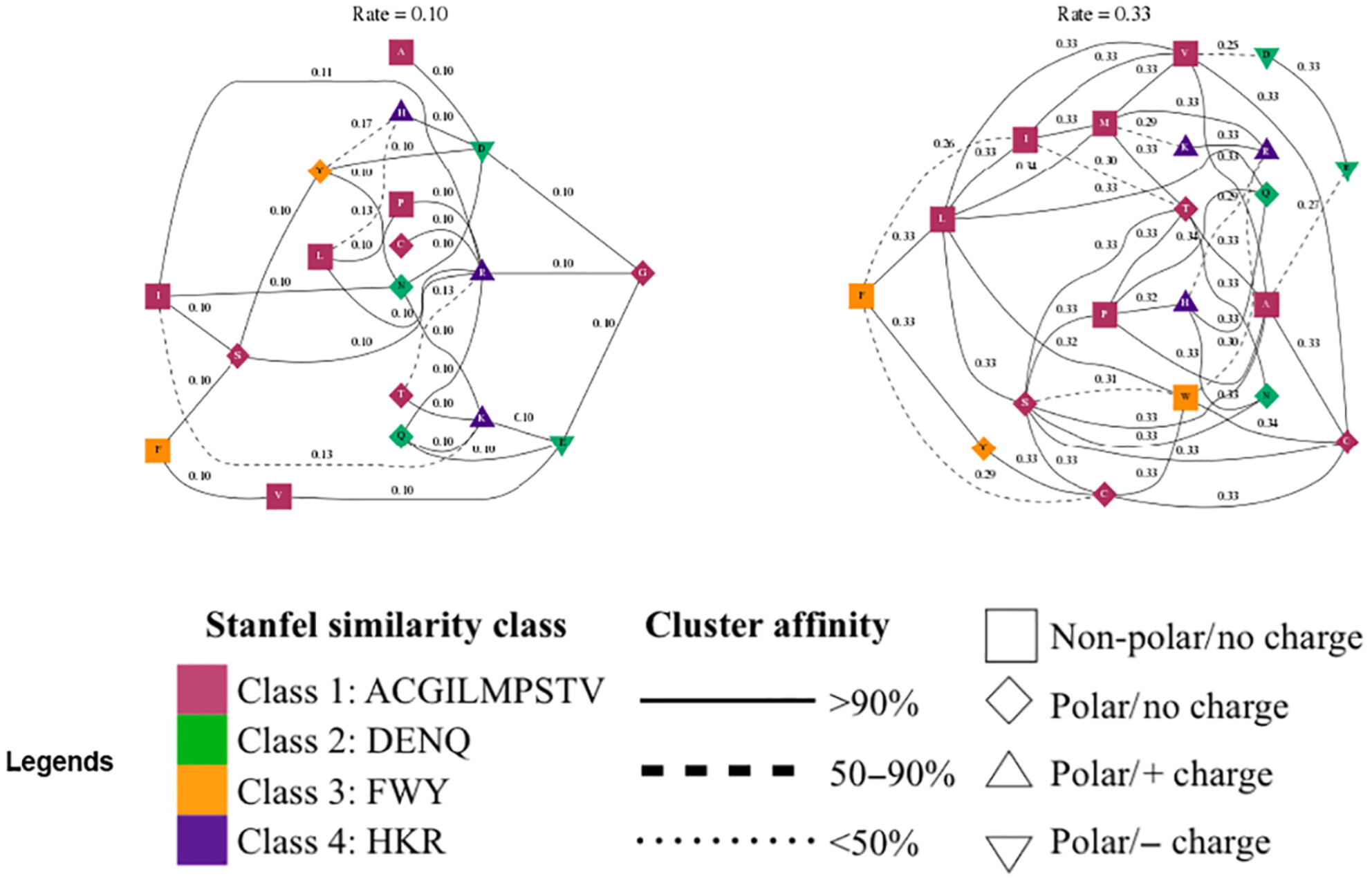
This study conducts codon-based analyses of the PPARGC1A gene across 38 vertebrate species, revealing distinct patterns of evolutionary change. Positive selection pressures were observed at specific codon sites, particularly 4, 11, 66, and 123, with codon 137 displaying the most pronounced selective advantage. Computational methods confirmed these findings, and mixed-effect modeling identified episodic diversifying selection. The research provides nuanced insights into substitution rates, evolutionary conservation, phylogenetic relationships, and functional interdependencies within the PPARGC1A gene, advancing our understanding of its evolutionary trajectory and adaptive significance across diverse vertebrate lineages.
Understanding species limits through the formation of phylogeographic lineages
- First Published: 02 October 2024
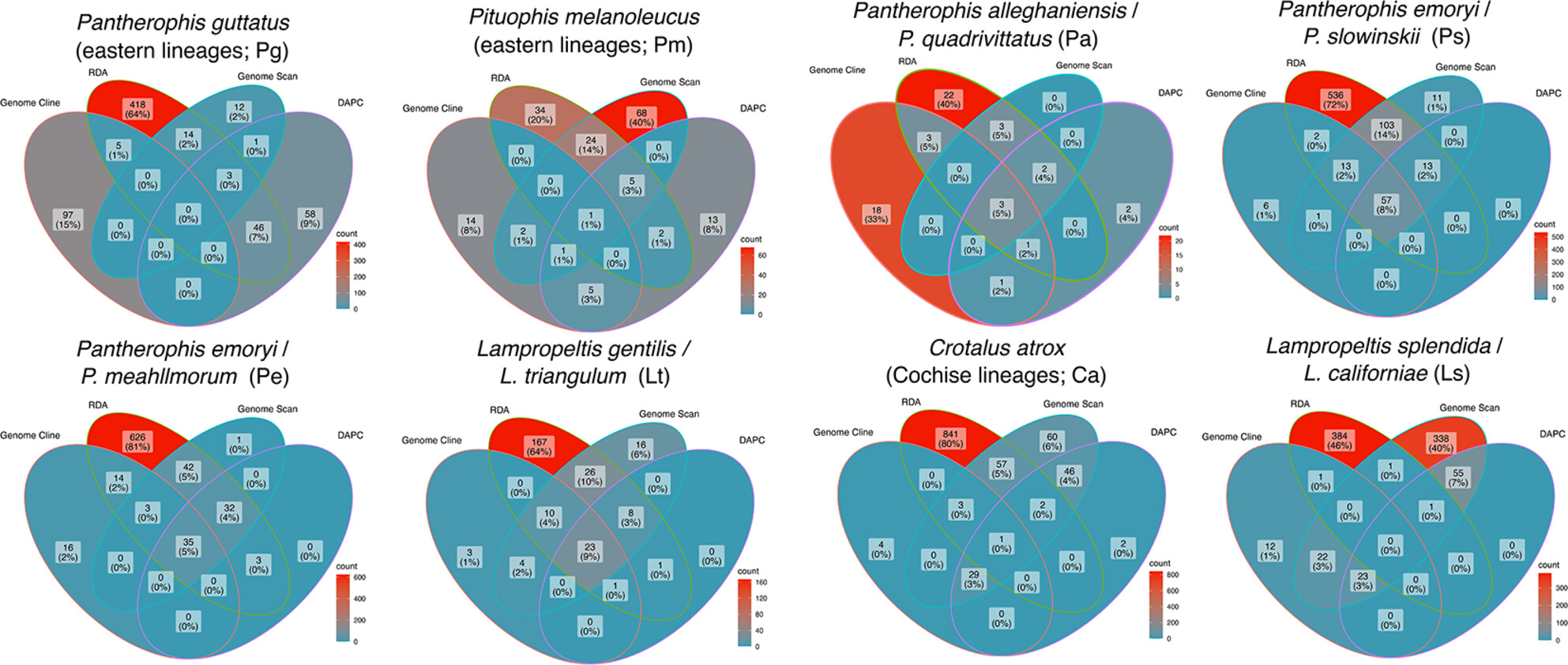
We present a set of tests to examine processes of speciation that will help delimit taxa given deep phylogeographic history and interaction within hybrid zones. Outcomes from distinct phylogeographic pairs of snakes in North America all have the signature of divergence before or near the mid-Pleistocene often with low migration. For these pairs we demonstrate the presence of stable hybrid zones of varying size with a subset of loci showing selection on alleles at the hybrid zone corresponding to transitions between very distinct ecoregions.
Structural and functional differences of gut microbiota in Pomacea canaliculata from different geographical locations and habitats
- First Published: 03 October 2024
Revealing suitable habitats for Juniperus procera and Olea europaea tree species in the remnant dry Afromontane forests of Ethiopia: Insights from ensemble species distribution modeling approach
- First Published: 03 October 2024
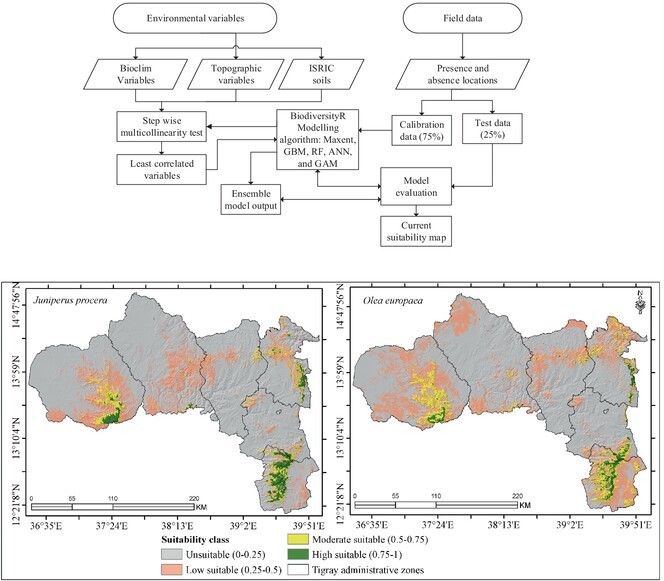
The study aims to identify suitable habitats for the most exploited Juniperus procera and Olea europaea tree species in northern Ethiopia, using temperature, moisture, soil, and topographic variables. It evaluates five individual and ensemble models using area under the curve and true skill statistic values. The ensemble model performed well for J. procera and O. europaea, with climatic factors being the most influential. Suitable areas for both species were found in areas with Isothermality values between 52% and 62%, temperature seasonality between 16 and 29°C. The optimal altitude for J. procera and O. europaea is 2200–2600 and 2100–2500, with suitable areas of 3130 and 3946 km2, respectively. Potential plantation areas are identified beyond protected forests, promoting conservation and sustainable management.
Resilience of Juvenile Freshwater Pearl Mussels to Thermal Stress
- First Published: 23 October 2024
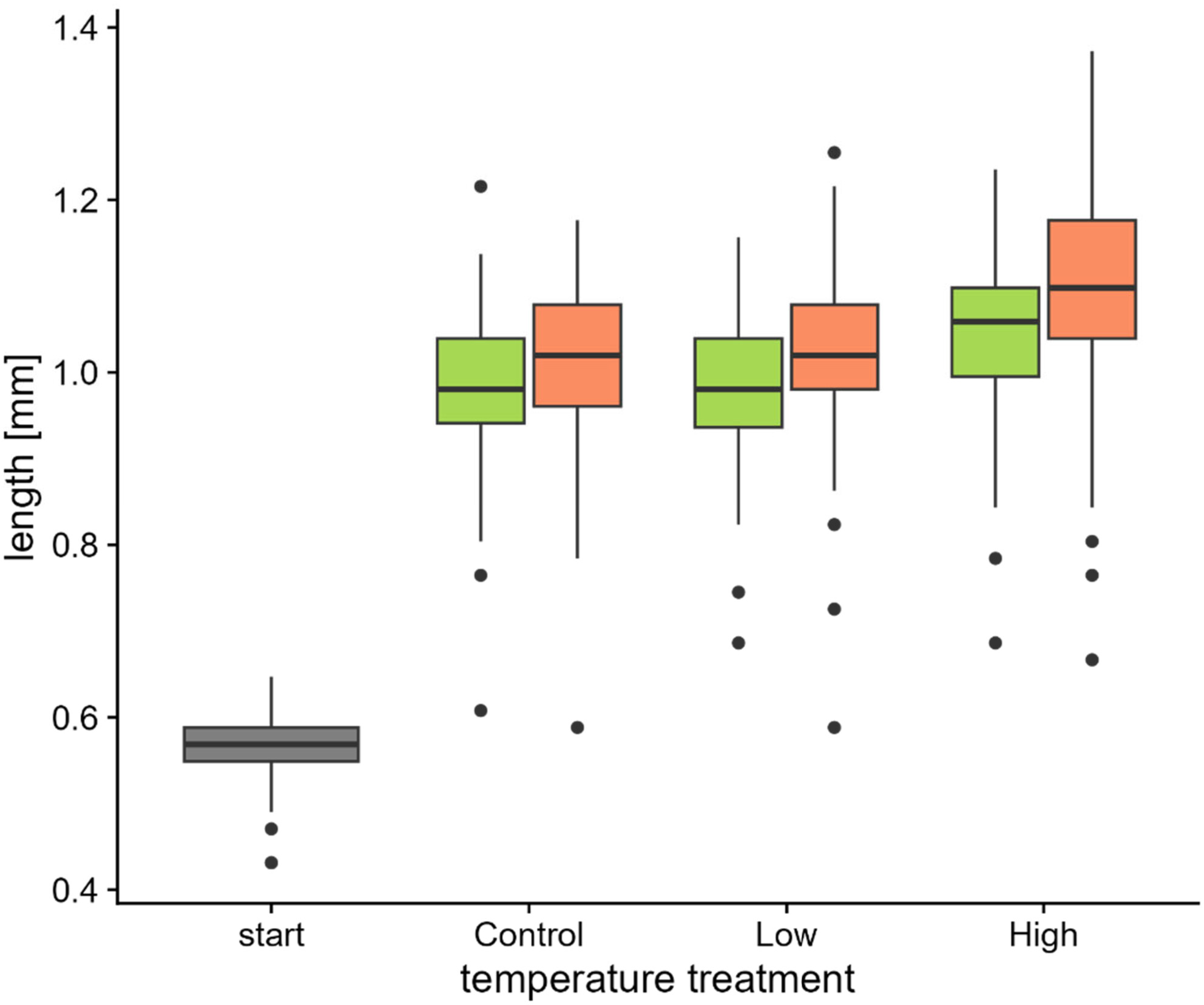
Results from our experiment suggest that juvenile mussels can survive short periods of heat stress when other environmental conditions are favourable. Future studies should therefore address how heat stress affects survival in combination with other stressors, such as reduced availability of dissolved oxygen.
GENETICS NOTES
DNA barcoding and cryptic diversity in fishes from the Ili River Valley in China, Xinjiang
- First Published: 03 October 2024
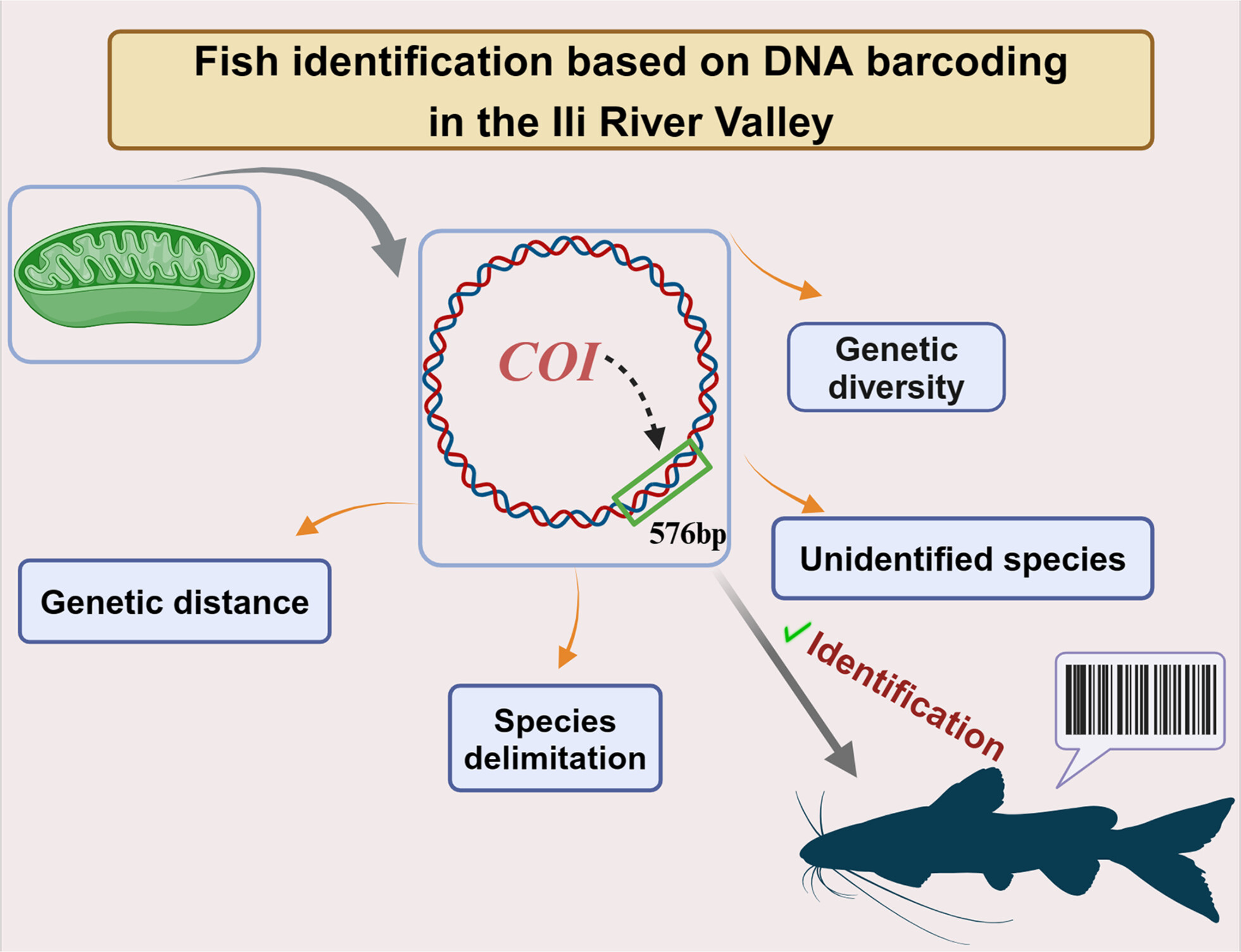
With a 95% success rate in identifying species, DNA barcoding based on the mitochondrial COI gene was validated in this study using genetic diversity, species delimitation, genetic distances, and unidentified species analysis. Simultaneously, we discovered that the Ili River Valley's fish species populations are drastically decreasing to the point where the area faces a major ecological risk.
RESEARCH ARTICLE
Assessment of suitable region of Asparagus cochinchinensis (Lour.) Merr. under different climatic conditions in China by the MaxEnt model and HPLC analysis
- First Published: 03 October 2024

Species distribution model is used to predict the distribution of suitable habitats of Asparagus cochinchinensis (Lour.) Merr. in China. Precipitation and temperature are the key factors affecting the accumulation of active components in A. cochinchinensis. Saponins and total polysaccharides contents show different response patterns to climatic factors.
Thermally Primed Zostera muelleri Seeds Exhibit Higher Germination Rates Than Those From Ambient Conditions
- First Published: 02 October 2024
CORRECTION
RESEARCH ARTICLE
Local adaptation of Dromiciops marsupials (Microbiotheriidae) from southern South America: Implications for species management facing climate change
- First Published: 03 October 2024
Changes in Soil Bacterial and Fungal Community Composition and Functional Groups During the Artificial Restoration of Degraded Grassland of “Black-Soil Mountain”
- First Published: 03 October 2024
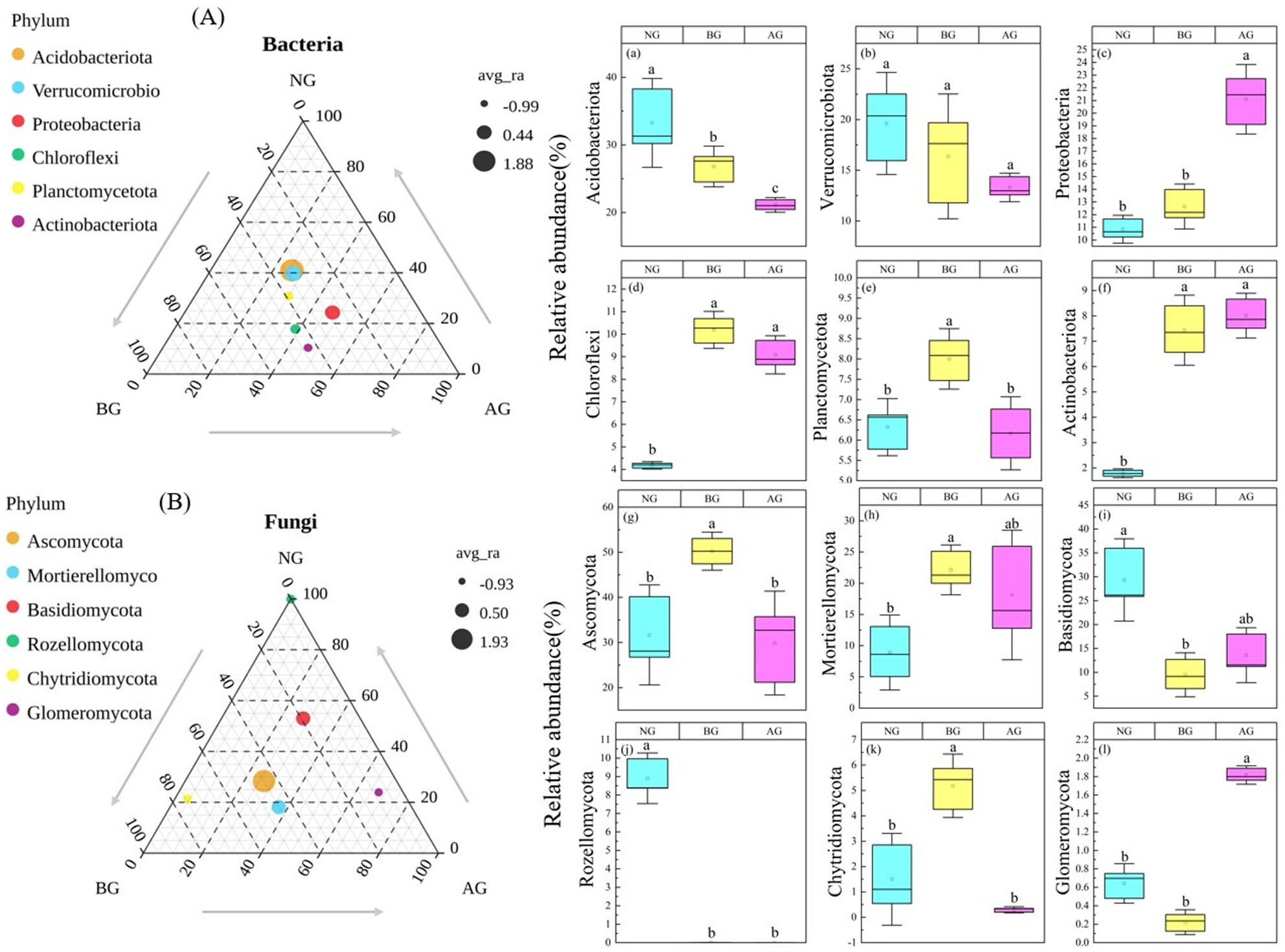
The formation of degraded grassland in black-soil mountain has attracted the attention of many scholars, and the establishment of artificial grassland is the most effective way to control the extremely degraded alpine meadow—“black-soil mountain.” In order to better understand the response of degraded grassland to artificial restoration measures, we evaluated the interaction between vegetation and soil microorganisms during artificial restoration of degraded grassland in the black-soil mountain.
Transcriptomic Signature of Spatial Navigation in Brains of Desert Ants
- First Published: 03 October 2024
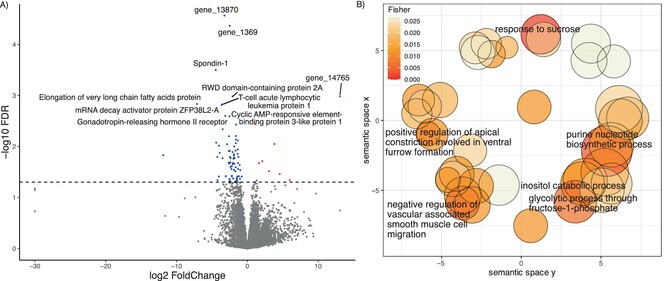
Navigation mechanisms include path integration and landmark-based navigation, and we show the first evidence for molecular pathways required for navigation in desert ants. Transcriptional activity in the central brain but not in the optic lobes might be necessary for the estimation of distance traveled, which is crucial for path integration. Correlation in gene expression and correctness in the optic lobes may indicate the importance of visual processing in route recognition.
Host Resistance and Behavior Determine Invasion Dynamics of a Detrimental Aquatic Disease
- First Published: 03 October 2024
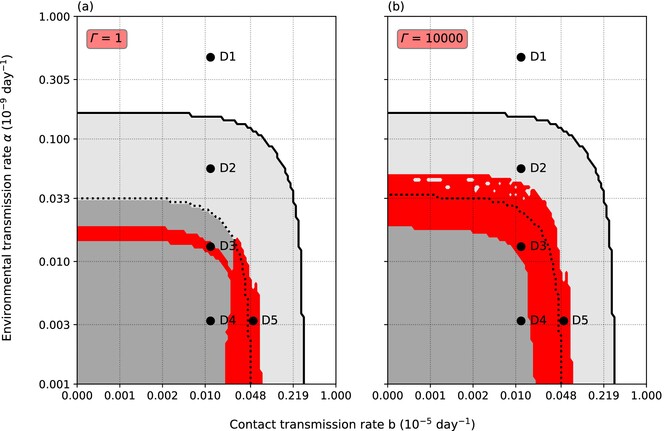
To control emerging diseases, we need to understand the effects of variation in host resistance and the multitude of transmission modes of parasites combined with hosts' complex behavioral interactions. Based on a discrete stage model, we propose that even if the infection is fatal, coexistence of the host and the parasite can be facilitated by variance in resistance and the partial separation of juveniles from adults.
Functional diversity dynamics of waterbird communities driven by water levels at Shengjin Lake, a small river-connected shallow lake in the middle and lower Yangtze River floodplain
- First Published: 07 October 2024
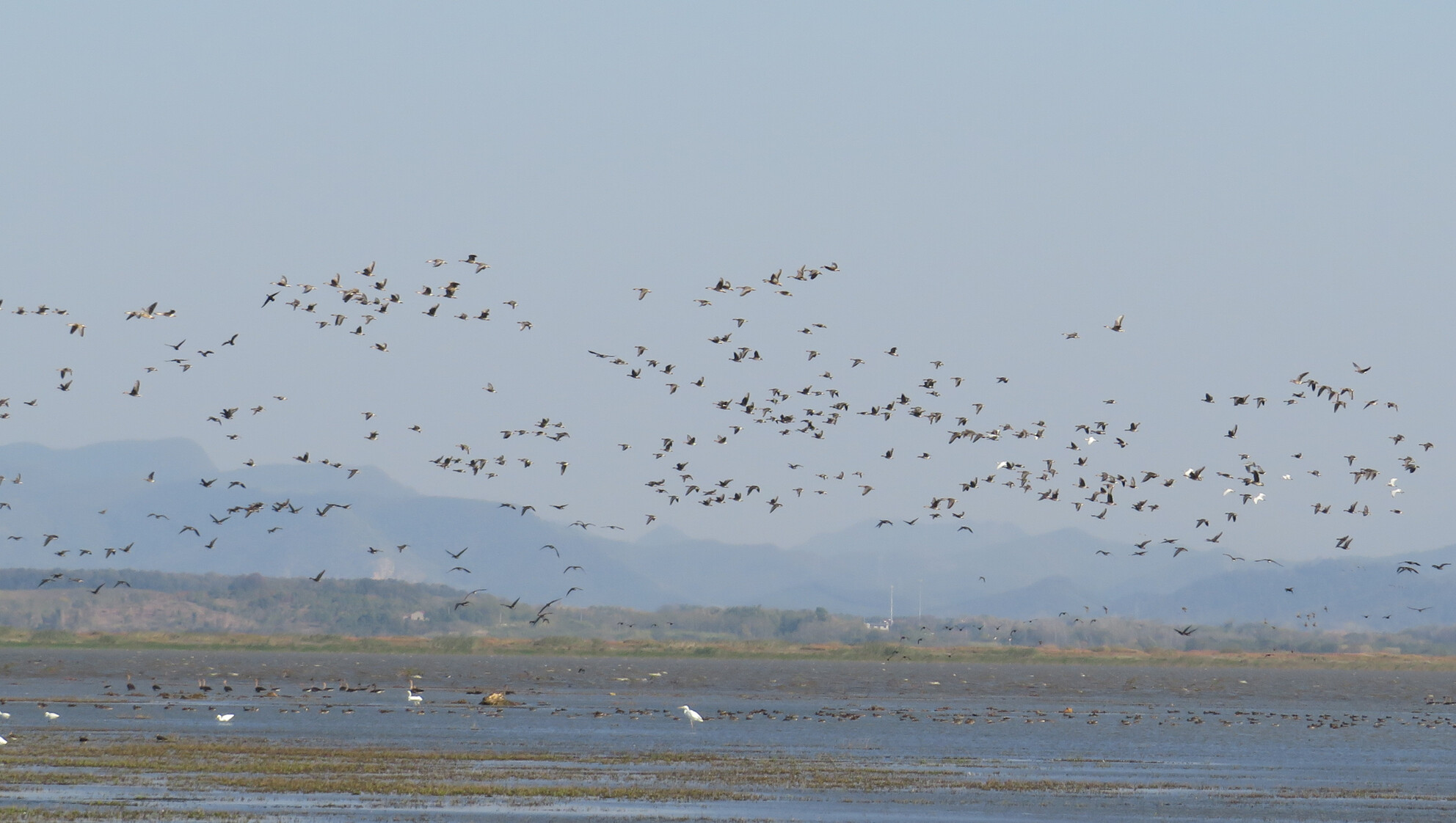
The study is based on the perspective of functional diversity to investigate the impact of water level changes on waterbird community diversity. Changes in habitat heterogeneity are the main cause of functional diversity differences. Habitat filtering is identified as the primary driver shaping the waterbird community assembly.
Seasonal and anthropogenic effects on niche overlap and habitat selection by sympatric bears (Ursus arctos marsicanus) and wolves (Canis lupus) in a human-dominated landscape
- First Published: 07 October 2024
Ecological drivers of sexual size dimorphism in northern chamois
- First Published: 07 October 2024

Chamois are an interesting species to examine sexual size dimorphism (SSD) as they exhibit very little skeletal size dimorphism, and SSD in body mass is largely seasonal. We analysed 161,948 body mass data of northern chamois (Rupicapra rupicapra) in the Austrian Alps to explore environmental influences on SSD. Our findings show that SSD increased with higher population density through reduced female body mass and decreased on siliceous substrates through reduced male body mass, while forest cover negatively affected body mass in both sexes but did not alter SSD.
Impact of invasive alien plants on the resident floral diversity in Koshi Tappu Wildlife Reserve, Nepal
- First Published: 07 October 2024
Seascape Genetics and Distinct Intraspecific Diversification of the Decapod Nephrops norvegicus in the Adriatic Sea
- First Published: 08 October 2024
Genetic Structure of Monochamus alternatus (Hope) in Qinling-Daba Mountains and Expansion Trend: Implications for Pest Prevention and Management
- First Published: 08 October 2024
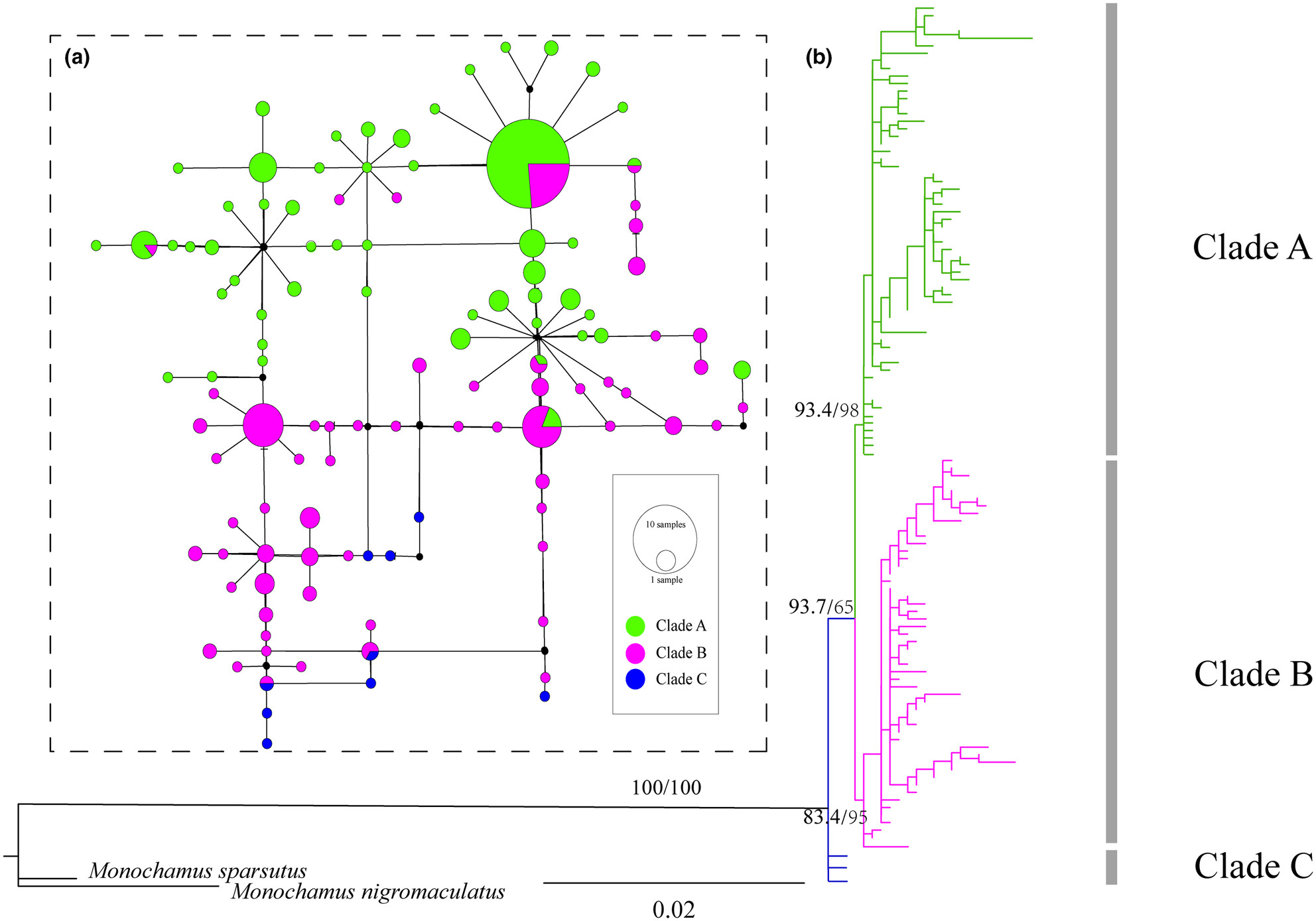
The study investigates the genetic structure and phylogenetic relationships of Monochamus alternatus populations in China (main in Qinling-Daba Mountains), revealing three phylogeographic clusters influenced by Quaternary glacial oscillations. Ecological niche modeling indicates that precipitation and temperature significantly affect the distribution of M. alternatus, suggesting future expansion to higher latitudes and altitudes.
Body Mass Shapes Most Life History Traits and a Fast-Slow Continuum in Amphibians
- First Published: 08 October 2024
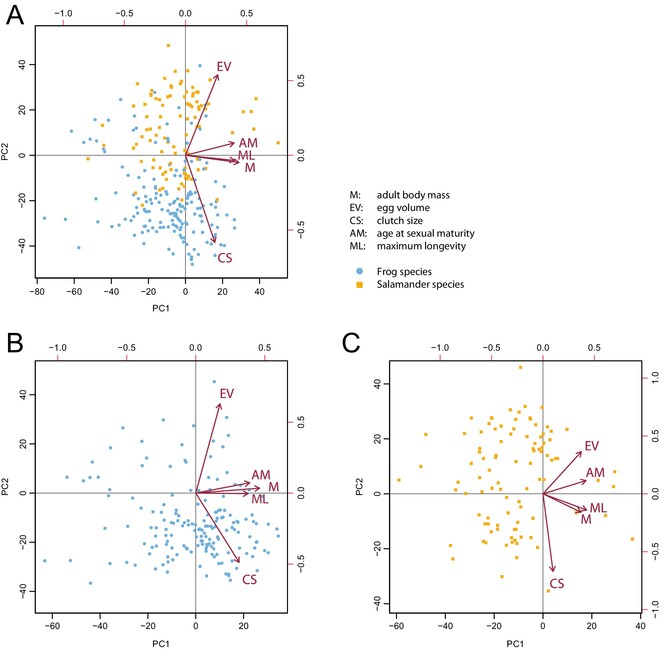
We examined the effect of body mass on life histories of amphibian species by constructing allometric models based on a large dataset. We found a body mass effect on most traits and found that exponents partly matched those predicted by the metabolic driver hypothesis, but not those predicted by the metabolic theory of ecology. We further identified a body-mass-dependent fast-slow continuum and a nearly mass-independent trade-off between egg size and clutch size.
Trade-Offs Between Forage Availability, Accessibility, and Predation Risk on Winter Foraging Strategies of Wood Bison (Bison bison athabascae)
- First Published: 08 October 2024
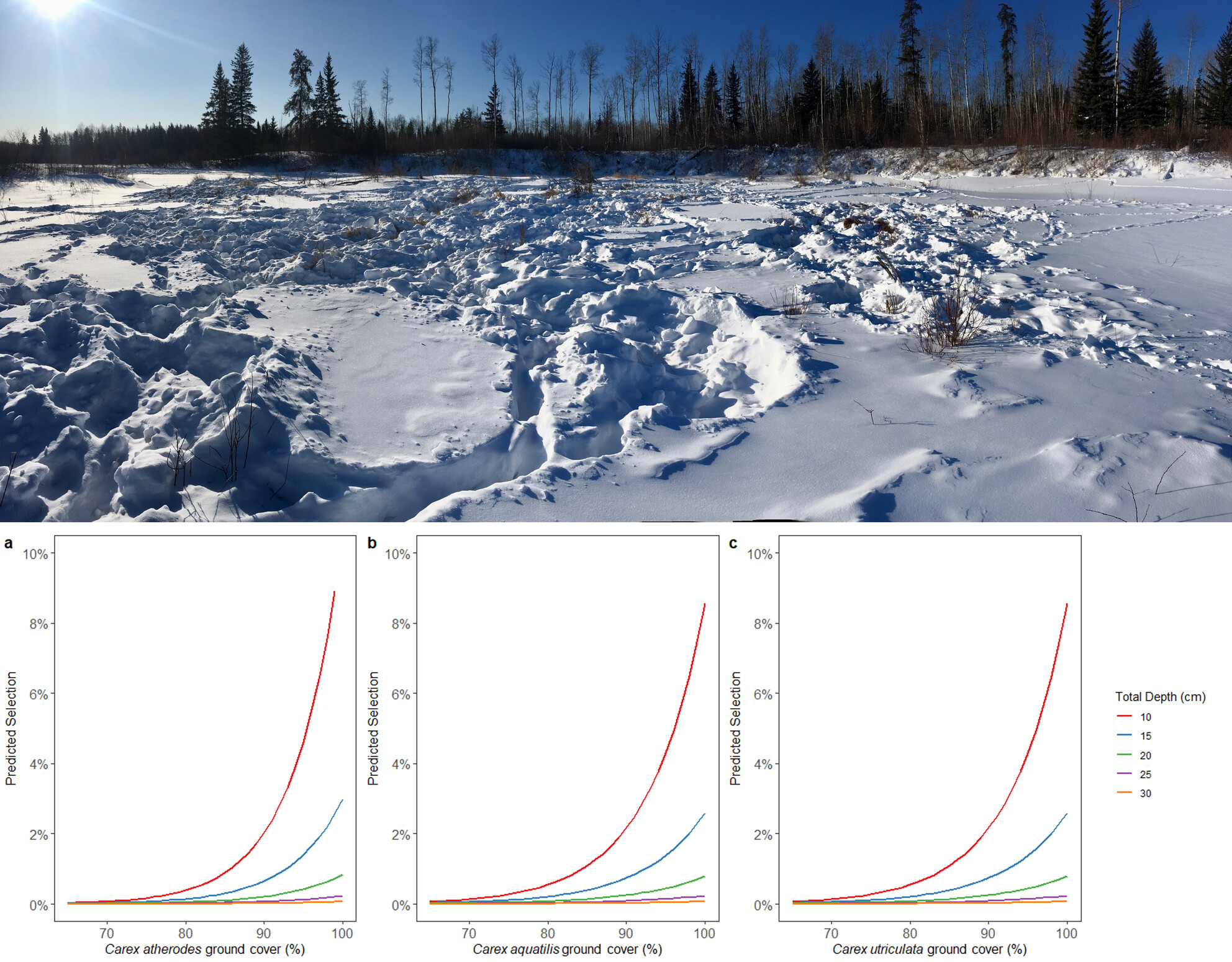
We studied the winter foraging ecology of wood bison in northeastern Alberta. Finding that wood bison select for sedge species, but, increased snow depths lead to decreased selection despite the presence of highly selected forage species beneath. This study highlights bison strategies to maximize energy in northern winters.
Are Wild Prey Sufficient for the Top Predators in the Lowland Protected Areas of Nepal?
- First Published: 08 October 2024
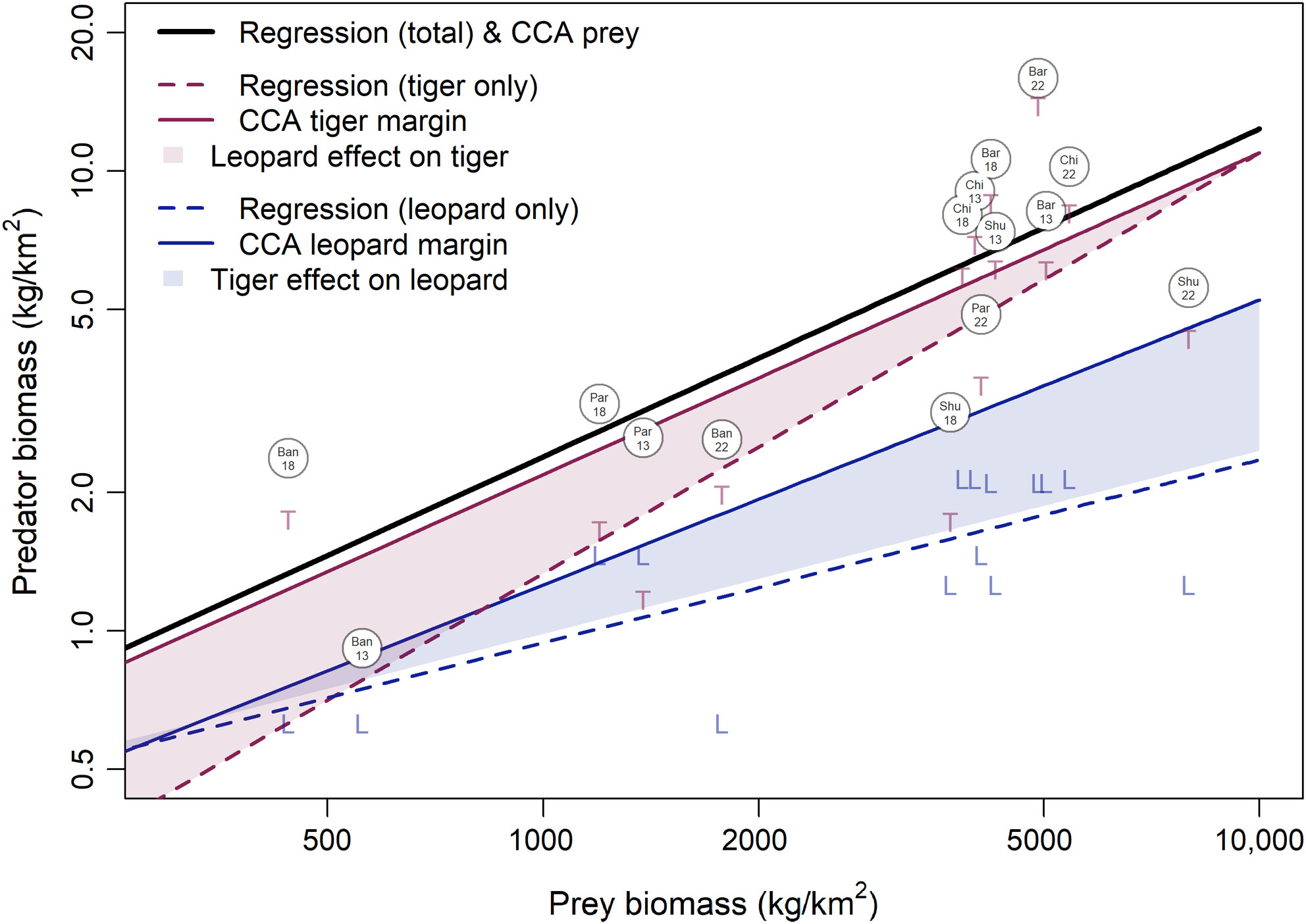
The study in Nepal's lowland protected areas found a balanced predator–prey relationship, with a power law exponent “k” of 0.7 indicating a significant increase in predator biomass density with rising prey density. This sublinear growth pattern aligns with established trophic biomass scaling estimates, emphasizing its importance for stabilizing predator–prey dynamics and guiding future ecosystem management and research efforts.
Relationship Between Evolutionary Diversity and Aboveground Biomass During 150 Years of Natural Vegetation Regeneration in Temperate China
- First Published: 08 October 2024
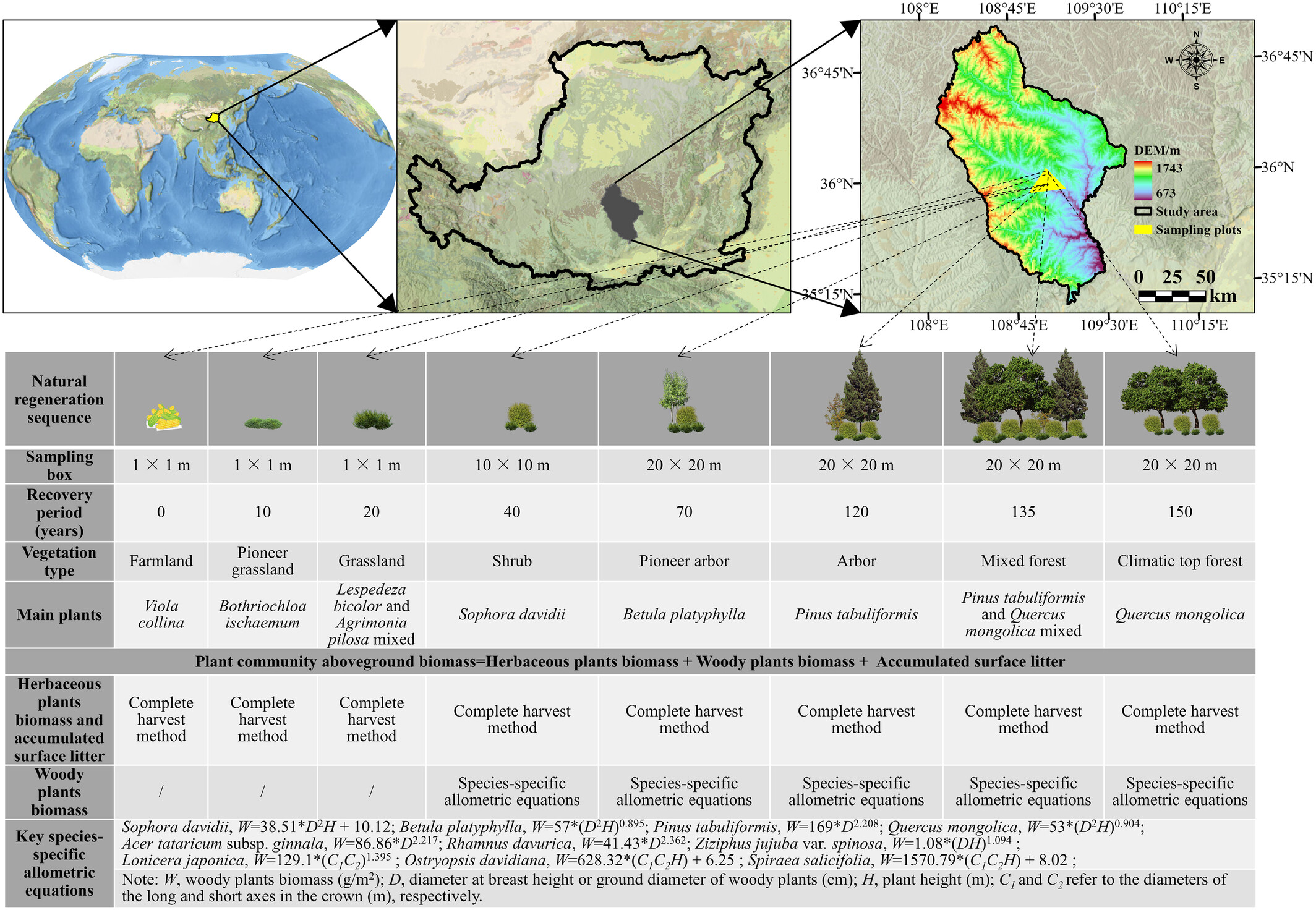
The research revealed the association between evolutionary diversity and community AGB during long-term vegetation restoration in the temperate zone using an ideal experimental system with over 150 years of natural vegetation restoration. This is essential for elucidating the link between biodiversity and ecological functions in the context of climate change.
An Invasion Risk Assessment of Alien Woody Species in Potential National Park Sites in Xinjiang, China, Under Climate Change
- First Published: 08 October 2024
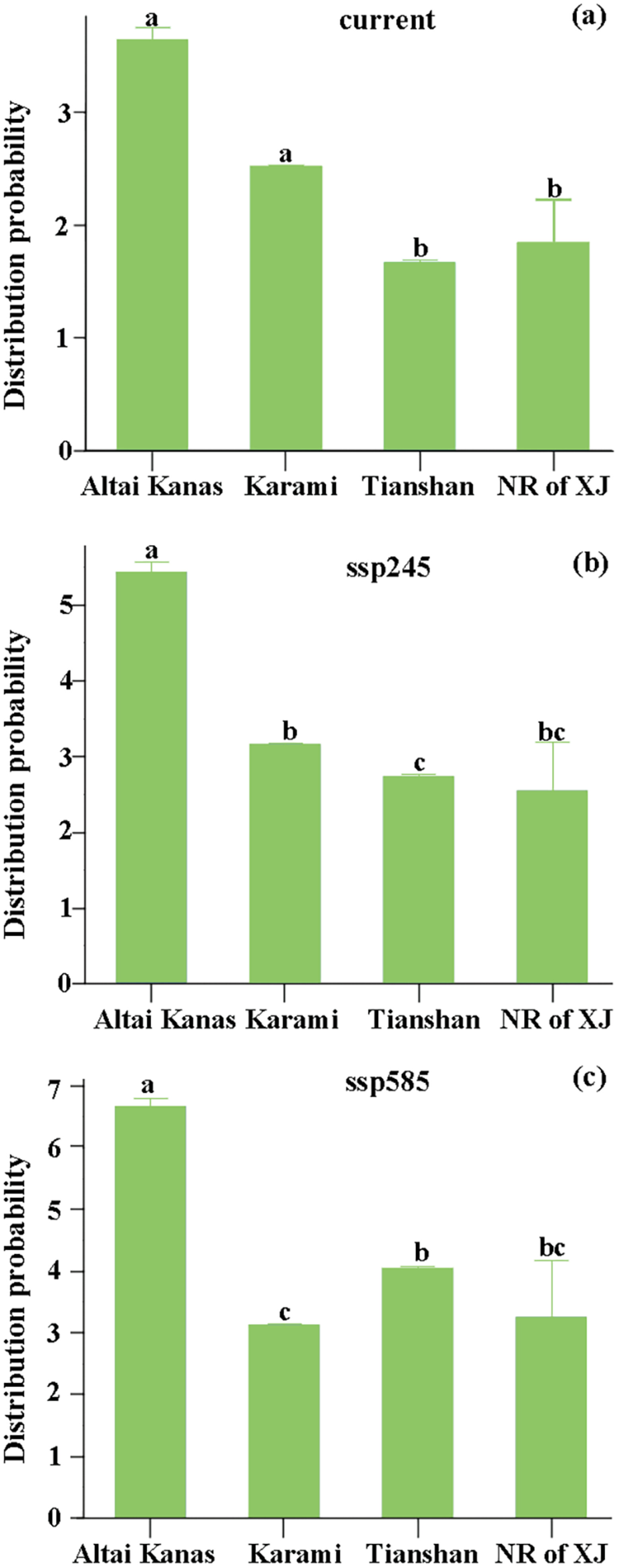
We used a species distribution model to evaluate the invasion risk of 250 highly invasive alien woody species in potential national park sites in Xinjiang under climate change. The probability of invasive woody species distribution in potential park sites in Xinjiang is significantly lower than that across China. This study can contribute to the monitoring and management of national parks and can provide an actionable foundation for protecting the ecosystem functions and minimizing the risk of alien species invasion in potential national park sites in the face of climate change.
The leaf-footed cactus bug is not a cactus specialist: Narnia femorata feeds, fights, and mates on thistle
- First Published: 08 October 2024
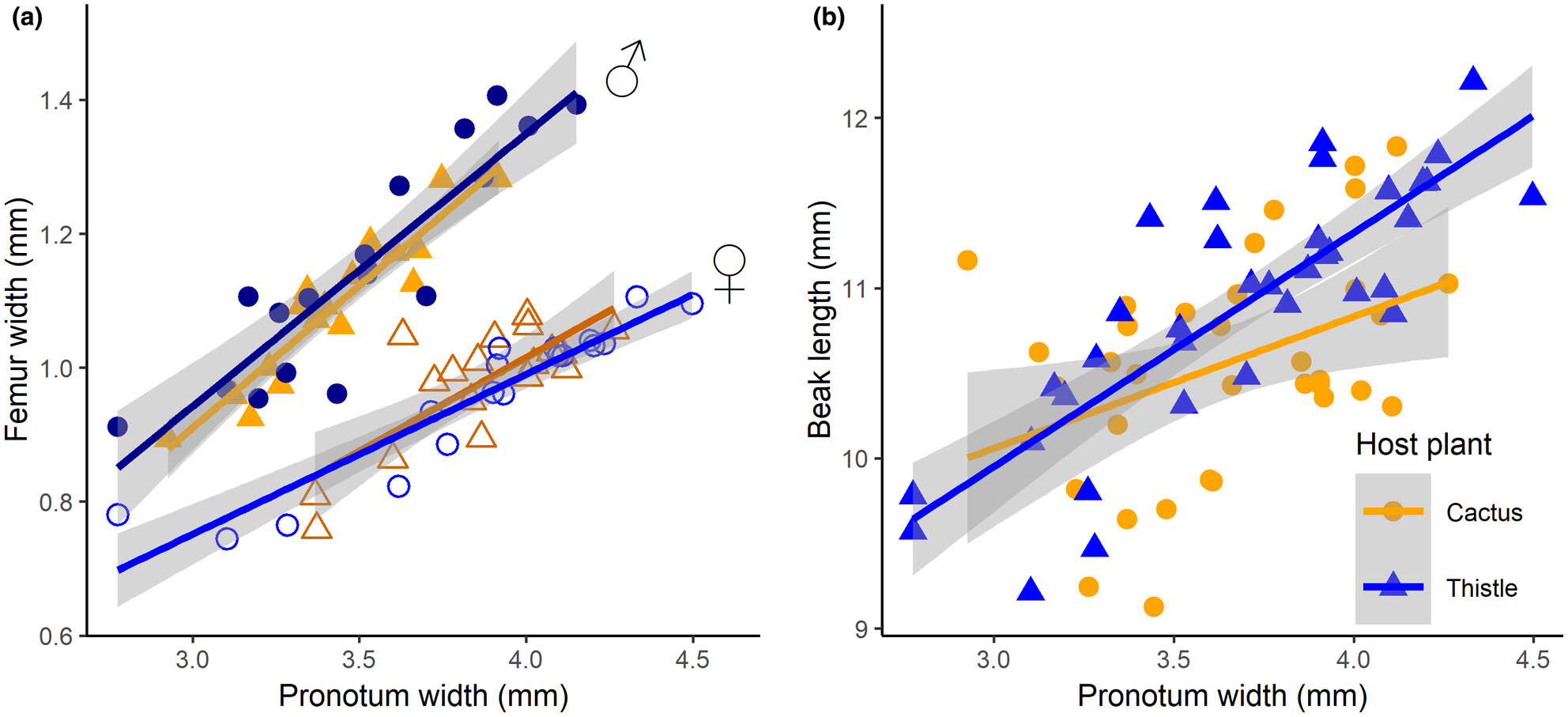
We recently found a population of the leaf-footed cactus bug, Narnia femorata (Hemiptera: Coreidae), a historical cactus specialist, living on thistle. When we compared this thistle population with a population feeding on cactus, the population living on thistle had longer mouthparts than the population found on cactus, although this difference only occurred at larger body sizes. This difference in adult mouthpart size is likely a result of the juvenile rearing environment (i.e., thistle or cactus) and suggests a host plant range expansion for the species.
Effects of short-term nitrogen addition on the recovery of alpine grassland in the Tianshan Mountains of Xinjiang, China
- First Published: 08 October 2024
High Resource Overlap and a Consistently Generalised Pattern of Interactions in a Bat–Flower Network in a Seasonally Dry Landscape
- First Published: 09 October 2024
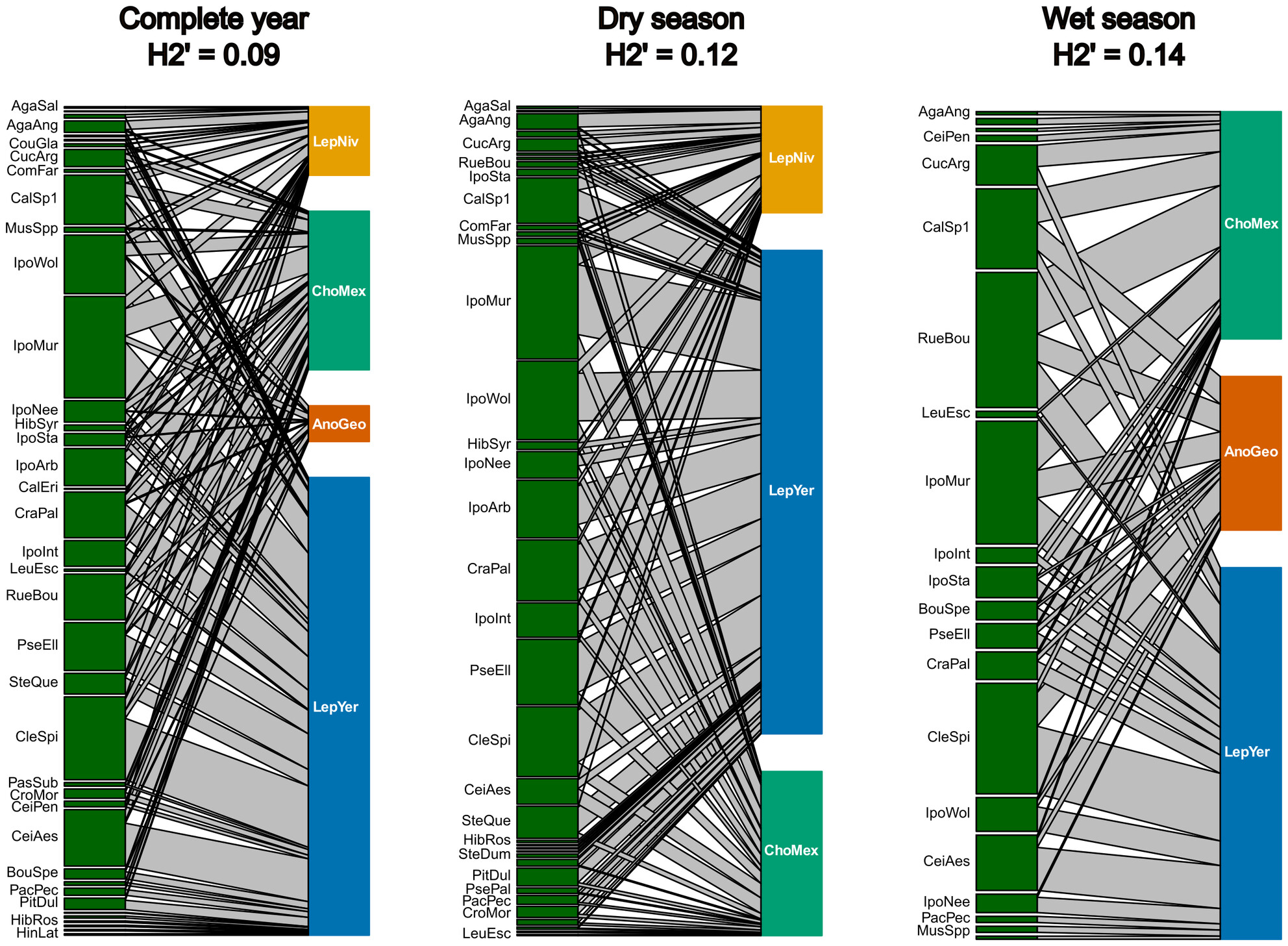
Bats are important pollinators in the tropics and are an integral part of complex plant–pollinator interaction networks. We used metabarcoding to identify plant taxa present in pollen from fur and faecal samples collected across 1 year from three nectar-feeding bat roosts in central Mexico. We found highly generalised interaction patterns across networks corresponding with opportunistic feeding behaviour by bats, with little seasonal variation in network structure.
A Method for Conveying Confidence in iNaturalist Observations: A Case Study Using Non-Native Marine Species
- First Published: 08 October 2024
Human–Wildlife Conflict in Bardia—Banke Complex: Patterns of Human Fatalities and Injuries Caused by Large Mammals
- First Published: 08 October 2024
GENETICS NOTES
Chromosome-Level Genome Assembly for the Chinese Serow (Capricornis milneedwardsii) Provides Insights Into Its Taxonomic Status and Evolution
- First Published: 09 October 2024
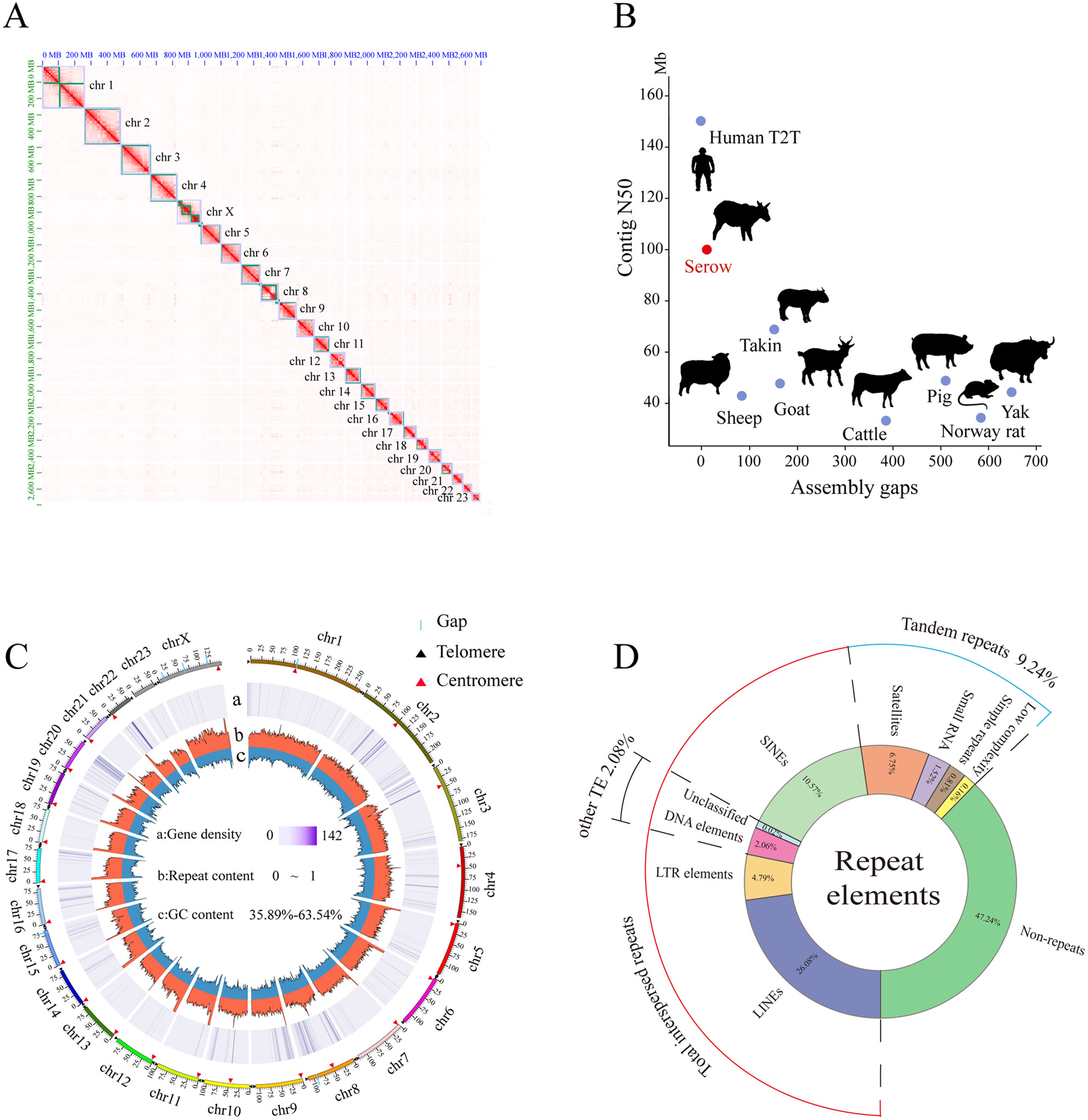
We constructed a high-quality chromosome-level reference genome of C. milneedwardsii for the first time. The Chinese serow was more closely related to muskox, and the karyotype of serow (2n = 48) occurred six chromosome fusions. Interestingly, compared to other Caprinae species, the MYH6 protein of Chinese serow occurred two mutations (E1520S and G1521S) which were conserved in Cetaceans.
RESEARCH ARTICLE
Incorporating Implicit Information to Disentangle the Impacts of Hydropower Dams and Climate Change on Basin-Scale Fish Habitat Distribution
- First Published: 08 October 2024
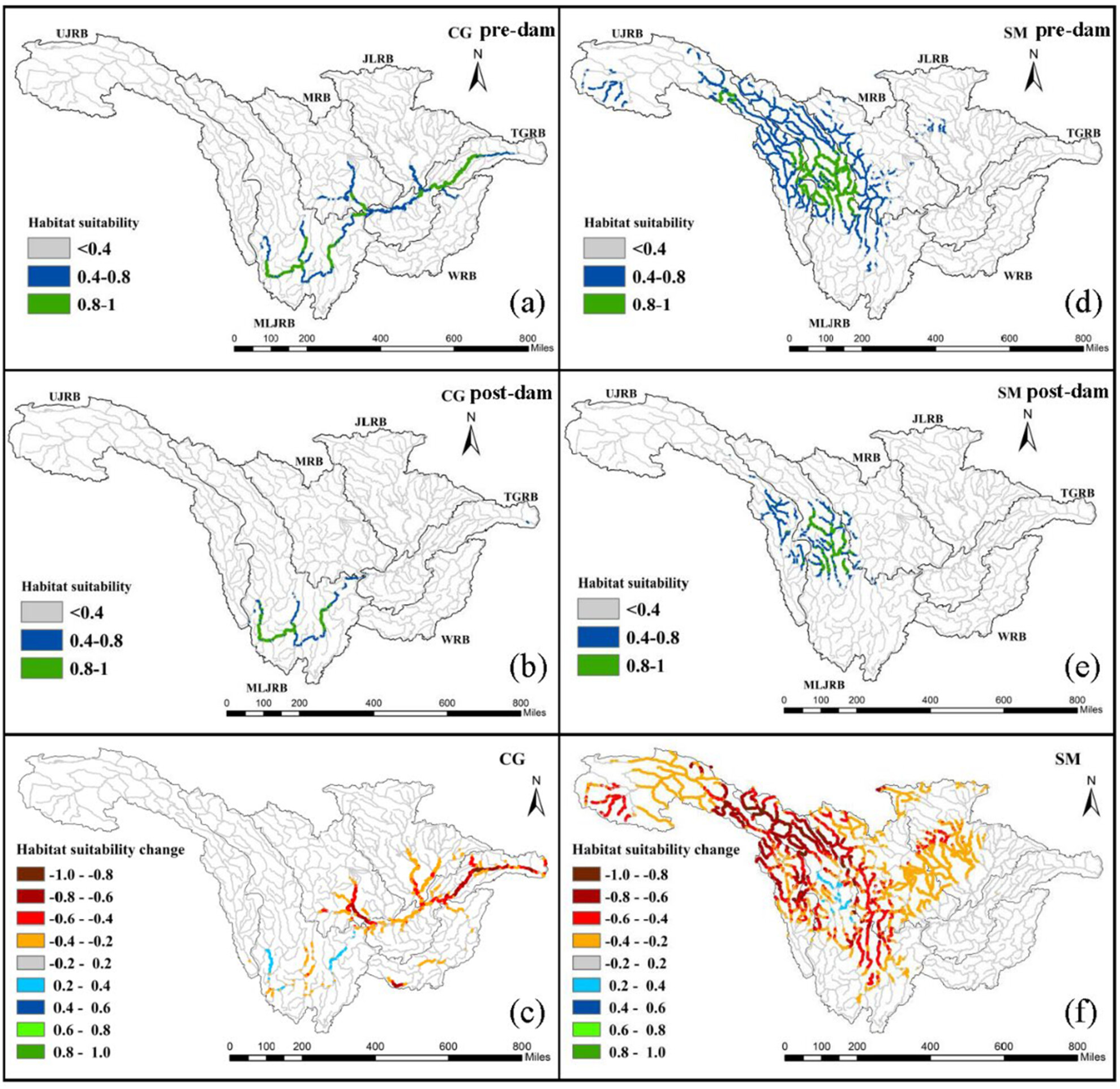
Understanding how cold-water and warm-water fish cope with various stressors such as climate change and dam construction is crucial for the conservation of freshwater fish ecosystems. This study proposes to incorporate the information on dam impact implicitly existing in the species presence data in different periods to disentangle the impacts of hydroelectric dams and climate change on cold-water and warm-water fish habitat distribution in the upper Yangtze River basin.
Dune Hares: Population Indices, Home Range Size, and Habitat Selection of the European Hare on a Danish Island
- First Published: 08 October 2024
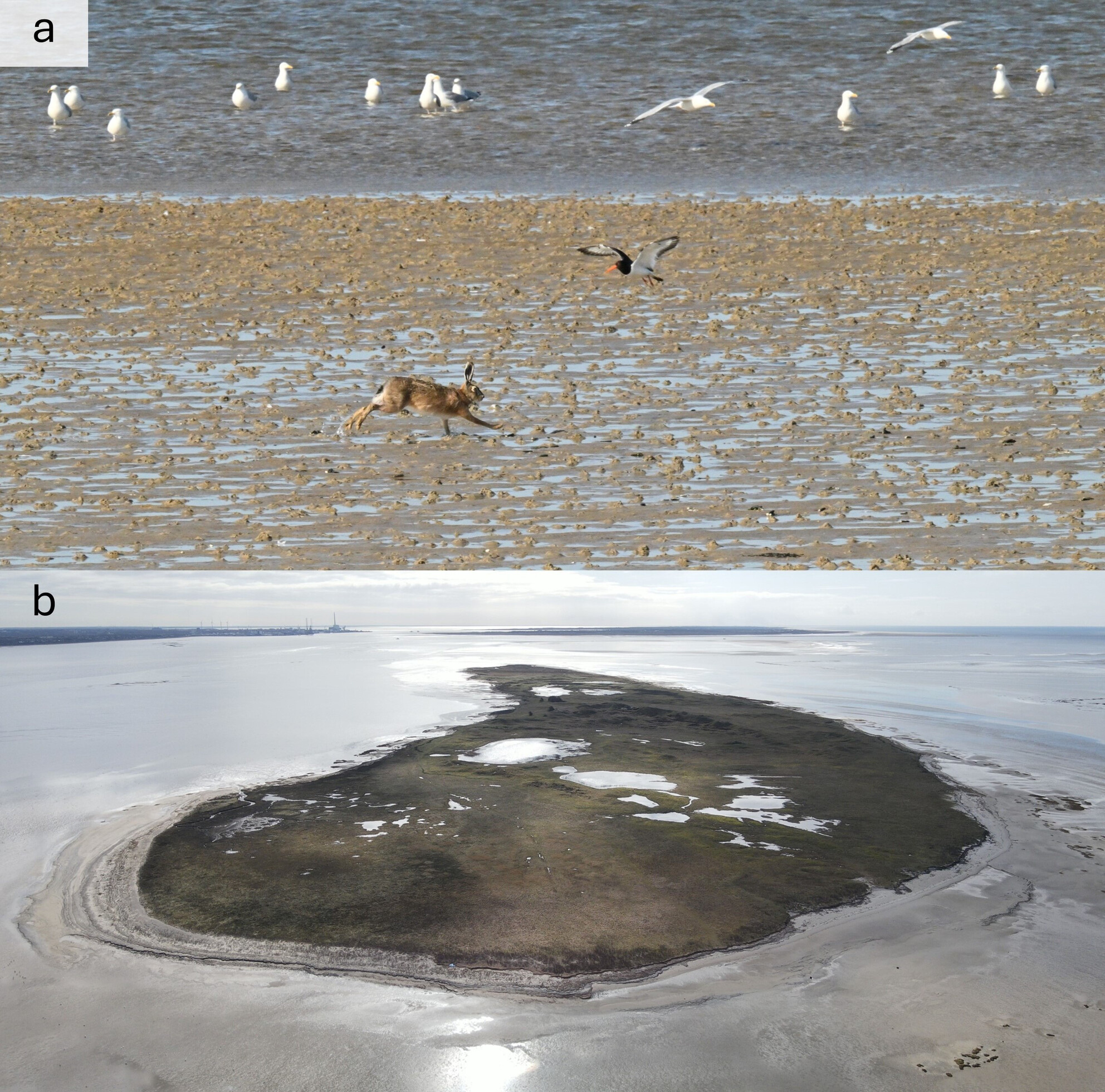
We investigated the home range sizes and habitat selection of six radio-tagged European hares on the small Danish Wadden Sea island Langli. Our results indicate that hare space use in the dunal landscape of Langli Island was similar to agricultural areas of comparatively high habitat quality. Thus, dunal marsh landscapes offer high-quality habitat for hares, and might be of importance as population strongholds.
Linking resource selection to population performance spatially to identify species' habitat across broad scales: An example of greater sage-grouse in a distinct population segment
- First Published: 10 October 2024
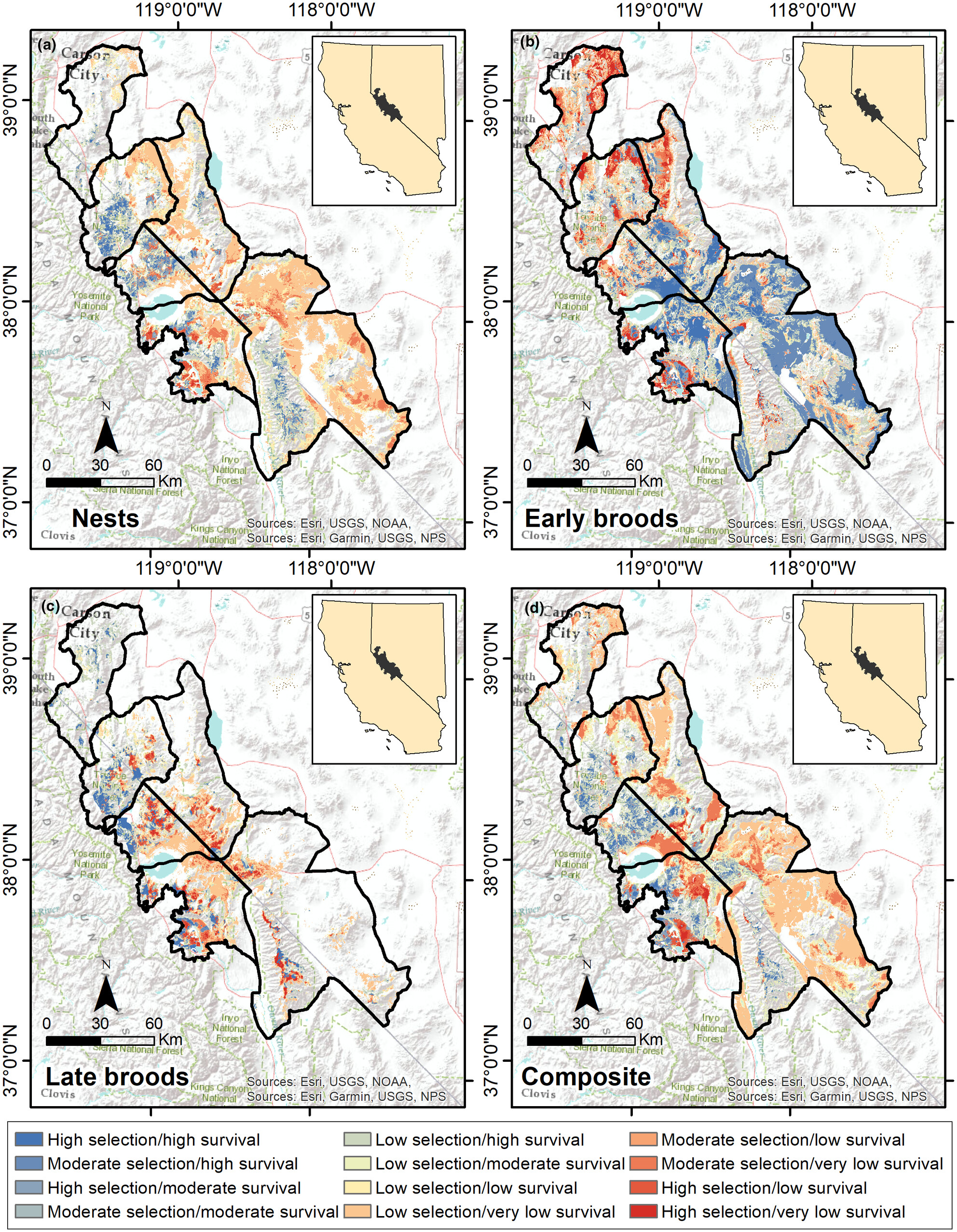
Habitat selection is not always adaptive, so understanding the link between habitat selection and demographic performance is critical to management decisions. We evaluated both selection and survival across multiple reproductive life stages in a genetically distinct and geographically isolated population of greater sage-grouse, an indicator species for sagebrush ecosystems. Our approach allowed us to identify both mismatches between selection and survival and trade-offs between life stages.
Seasonal and diel patterns in Black Sea harbour porpoise acoustic activity in 2020–2022
- First Published: 09 October 2024
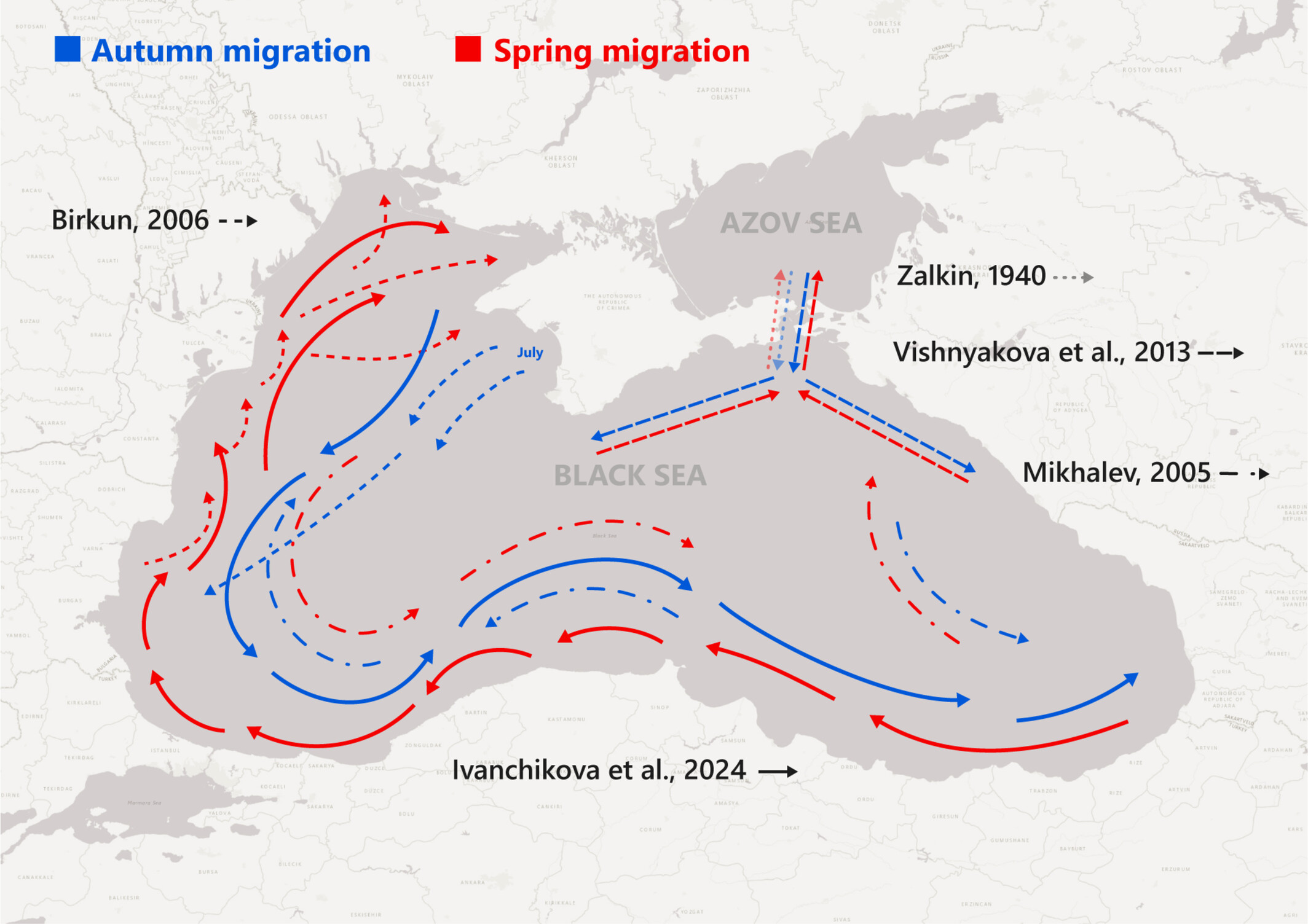
Acoustic activity of harbour porpoises showed strong seasonal and diel patterns on the whole Black Sea basin scale. Patterns differ in different regions and show higher activity in the South and East during winter and higher activity in the Northwest during summer. These patterns could be driven by seasonal and vertical migrations of the main prey species, as well as other factors.
Environmental DNA sheds new insight on molecular adaptation of foraminifera to temperature from laboratory-controlled culture experiment
- First Published: 10 October 2024
Shorter Migration Distance and Breeding Latitude Correlate With Earlier Egg-Laying Across the Northeastern Pacific Ocean Range of the Rhinoceros Auklet (Cerorhinca monocerata)
- First Published: 09 October 2024
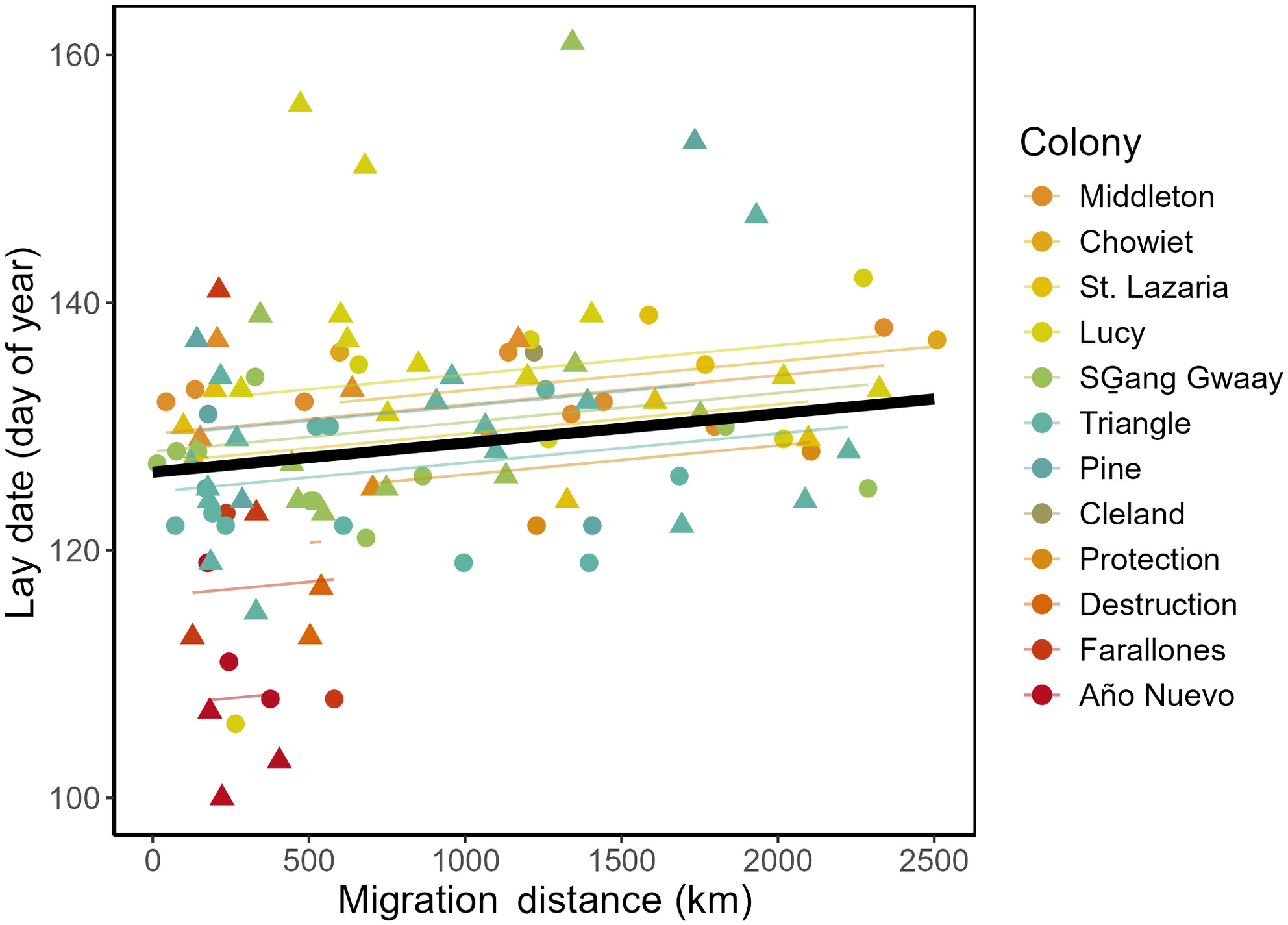
Using a GLS dataset, we investigated relationships between overwintering migration distances from the breeding colony and egg-laying date in the subsequent breeding season in the rhinoceros auklet (Cerorhinca monocerata). We found evidence to support that shorter migration distances led to earlier lay dates in this species.
Effects of Climate, Soil, Topography and Disturbance on Liana Prevalence
- First Published: 10 October 2024
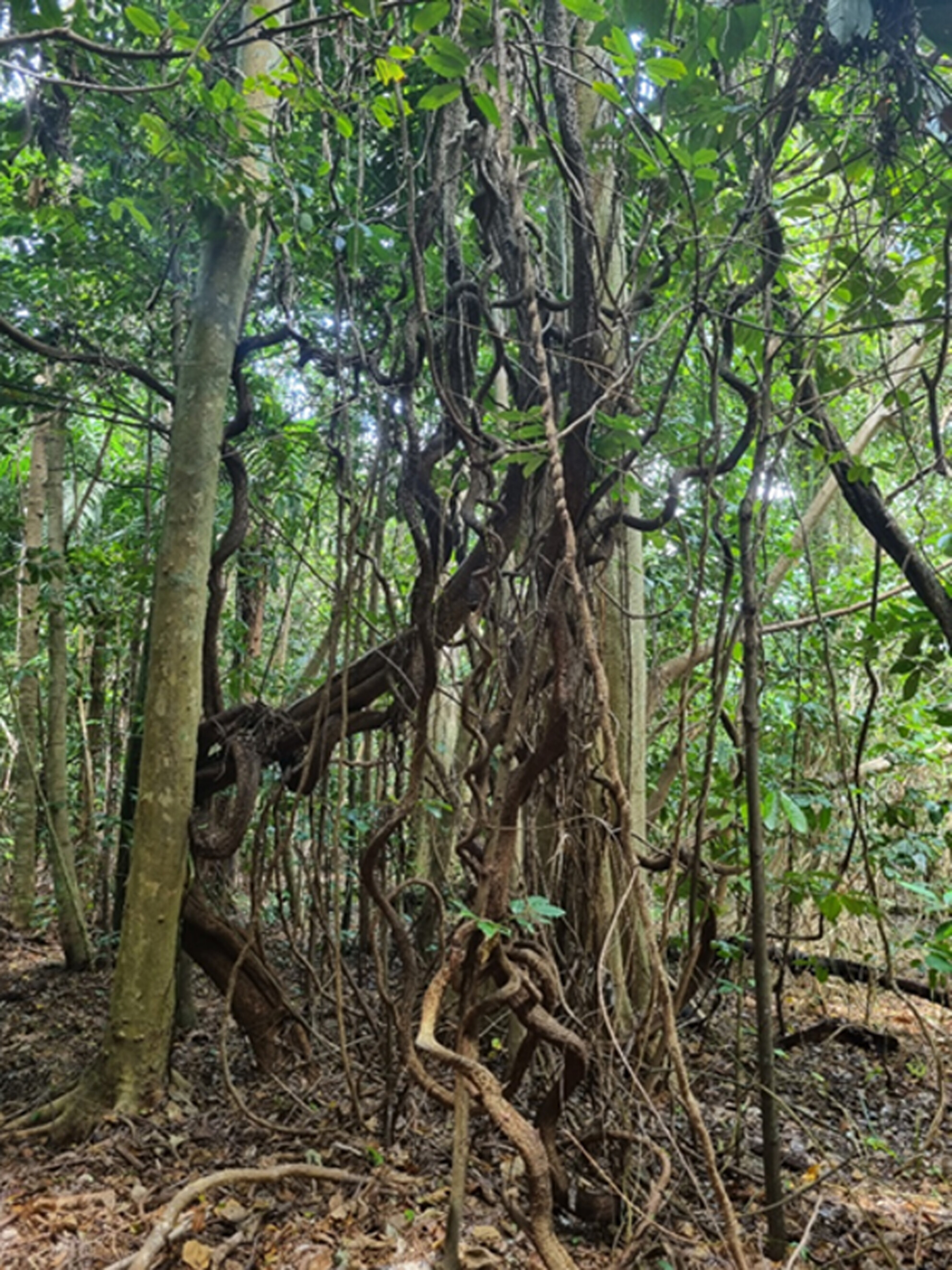
Lianas (woody vines and climbing monocots) are highly important in tropical forests; however, our understanding of the environmental variables that drive their proliferation at regional scales is incomplete and geographically biased. We address this gap through a study in the Australian Wet Tropics and find that disturbance and climate are important drivers of liana prevalence. This provides further support for the concern that global change may be contributing to increasing lianas relative to trees, with serious consequences for rates of tropical forest recovery and carbon sequestration.
Leveraging Open-Source Geographic Databases to Enhance the Representation of Landscape Heterogeneity in Ecological Models
- First Published: 10 October 2024

We leverage the resolution power of OpenStreetMap to improve the representation of landscapeheterogeneity in urban areas within LULC maps. To assess the information extracted with our framework, we conducted extensive testing in 34 North American cities, comparing our output to spatial data commonly used as landscape variables for ecological studies worldwide. The results demonstrated a ~90% accuracy in representing landscape heterogeneity, reinforcing the practicality and reliability of our approach. We included a case study to demonstrate the framework's applicability in ecological research where we developed a wildlife-specific urbanization index representing habitat and shelter availability, vicinity to water resources, and road presence to analyze spatial occupancy of urban mammals. We predicted the spatial distribution of six mammal species across 93 camera trap sites in Chicago. We compared the predictions against using the “human influence index” as a landscape variable. The results from our case study demonstrated our framework strongly improved the model outputs, as it allows for higher resolution and context-specific spatial variables.
Ant's Nest as a microenvironment: Distinct Mucoromycota (Fungi) community of the red wood ants' (Formica polyctena) mounds
- First Published: 09 October 2024
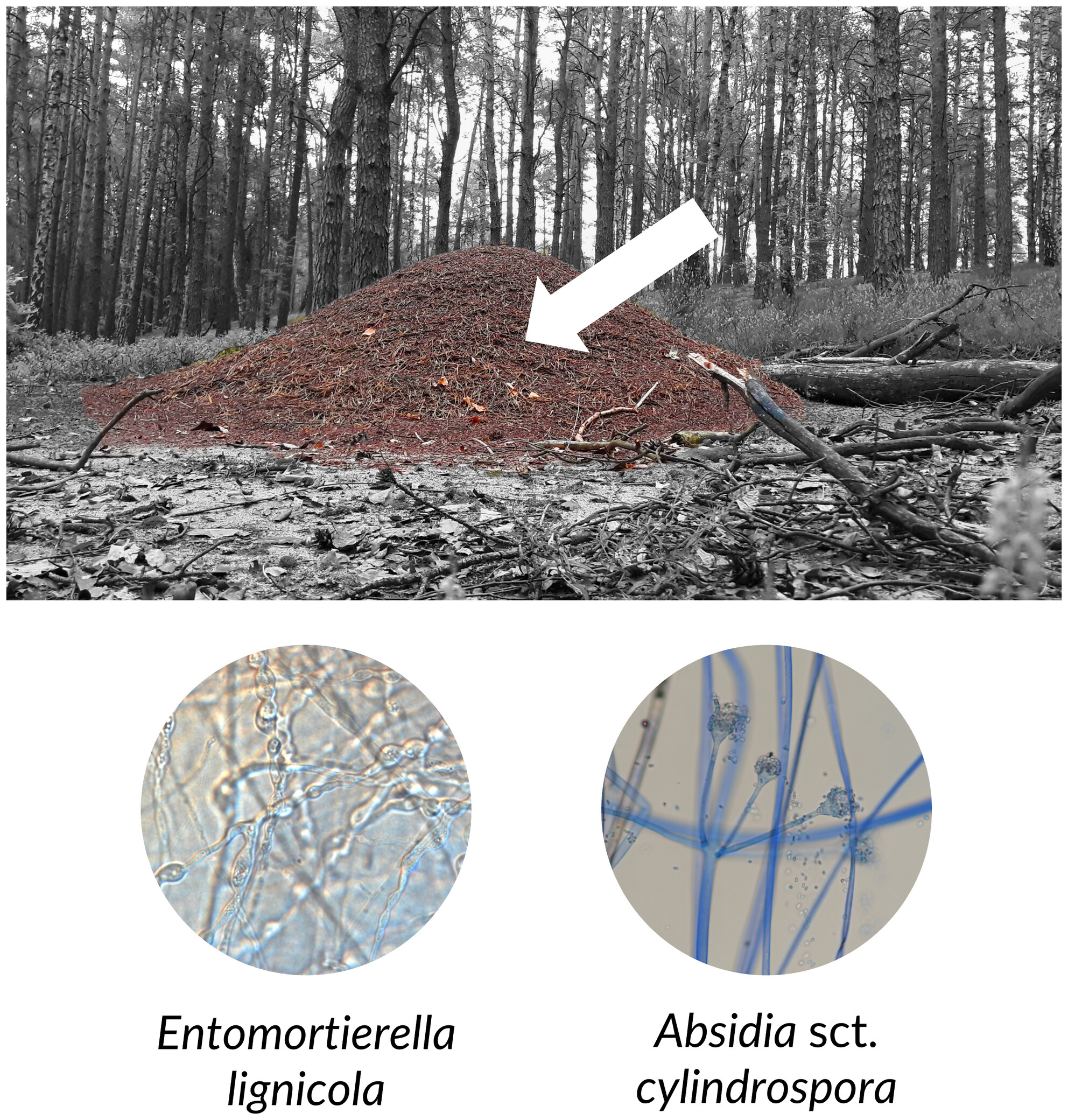
Many social insect species build nests, which strongly differ from the surrounding environment and are often occupied by specific organismal communities. We compared the Mucoromycota (Fungi) community of red wood ant's (Formica polyctena) mounds with the community of the surrounding forest litter. We show that the fungal community of mounds is specific and that representatives of Entomortierella lignicola and Absidia cylindrospora clade are associated with the mound environment.
Previous reproductive success and environmental variation influence nest-site fidelity of a subarctic-nesting goose
- First Published: 11 October 2024
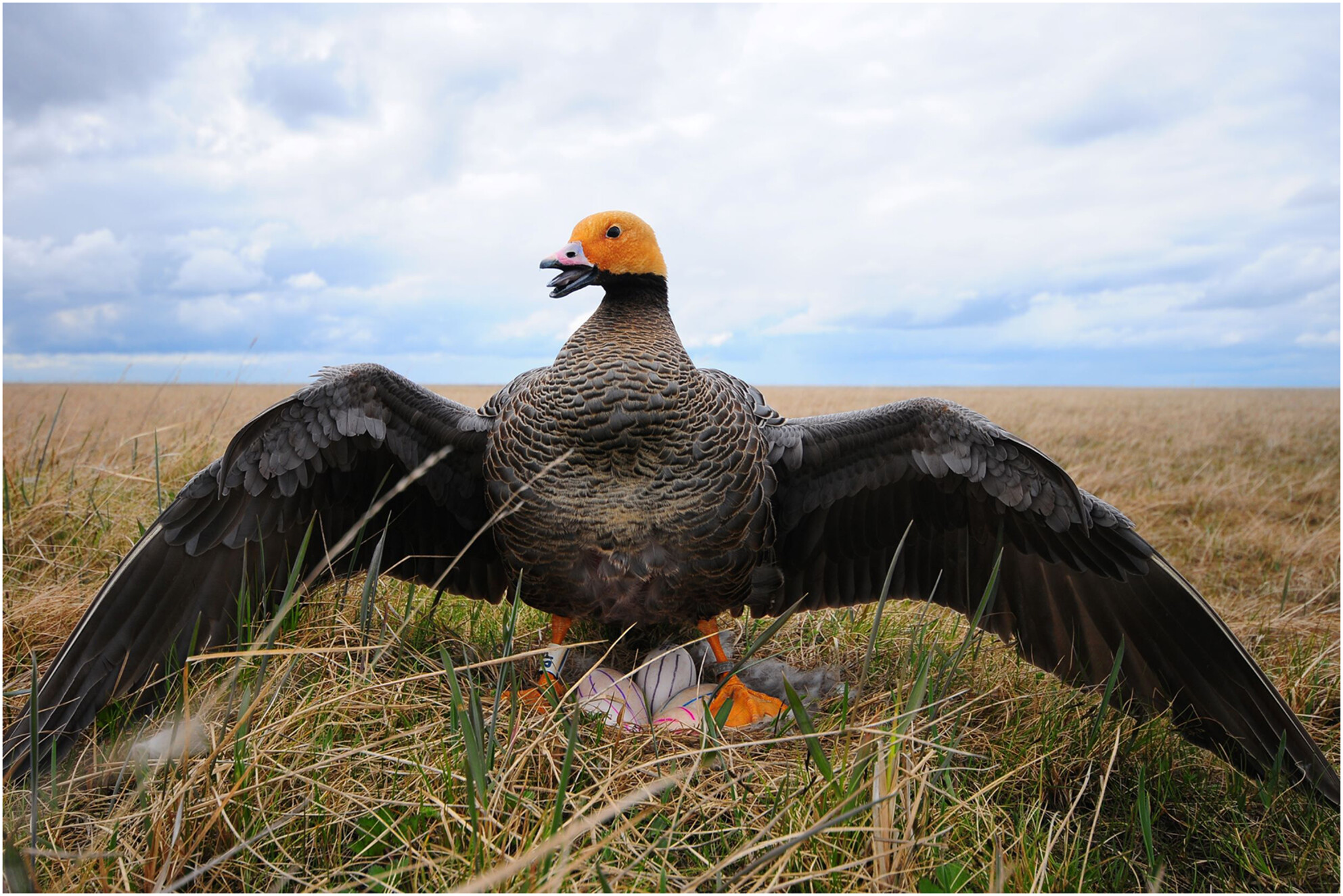
We found that nest-site dispersal decisions of emperor geese in western Alaska follow the win-stay lose-switch strategy, and that this is adaptive in that it leads to higher nest survival. We also found that nest-site dispersal distance is influenced by the occurrence of major flooding events in the previous year, but is not influenced by spring timing. Our results highlight the importance of previous experience and environmental variation in shaping dispersal decisions of a long-lived goose species.
Modeling the Distribution and Environmental Preferences of the Ladakh Urial in the Arid Himalayas
- First Published: 09 October 2024
Identifying Priority Areas for the Indian Leopard (Panthera pardus fusca) Within a Shared Landscape
- First Published: 10 October 2024
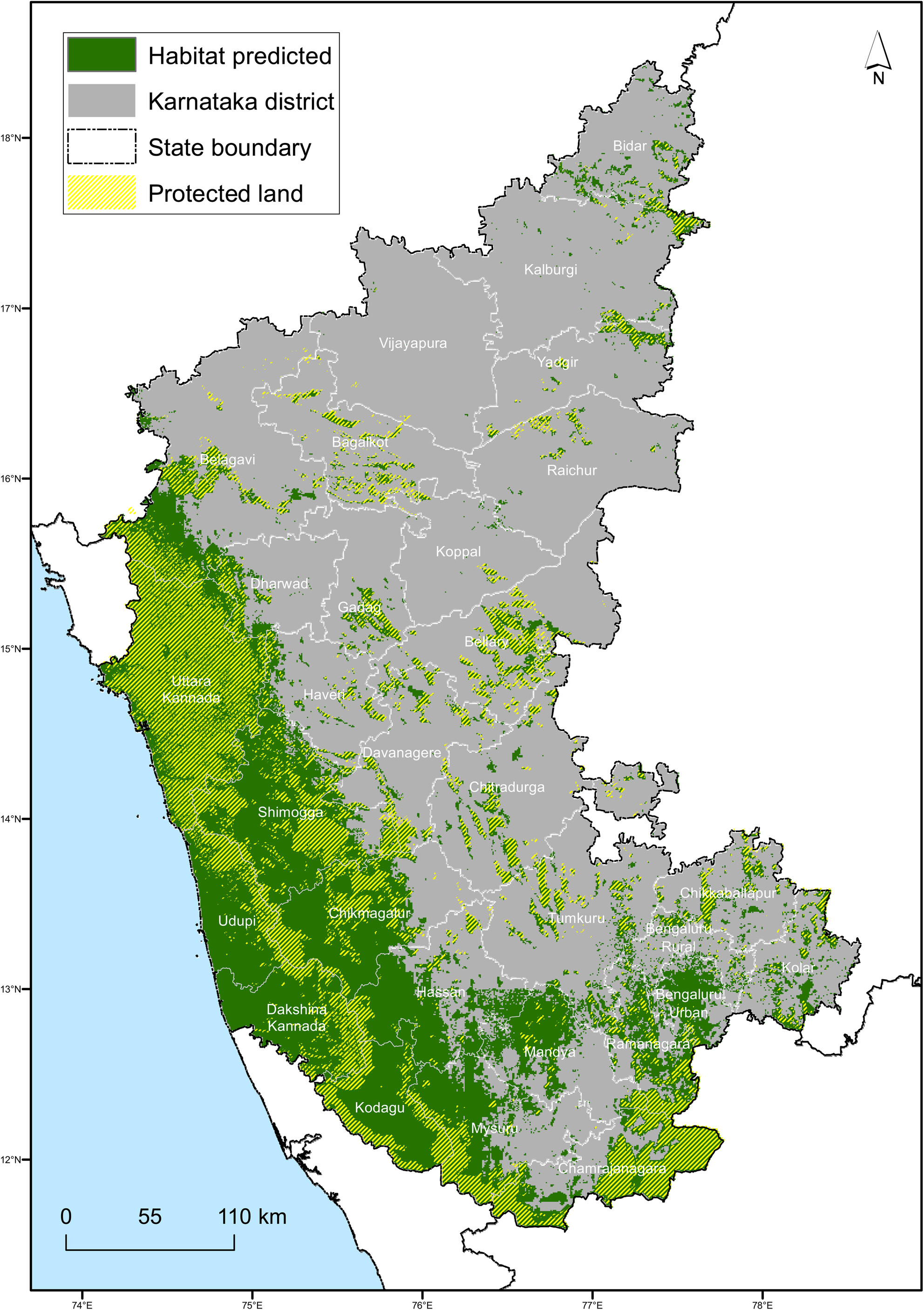
This manuscript determines the priority landscape for leopard conservation and the factors contributing towards habitat selection. The development of a conservation policy requires data on large spatial scales, which is mostly lacking, especially within India. This study employing fine-scale data is critical for developing conservation strategies and managing negative human–leopard interactions.
NATURE NOTES
Multi-method approach to assessing the floral-visiting insect assemblage of rare, ambophilous plant Baccharis vanessae in Southern California
- First Published: 22 October 2024

In this study, we compare the accuracy of two different methods of monitoring to assess the insect assemblage of Encinitas Baccharis (Baccharis vanessae): focal observations and video recordings from camera traps. The insect vectors identified were as expected given B. vanessae pollination syndrome. While focal observations underreported insect activity by approximately half, the proportions of common diurnal visitors were similar with both methods. Camera traps were unable to provide sufficient detail to discern visually similar guilds, but were able to record nocturnal insect activity, which was dominated by moths (Lepidoptera, 82%).
RESEARCH ARTICLE
Tracking Small Animals in Complex Landscapes: A Comparison of Localisation Workflows for Automated Radio Telemetry Systems
- First Published: 10 October 2024

Automated radio telemetry grids provide the possibility of studying movement of small animals at very fine spatial scales, but the influence of rugged terrains and vegetation on localisation error curtails the applicability of this technology. In this study, we present a comparative workflow to reduce error and show how selecting higher radio signal strengths and smoothing based on temporal autocorrelation improves localisation. Our grid in the Andes of Colombia provides an example of using this technology to track species that lack movement data, in this case, two high-altitude hummingbirds.
Allometric Growth and Scaling of Body Form of the Spadenose Shark (Scoliodon laticaudus)
- First Published: 10 October 2024
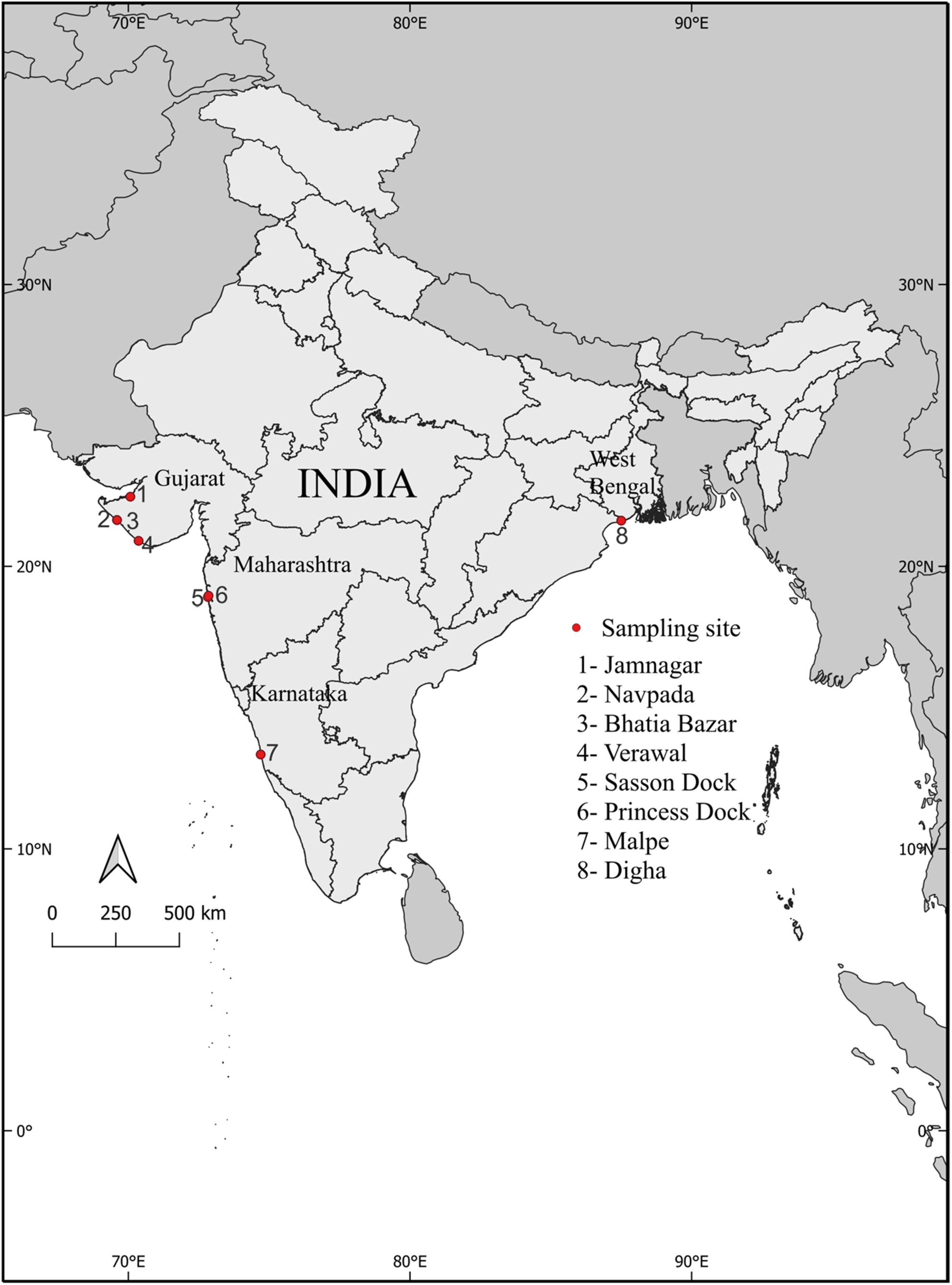
Multiple hypotheses have been posed to explain differences in ontogenetic scaling amongst shark species. We report both isometric and allometric growth of functionally important structures in the spade nose shark (Scoliodon laticaudus). These scaling relationships are consistent with the allometric niche shift hypothesis, but refute the idea that small-bodied sharks grow isometrically.
How Do Age and Attitudes Affect the Quality of Data Collected by Young Citizen Scientists in an Ecological Research Project?
- First Published: 10 October 2024

The young participants provided broadly good quality data in ecological citizen science project. Surprisingly, the age did not affect the data quality whereas the students who were more interested in biology as a school subject provided lower quality data than those less interested. The practicalities of the participation were important in ensuring high quality data.
CORRECTION
RESEARCH ARTICLE
Testing secondary sex ratio bias hypotheses in white-tailed deer in Mississippi, USA
- First Published: 11 October 2024

We examine several competing hypotheses related to the variation in secondary sex ratios including Fisher's frequency dependence, Trivers–Willard, and the local resource hypotheses using a spatiotemporally extensive dataset of pregnant white-tailed deer from Mississippi, USA. Our findings add to the body of literature on secondary sex biases in white-tailed deer and help inform sex bias ratios for a southern population of a cervid of management importance in the US.
Developmental Social Experience Changes Behavior in a Threatening Environment in Corydoras Catfish
- First Published: 11 October 2024
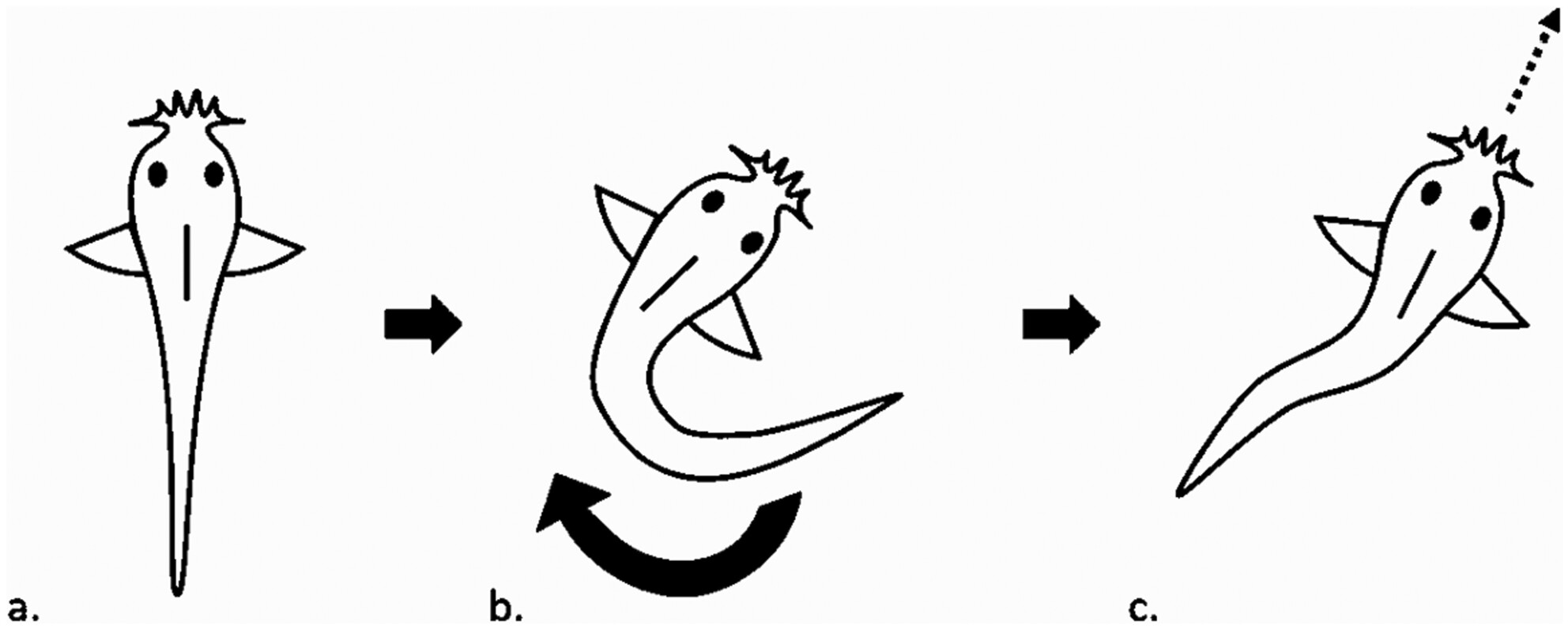
This study examines the effect of developmental social experience on antipredator behavior and group cohesion, in a highly gregarious catfish that communicates via tactile interaction, Corydoras aeneus. We reared fish either in a mixed-age group of age-matched peers and adult C. aeneus (mixed-age condition or MAC), or with age-matched peers only (same-age condition or SAC). SAC subadults had increased tactile communication before any startles compared to MAC subadults, were overall less active, exhibited a stronger antipredator response to startles, and were more likely to freeze or take refuge in cover in response to a startle than MAC fish.
NATURE NOTES
Kimboza, a Small Lowland Forest With an Outstanding Herpetofauna Diversity in East Africa
- First Published: 11 October 2024
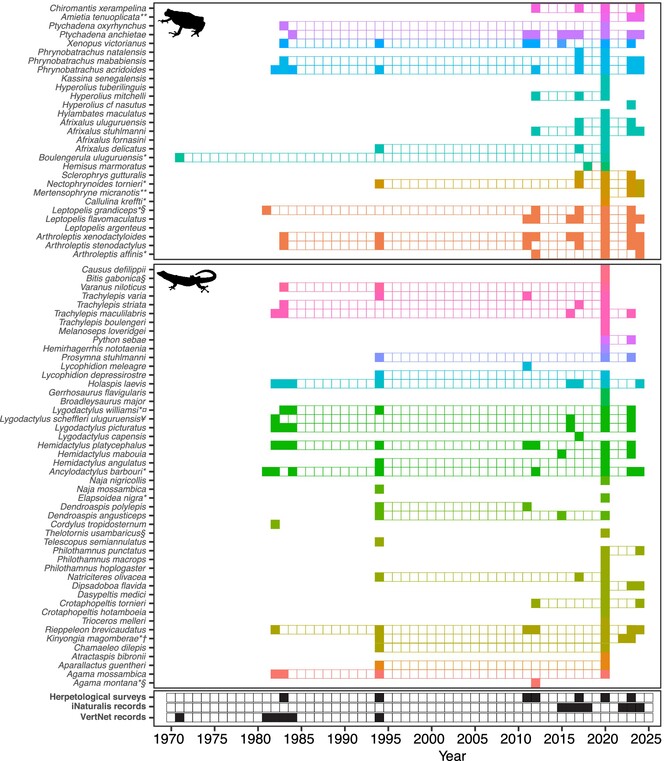
We provide a curated checklist of amphibians and reptiles in Kimboza Nature Forest Reserve (KNFR) in Tanzania based on the new intensive fieldwork and old survey information. The KNFR boasts the richest diversity per km2 in Tanzania and potentially the continent. We demonstrated much of the fauna is of coastal origin but this unique fauna is highly threatened by habitat degradation.
RESEARCH ARTICLE
Extreme Temperatures Reduce Copepod Performance and Change the Relative Abundance of Internal Microbiota
- First Published: 11 October 2024
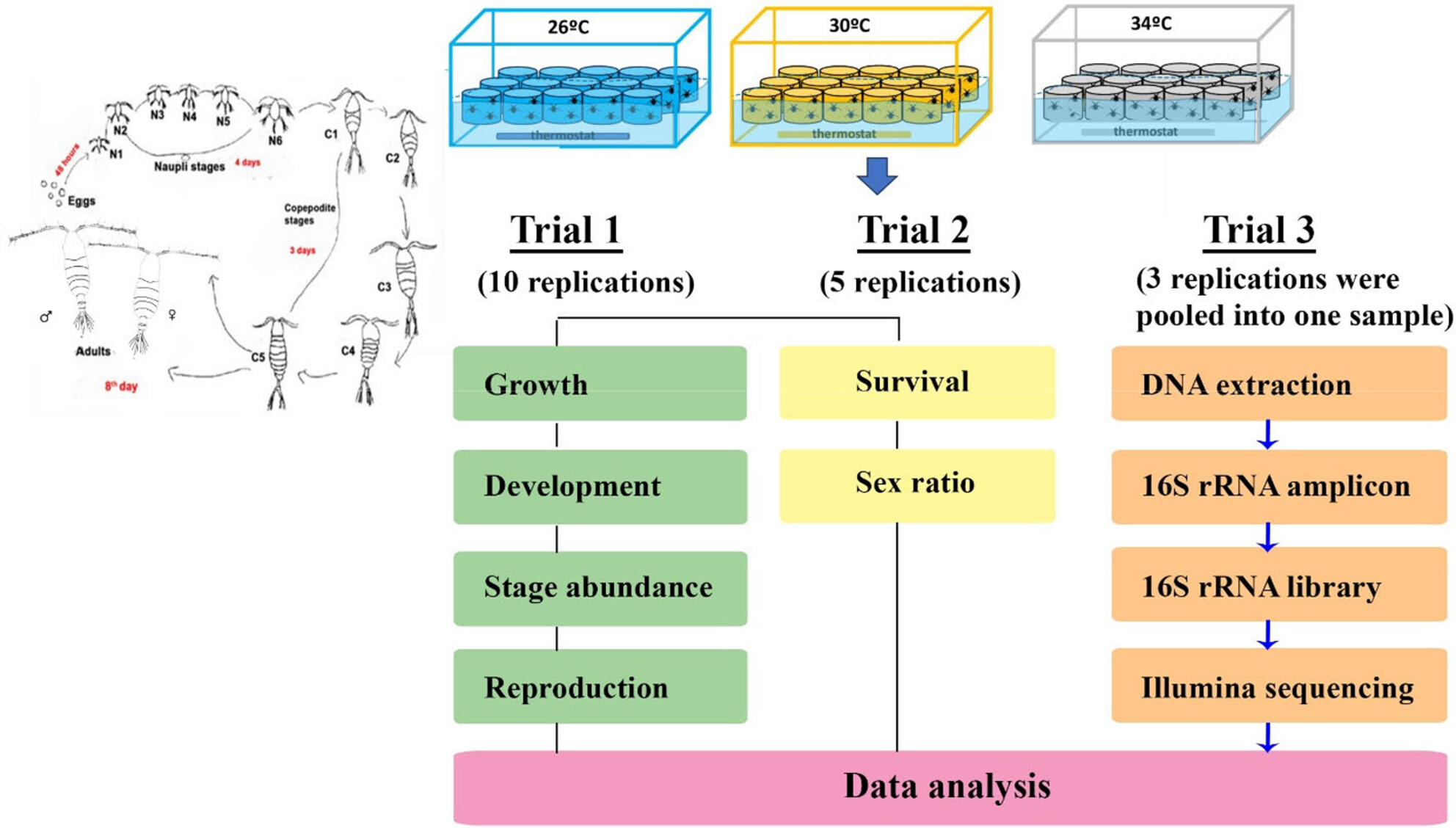
Marine heatwaves (MHWs) emerge as a severe stressor in marine ecosystems, yet it is relatively unknown the role of the internal microbiome in shaping copepod susceptibility to MHWs. Our study showed that Acartia copepods decreased survival, growth, and reproduction at 34°C, a typical MHW temperature. The thermophilic and opportunistic Proteobacteria and Bacteroidota increased under extreme temperatures while Actinobacteria abundance was strongly reduced; all might be related to reduced copepod growth, survival, and reproduction.
GENETICS NOTES
The Complete Mitochondrial Genomes of Five Nivanini Species (Hemiptera: Cicadellidae: Evacanthinae) With Phylogenetic Analysis
- First Published: 11 October 2024
RESEARCH ARTICLE
Genetic Structure and Phylogeographic Divergence of Thymallus brevicephalus in the Ob-Irtysh River Headwaters
- First Published: 11 October 2024
This study reveals the impact of past climate events on a fish species (Thymallus brevicephalus) in China. Genetic analysis suggests the species split into eastern and western populations during a past glaciation event. While the fish show genetic diversity, specific management plans are needed to conserve both eastern and western populations due to their unique evolutionary histories.
Ecometrics demonstrates that the functional dental traits of carnivoran communities are filtered by climate
- First Published: 13 October 2024
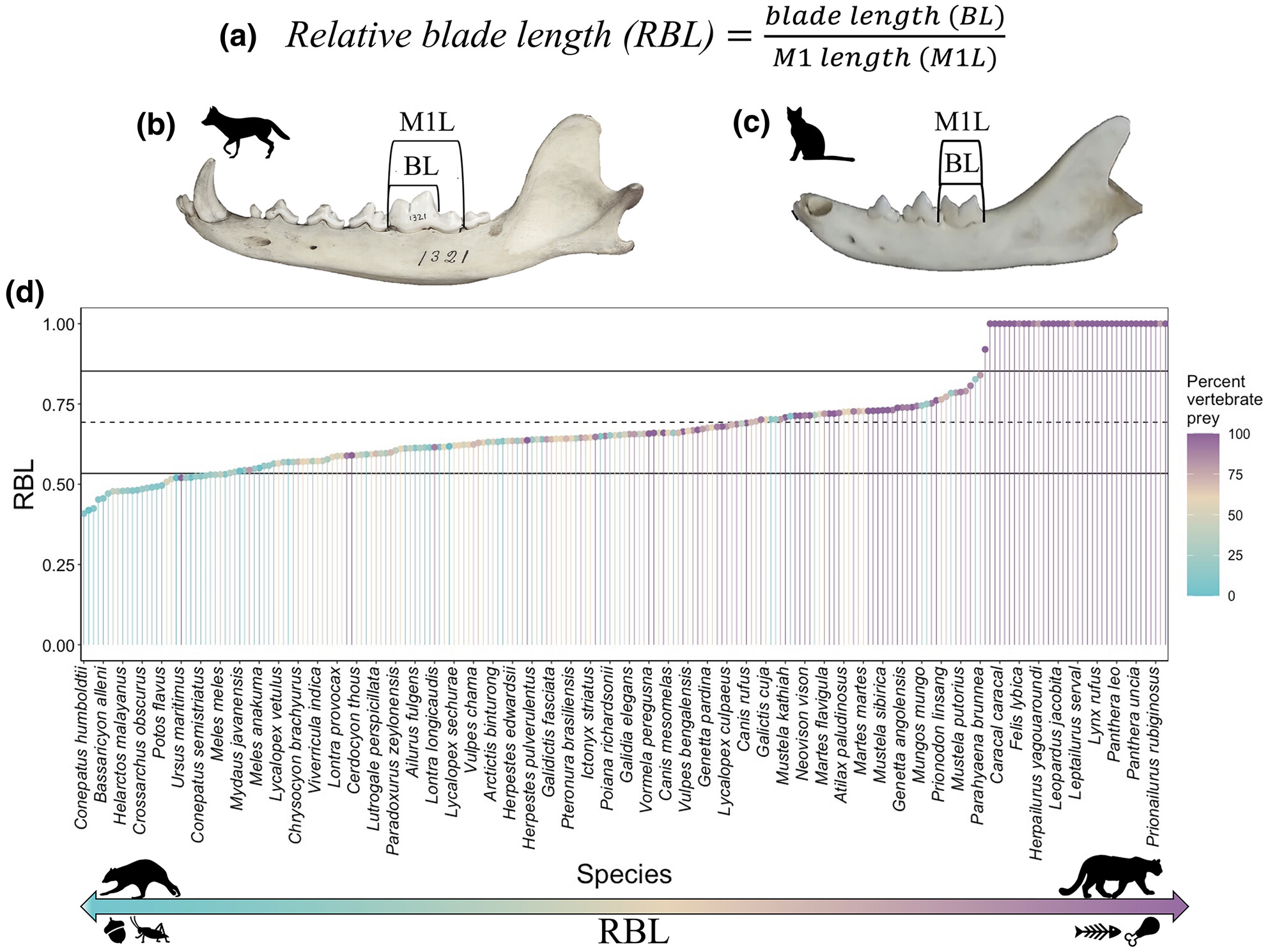
Carnivorans can provide a unique insight into the relationship between functional dietary traits and environmental conditions. Using ecometric analyses, we evaluated the relationship between the relative blade length of the carnivoran carnassial tooth and temperature and precipitation at global and continental scales. We detected a relationship in which greater trait variance is associated with warmer, wetter conditions, suggesting a relationship between carnivoran dietary diversity and climate.
Climate Futures for Lizards and Snakes in Western North America May Result in New Species Management Issues
- First Published: 13 October 2024
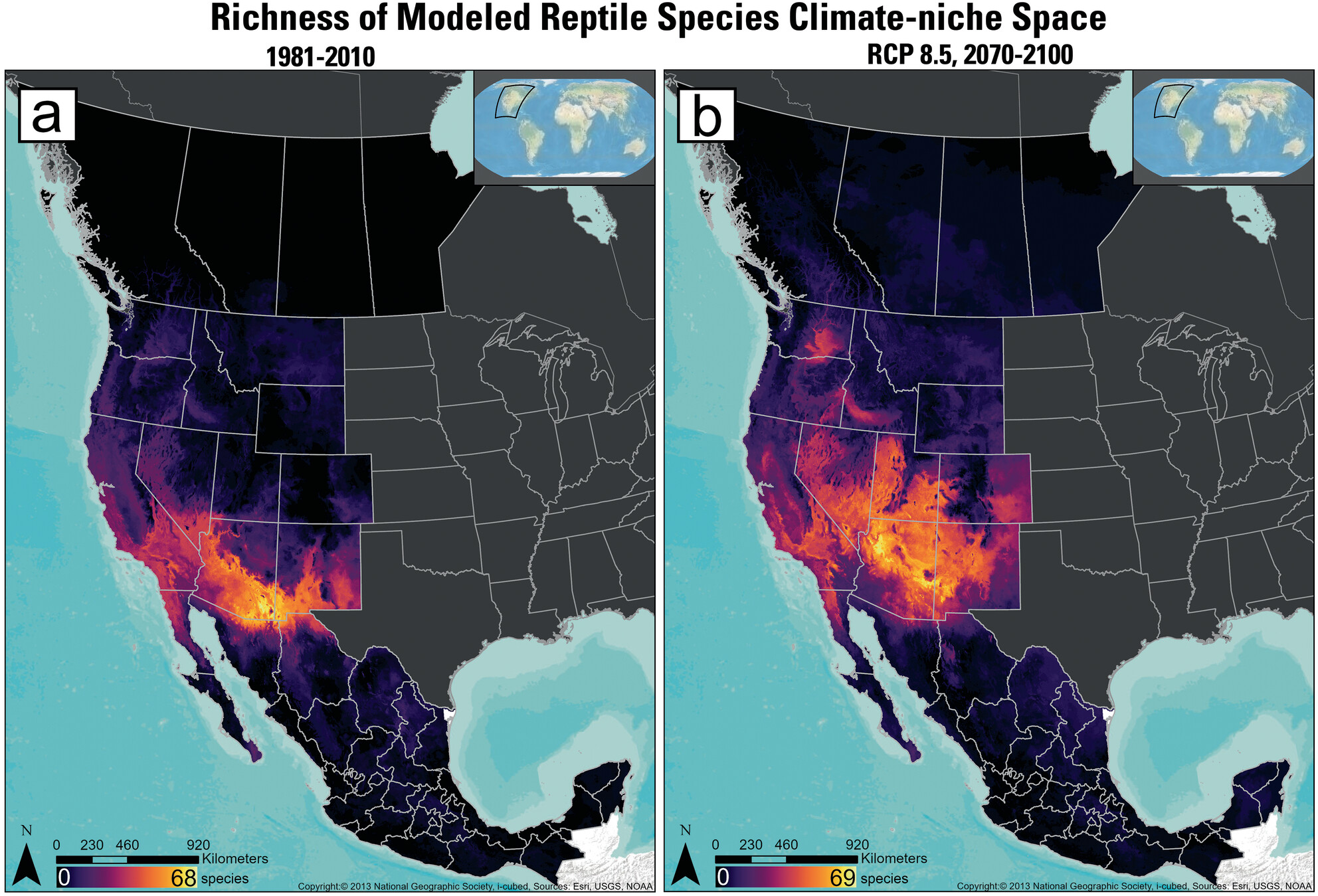
We assessed changes in fundamental climate-niche space for lizard and snake species in western North America under modeled climate scenarios to inform natural resource managers of possible shifts in species distributions. Overall, reptile climate-niche space was projected to move northward in the future. Sixty-eight percent of species were projected to expand their current climate-niche space rather than to shift, contract, or remain stable. Only 8.5% of species were projected to lose climate-niche space in the future, and these species primarily occurred in Mexico and the southwestern U.S.
Wild Bee Conservation in Viticulture: Effects of Semi-Natural Habitats, Organic Management, and Fungicide Reduction
- First Published: 13 October 2024
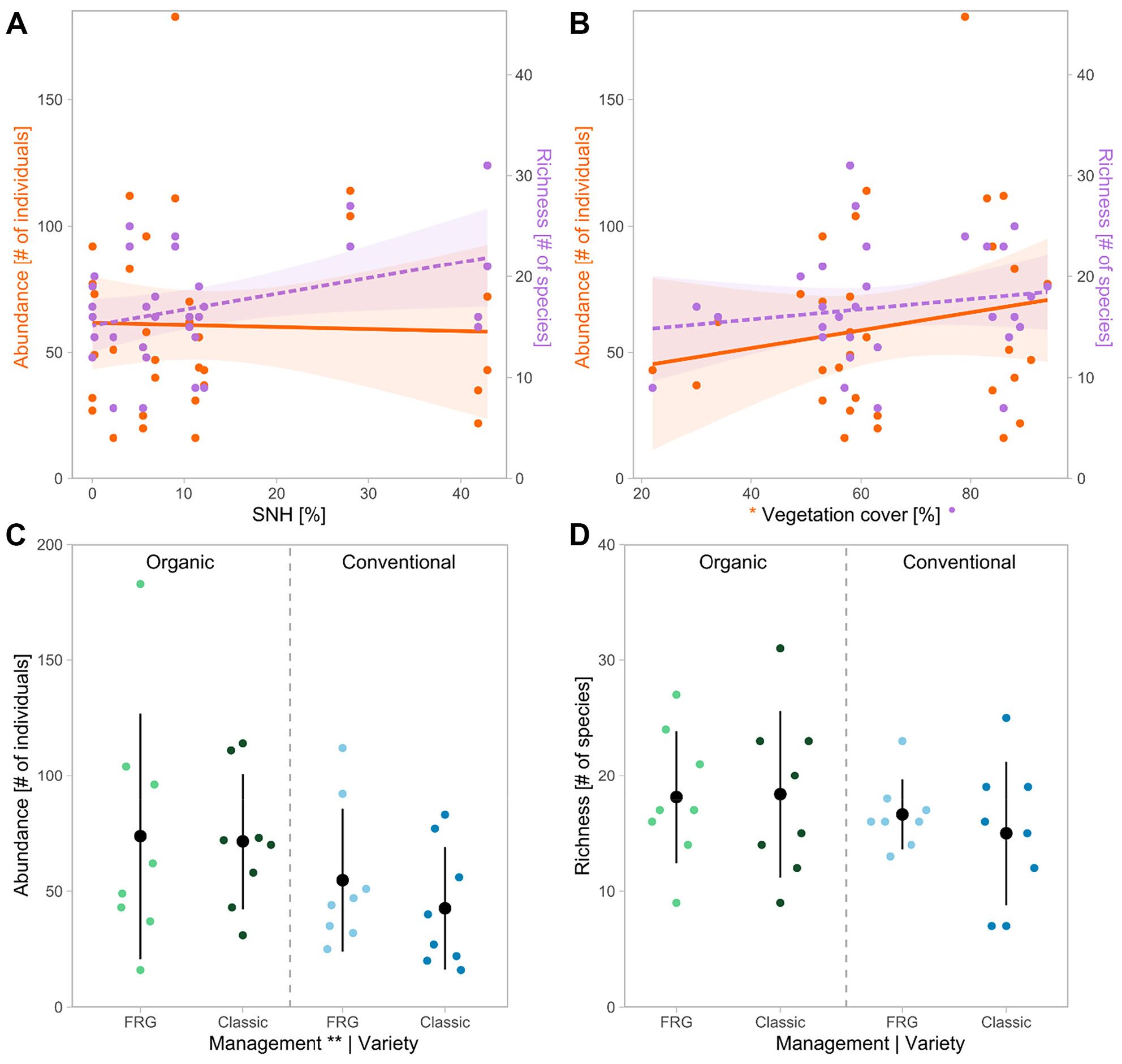
In agricultural landscapes, the clearing of semi-natural habitats (SNH) and the intensive use of pesticides contribute to declines of biodiversity, including crop pollinators. Using yellow pan traps to sample wild bees, we investigated how SNH in the surrounding landscape, organic and conventional management, and the reduction of fungicides affect wild bee diversity in 32 vineyards in southwest Germany. Our study underlines that the local provision of diverse vegetation in vineyards and the landscape-scale provision of suitable SNH are key factors for wild bee conservation in viticulture.
Centurial Variation in Size at Maturity of Eastern Baltic Cod (Gadus morhua) Mirrors Conditions for Growth
- First Published: 13 October 2024
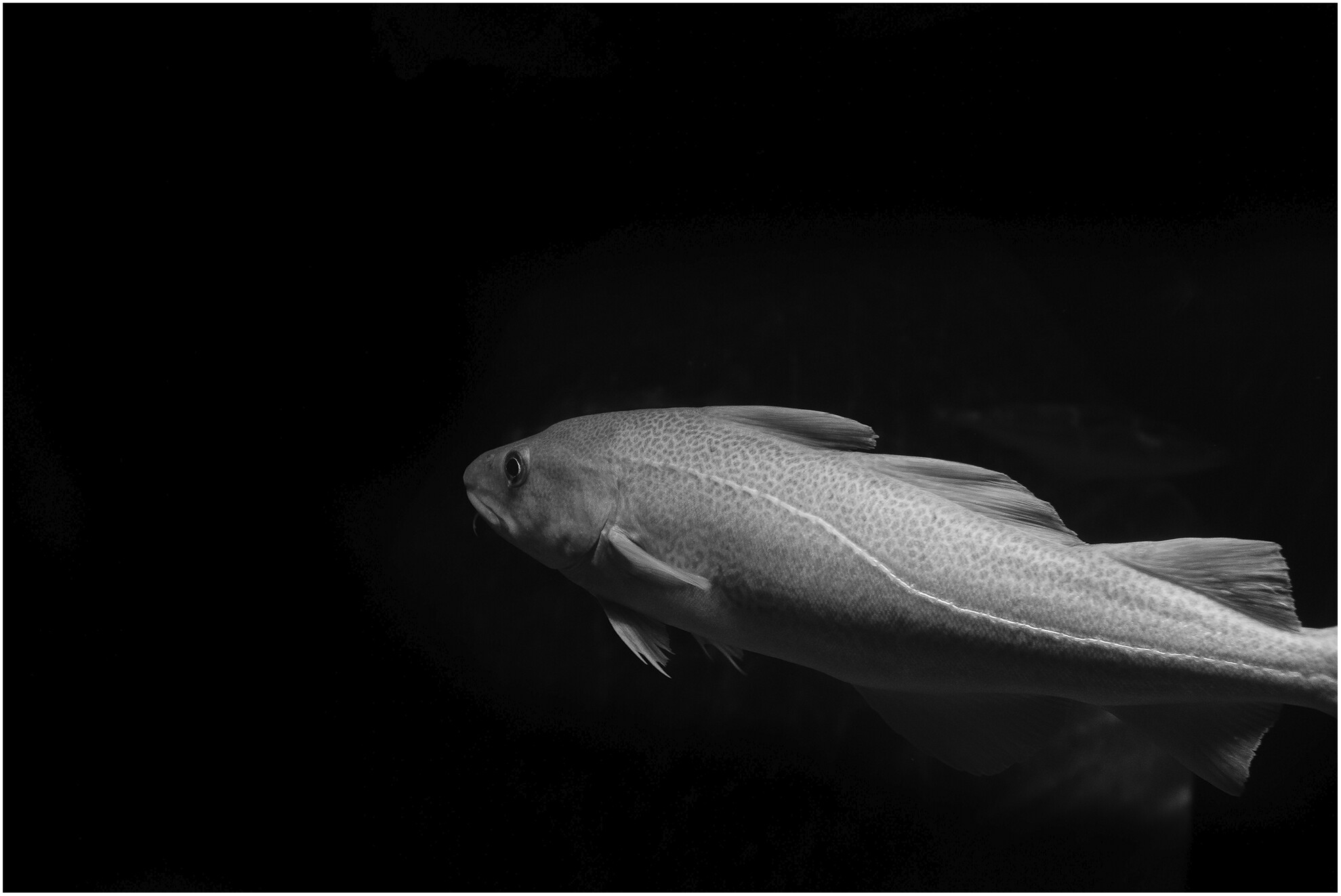
The status of Eastern Baltic cod (EBC) Gadus morhua has remained poor despite low fishing mortality for over a decade, including a fishing ban since 2019. Our results suggest that the links between life-history parameters and external drivers are complex, but the present unprecedented reduced size at maturity since the 1990s signals a decline in growth potential, which also has hampered the productivity of EBC.
Predicting the Potential Distribution of Rare and Endangered Emmenopterys henryi in China Under Climate Change
- First Published: 13 October 2024

We applied Biomod2 and MaxEnt to predict the current and future potential distribution of endangered Emmenopterys henryi in China. The current potential distribution area from Biomod2 is 176.53 × 104 km2, which is larger than from MaxEnt. Moreover, climate change is expected to have an adverse effect on its potential distribution.
Response of Leaf Traits and Photosynthetic Fluorescence Characteristics of Fraxinus malacophylla Seedlings to Rainfall Patterns During Dry and Rainy Seasons in Southwestern China
- First Published: 15 October 2024
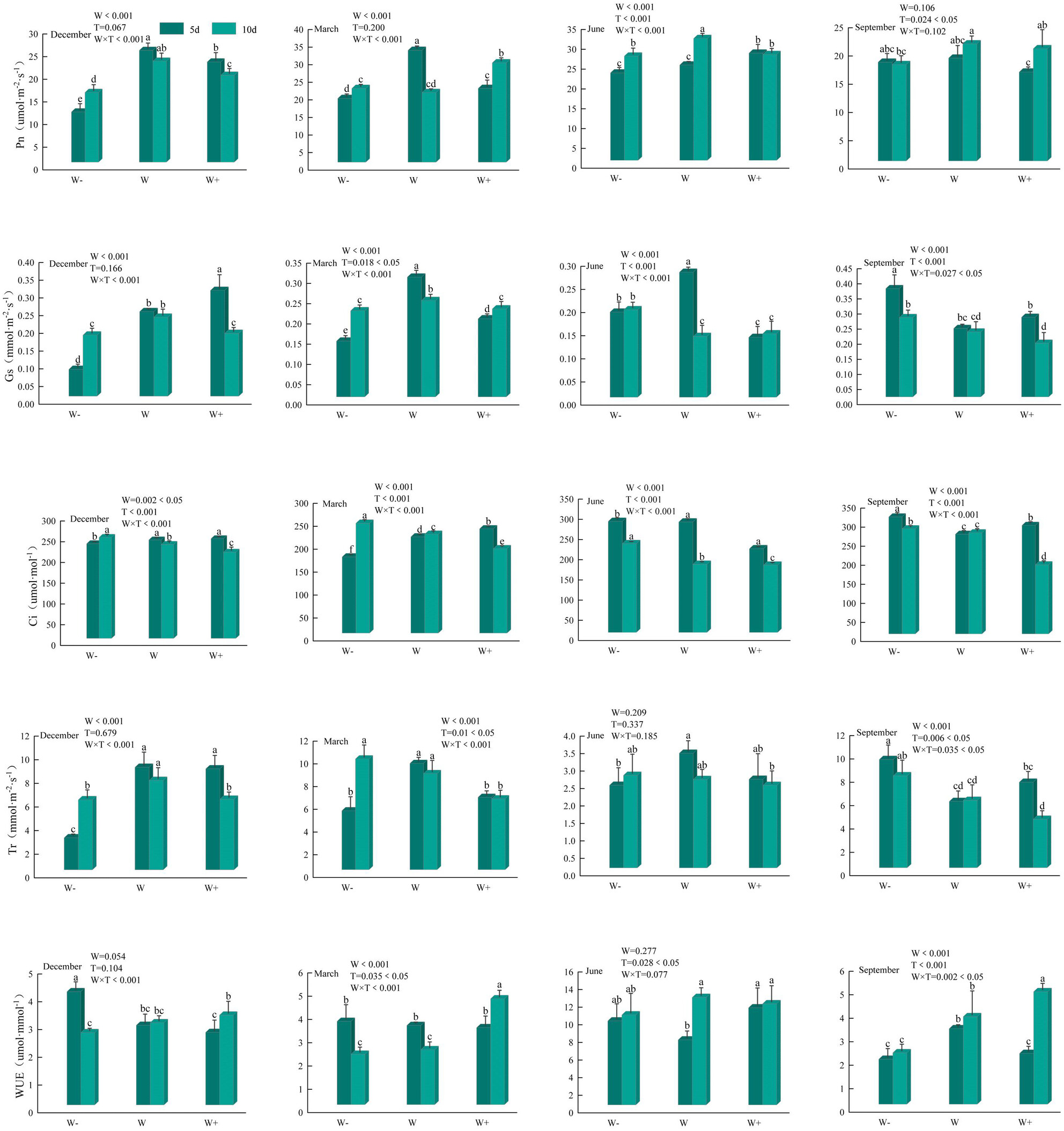
Global climate change has led to a shift in rainfall patterns. And as water is an essential ingredient for plant photosynthesis, shifts in rainfall patterns will inevitably affect plant growth. In this study, the response of leaf traits and photosynthetic fluorescence properties of Fraxinus malacophylla seedlings to rainfall patterns during the dry and rainy seasons was investigated using a natural rainfall duration of 5 days (T) and an extended rainfall duration of 10 days (T+) as rainfall intervals; and a monthly average rainfall as control (W), with the corresponding rainfall treatments of a 40% increase in rainfall (W+) and a 40% decrease in rainfall (W−).
Male Reproductive Traits Display Increased Phenotypic Variation in Response to Resource Quality and Parental Provisioning in a Tropical Rainforest Dung Beetle, Onthophagus c.f. babirussa
- First Published: 14 October 2024
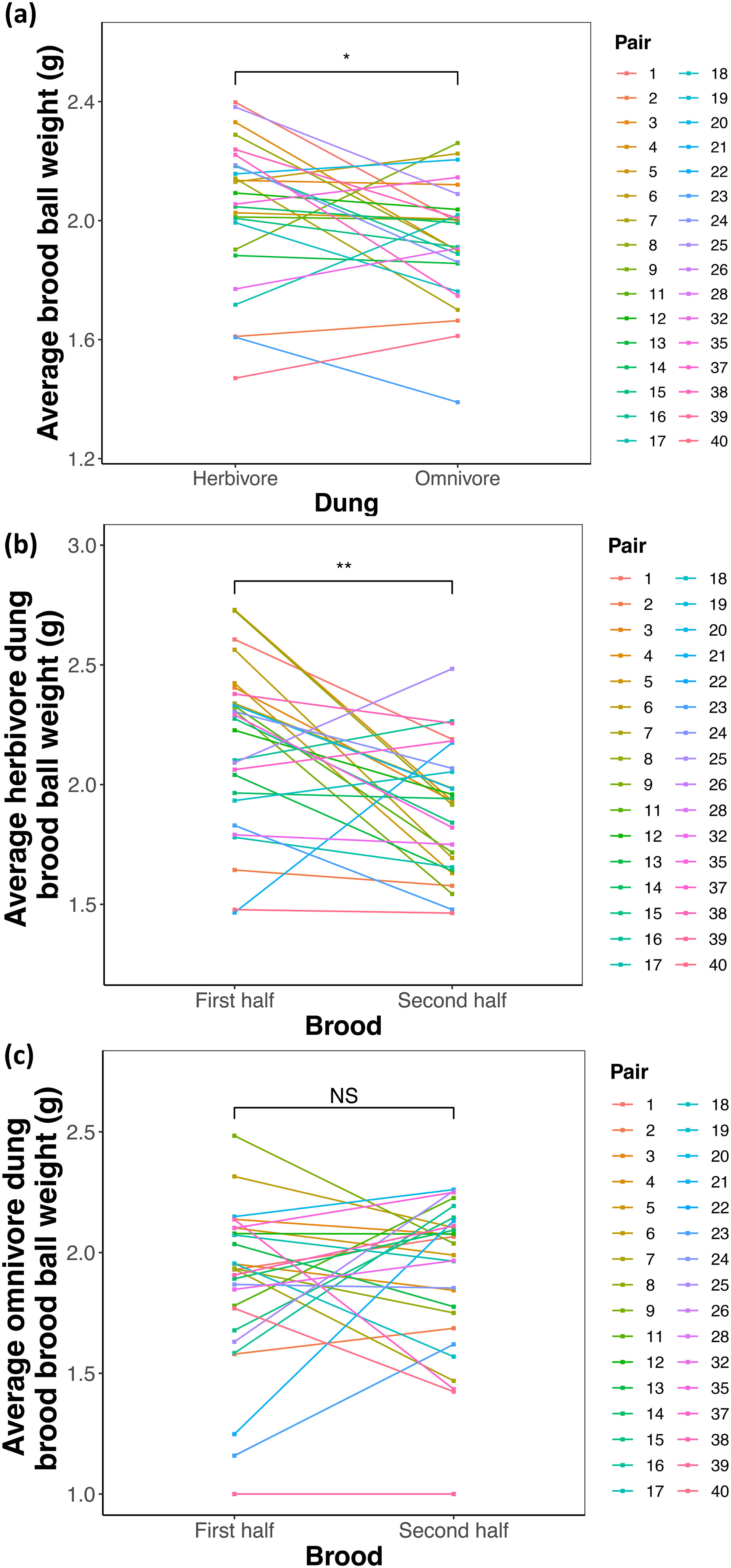
We investigated the effects of resource quality and parental provisioning in the phenotypic expression of sexual and non-sexual traits in a rainforest dung beetle, Onthophagus babirussa (Eschscholtz, 1822) from Singapore. ‘Higher quality’ dung resulted in offspring exhibiting greater phenotypic fitness, and mother beetles compensated dung quality with the dung amount when using ‘lower quality’ dung. Genotype-by-environment interactions between parental lines (genotype) and dung type (environment) affected male body size and horn length only, suggesting sex-specific variance in plasticity associated with sexually selected precopulatory traits.
Diversity of Orchid in Abies nephrolepis Nature Reserve in Shanxi, China
- First Published: 14 October 2024
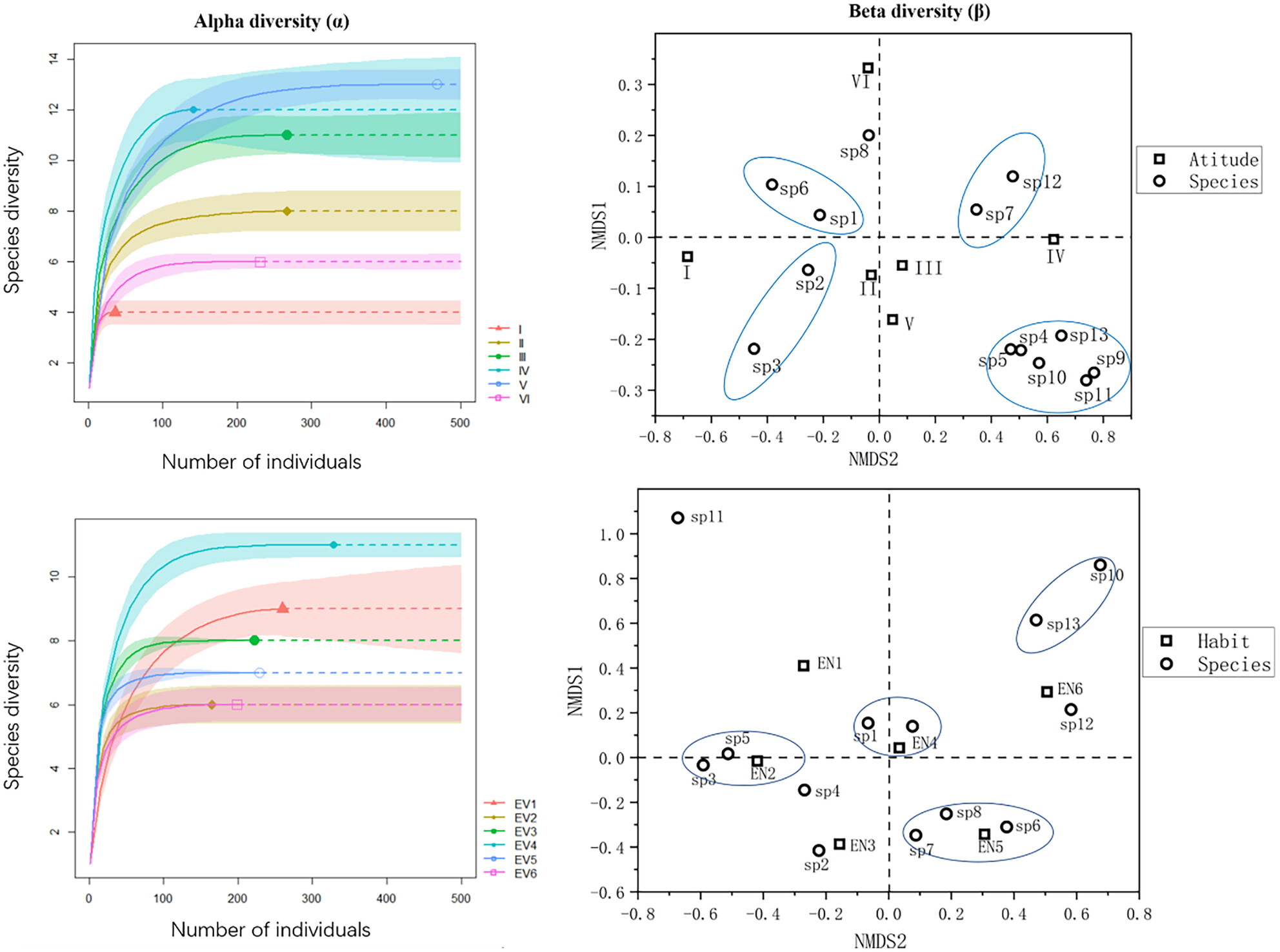
Nature reserves are important bases for global biodiversity research and conservation. To conduct in-depth research on biodiversity conservation and to maintain the ecosystems on which human beings depend for their survival, we took Abies nephrolepis Reserve as the object of research, conducted a special survey on orchids, and analyzed the characterization of the diversity of orchids in different habitats and on different altitudinal gradients, and obtained very good results.
The Role of Geography, Diet, and Host Phylogeny on the Gut Microbiome in the Hawaiian Honeycreeper Radiation
- First Published: 16 October 2024
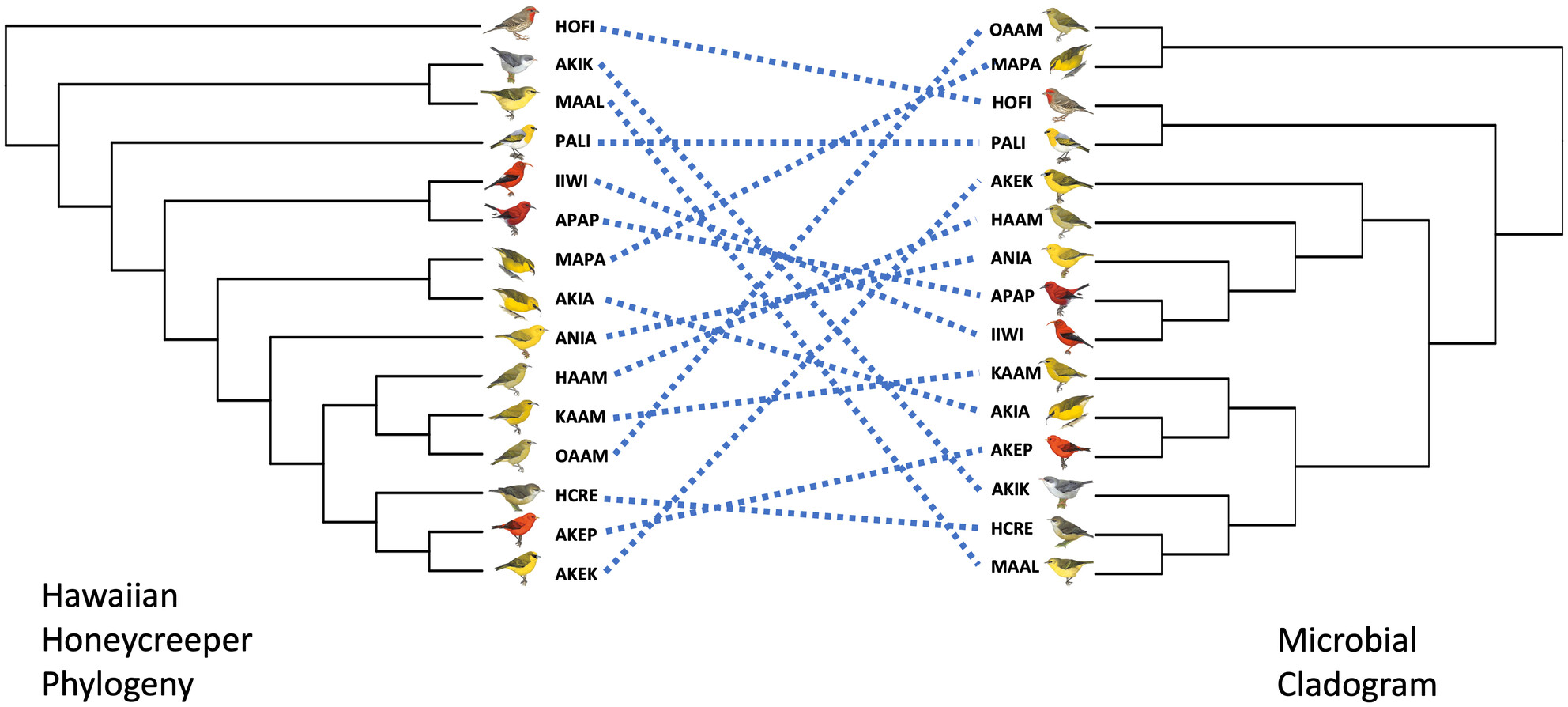
We investigated the roles of diet, geography, and genetic relatedness on the composition of the gut microbiome of an adaptive radiation of island birds. Using metabarcoding data, we determined that microbiome variation across birds was highly individualized; however, source island had a small but significant effect on microbiome structure.
Occurrence and Strength of Instantaneous and Intracohort Density-Dependence in Northeast Atlantic Fish Stocks
- First Published: 15 October 2024
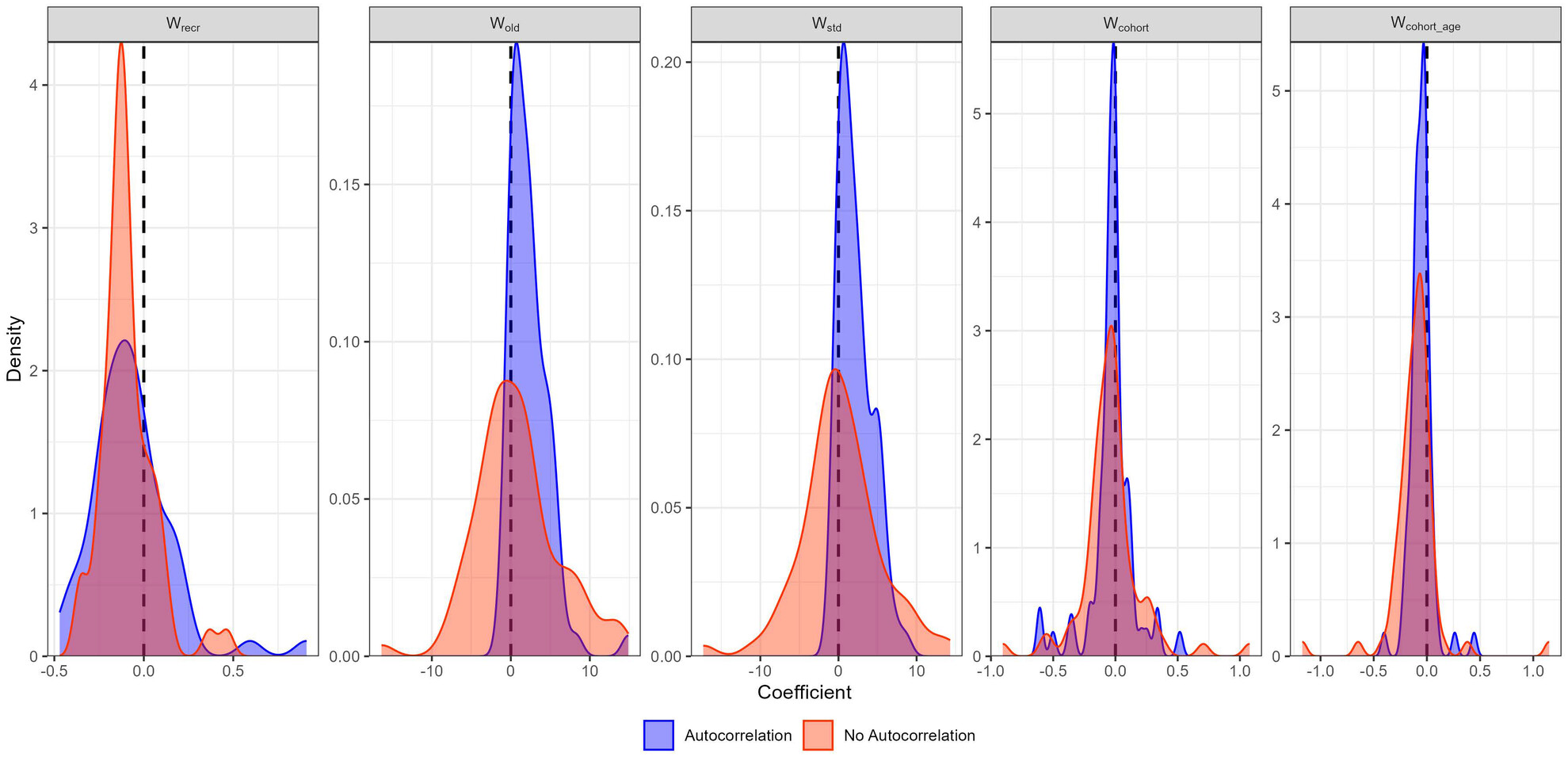
Around 80% of the tested key productivity parameters exhibit a positive global effect in somatic growth expressed as weight at age as opposed to the classic negative density-dependent relationship when instantaneous growth is analysed. The frequency and strength of density-dependence in weight at age is low and weak at the stock level when instantaneous growth is analysed. Significant temporal autocorrelation exists, which when not accounted for, reveals apparent density-dependence in several stocks when instantaneous growth is analysed. The frequency of detection of density-dependent weight at age increases when intracohort growth is analysed. However, even when considering intracohort growth, spurious density-dependence in several stocks is detected when temporal autocorrelation is not accounted for, with at best 15% of the stocks exhibiting significant classic negative density-dependence. Consequently, management practices that aim to fish down stock biomass with the anticipation of triggering density-dependent growth, will be associated with greater asymmetric risks than keeping biomass at levels where replacement yield does not rely on it.
Dietary Niche Variation in an Invasive Omnivore: The Effects of Habitat on Feral Pig Resource Use in Hawai‘i
- First Published: 16 October 2024
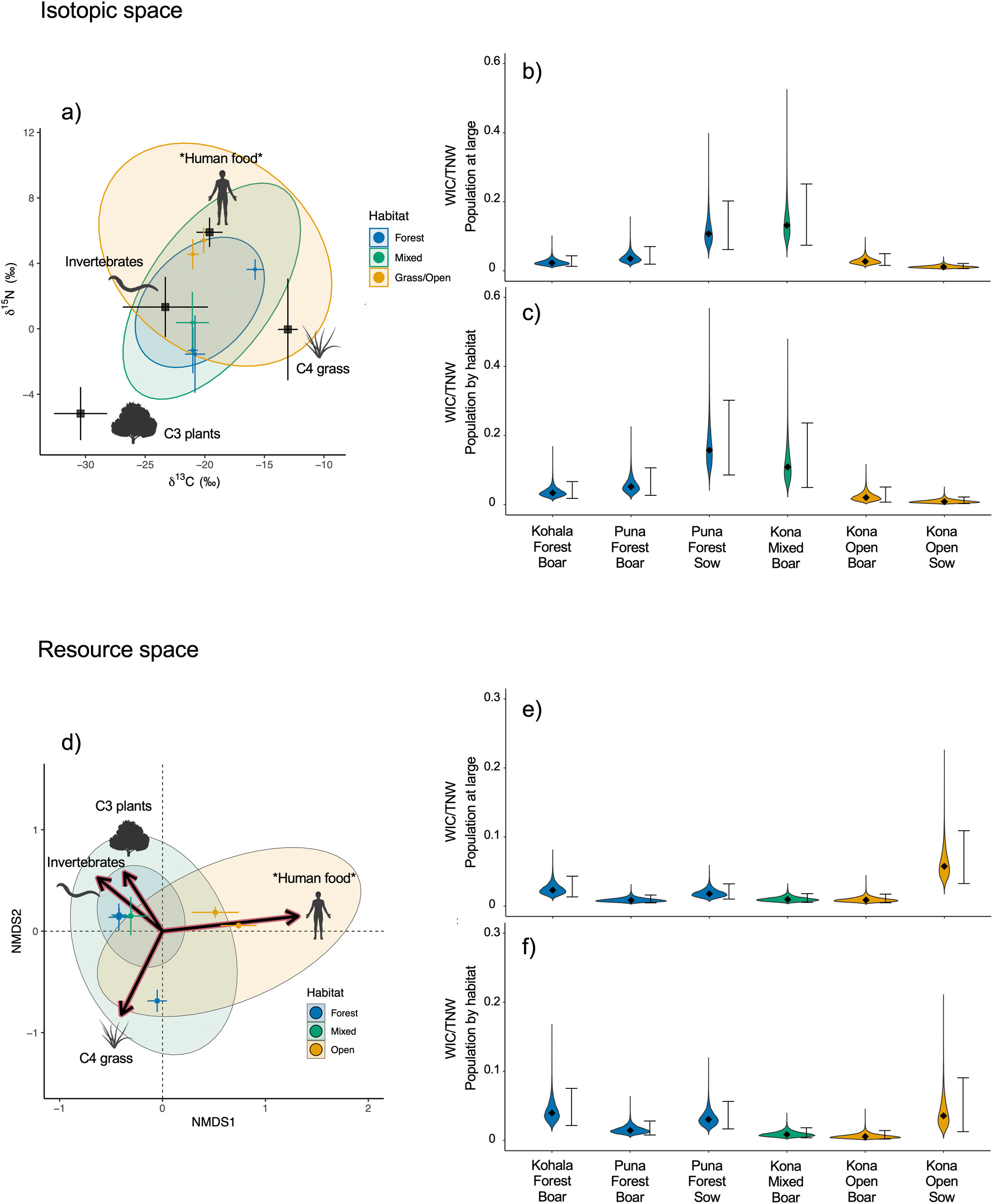
We investigated the feral pig dietary niche on Hawai‘i Island using stable isotopes (13C and 15N) and Bayesian mixing models to identify drivers of variation in resource use. Primary differences in resource use were between pigs in forest and open habitat, largely driven by 15N enrichment in open habitat, likely as a consequence of shifting protein sources. We found evidence for substantial individual diet specialization, likely as a result of strong intraspecific competition from high population sizes.
GENETICS NOTES
Characterization of the Complete Mitochondrial Genome of Pleurogenoides japonicus (Digenea, Pleurogenidae): Comparison With the Members of Microphalloidea and Phylogenetic Implications
- First Published: 16 October 2024
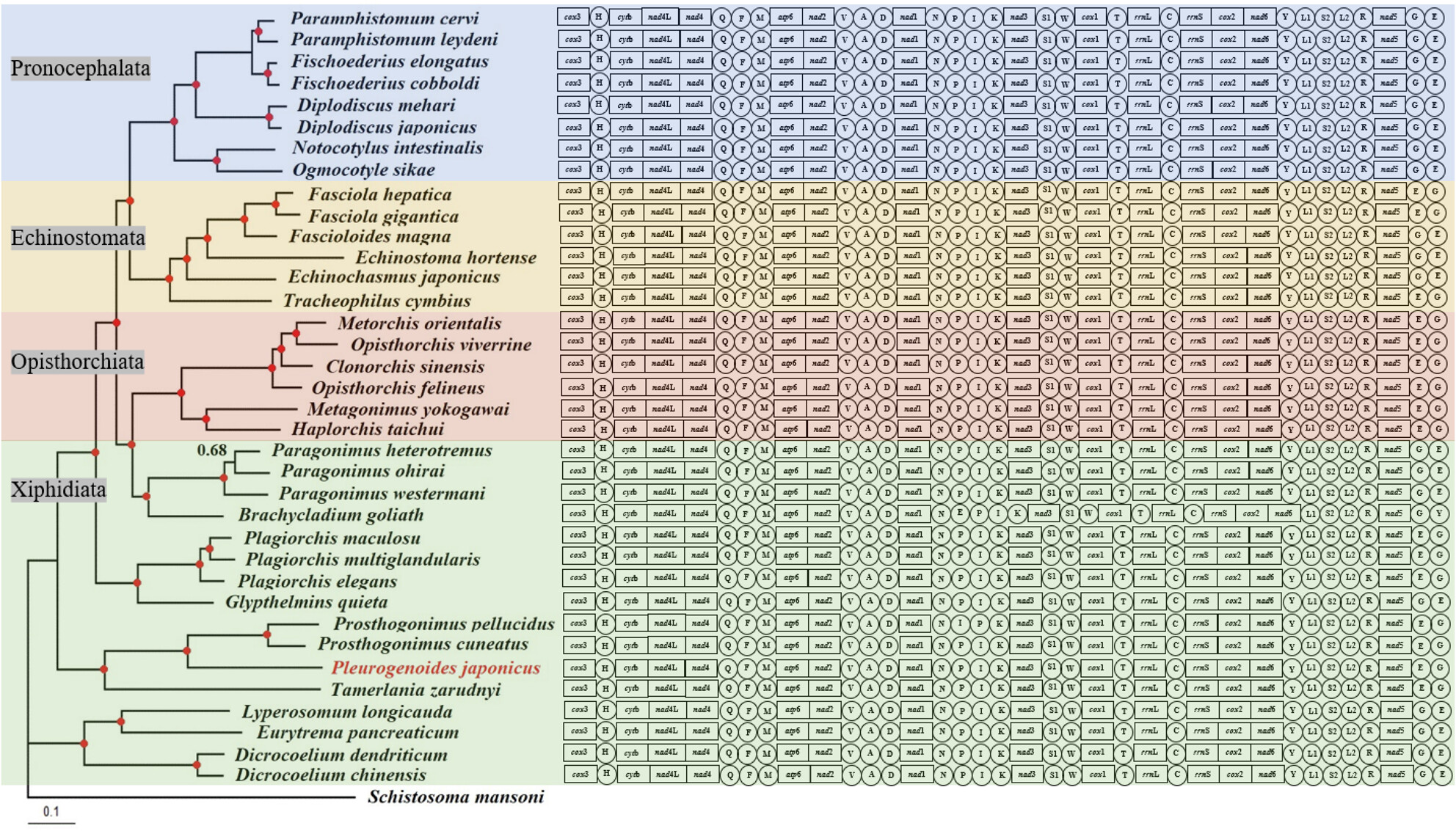
We determined the complete mitochondrial genome of Pleurogenoides japonicus, being the first described of the family Pleurogenidae. The gene arrangement types of Xiphidiata trematodes are diverse, and the gene arrangement events mainly occurred in “trnE-trnG” and “trnG-trnE”. Our phylogenetic analyses revealed that Pleurogenidae was cluster to Prosthogonimidae than Eucotylidae.
RESEARCH ARTICLE
Morphological Traits Are Not Consistently Related to Population Size in Four Migratory Caribou Populations Across North America
- First Published: 15 October 2024
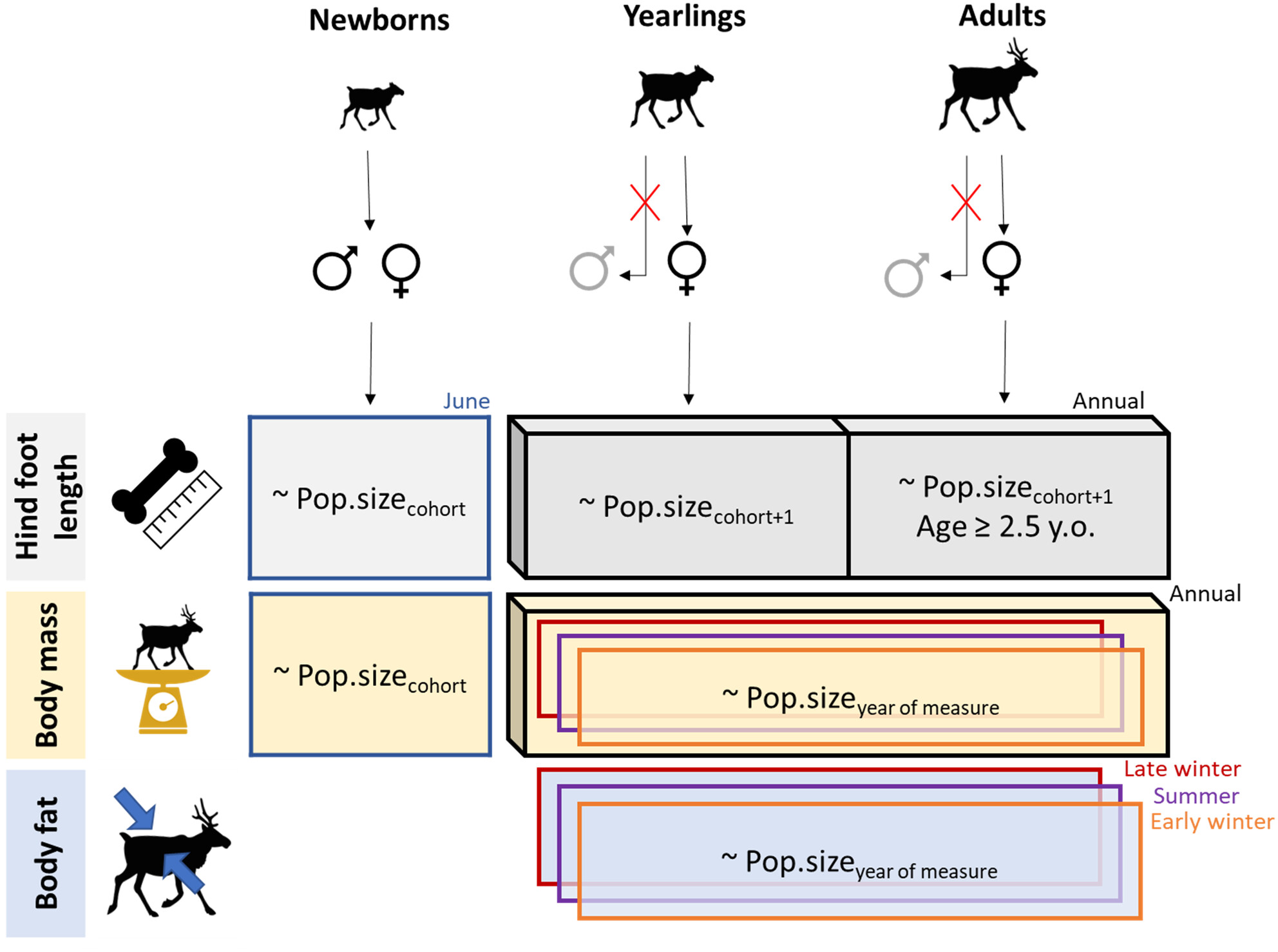
We tested the relationships between three morphological traits and population size in four Rangifer tarandus herds in northern Canada and Alaska. Based on 8865 measurements of 4473 individuals over four decades, we conclude that without prior information on population trends, morphological data in most cases should not be used to predict population size.
Accounting for effects of growth rate when measuring ecological stability in response to pulse perturbations
- First Published: 17 October 2024

We present results from theoretical models and empirical data to illustrate how differences in growth rates among taxa influence four widely used metrics of ecological stability of species abundances responding to pulse perturbations: resilience, recovery, resistance and temporal stability. To account for these influences on growth rate, we introduce ‘intrinsic’ stability metrics. Intrinsic stability can be used to summarise the overall effects of a disturbance, separately from internal recovery processes – thereby allowing more general comparisons of disturbances across organisms and contexts.
NATURE NOTES
Fight, retreat, repeat: The male–male agonistic behavior in the wood-feeding cockroach, Panesthia angustipennis spadica (Dictyoptera: Blattodea: Blaberidae)
- First Published: 17 October 2024
A Case of Facultative Polygyny in an Enigmatic Monogamous Species, the European Nightjar (Caprimulgus europaeus)
- First Published: 17 October 2024
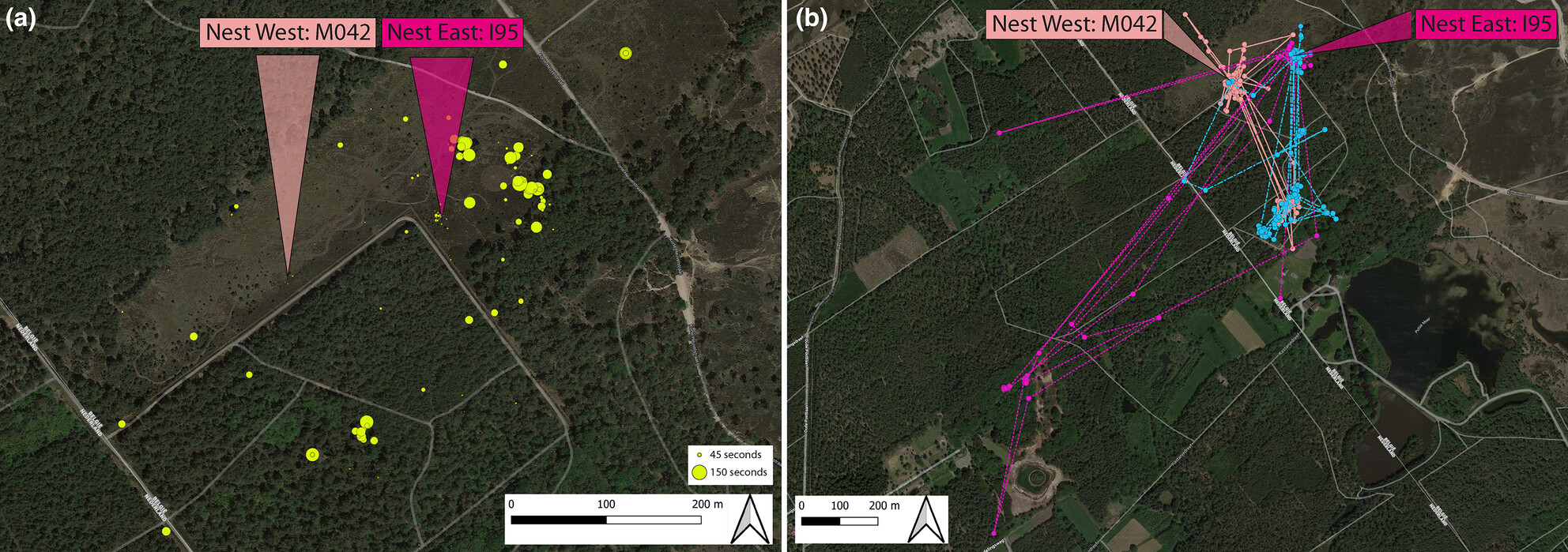
We provide information about a case of facultative polygyny in the European Nightjar (Caprimulgus europaeus). The male nightjar (I96) formed a pair with two females (I95: the presumed primary female with whom he already bred since 2018; M042: the presumed secondary female, an inexperienced yearling). GPS and accelerometer data demonstrate how the male only sang in proximity of the primary nest, while assisting both females during incubation, as well as during the nestling period.
RESEARCH ARTICLE
Improving Inference Within Freshwater Community Studies: Accounting for Variable Detection Rates of Amphibians and Fish
- First Published: 16 October 2024
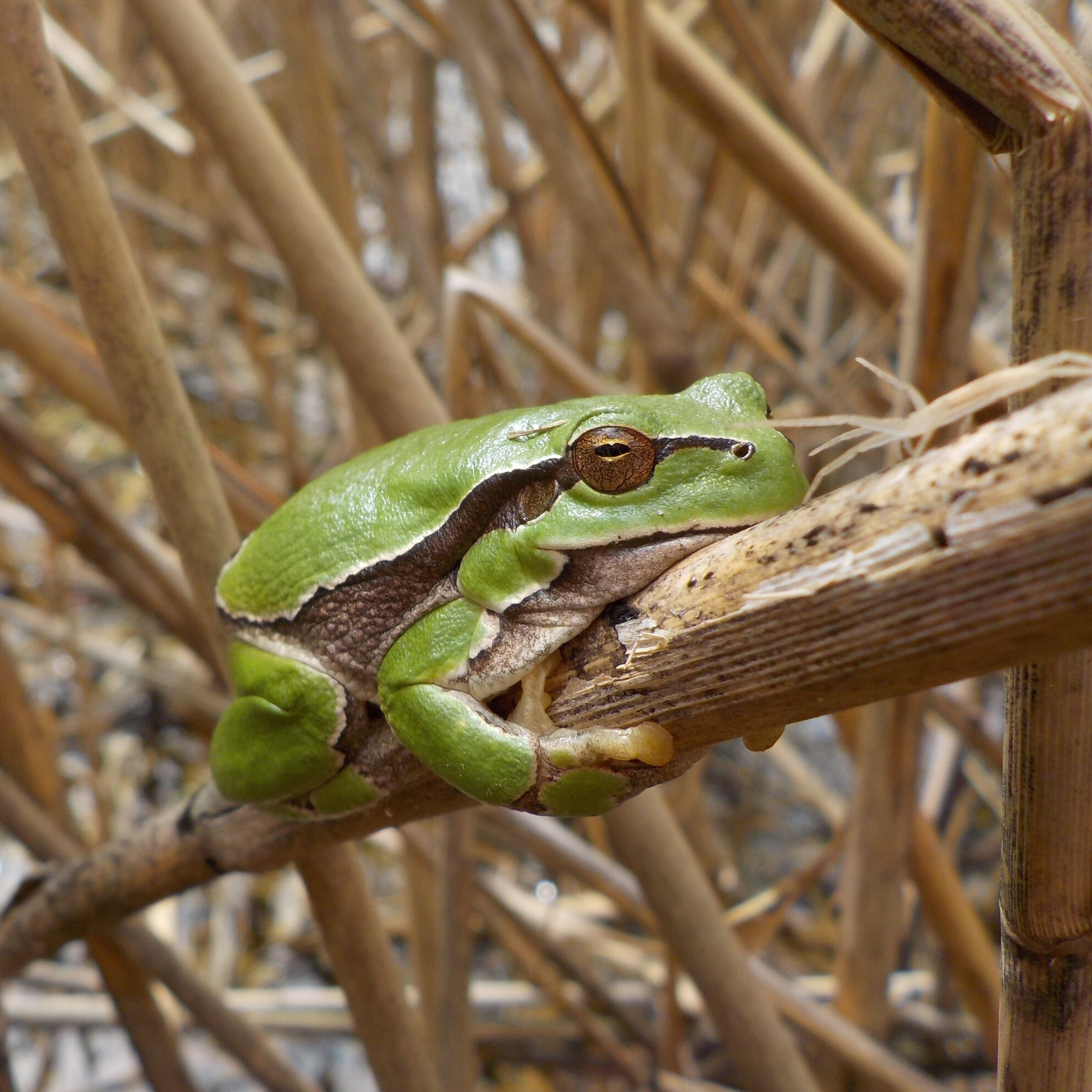
We used three sampling methods at freshwater ponds to survey amphibian and fish communities in an urbanised landscape. We found highly variable detection probabilities among nine amphibian species and higher detection rates for fish. The detection of fish at a pond reduced the probability of detecting amphibians. However, emergent vegetation decreased the chance of detecting fish while increasing the probability of detecting amphibians. Our results underscore the importance of accounting for imperfect detection when assessing amphibian-fish relationships.
NATURE NOTES
Biological Characteristics of the Glacier Lantern Fish Benthosema glaciale (Myctophidae) in Icelandic Waters and the Irminger Sea During Summer
- First Published: 17 October 2024
VIEWPOINT
Overlooked Bird Extinctions in Semideciduous Atlantic Forests
- First Published: 16 October 2024
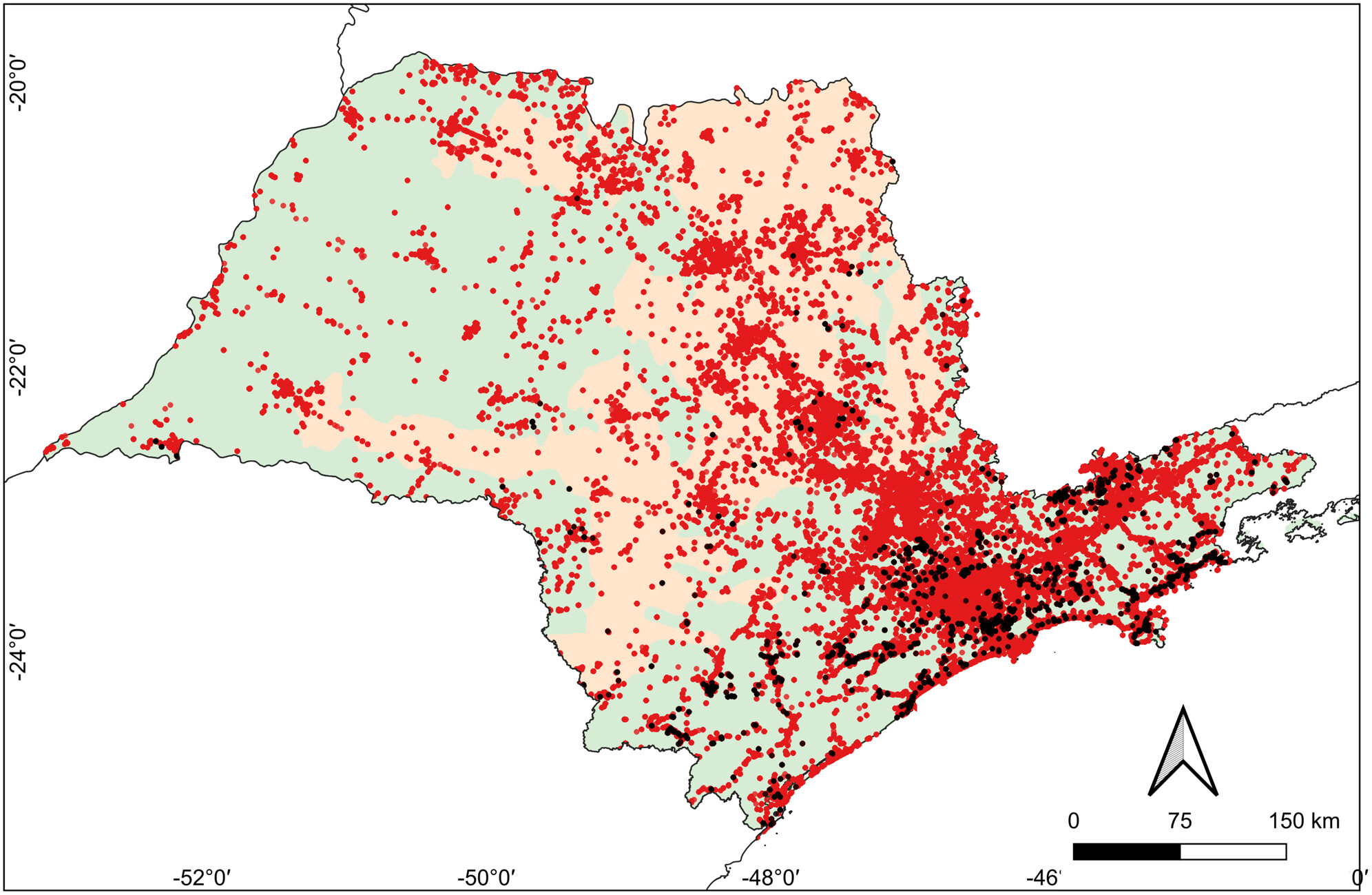
Due to near total deforestation in much of the Brazilian state of São Paulo in the early 20th century, essentially all non-coastal and not montane forest fragments today are regenerated. Before deforestation, most Atlantic Forest endemic bird species were found throughout the state, as demonstrated by museum specimens and the previous literature. Currently, endemics are not reported from western fragments, as illustrated by the recent literature (post-1990s), citizen science data and our recent field inventories.
RESEARCH ARTICLE
Post-Copulatory Sexual Selection in an Insect With High Levels of Mating Failure
- First Published: 16 October 2024
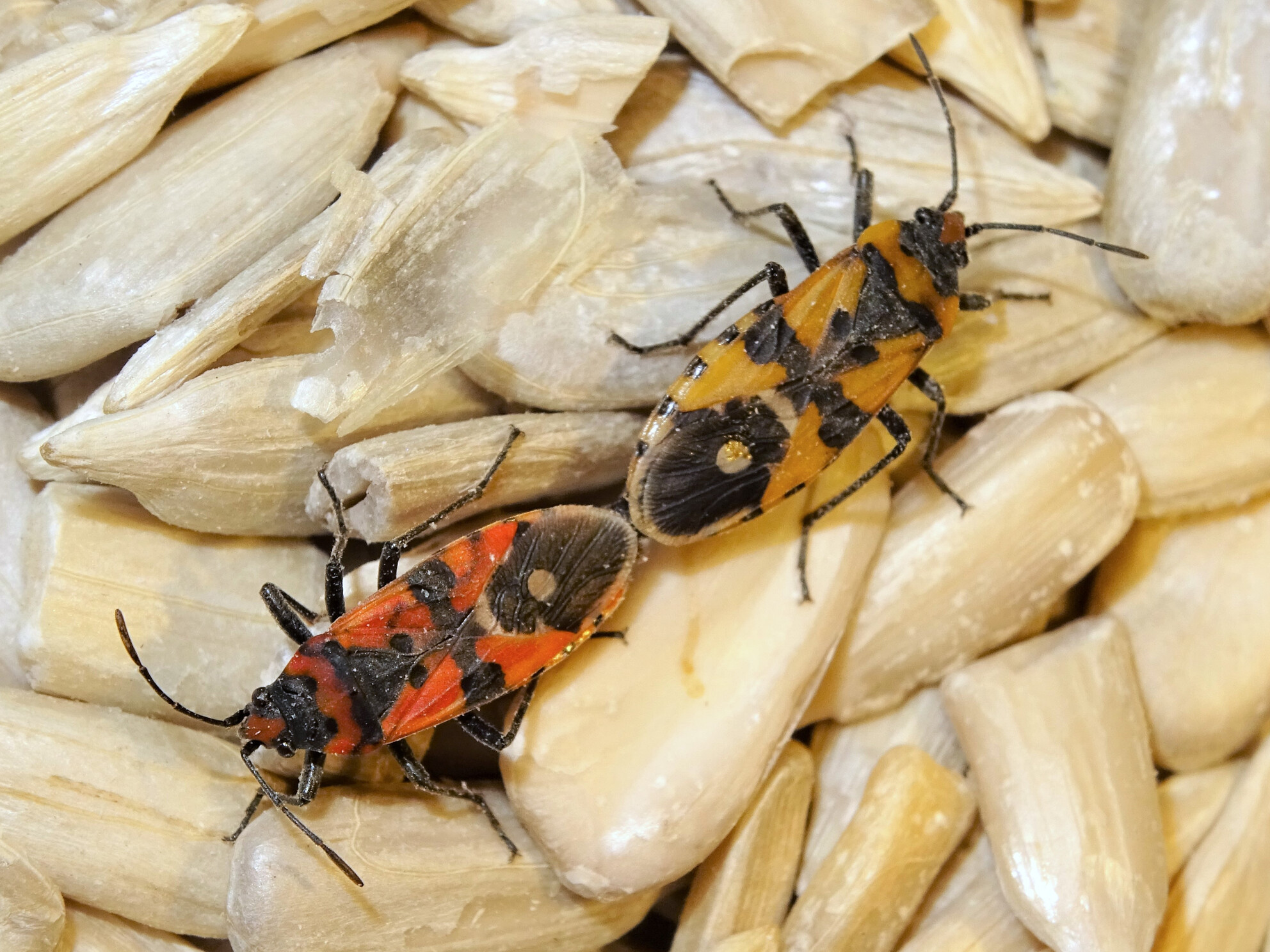
Here we consider how different processes of post-copulatory sexual selection interact in the seed bug Lygaeus simulans. We found that sperm competition outcomes were primarily driven by copulation duration, while larger females were more likely to receive sperm than smaller females, as predicted by cryptic male choice for large females. However, female size had little effect on paternity outcome in our double-mating experiment, suggesting that cryptic male choice and sperm competition are acting relatively independently in this species.
Relationship Between Genetic and Phenotypic Variations in Natural Populations of Perennial and Biennial Sagebrush
- First Published: 17 October 2024
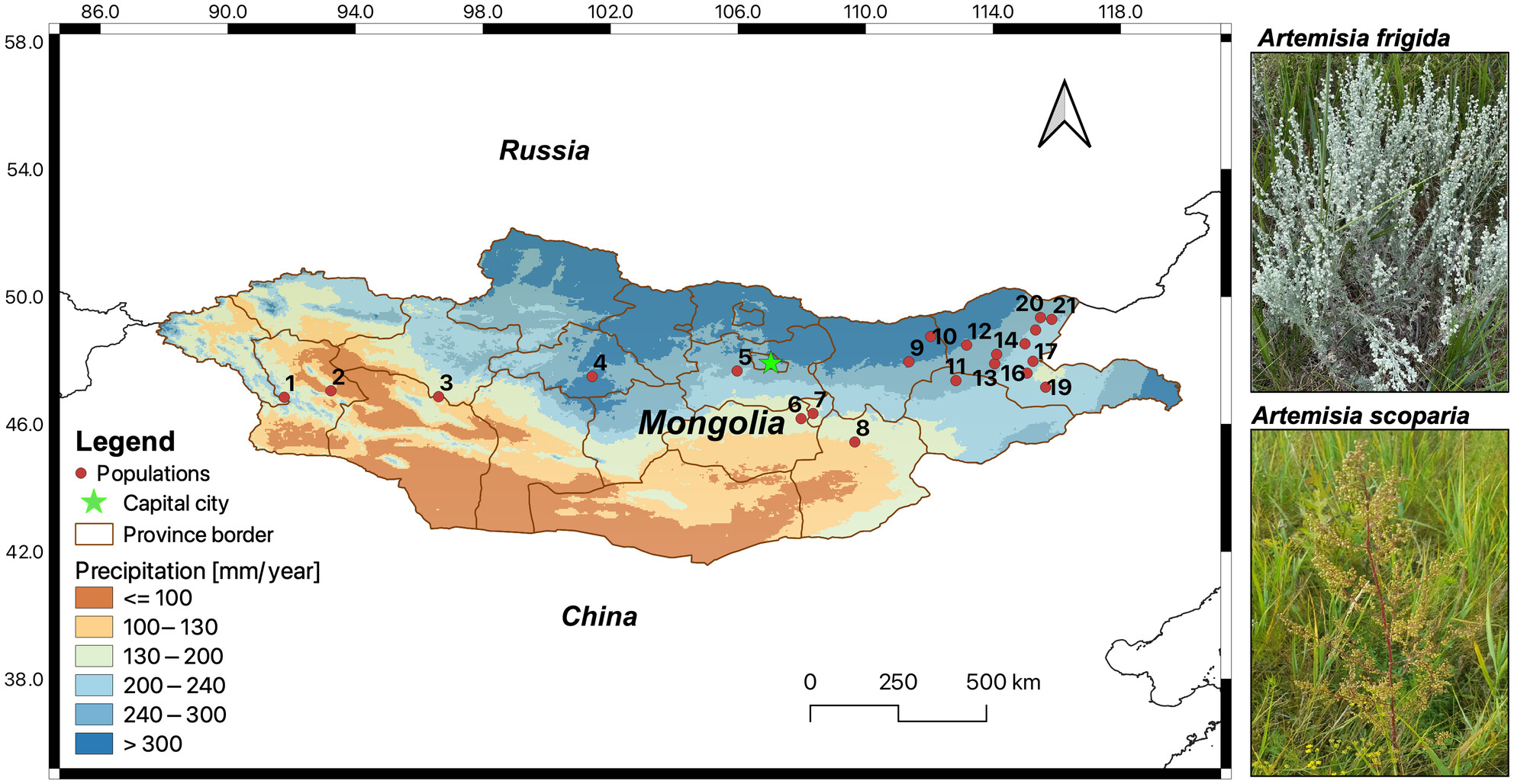
The present study investigated the relationship between variations in population genetics and functional traits of short- and long-lived Artemisia species that are co-occurring in the steppes of Mongolia. We covered large spatial extent and collected numerous environmental variables (climate, geography, vegetation, and soil) to contrast the association between variations of functional traits and genetic diversity of the chosen species.
Antagonistic Effects of Light Pollution and Warming on Habitat-Forming Seaweeds
- First Published: 16 October 2024
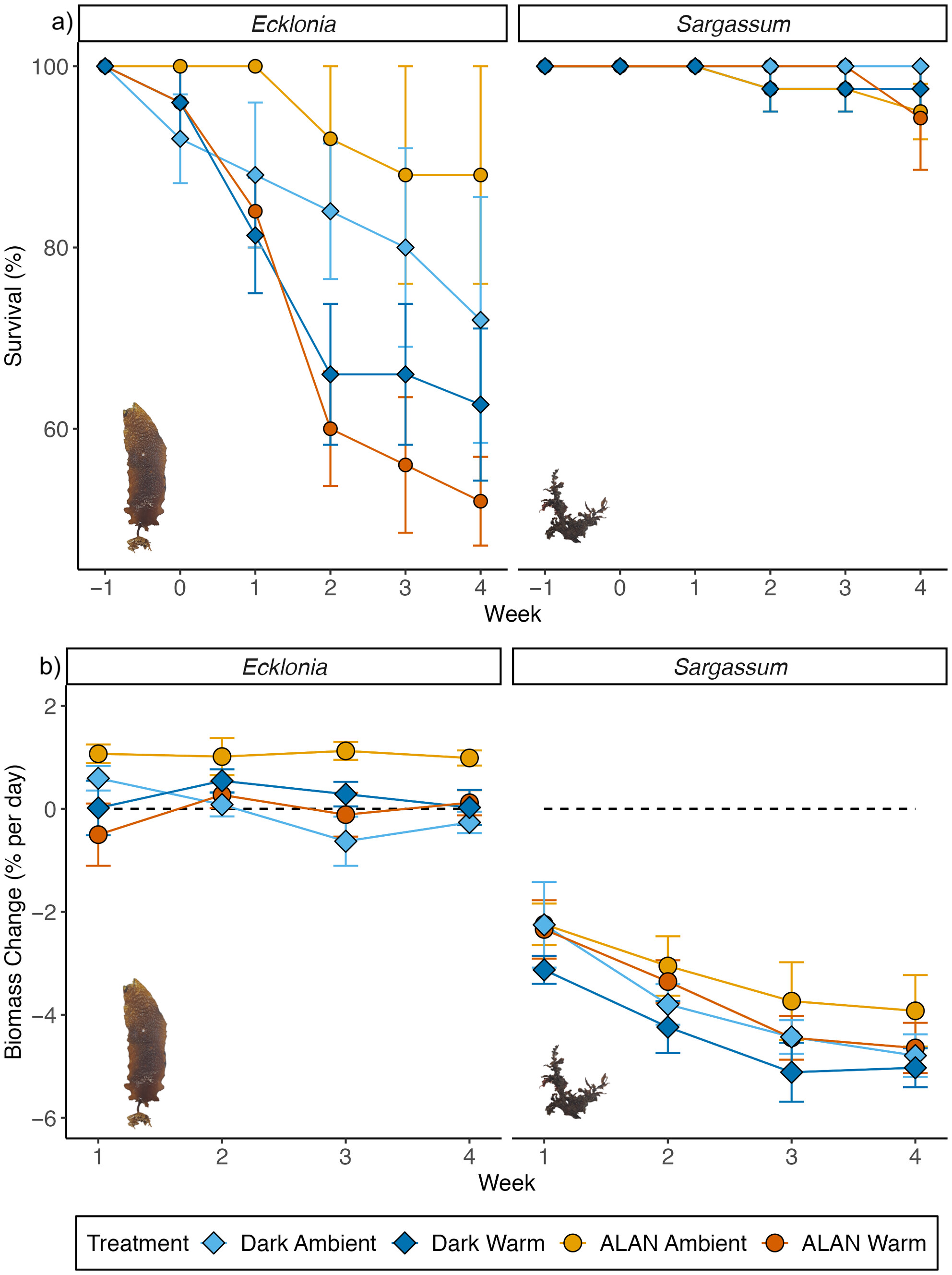
Artificial Light at Night (ALAN) is an emerging global stressor that is likely to interact with ocean warming to affect ecological functions. Seaweeds are dominant habitat-forming species in temperate marine ecosystems, where they support primary productivity and diverse ecological communities. We manipulated ALAN and warming to look at their independent and interactive effects on two species of seaweeds. ALAN increased some seaweed growth metrics; however, these effects were species-specific and were largely counterbalanced by warming.
Egg Size Scales Negatively With System Size in a Periodic Fish Species
- First Published: 17 October 2024
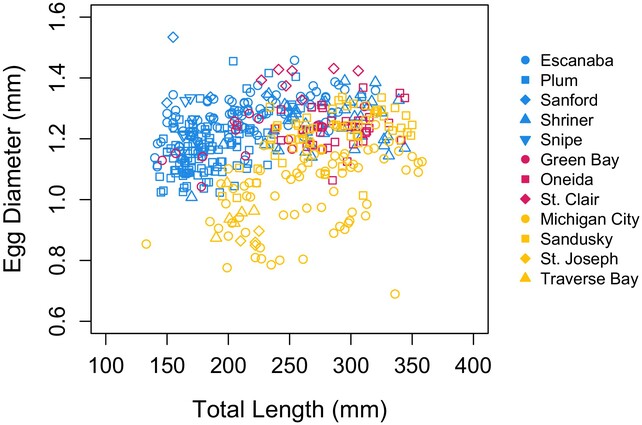
Past studies have found freshwater fishes produce larger eggs on average than marine fishes. However, such comparisons may be complicated by life history and morphological variation among species. In this study, yellow perch egg size was compared among populations in systems ranging six orders of magnitude in surface area to test the relationship between egg size and system size within a single species.
Megabenthic Diversity Patterns on a Seamount in the Philippine Sea: Implications for Conservation Planning on the Kyushu-Palau Ridge
- First Published: 17 October 2024
We conducted a detailed study of a seamount in the Philippine Sea and analyzed the patterns of variation and factors controlling the beta diversity of the benthic community.
COVERater—A Free Application for Training Researchers to Accurately Estimate Species Cover in Terrestrial and Aquatic Ecosystems
- First Published: 16 October 2024
GENETICS NOTES
Zingiber baumii Chatan & Promprom: A New Species of Zingiberaceae From Thailand
- First Published: 17 October 2024
RESEARCH ARTICLE
Globally Distributed Arbuscular Mycorrhizal Fungi Associated With Invasive Cinchona pubescens on Santa Cruz Island, Galápagos
- First Published: 17 October 2024
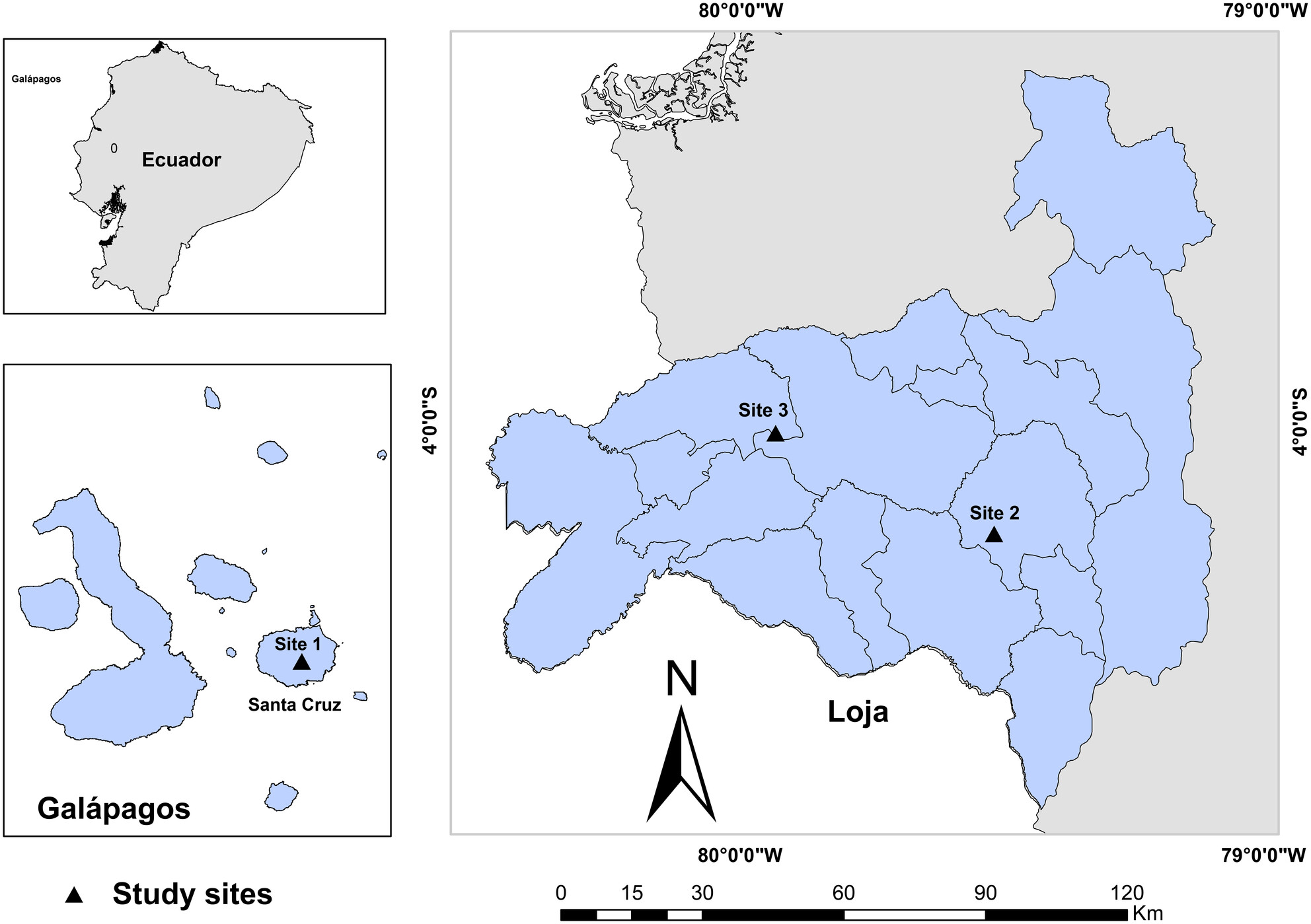
Arbuscular mycorrhizal fungi (AMF) are crucial for plant survival and may influence the success of invasive species. This study investigated the AMF communities associated with the invasive Cinchona pubescens on Santa Cruz Island, Galápagos, and in its endangered native range in Ecuador. The AMF communities between Santa Cruz and mainland Ecuador were significantly different, suggesting that the successful invasion of C. pubescens on Santa Cruz could have been facilitated by local generalist AMF and not by particular AMF.
REVIEW ARTICLE
Toward a Functional Trait Approach to Bee Ecology
- First Published: 18 October 2024
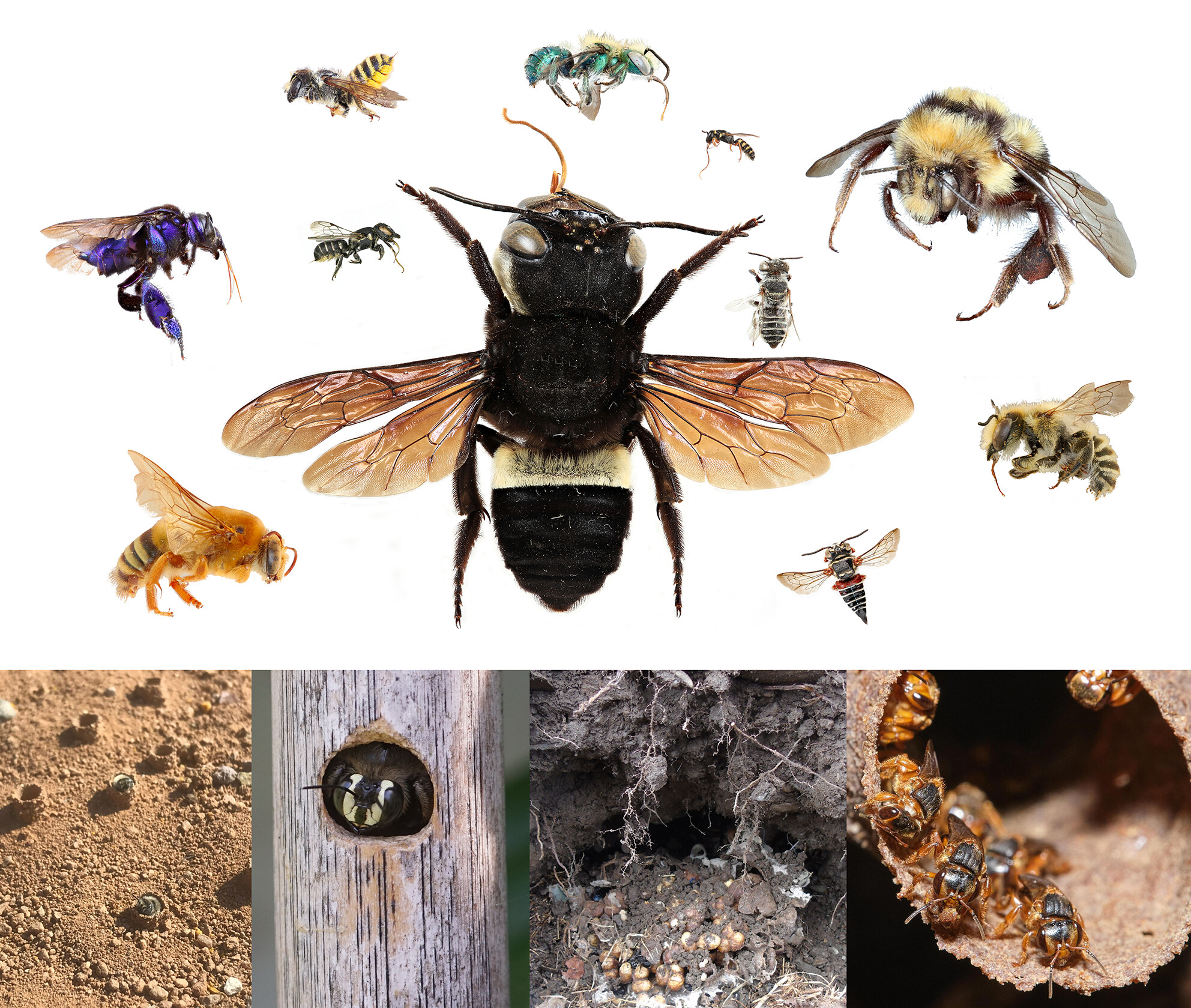
Functional traits are increasingly being used as a tractable framework for understanding bee community ecology and responses to environmental change. Here, we outline best practices for trait measurement and standardization in line with open science principles, to facilitate large-scale trait data sharing to advance bee functional ecology.
RESEARCH ARTICLE
Spatial Risk Effects From Lions Compound Impacts of Prey Depletion on African Wild Dogs
- First Published: 18 October 2024
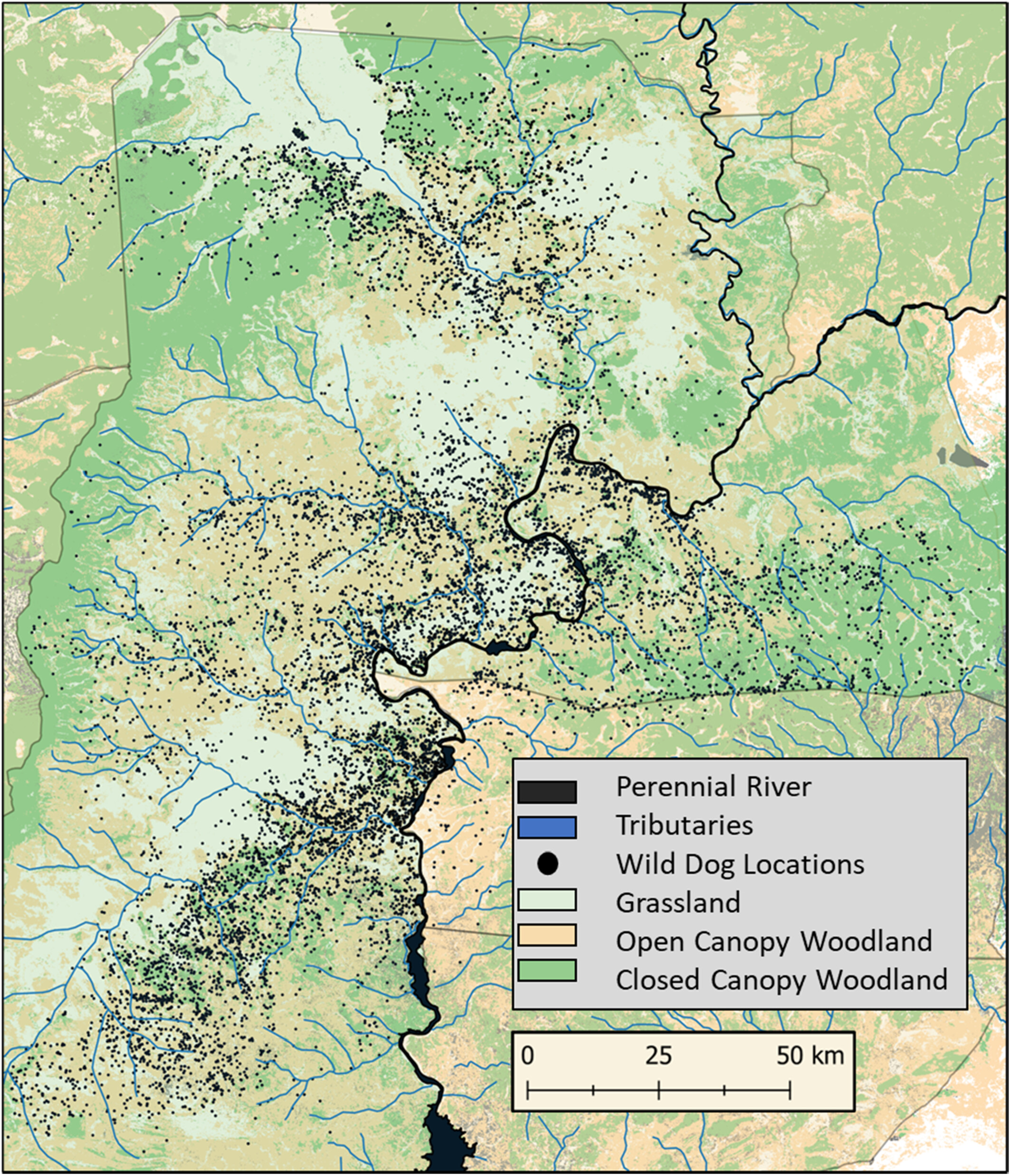
Spatial avoidance of lions by wild dogs has never been tested in a prey and lion-depleted ecosystem. We found that wild dogs continue to avoid lions and prey even though both have been reduced. Mechanistically, this helps to explain the lack of competitive release of wild dog populations when lions are reduced as a result of prey depletion.
Integrating Population Genetics With Long-Term Environmental Monitoring to Evaluate and Guide Vernal Pool Creation for Amphibian Conservation
- First Published: 19 October 2024
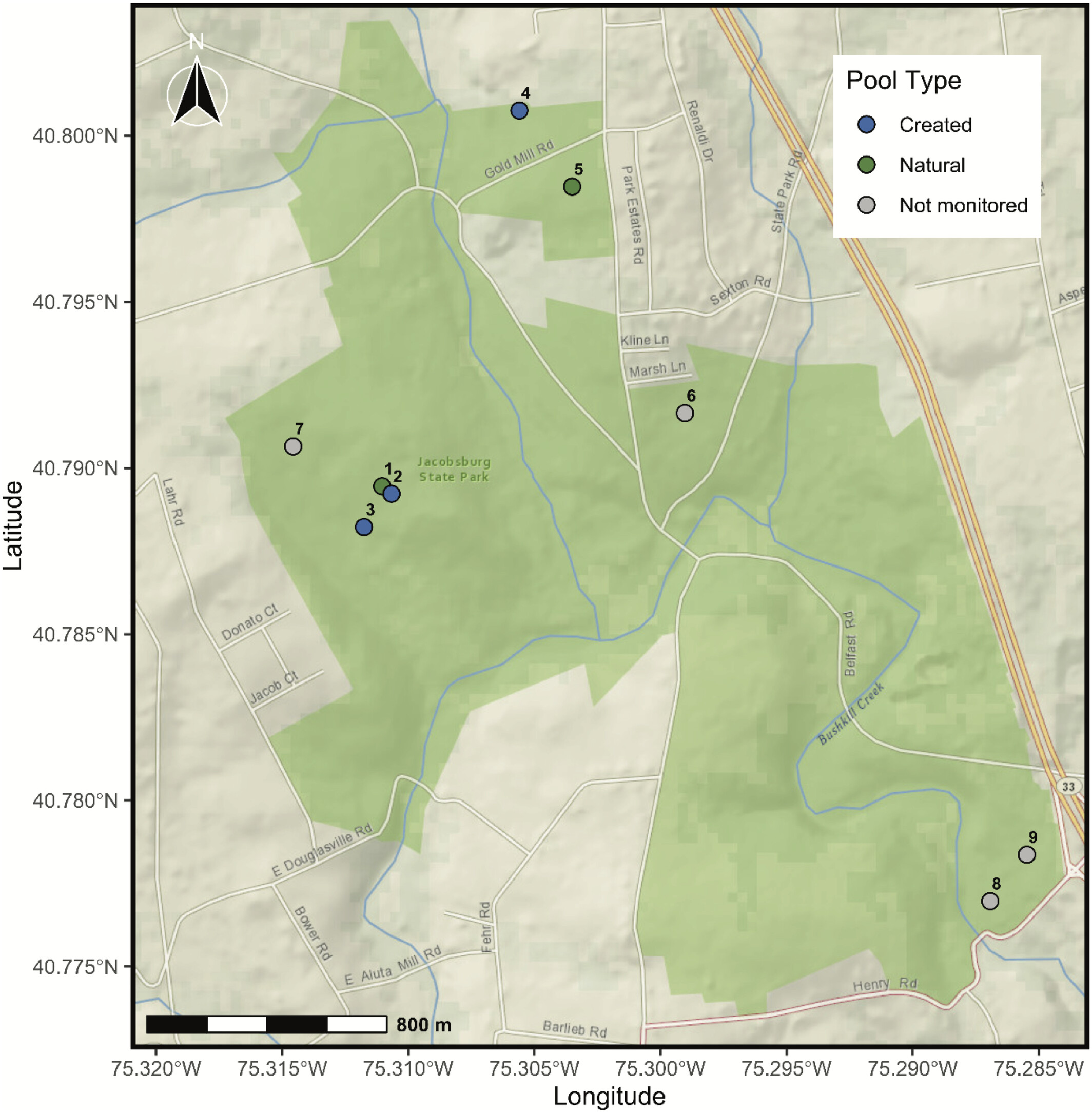
This study investigates the success of created vernal pools in sustaining local amphibian populations (i.e., wood frogs and spotted salamanders) in a Pennsylvania state park from 2014 to 2023. By comparing environmental parameters and genetic diversity between natural and created pools, we found that well-designed created pools positively contributed to wood frog population persistence, while one poorly designed pool acted as a population sink. Our findings underscore the importance of considering key environmental factors such as hydroperiod, volume, depth, and surrounding forest cover in vernal pool restoration while also integrating these data with population genetics to guide adaptive management strategies in the face of environmental change.
How Do Different Growth Forms of Winter Submerged Macrophytes Species Respond to Underwater Light Quality in a Mesocosm Study?
- First Published: 18 October 2024
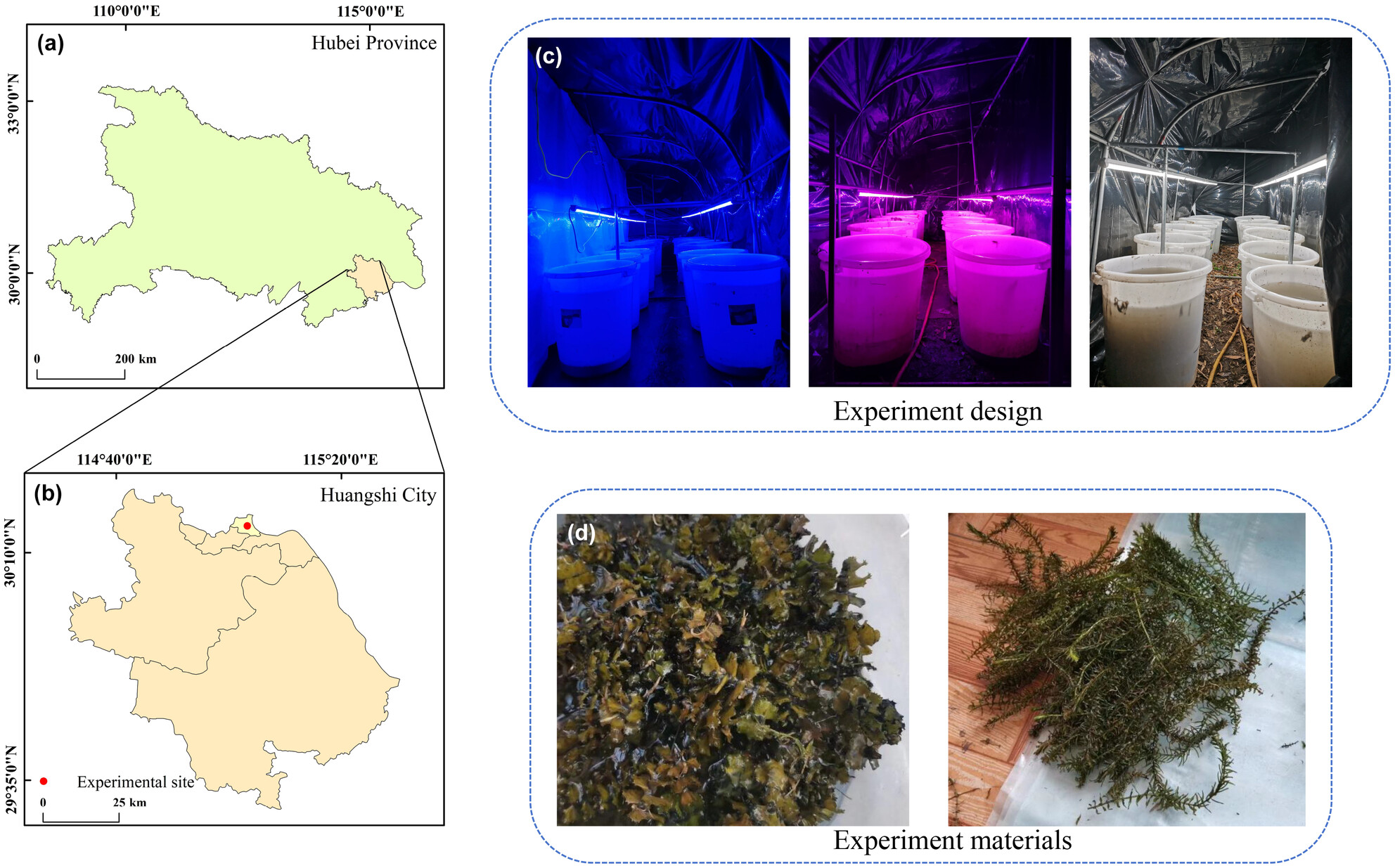
The responses of erect Potamogeton crispus (P. crispus) and low-canopy Elodea nuttallii (E. nuttallii) to six different light qualities (white light, R/B=1:8, 1:4, 1:1, 4:1, 8:1) were studied by a control experiment. The two different growth forms of submerged macrophytes both grew better under more red light (4:1, 8:1), and better adapted to the underwater light environment of eutrophic water dominated by red light. Compared to red light, more blue light (1:8, 1:4) was more conducive to the synthesis of photosynthetic pigments. Both P. crispus and E. nuttallii can be used in the treatment of eutrophic water dominated by red light, but other submerged macrophytes need to be supplemented after water quality improvement.
Decadal Changes in Population Structures of Rare Oak Species Quercus chungii
- First Published: 19 October 2024
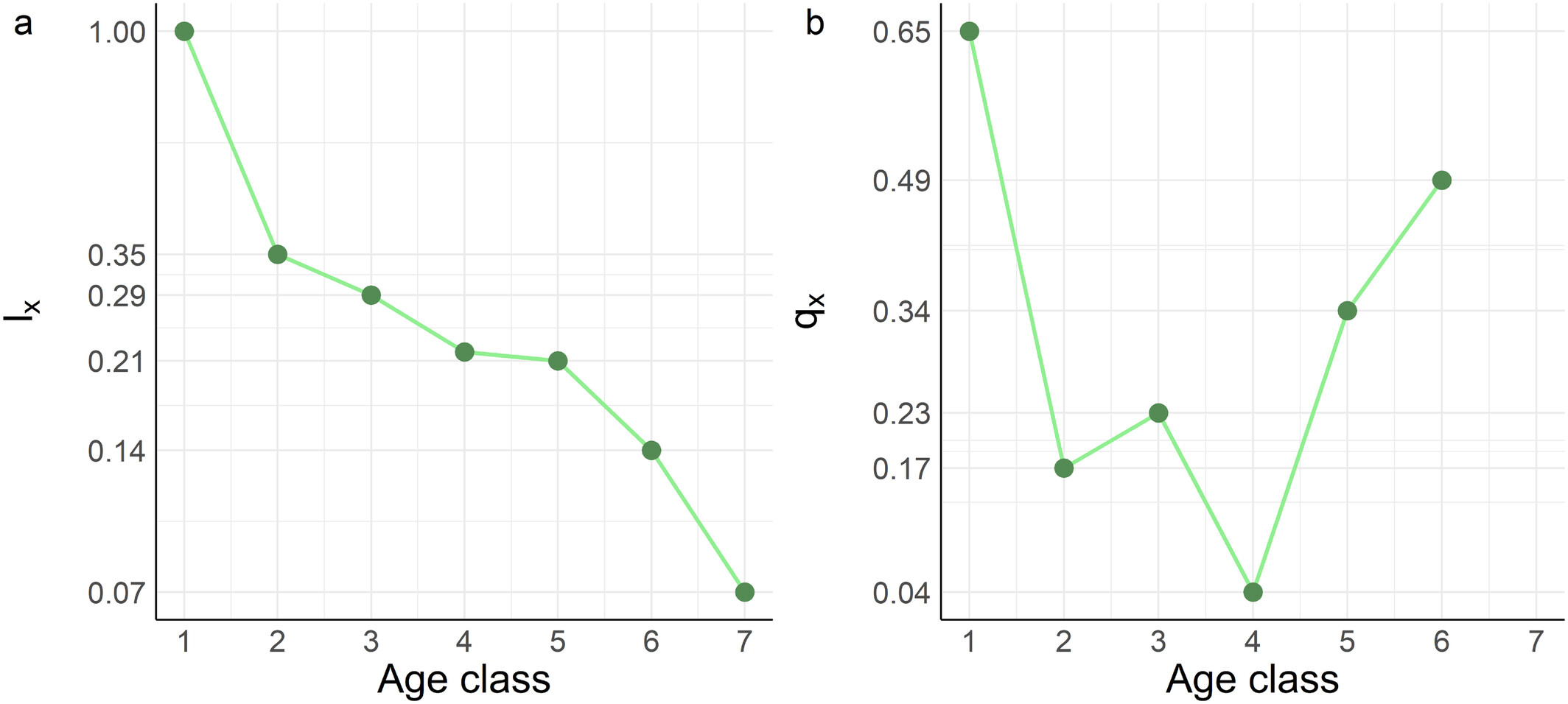
The endangered Chinese endemic tree species Quercus chungii showed increased abundance and size over the past decade in a nature reserve, indicating active regeneration and effectiveness of conservation efforts. However, its pyramid-shaped age structure with low numbers of seedlings and saplings suggests potential risks of future population decline, emphasizing the need for in-depth studies on regeneration processes.
Heatwave-Induced Paternal Effects Have Limited Adaptive Benefits in Offspring
- First Published: 20 October 2024

As the threat of climate change advances, understanding how extreme weather events influence wild populations is integral. Our study shows that heatwaves negatively influence not only male fertility in a freshwater fish, but also affect the offspring of heatwave-exposed parents. While heatwave-exposed males may confer limited adaptive benefits to their offspring, stronger detrimental maternal effects following heatwaves may override those benefits.
NATURE NOTES
Large, but Dispersal-Limited Populations of the Marsh Fritillary Euphydryas aurinia Persist on Abandoned Military Training Areas Three Decades After the End of the Cold War
- First Published: 22 October 2024
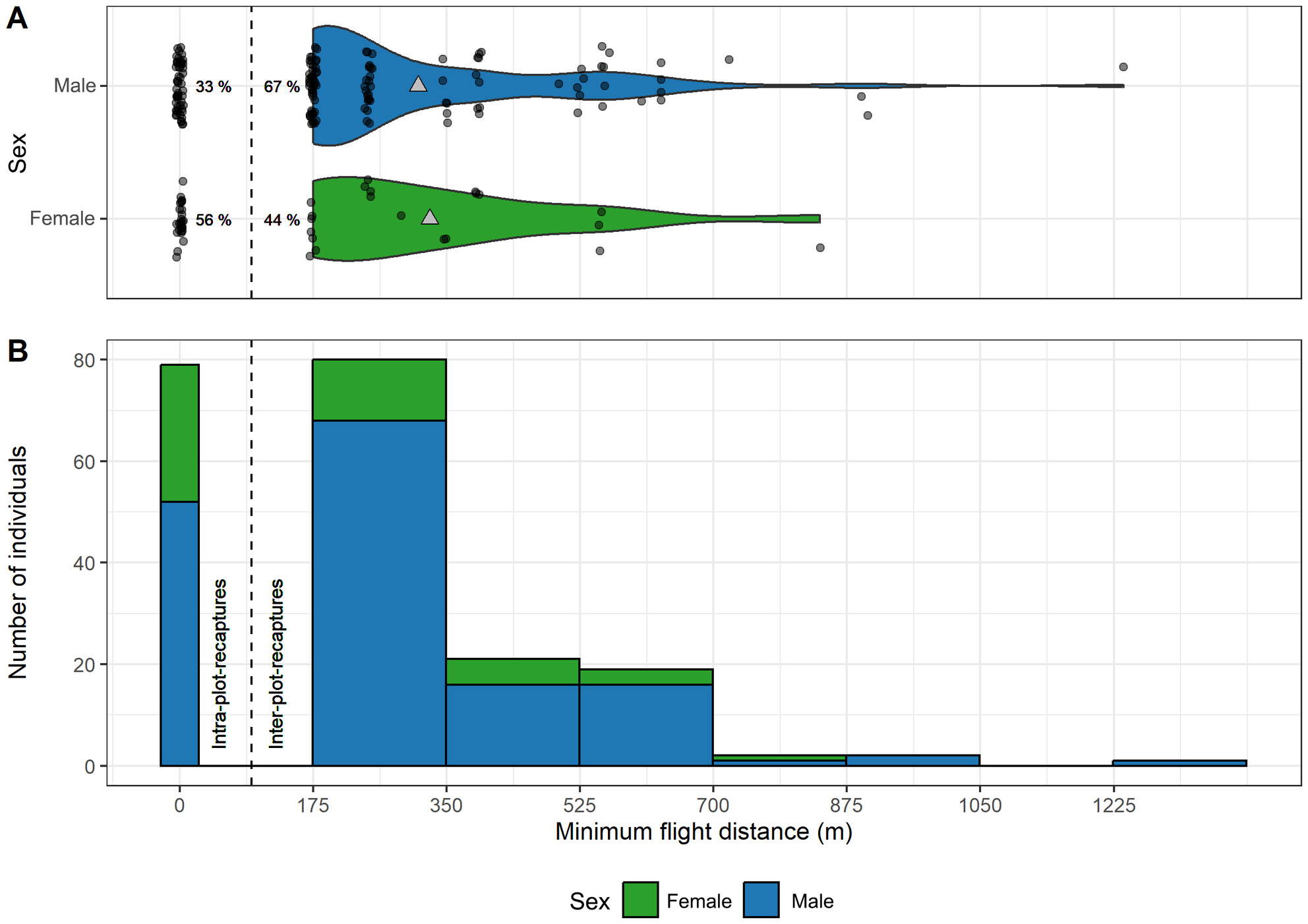
We here present population sizes and movement patterns of the endangered Marsh Fritillary based on an large-scale and very intensive capture–release–recapture study conducted on three former Central European military training areas. Our results suggest that against common belief, very large populations of the Marsh Fritillary can survive decades after land abandonment in former military training areas. However, our results point also to a very low mobility, which suggests that conservation measures might not only need to involve habitat management but also increase habitat connectivity.
RESEARCH ARTICLE
The role of wild bees and cavity-nesting wasps as ecological indicators of the last traditionally managed meadows in Eastern Europe
- First Published: 21 October 2024
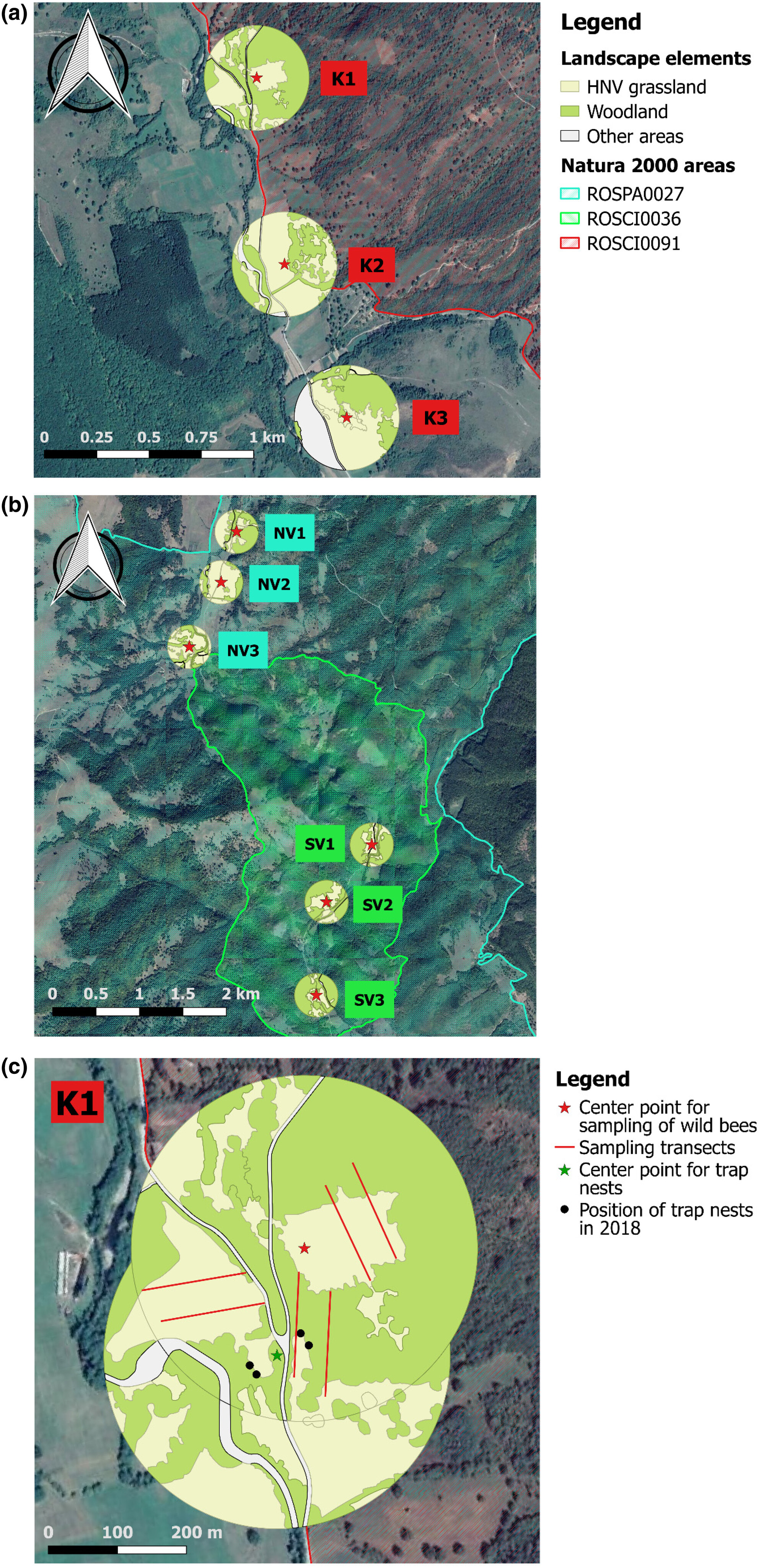
The role of wild bees and cavity-nesting Hymenopteran species as indicators was examined, along the unique combination of high nature value and traditional land use habitats. The different taxonomic groups of wild bees and cavity-nesting Hymenopterans showed differences in their habitat affinities. Landscape structure had no significant effects on the number of (occupied) brood cells for most of the cavity-nesting Hymenopteran groups.
REVIEW ARTICLE
Lemming and Vole Cycles: A New Intrinsic Model
- First Published: 21 October 2024
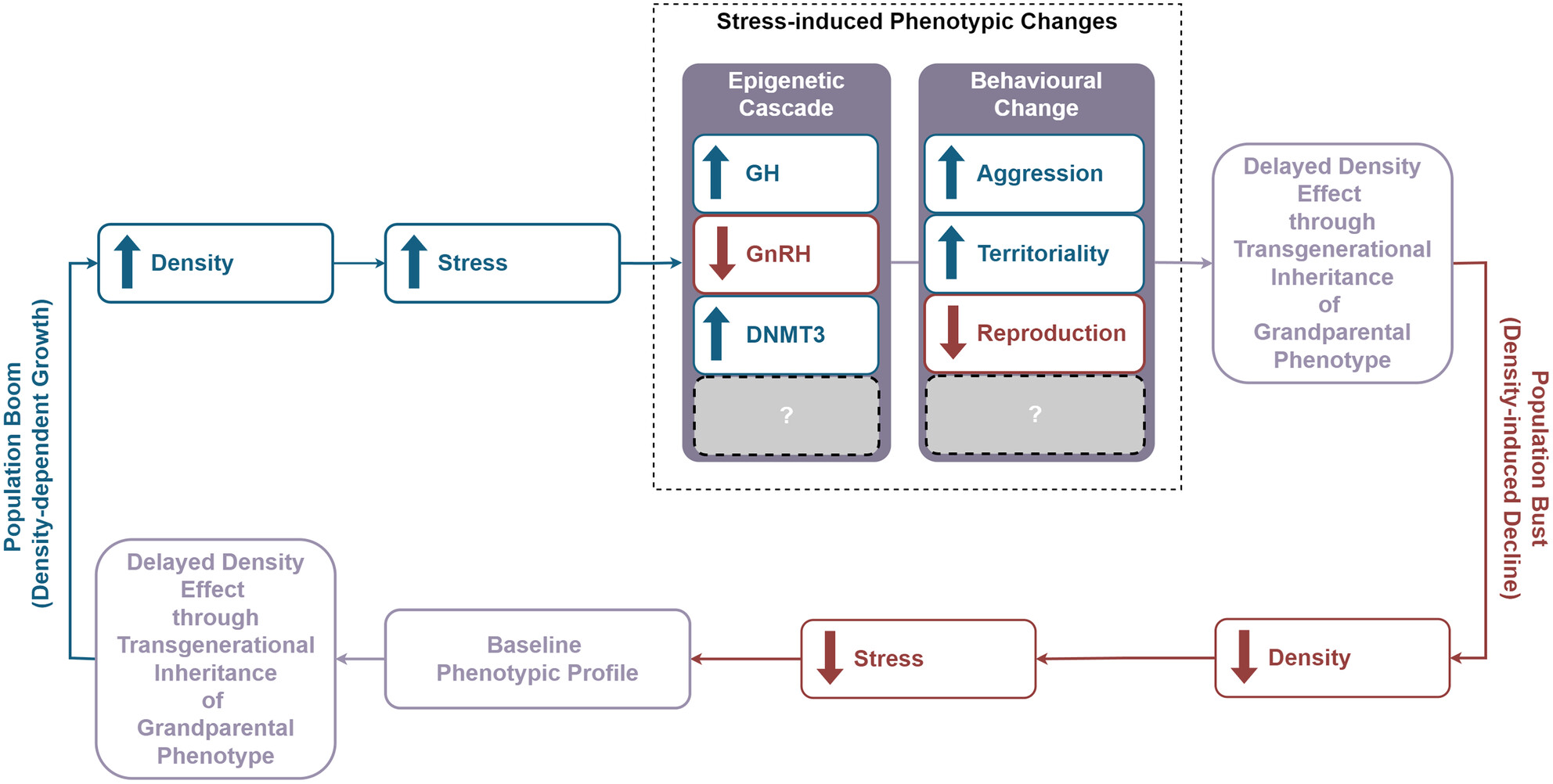
It is 100 years since the first paper described the recurring nature of Arctic population cycles, yet the mechanistic drivers of these are still not well understood. This paper challenges researchers to consider a new paradigm, with reference to the role of epigenetics in the cycling process. We provide a testable hypothesis describing a series of hormonal/epigenetic steps that form an intrinsic cycle.
RESEARCH ARTICLE
Phenotypic and Transcriptomic Analysis Revealed a Lack of Risk Perception by Native Tadpoles Toward Novel Non-Native Fish
- First Published: 21 October 2024
NATURE NOTES
Population monitoring and conservation implications of intra- and interspecific nest occupation rates in swallows
- First Published: 22 October 2024
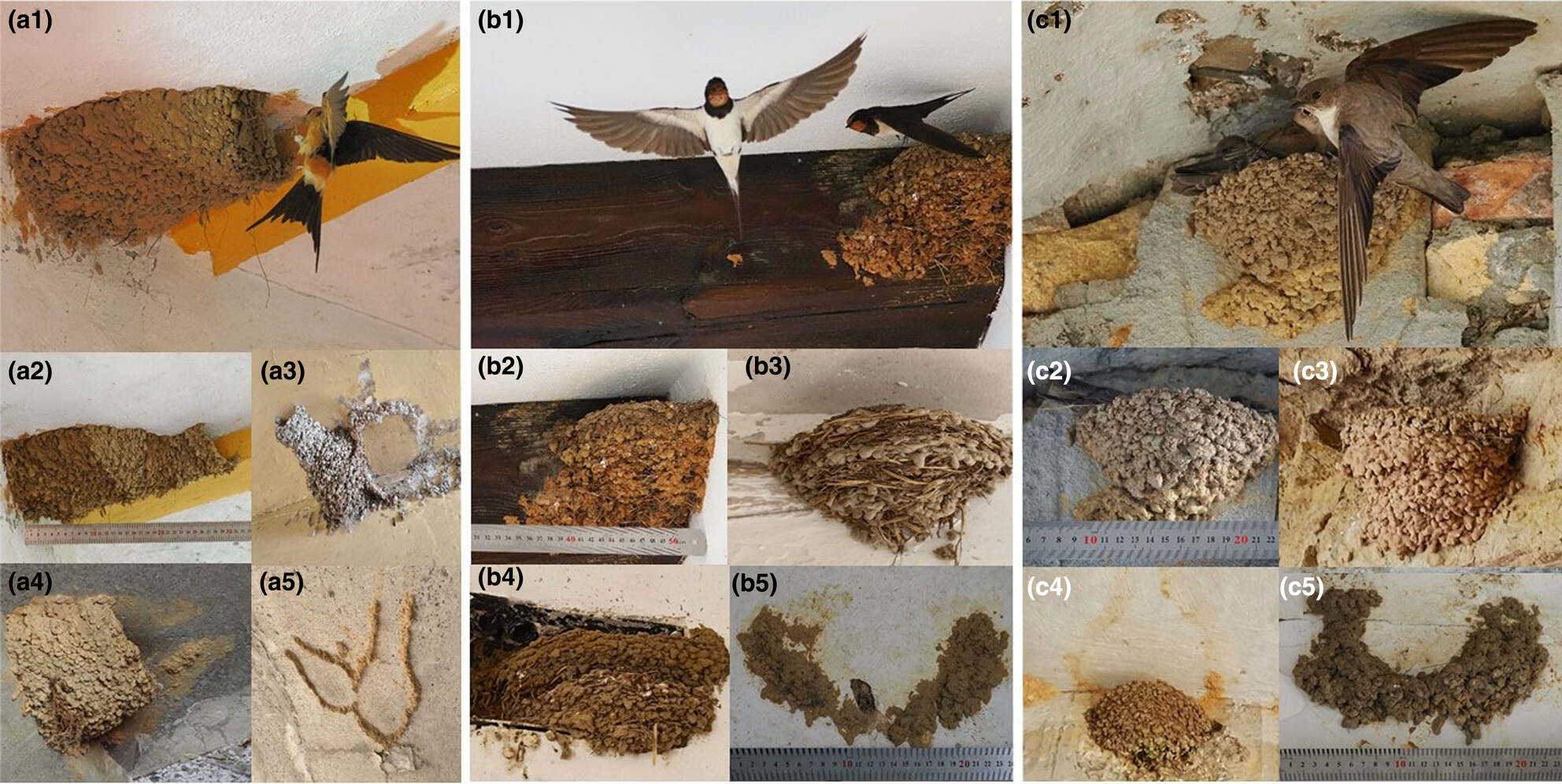
The long-term monitoring of nests may constitute a reliable and affordable method, with the help of citizen science, for assessing changes in breeding population sizes and conservation threats of mud-nest building hirundines worldwide. Breeding adults, and completely built and destroyed nests of red-rumped swallows Cecropis daurica (a1–a5), barn swallows Hirundo rustica (b1–b5), and rock martins Ptyonoprogne rupestris (c1–c5), with scales for size comparisons. Photographs: José L. Tella.
RESEARCH ARTICLE
Evaluating species distribution model predictions through time against paleozoological records
- First Published: 22 October 2024
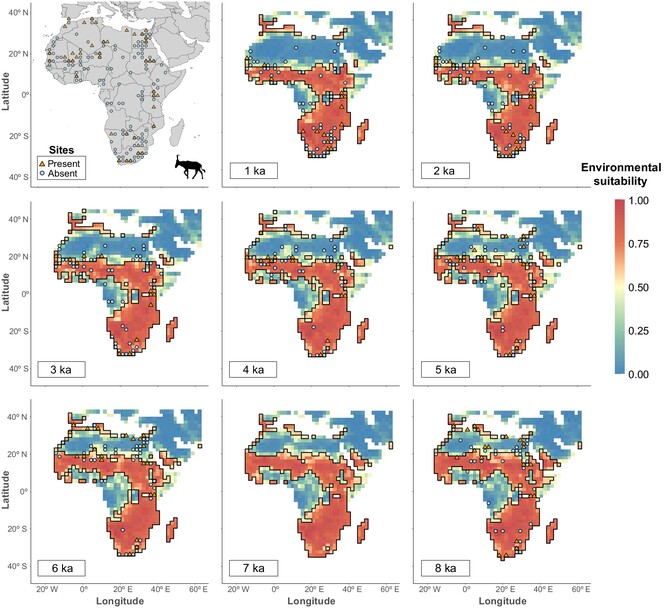
Species distribution models (SDMs) are commonly used to project species distribution changes on the face of climate change, but their long-term performance is rarely tested. To address this, the authors employed paleozoological records to independently assess SDM accuracy. They focused on modelling the historical distribution of the hartebeest and compared the models' ability to predict past presences and absences in the archaeological record. The results demonstrated a lack of strong correlation between present-day and historical model performance, emphasising the influence of input data and modelling choices on SDM accuracy and highlighting the value of using paleontological and archaeological records for model assessment.
Modulation of fatty acid profiles and turnover dynamics in jellyfish polyps through copepod diets: Insights into trophic interactions and nutrient flux
- First Published: 22 October 2024
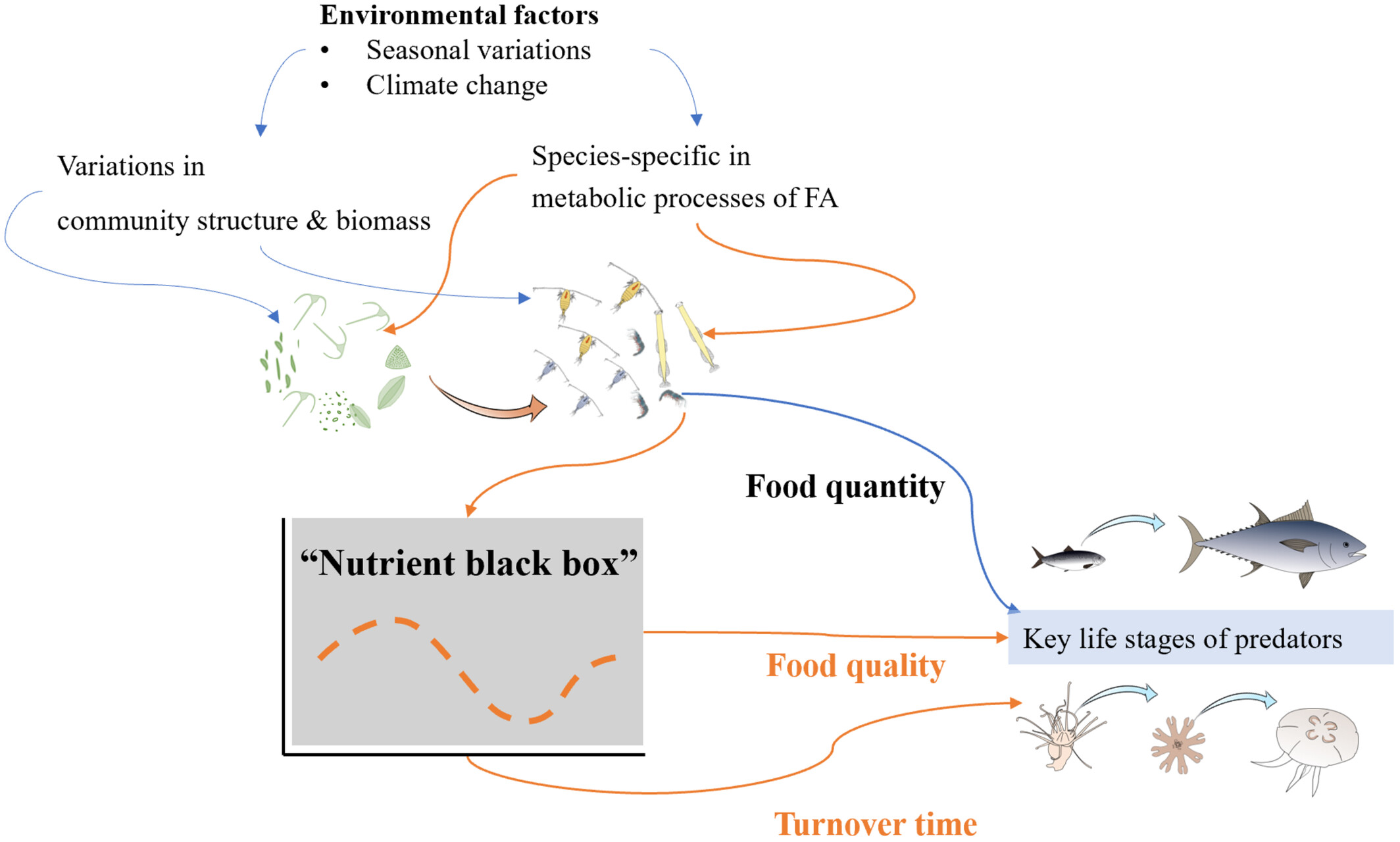
The copepod exhibits a strong inclination toward synthesizing long-chain polyunsaturated FA to maintain biochemical homeostasis when consuming low-quality food. Jellyfish polyps fail to accumulate EPA and DHA but display high levels of ARA compared to their zooplankton and phytoplankton food sources, suggesting a potential association with dietary EPA and DHA through an unidentified pathway. Certain FA components suggest a turnover time of approximately 19 days when polyps undergo a dietary shift.
Seasonal variations in composition and function of gut microbiota in grazing yaks: Implications for adaptation to dietary shift on the Qinghai-Tibet plateau
- First Published: 22 October 2024
CORRECTION
RESEARCH ARTICLE
Bill Length of Non-breeding Shorebirds Influences the Water Depth Preferences for Foraging in the West Coast of India
- First Published: 22 October 2024
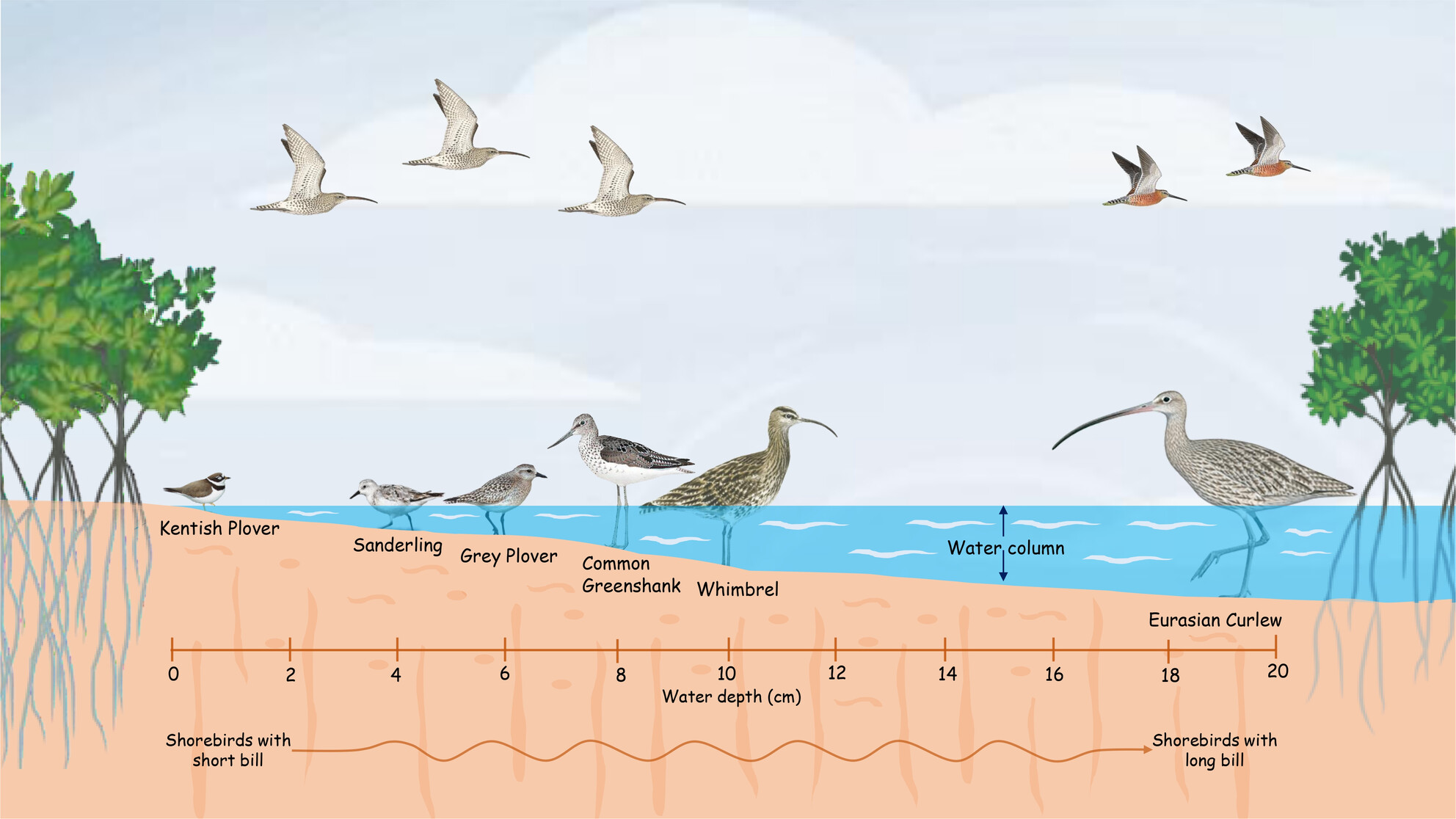
Body size, bill length and shape determine the foraging techniques, habitat selection and diet among shorebirds. In this study, water depth preferences of different shorebirds with different bill sizes in various habitats were investigated between 2017 and 2020. Average water depth, where shorebirds were observed, was significantly and positively associated with their bill lengths. This study underscores the need for conservation of wetlands with its diverse hydrological rhythms to preserve the biodiversity.
Drivers of Wolf Activity in a Human-Dominated Landscape and Its Individual Variability Toward Anthropogenic Disturbance
- First Published: 22 October 2024
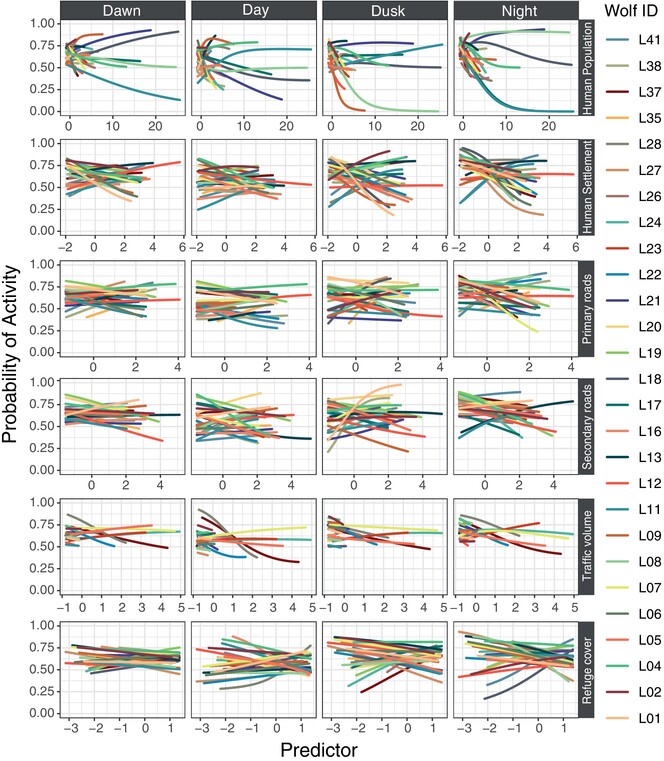
This study, for the first time, reveals the individual variability in wolf responses to human disturbance. By fitting Hidden Markov Models to data from GPS-GSM collars deployed on 26 wolves, we found significant variation between individuals in their responses to different levels of anthropogenic pressure and across different times of day, highlighting a non-uniform strategy for coping with perturbations in human-dominated landscapes. Our findings underscore the diverse behavioural adjustments employed by wolves to persist in these environments and highlight the critical importance of vegetation patches serving as refuge cover.
Prehatch Calls and Coordinated Birth in Turtles
- First Published: 22 October 2024
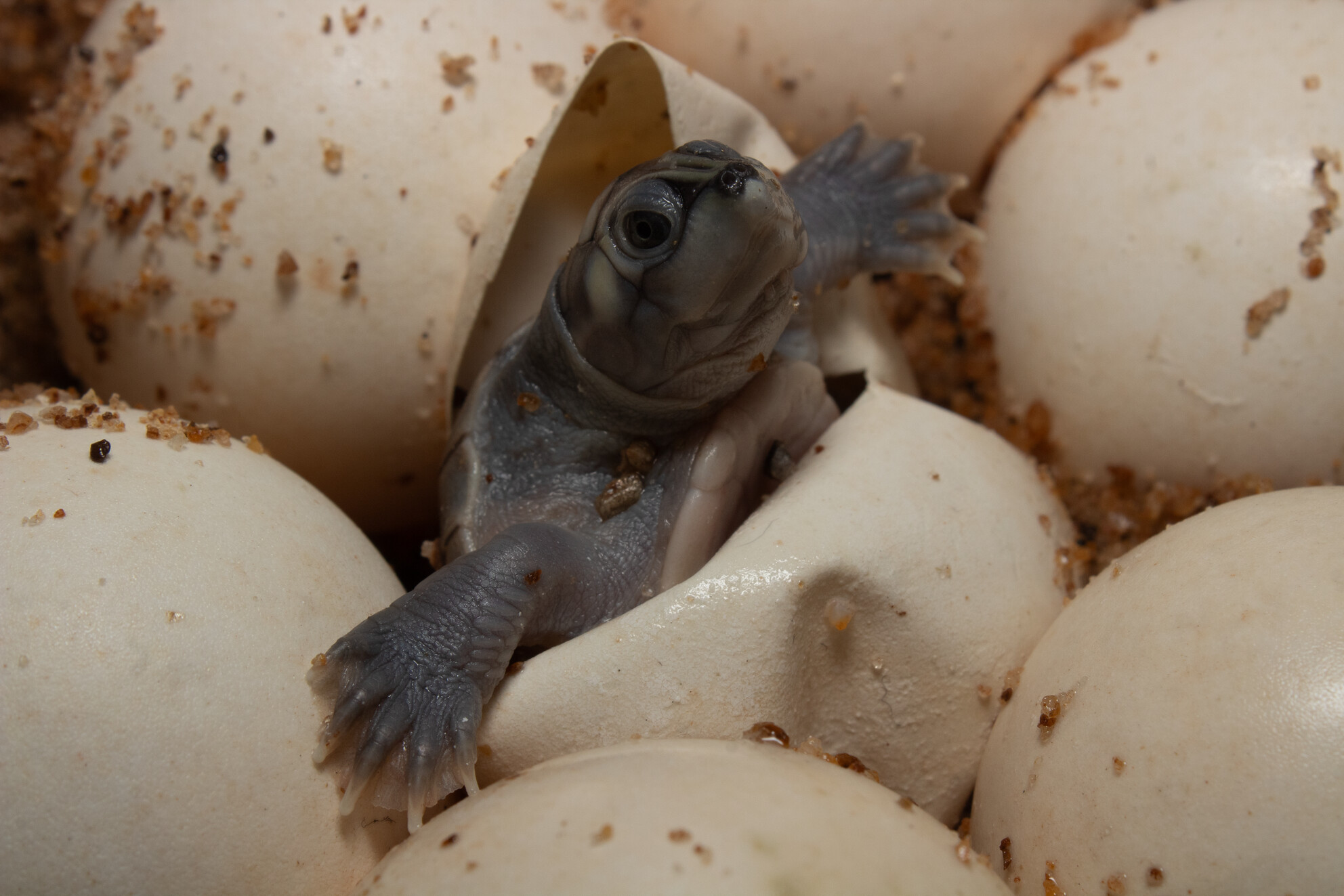
The study investigates the phylogenetic distribution of within-egg vocal behaviour among turtles and its role in synchronous hatching. Clutches from six turtle species with diverse ecological and reproductive niches were recorded, aiming to understand if asynchronous species vocalise from within the egg, the influence of clutch size on synchronous behaviour and the presence of any phylogenetic signal in within-egg turtle calls. The findings challenge previous hypotheses, suggesting that within-egg sounds are not accidental side-effects but may indeed mediate coordinated synchronous behaviour in turtles.
Associations Between Developmental Stability, Canalization, and Phenotypic Plasticity in Response to Heterogeneous Experience
- First Published: 22 October 2024
CORRECTION
Correction to “Annual Temperature, Body Size, and Sexual Size Dimorphism in the Evolution of Pyrgomorphidae”
- First Published: 22 October 2024
RESEARCH ARTICLE
Measuring Temporal Change in Scrub Vegetation Cover Using UAV-Derived Height Maps: A Case Study at Two UK Nature Reserves
- First Published: 22 October 2024
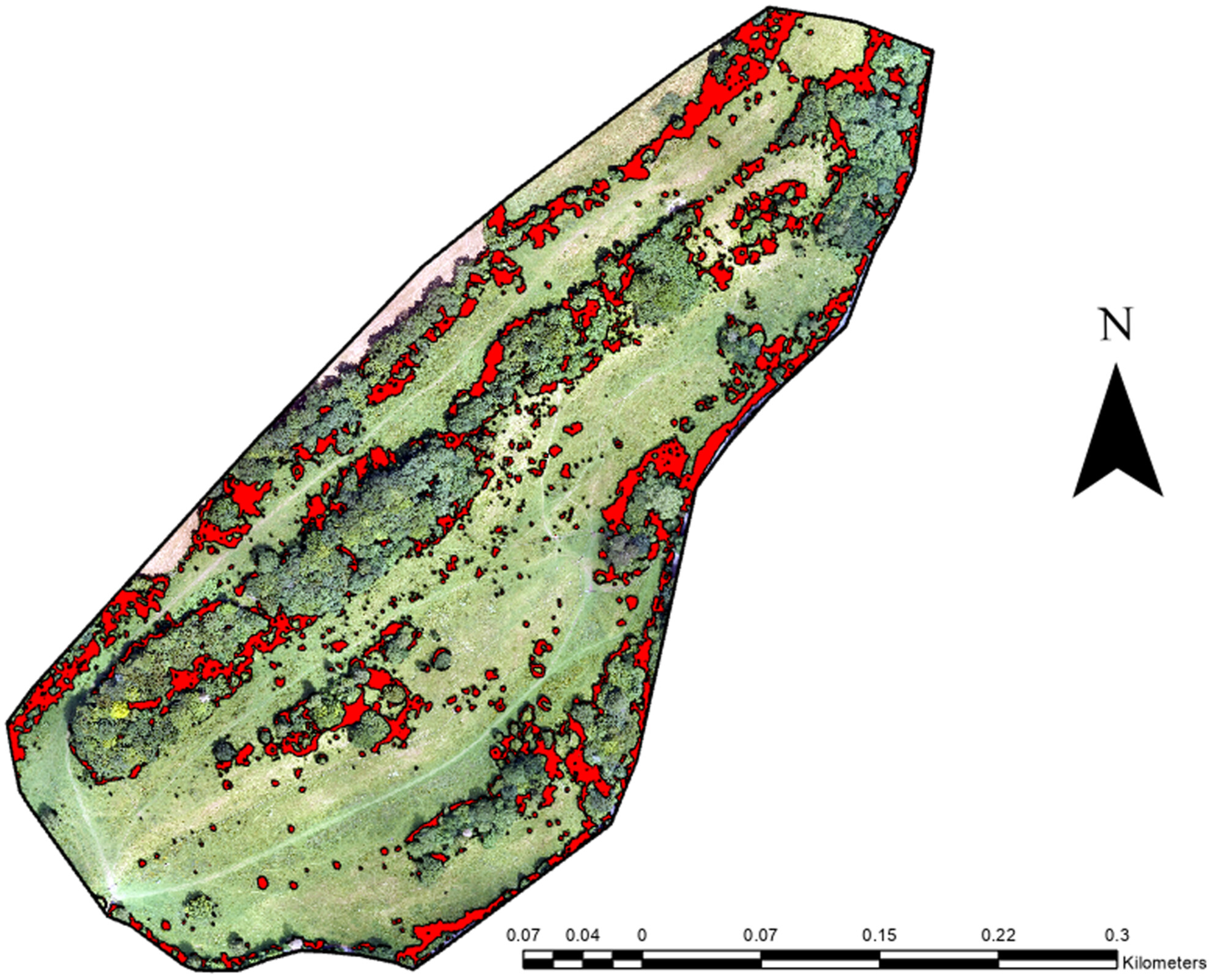
This study looks at temporal changes in scrub cover on two nature reserves in the UK: Daneway Banks in Gloucestershire and Flat Holm Island in the Severn Estuary. In this study, we assess how multiple datasets obtained using a photogrammetric point cloud workflow previously outlined in Vafidis et al. (Ecology and Evolution, 11, 2021, 6789) can be used to assess scrub cover management goals and temporal changes in scrub levels at two nature reserves.
Comparative Analyses of Lycodon rufozonatus and Lycodon rosozonatus Gut Microbiota in Different Regions
- First Published: 22 October 2024

This study delved into the intricate relationship between hosts and their gut microbiota, highlighting how various factors such as taxonomy, diet, and environmental conditions influence microbial composition. Focusing on two snake species, Lycodon rufozonatus and Lycodon rosozonatus, from different locations, fecal samples were analyzed using 16S rRNA gene sequencing.
Love thy neighbour: Feral buffalos show greater space use, resource overlap and encounters during the wet season in the Northern Territory
- First Published: 22 October 2024
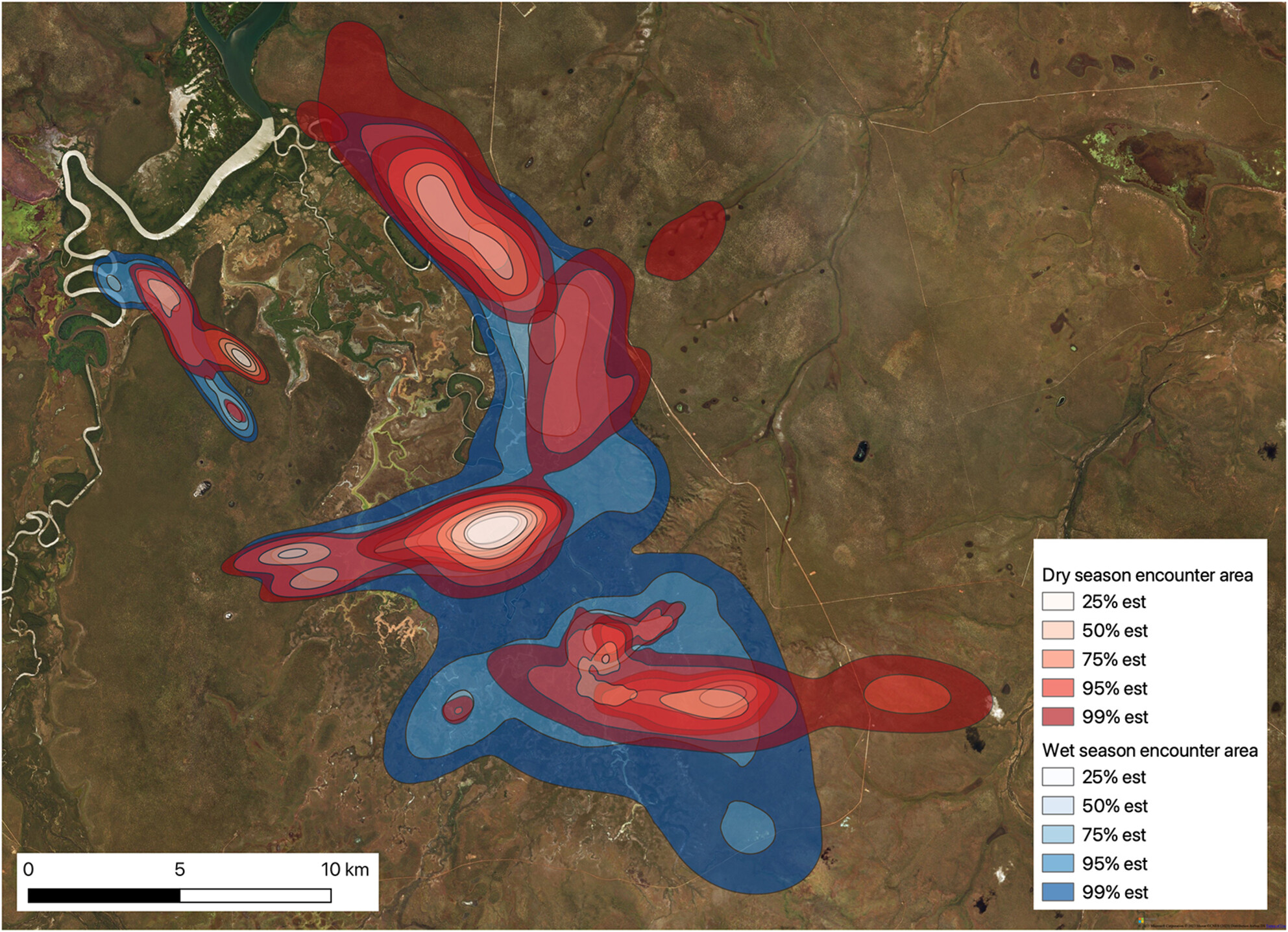
Feral buffalo in the Northern Territory are associated with several cultural, environmental and biosecurity challenges, and to mitigate these issues, we GPS tracked 17 buffalo over the wet and dry season. We found in the dry season that buffalo space use is restricted, their movement is more predictable, there is less social interaction and the size of their home range is significantly smaller than in the wet season. Results from these models can be used by land holders, Traditional Owners and wildlife managers to make evidence-based decisions to optimise buffalo management with respect to disease risk, sustainable harvest and damage to environmental and cultural assets.
Early Life History Divergence Mediates Elevational Adaptation in a Perennial Alpine Plant
- First Published: 21 October 2024
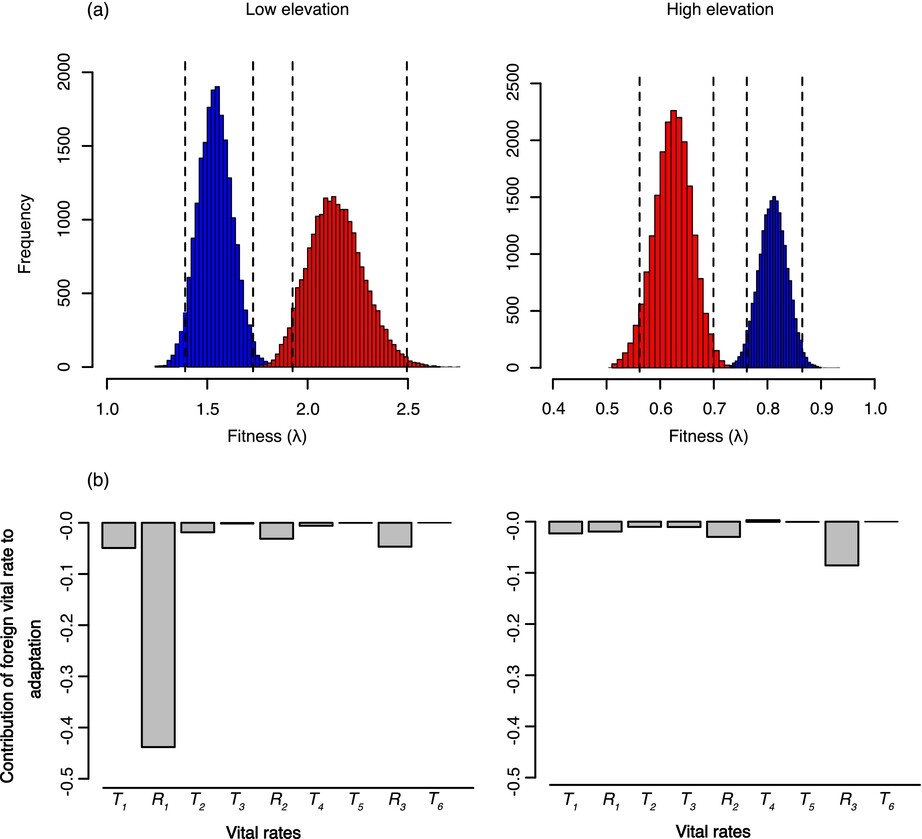
In perennial plants, natural selection shapes life-history traits during subsequent stages of the life cycle, but despite the close link of such traits to fitness, their adaptive role is rarely characterized. Using a multi-year reciprocal transplant experiment, we test for adaptation of the alpine carnation Dianthus carthusianorum in response to different climate regimes at contrasting elevations in the central European Alps, and assess the contribution of early life-history traits through integrative analyses of demographic models and fitness trade-offs. We find that elevational ecotypes are characterized by alternate life-history strategies that underly adaptation, but also show high levels of plasticity in response to climatic variation: while a more conservative strategy securing self-maintenance is beneficial at high elevation, a strategy with high investment in reproduction is beneficial at low elevation.
Colonization of North America Boosted the Diversification of Whiptail Lizards
- First Published: 23 October 2024
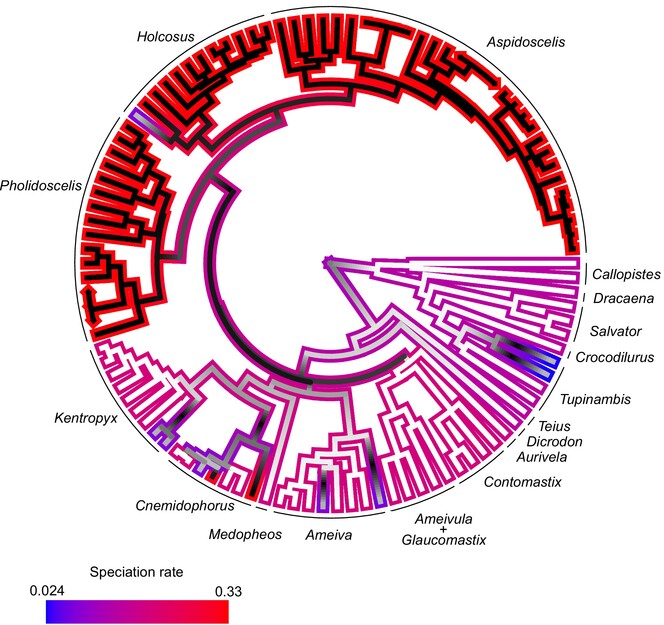
Teiids increased their diversification rates upon colonization of North America, which was associated with an ecological niche expansion toward drier areas. This increment in diversification was not shown to be associated with phenotypic traits, which suggests it was due to ecological opportunity and/or ecological release.
NATURE NOTES
Repeated Tree Inventories of Pine Forests in South Florida's Big Cypress National Preserve
- First Published: 23 October 2024
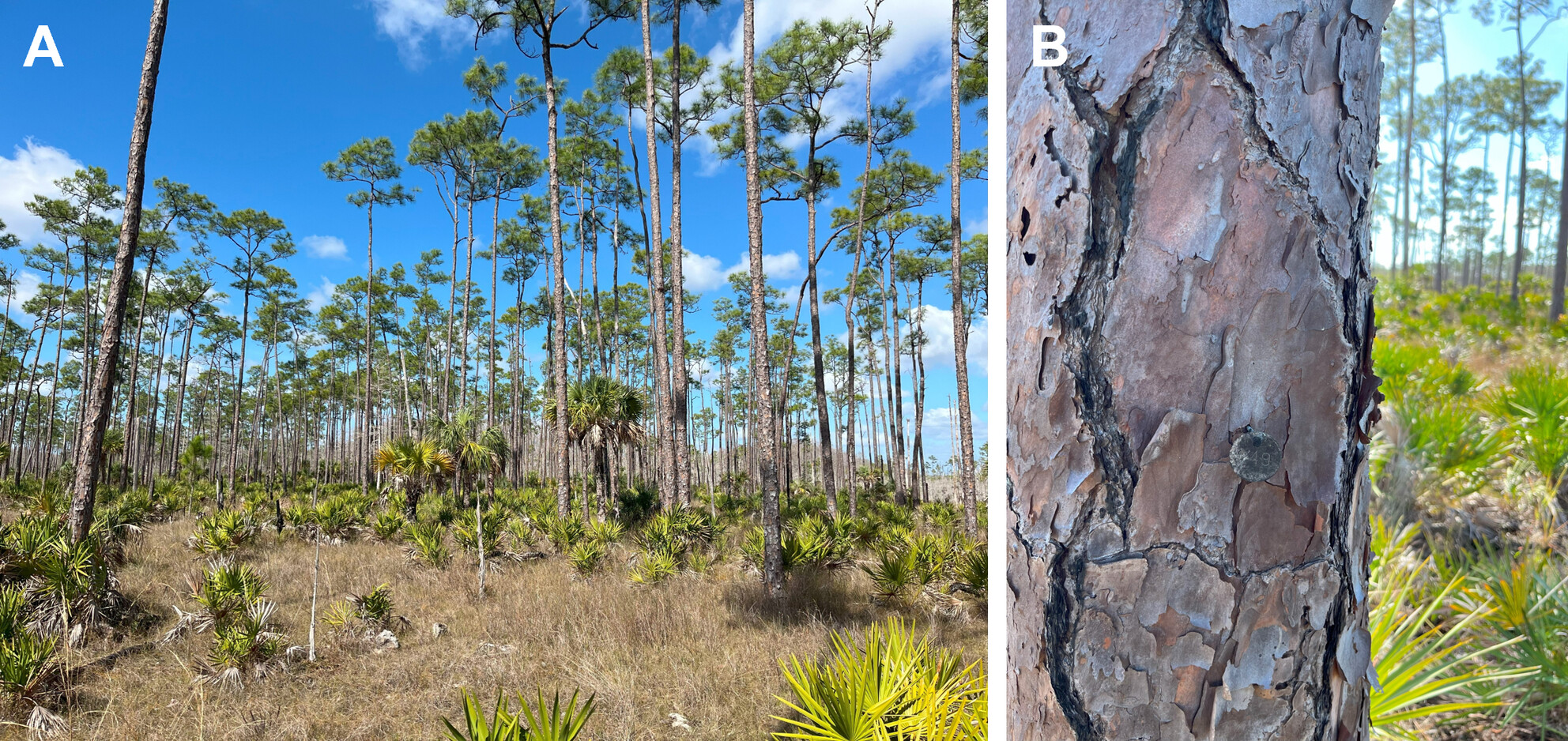
We present data from 332 censuses of 54 permanent 1-ha tree inventory plots (Panel A) in the Racoon Point area of Big Cypress National Preserve, Florida, USA, including a total of nearly 100,000 diameter and height measurements of > 17,000 individual living trees (Panel B), with additional measurements of nearly 6000 dead pine snags,collected over a 19-year period (1993–2012).
RESEARCH ARTICLE
Comparison of GARP and MaxEnt in Modeling Current and Future Geographic Distribution of Ceracris nigricornis Walker (Acrididae, Orthoptera) in China
- First Published: 22 October 2024
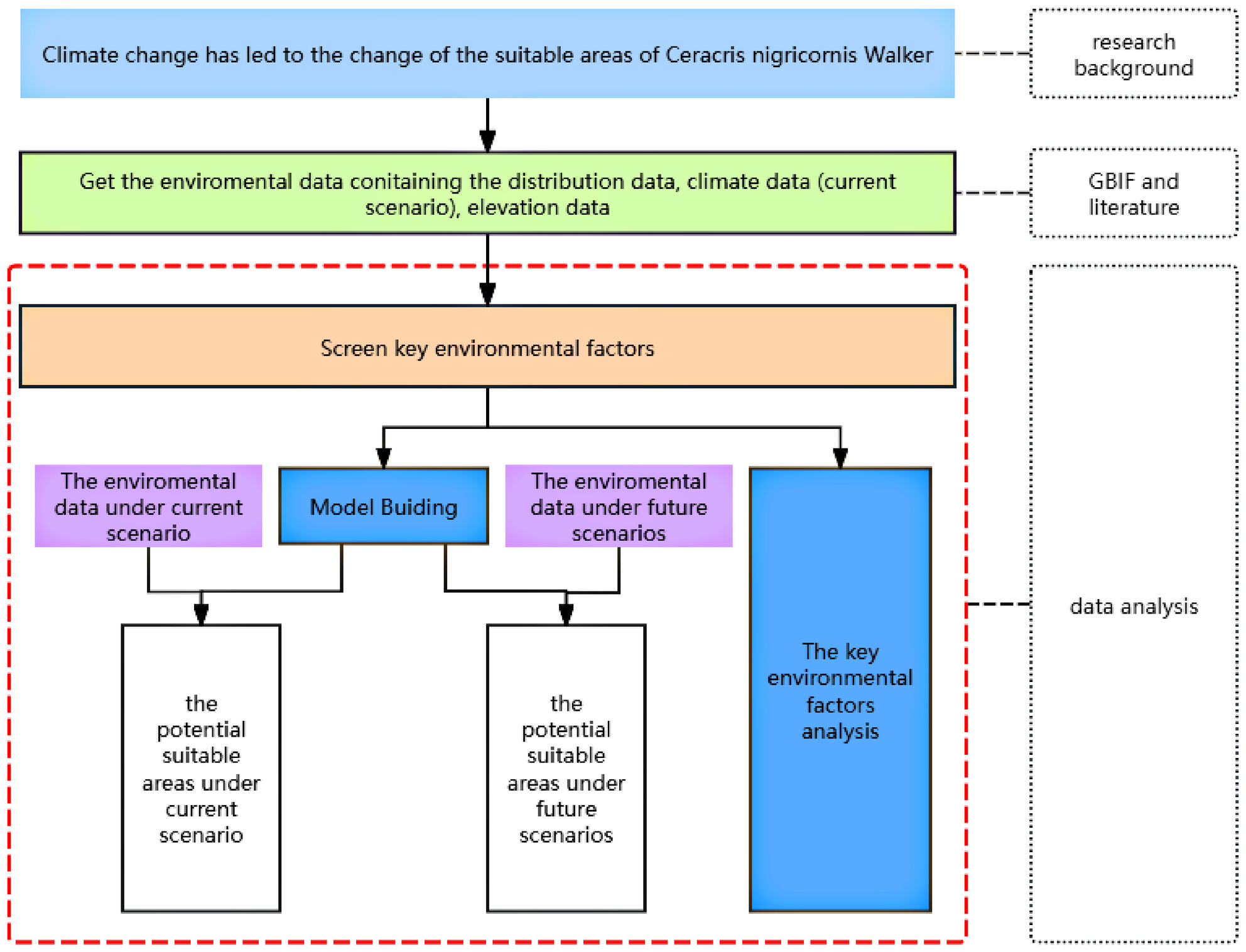
Ceracris nigricornis Walker is a species of grasshopper of the family Acrididae that is a severe pest, which can harm bamboo, rice, corn, sorghum and other crops, and can cause serious economic losses. In this study, based on 234 occurrence sites of C. nigricornis obtained from the Global Biodiversity Information Facility and literature, and data of three future climate scenarios presented by CMIP6, two niche models (GARP, MaxEnt) were used to predict the suitable area of C. nigricornis in China. The result shows that the main environmental factors affecting the distribution of C. nigricornis are min temperature of coldest month (bio6), mean temperature of coldest quarter (bio11), precipitation of driest month (bio14) and precipitation of wettest quarter (bio16). In the future scenarios,The boundaries of suitable areas will expand to the north and southwest of China under future climate change scenarios, specially in Sichuan, Chongqing and Yunnan.
Comparison of Foraging Strategies and Effects of the Wapiti and Siberian Roe Deer on Japanese Yew
- First Published: 23 October 2024
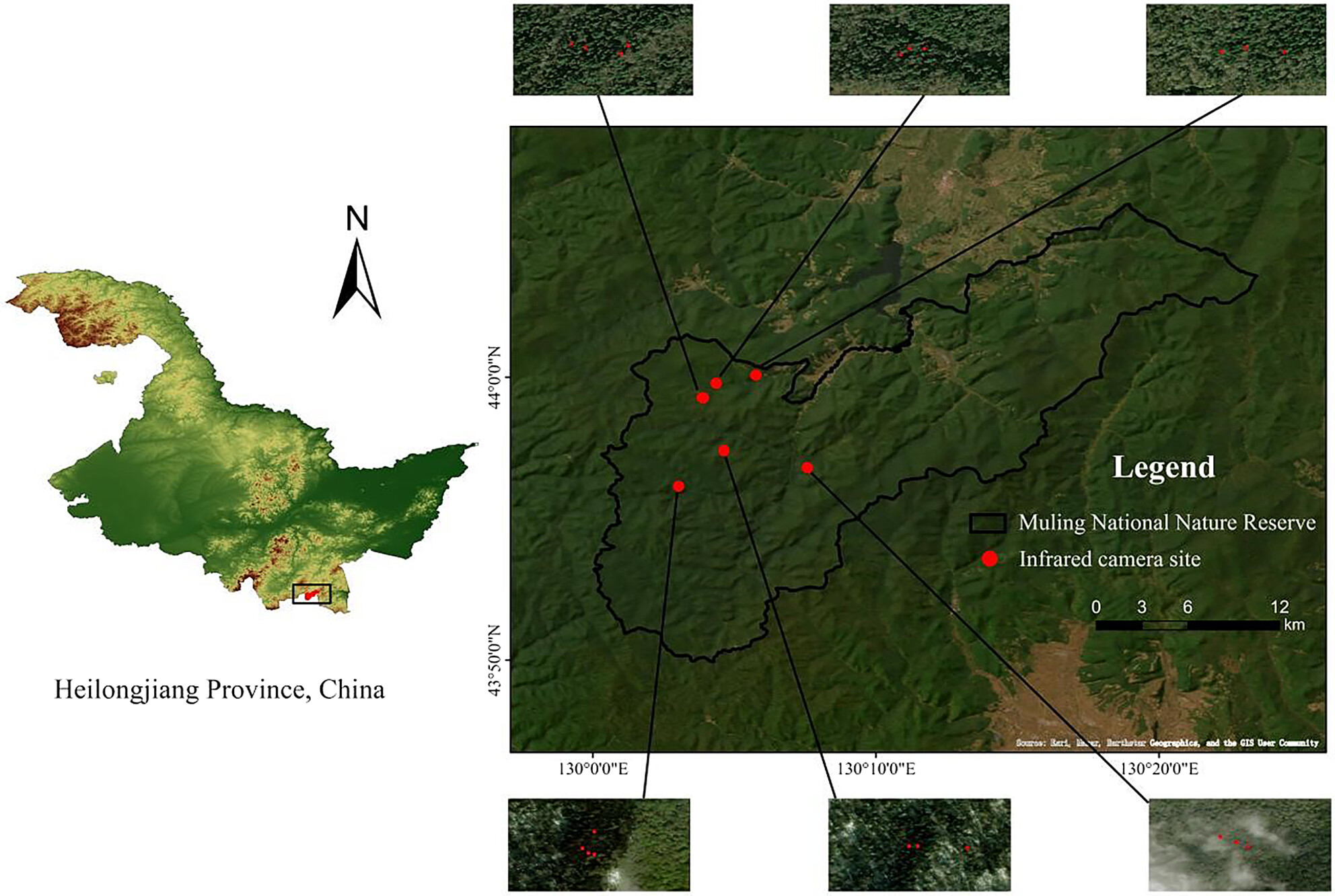
The behavior of wapiti (Cervus elaphus) and Siberian roe deer (Capreolus pygargus) foraging Japanese yew (Taxus cuspidata) that has affected its succession and renewal in China. We found that wapiti and Siberian roe deer have different foraging strategies in time, space, and behavior. This study provides a scientific basis for solving the conservation and management problems of wapiti and other deer species foraging on Japanese yew and contributes to further understanding the competition-coexistence mechanism of sympatric species.
Harmful Microalgae Exhibit Broad Environmental Adaptability in High-Salinity Area Across the Dafengjiang River Estuary
- First Published: 23 October 2024

The alpha diversity and beta diversity of the harmful microalgae community exhibited significant variations in salinity and seasonality (p < 0.05). A wider range of environmental thresholds in high-salinity samples than those in other samples of the harmful microalgae community. Ammonium, total phosphorus, and dissolved inorganic phosphorus criteria were 57.5–60, 27.8–28.5 and 14.5–28 μg·L−1, respectively. Pyrodinium bahamense, Pfiesteria piscicida, Skeletonema tropicum and T. punctigera were the most important bioindicators of environmental change in the different salinity areas.
Individual variation in breeding phenology and postnatal development in northern bats (Eptesicus nilssonii)
- First Published: 23 October 2024
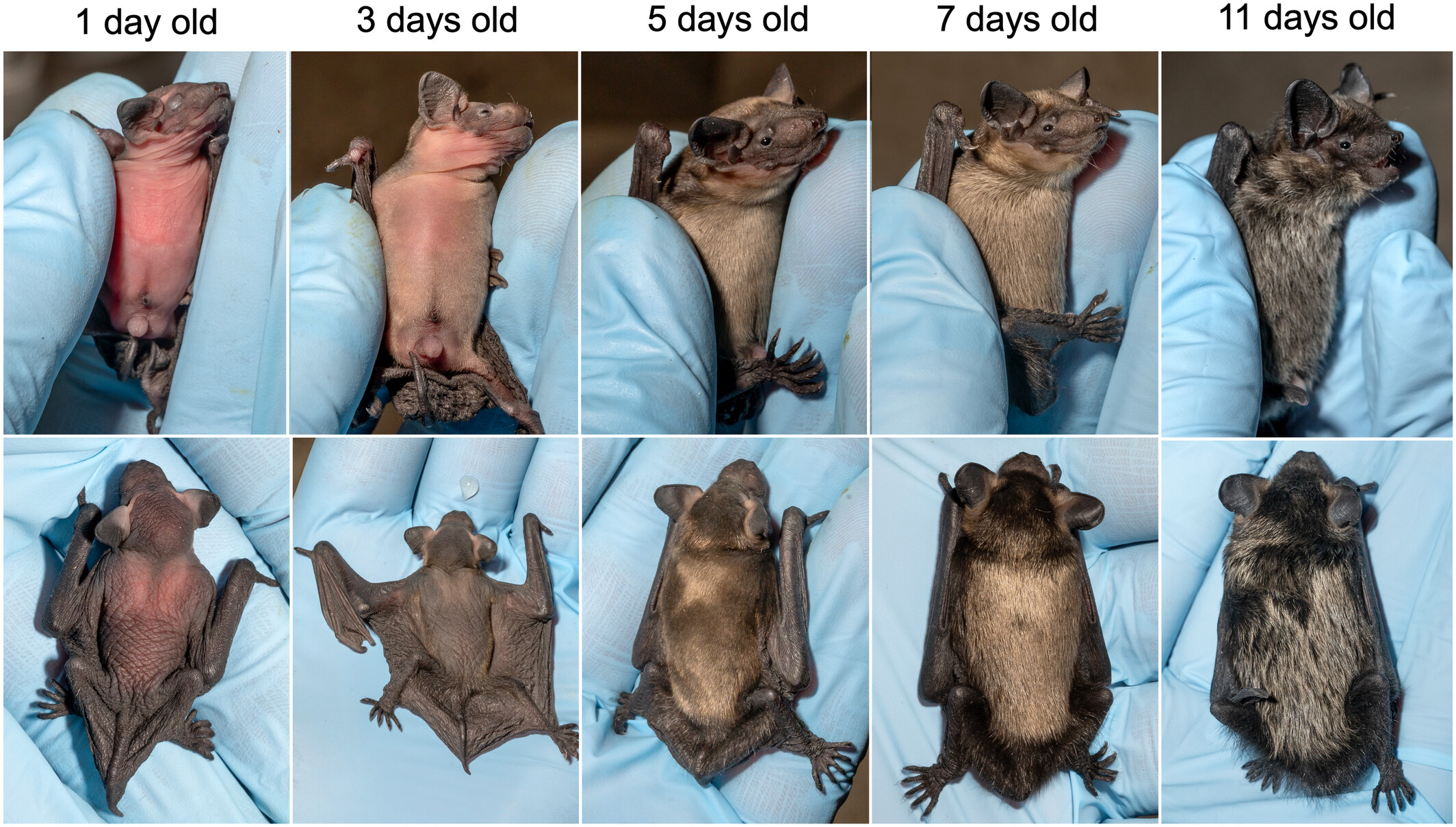
Here, we studied individual-level breeding phenology and postnatal development in Eptesicus nilssonii across 7 years, using data collected by day-to-day monitoring of a breeding colony in Norway. We show evidence of strong and consistent maternal differences in breeding phenology in bats across years. Our results further suggest that E. nilssonii is highly adapted to a short breeding season by producing large, fast-developing, and early-volant pups despite the environmental pressures bats face at northern latitudes.
Using Empirical Performance Data to Source Bluebunch and Snake River Wheatgrass Plant Materials to Restoration Sites in the Eastern Great Basin, USA
- First Published: 23 October 2024
Elevational and Seasonal Patterns of Plant–Hummingbird Interactions in a High Tropical Mountain
- First Published: 24 October 2024

This study examined the patterns and potential drivers of diversity and spatiotemporal dynamics of plant–hummingbird interactions across Mexico's high tropical elevational gradient. Results revealed the importance of species turnover, interaction rewiring, and phenological overlap in network structuring, with smaller roles of abundance, morphology, and phylogeny varying by elevation and season. These findings highlight the importance of conserving tropical mountain ecosystems, which support critical ecological interactions.
Community Trait Variation Drives Selection on Species Diversity Through Feedback With Predator Density
- First Published: 23 October 2024
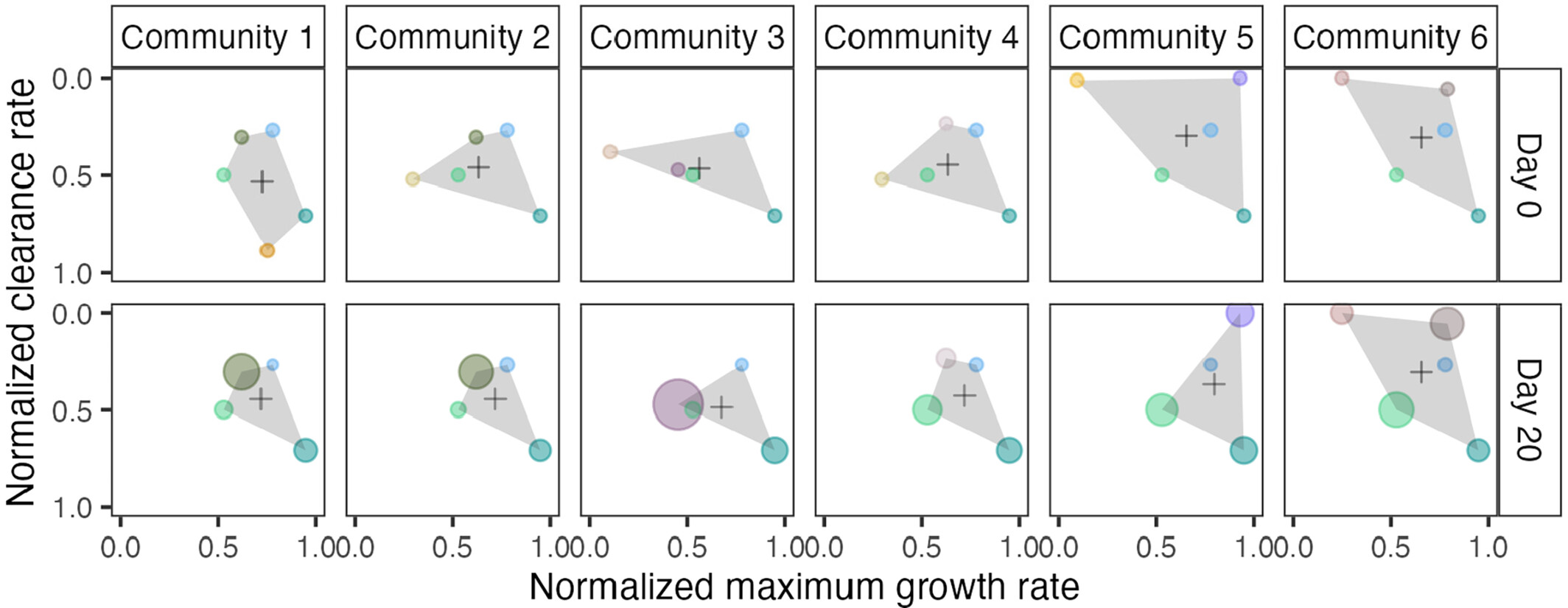
Our work addresses a fundamental problem in ecology: how to explain community assembly. We apply a recently proposed approach to link species diversity and trait variations within communities via patterns of selection. By tracking selection, diversity, trait variations, and population dynamics in experimental phytoplankton communities that differ in initial trait and species composition, we provide the first paired observations of species diversity, trait change, and population dynamics, and discuss how these traits respond and drive each other in a feedback loop.
Root puppet masters: Infauna shift trait-productivity relationships in submerged aquatic vegetation communities
- First Published: 25 October 2024

While co-restoration of seagrass and infauna is a viable solution to increase submerged aquatic vegetation (SAV) restoration success, more research is needed to understand how infauna affects the drivers of SAV biomass production. In this study, we conducted a transplant experiment with synthetic mixed-species SAV communities and an infauna treatment, to explore how infauna can affect plant trait-productivity relationships. Results showed that infauna can change plant trait-productivity relationships by decoupling of the plant height-biomass production relationship and stronger relationships between plant biomass production and nutrient acquisition traits.
Seasonal Patterns of Resource Use Within Natural Populations of Burying Beetles
- First Published: 25 October 2024
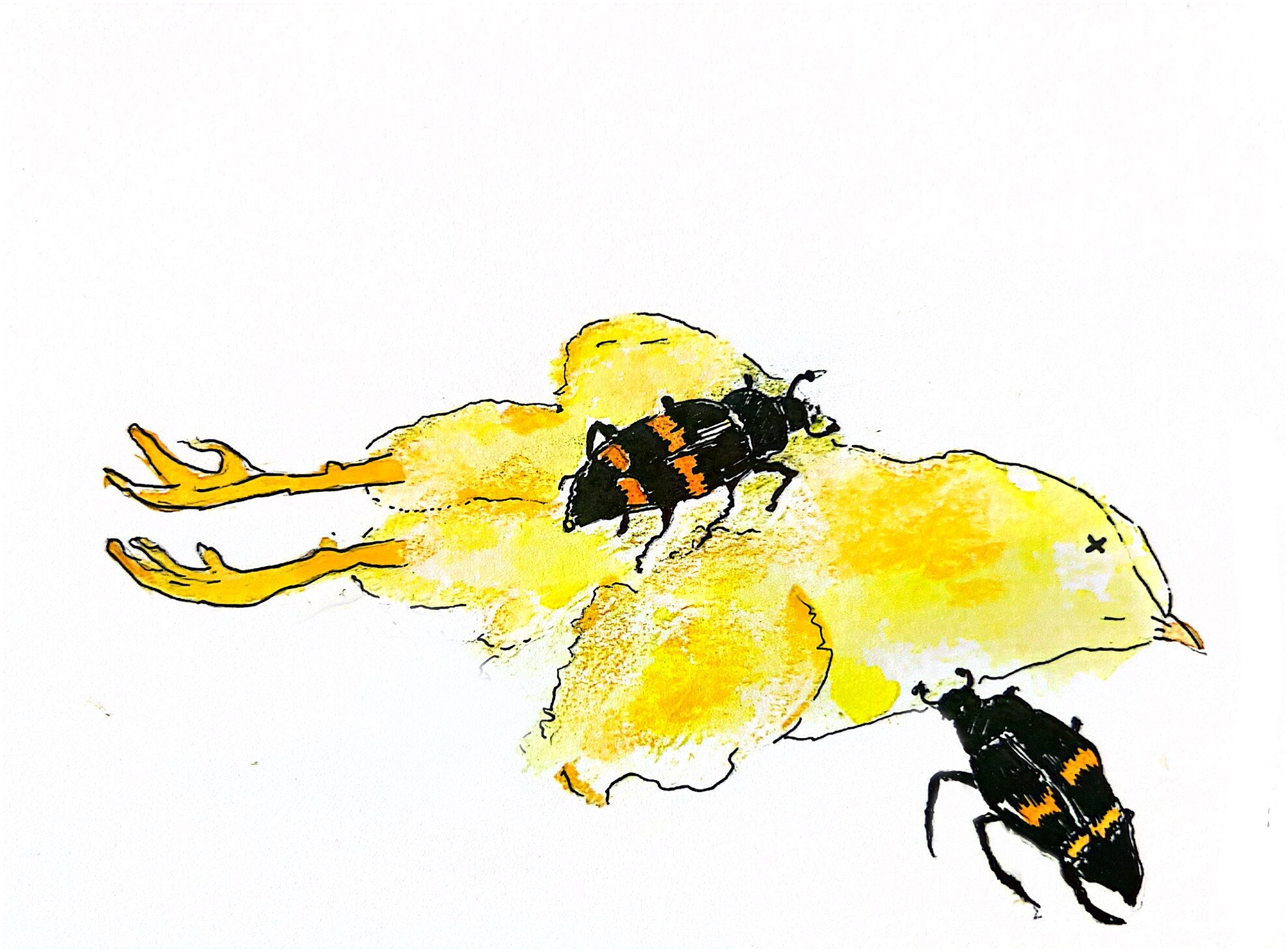
We present experimental evidence of seasonal variation in resource use within natural populations of a necrophagous insect that requires small vertebrate carrion for reproduction. Seasonal patterns of carrion use by wild burying beetles are associated with differences in their reproductive success and cuticular hydrocarbon profiles. Our results provide novel insight into the seasonal correlates of behaviour, physiology and life history in burying beetles.
NATURE NOTES
Oreocharis scutifolia (Gesneriaceae), a Peltate-Leaved New Species From the Dry–Hot Valley of the Jinsha River Basin, Yunnan, China
- First Published: 24 October 2024
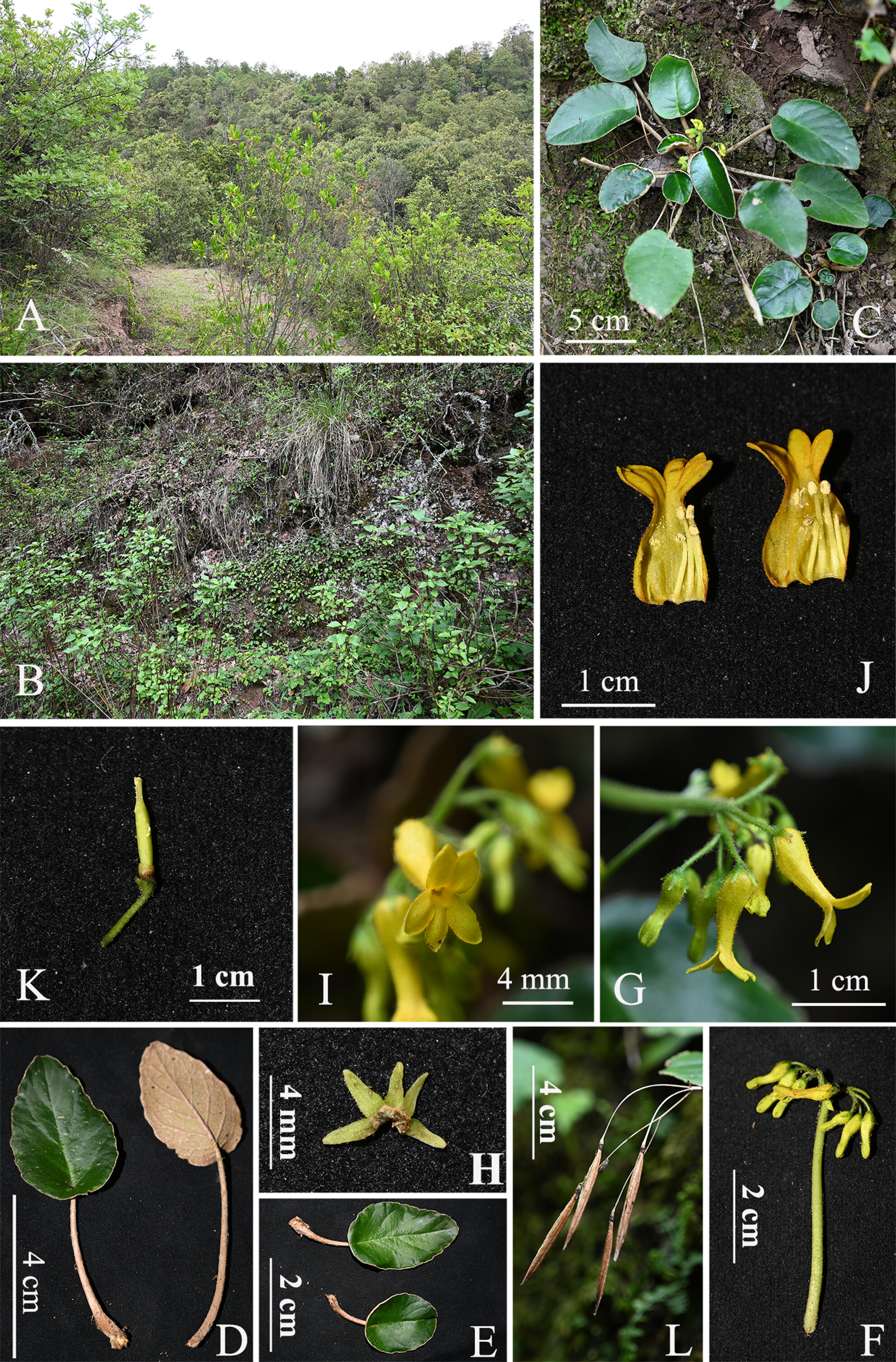
A peltate-leaved new species, Oreocharis scutifolia Z. Xie & H. H. Kong, endemic to the Dry–Hot Valley of the Jinsha River Basin, Yunnan, China, is described and illustrated here. It is similar to O. cordatula (Craib) Pellegr. and O. aurantiaca Baill. in floral characters but differs in its peltate leaf blades. Molecular phylogenetic analysis based on transcriptome data confirmed its systematic position to be sister group with O. henryana, O. cordatula, O. minor Pellegr., and O. aurantiaca Baill. (LPP = 1), and well apart from the remaining members of the genus. The new species O. scutifolia is assessed as “Critically Endangered” following the IUCN categories and criteria.
RESEARCH ARTICLE
Life History Strategies Drive Meso-Scale Distribution Patterns in Coastal Benthic Macroinvertebrates
- First Published: 25 October 2024
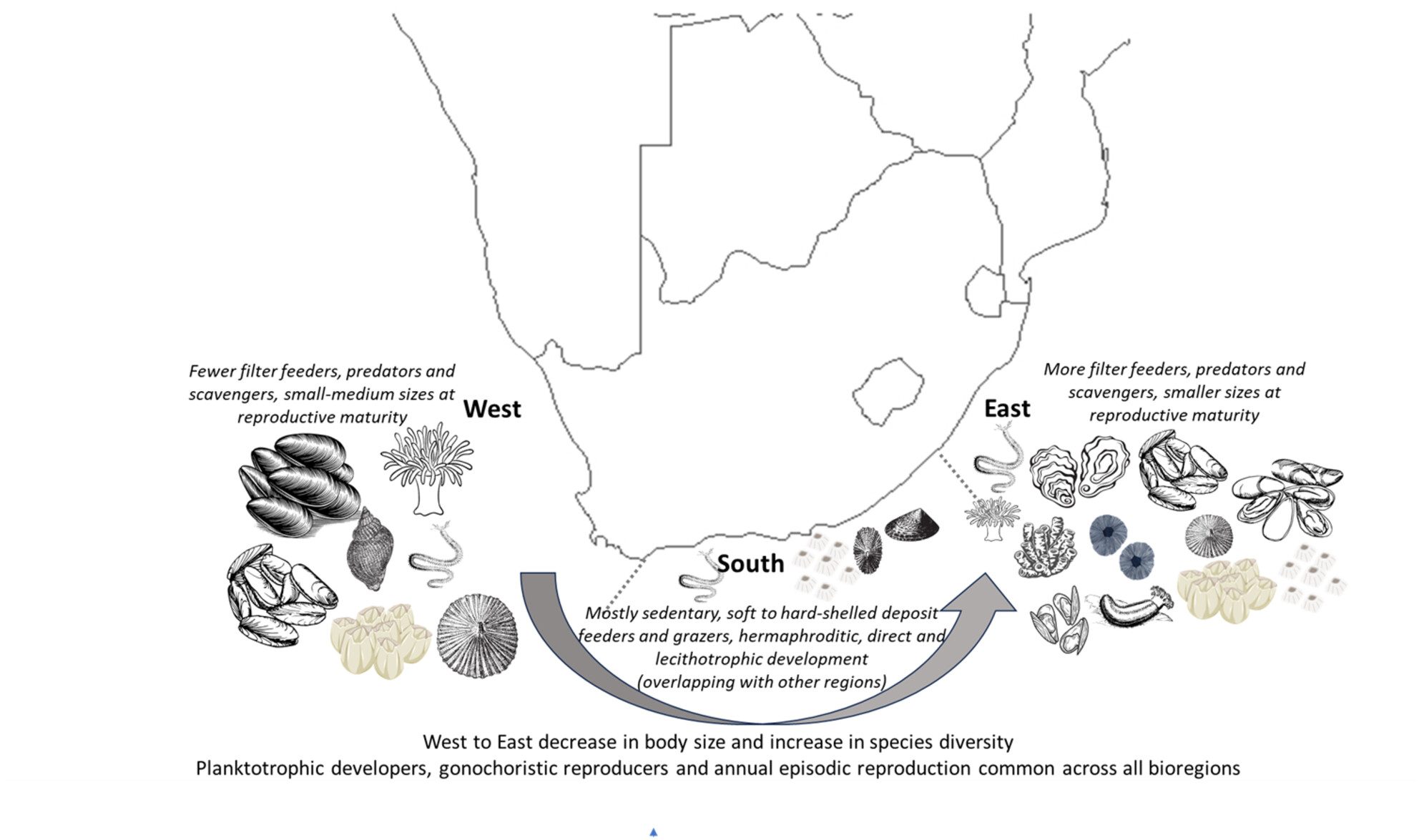
The environment shapes the spatial distribution of species, but species comprise suites of traits which may indicate their adaptability to the specific environment. We examined how the distribution of a species is influenced not only by its combination of traits, or Life History Strategy but also by interactions among its traits. Overall, although our data supports the habitat templet model (i.e., the importance of environmental drivers), it also indicates that species distribution patterns observed along the South African coast reflect strong trait interactions and biomass patterns related to their Life History Strategies.
Using Genetic Data to Determine Origin for Out-Migrating Smolt and Returning Adult Steelhead Trout (Oncorhynchus mykiss) in a Southeast Alaska Drainage
- First Published: 25 October 2024
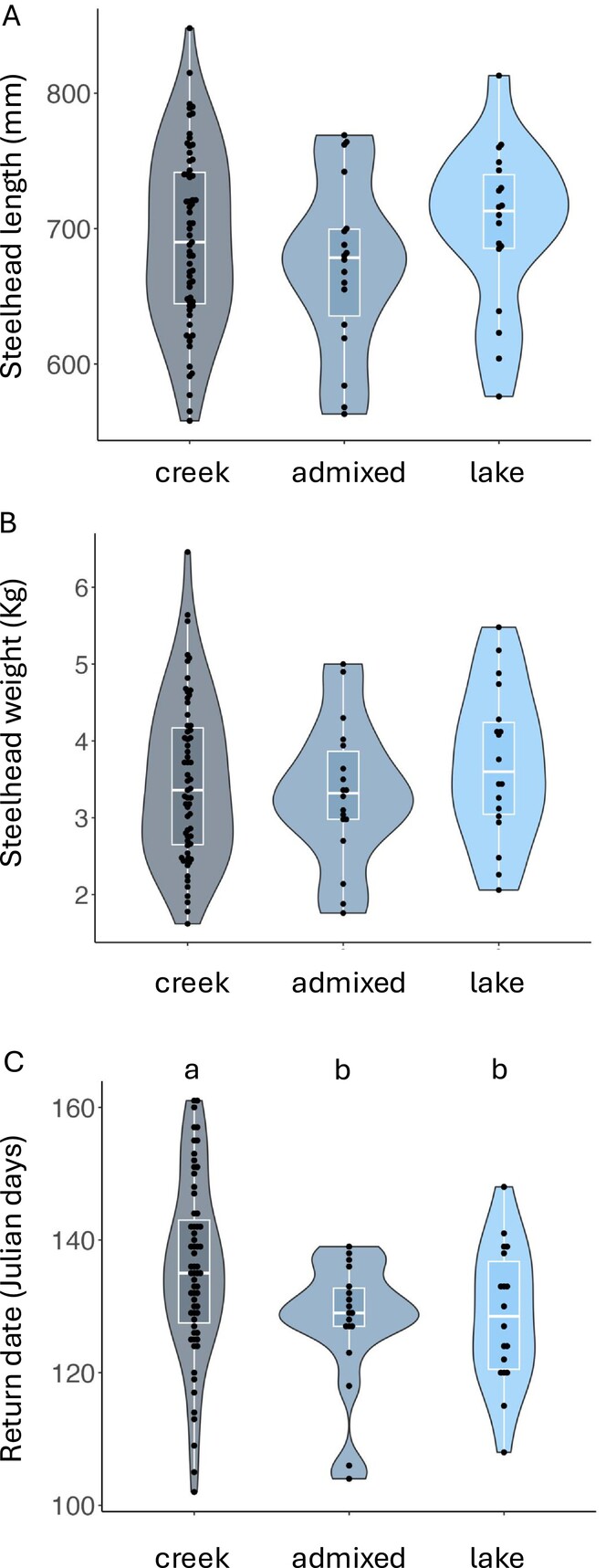
We find evidence that resident populations of rainbow trout can and do produce migratory smolts that can successfully return to spawn. There are statistically significant differences in return timing between migrants with migratory parents and migrants with resident parents suggesting there may be selection operating on return timing.
Of Clams and Clades: Genetic Diversity and Connectivity of Small Giant Clams (Tridacna maxima) in the Southern Pacific Ocean
- First Published: 25 October 2024
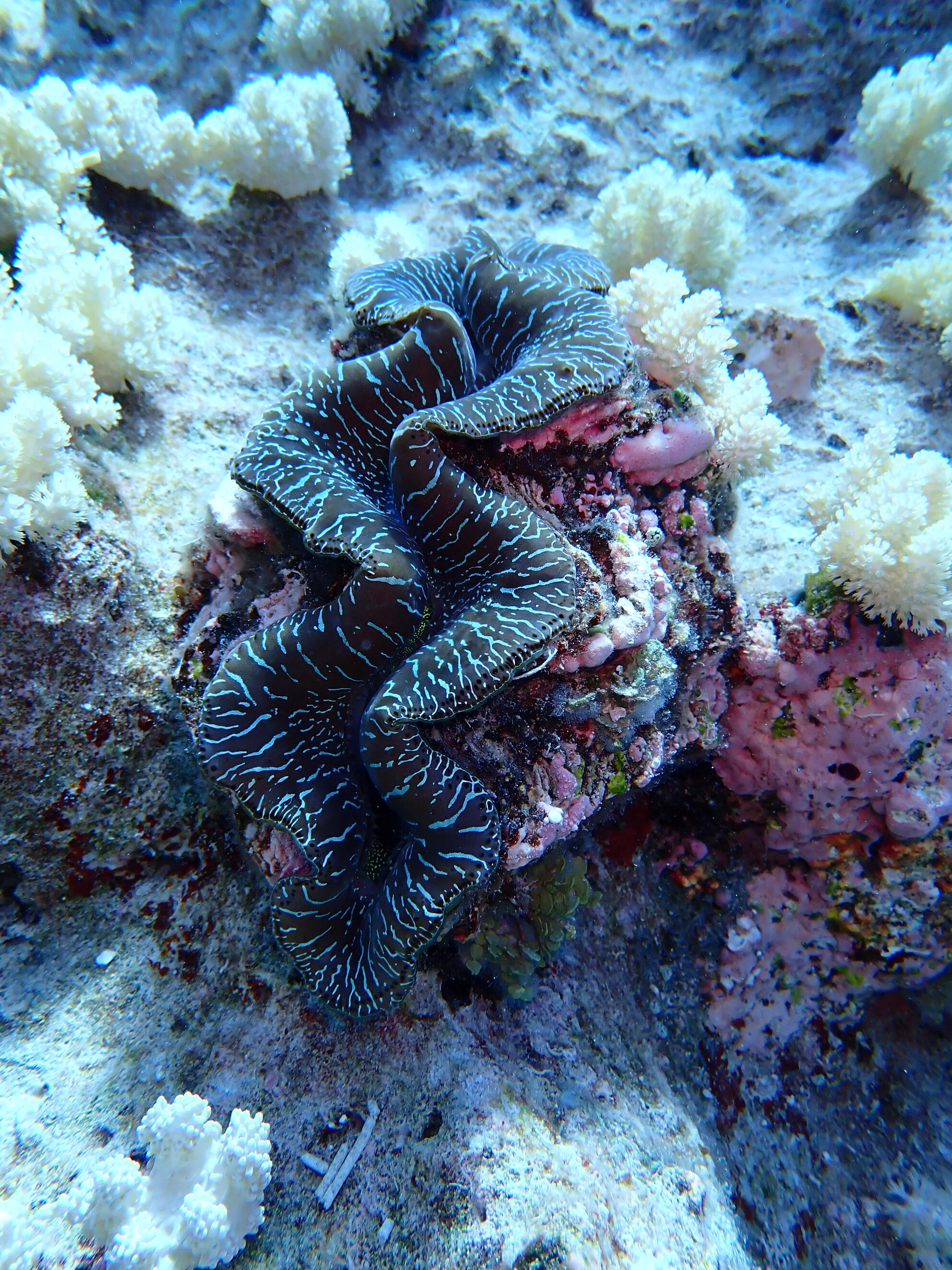
We sequenced the cytochrome oxidase 1 (CO1) gene in small giant clams (Tridacna maxima) in Australia's Coral Sea Marine Park and Cook Islands to assess the genetic diversity and connectivity of these populations. Both regions had very high haplotype diversities but differed in their population structures, with no structure detected within the Coral Sea and significant structure in the Cook Islands archipelago. When these regions were placed into a global context with additional CO1 data from across T. maxima's distribution, we found that clams from the Coral Sea belonged to a mitochondrial clade present in the South-Western Pacific Ocean, whilst those from the Cook Islands were part of a clade unique to the Central Pacific Ocean.
The Implications of Atlantic Salmon (Salmo salar L.) Fatty Acid Profiles for Their Thiamine Status
- First Published: 25 October 2024
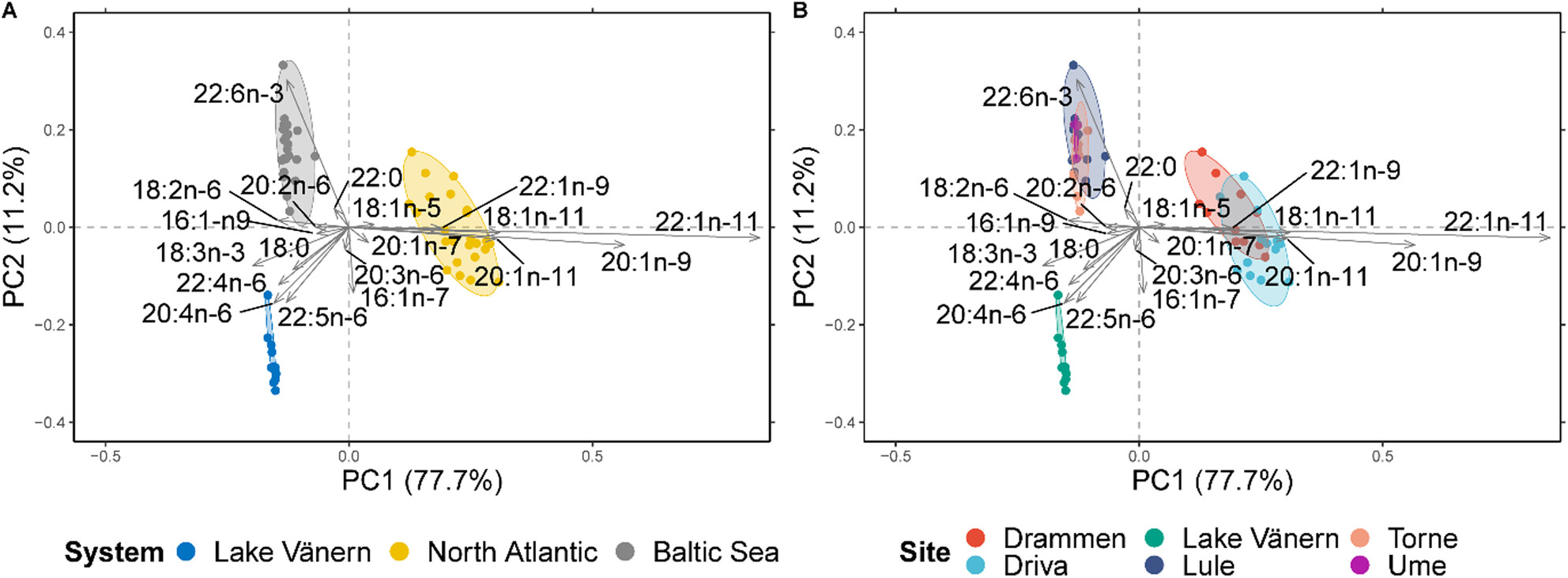
Thiamine deficiency, linked to reproductive failure in salmonids, is a significant issue in the Northern Hemisphere, with previous research suggesting it is caused by lipid-rich diets high in docosahexaenoic acid (DHA). However, our study across three distinct systems—the Baltic Sea, the North Atlantic Ocean, and Lake Vänern—found no correlation between fatty acid (FA) profiles, including DHA, and thiamine status, contradicting the hypothesis that diets rich in easily oxidized FAs lead to lower thiamine concentrations. Furthermore, changes in salmon FA profiles throughout their life cycle were consistent across both low-thiamine and medium-thiamine populations, suggesting these changes do not contribute to thiamine deficiency development.
Assessing the Effects of Habitat Loss and Deterioration on a Red Squirrel Translocation Site: Insights for Future Conservation Management
- First Published: 25 October 2024
Translocations often face high failure rates, due in part to our lack of understanding of their long-term outcomes. We investigated long-term outcome of a red squirrel translocation in the west of Ireland, focusing on habitat loss and changes in carrying capacity. We found a 53% reduction in suitable habitat and a 41%–81% decline in carrying capacity, emphasising the importance of detailed habitat assessments and the use of stable sites for successful translocations.
Modeling the Current and Future Distribution of Indianthus virgatus (Roxb.) Suksathan & Borchs.: A Monotypic Plant Endemic to the Western Ghats-Sri Lanka Biodiversity Hotspot
- First Published: 26 October 2024
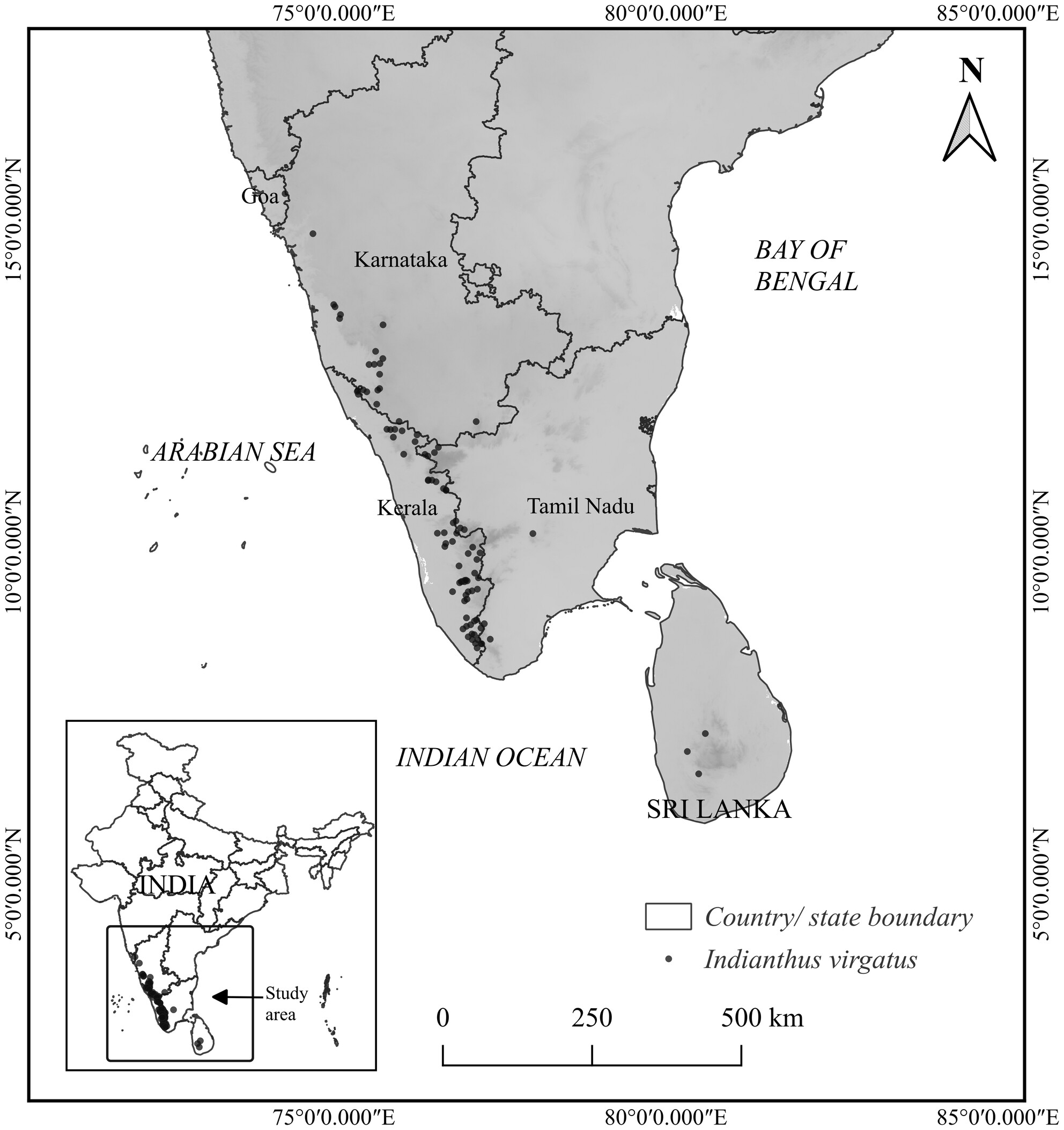
This article projected the distribution of Indianthus virgatus, a monotypic plant endemic to the Western Ghats–Sri Lanka biodiversity hotspot. The article also highlights the role of environmental parameters in determining the current and future distribution projections using MaxEnt and Wallace EcoMod.
The influence of climate change on the potential distribution of Ageratum conyzoides in China
- First Published: 27 October 2024
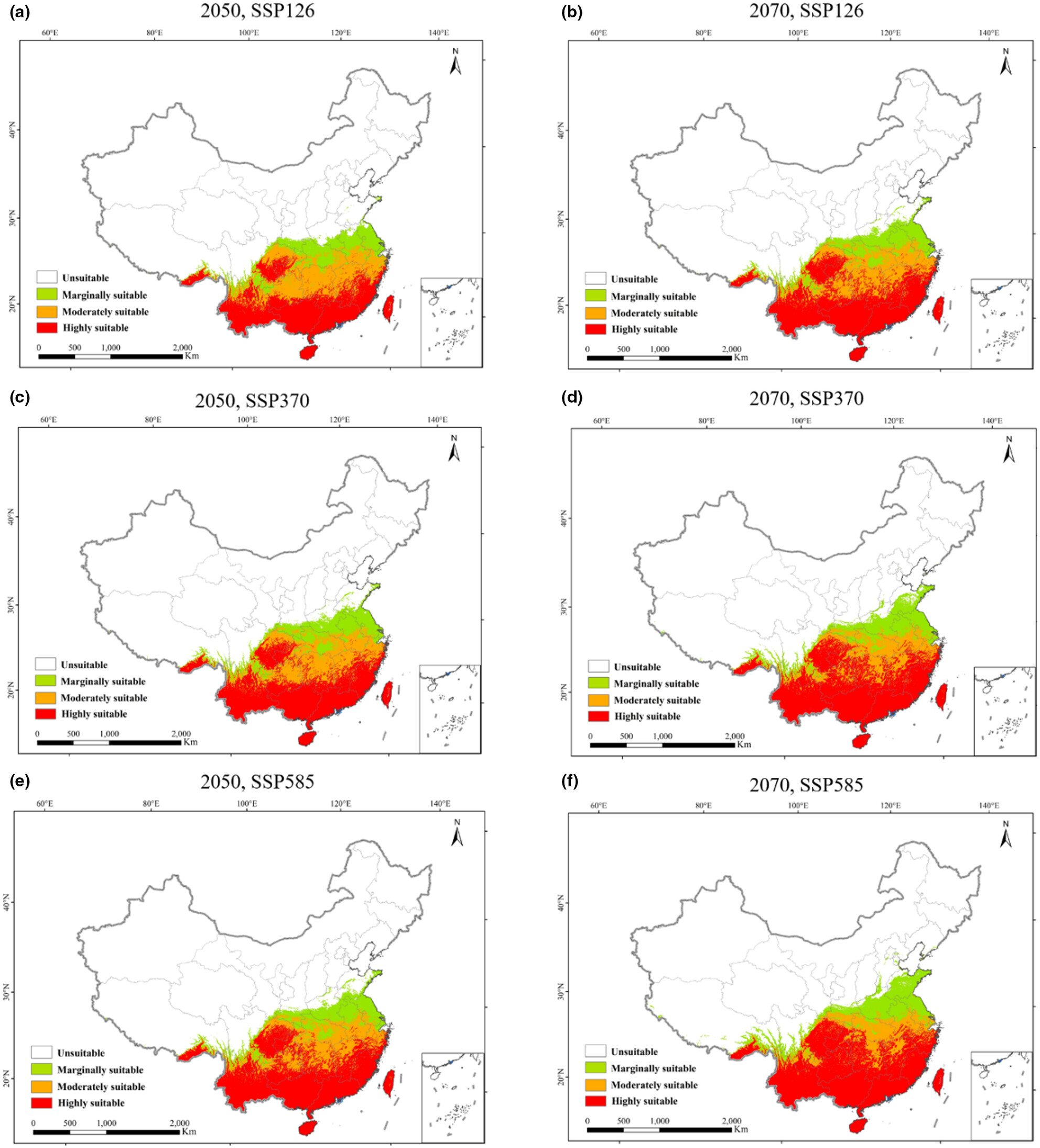
Ageratum conyzoides L., an invasive plant originating from South America, is characterized by rapid growth and strong ecological adaptability, posing a threat to China's ecosystems, agricultural industry, and biodiversity. In this study, we optimized the MaxEnt model using the ENMeval package and constructed an ensemble model using the Biomod2 package, based on global geospatial distribution data of A. conyzoides and considering climate, soil, and topography factors. We simulated the potential suitable distribution of A. conyzoides in China at present and in the future (2041–2060, 2061–2080). Through multivariate environment similarity surface and most dissimilar variable analysis, we identified the main environmental variables influencing the distribution of A. conyzoides. Additionally, niche analysis elucidated temporal and spatial variations in A. conyzoides' climate niche. Our results demonstrate that the ensemble model, constructed from the top seven single models, outperforms the individual models in predicting the suitable habitat of A. conyzoides. The ensemble model achieved the true skill statistic (TSS) of 0.833 and the area under the subject curve (AUC) of 0.971, indicative of outstanding predictive performance. Presently, the suitable habitat of A. conyzoides in China primarily exists in the region between 18° and 28° N, covering approximately 1.47 million km2. The temperature annual range, precipitation of the wettest month, and mean temperature of the coldest quarter were identified as the primary environmental variables influencing its distribution, while soil and elevation variables had minor roles. Under future climate conditions, the suitable habitat of A. conyzoides is expected to expand northeastward, with the centroid of its habitat shifting northward as the climate warms. The migration speed of A. conyzoides is projected to increase with the degree of warming. Furthermore, the climate niche of A. conyzoides will undergo certain changes and may face both niche expansion and a decrease in niche overlap under different climate conditions.
Revealing the Demographic History of the European Nightjar (Caprimulgus europaeus)
- First Published: 26 October 2024
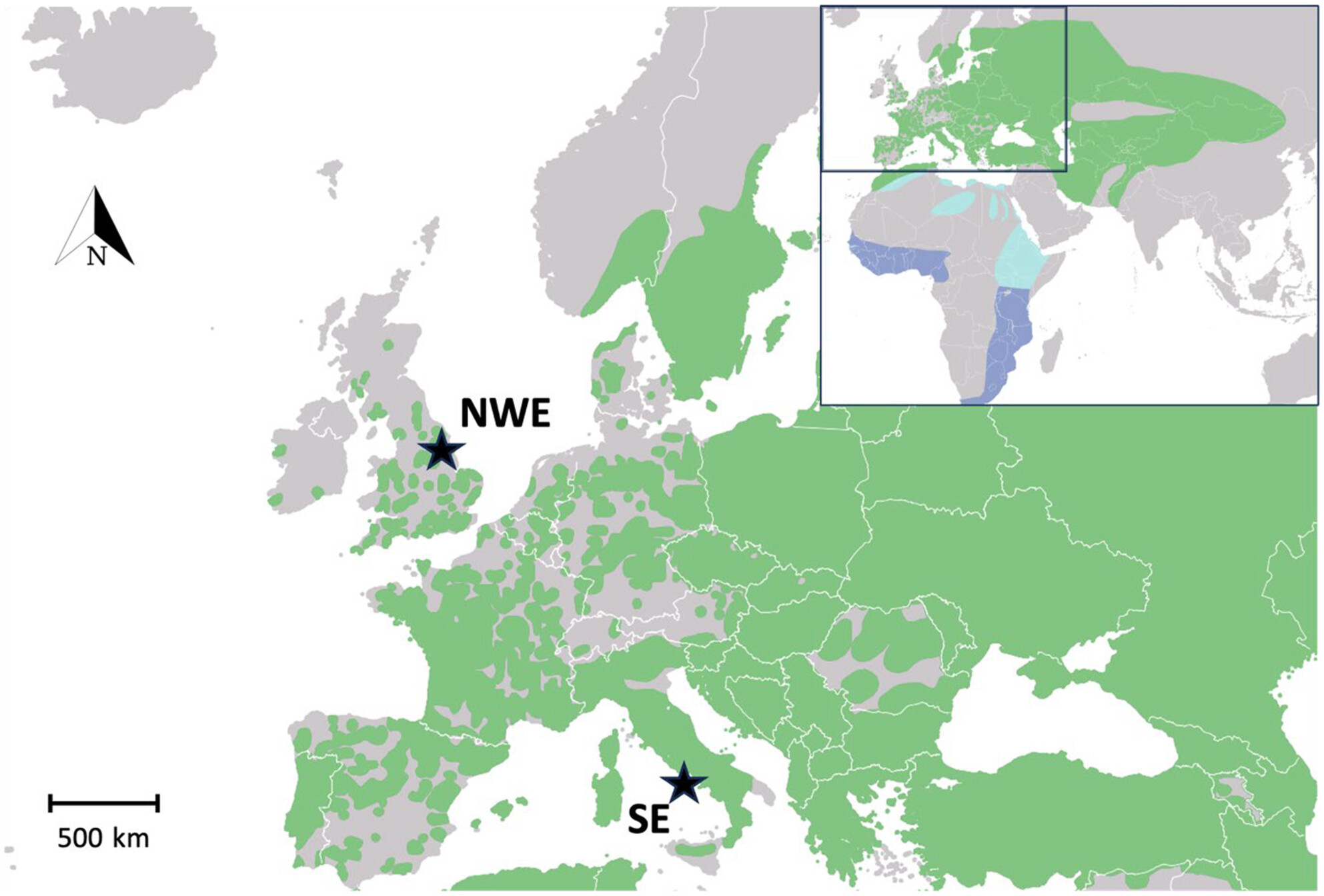
We used pairwise sequentially Markovian coalescent analysis to reveal the ancient demographic history of two contemporary European nightjar (Caprimulgus europaeus) populations. We show that nightjar effective population size has fluctuated over the last 5 million years in relation to changes in global climate. We further show that restriction to glacial refugia likely led to divergence within the European population, with long-distance migration seemingly persisting throughout the Pleistocene.
Understory plant biodiversity is inversely related to carbon storage in a high carbon ecosystem
- First Published: 27 October 2024

Understory plant species richness and plant community diversity are inversely related to aboveground live tree biomass carbon. On average, there is a decline of 2 plant species per increase in 50 Mg ha−1 aboveground live tree biomass. There is an apparent tradeoff between plant biodiversity and carbon management.
Variation in Community Structure and Abundance of Fish in Simple Structured Shallow Sandy Habitats
- First Published: 27 October 2024
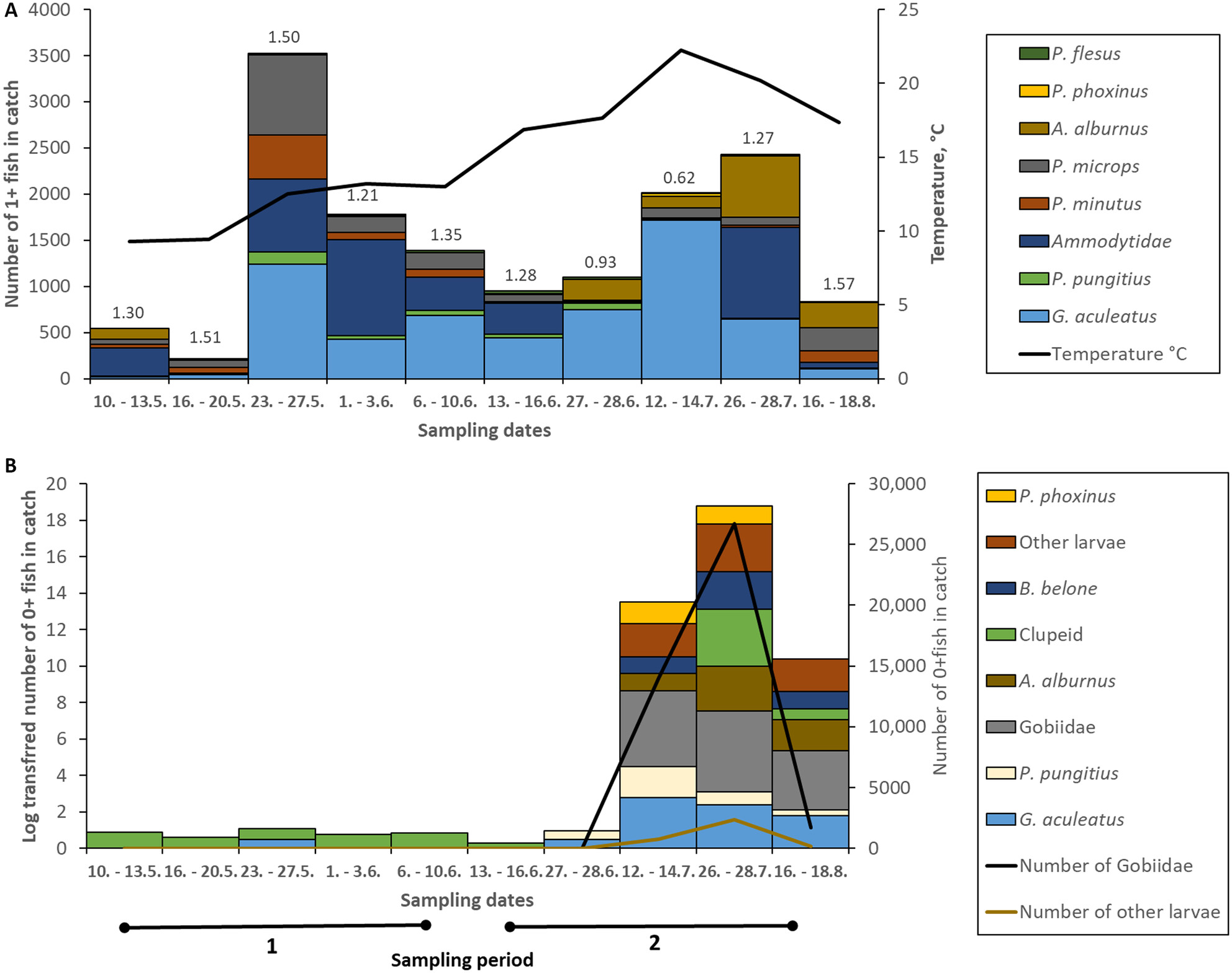
We characterised the fish community structure in simple structured sandy surf zones of the northern Baltic Sea and related variation in fish abundance and community structure to a set of chosen abiotic variables. Our results show that spatio-temporal changes in total abundance and community structure of resident fish are mainly driven by the variation of a few dominating species.
Molecular Evaluation of the Mating Dynamics of Snow Crab (Chionoecetes opilio) in the Eastern Bering Sea
- First Published: 27 October 2024
Long-Term Maintenance of Complex Chromosomal Inversion Polymorphism in Drosophila mediopunctata
- First Published: 27 October 2024
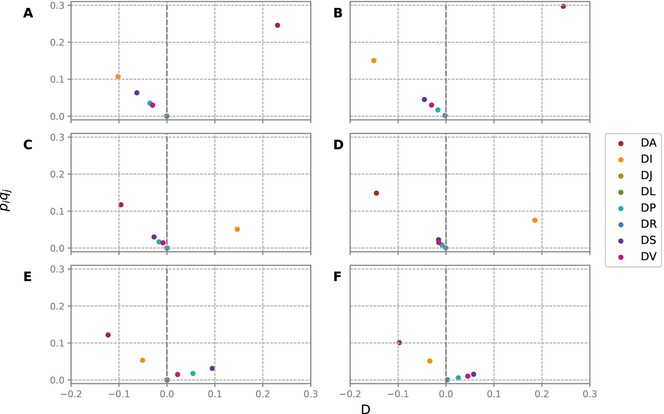
It has become increasingly clear that natural selection favors haplotypes that draw functionally related genes together, often targeting mechanisms that control recombination rates. In this paper, we show that the long-term maintenance of linkage disequilibrium between linked non-overlapping chromosomal inversions in a Drosophila species may arise from a combination of reduced recombination, epistatic selection and balancing selection.
Increased Reproductive Output and Telomere Shortening Following Calcium Supplementation in a Wild Songbird
- First Published: 27 October 2024
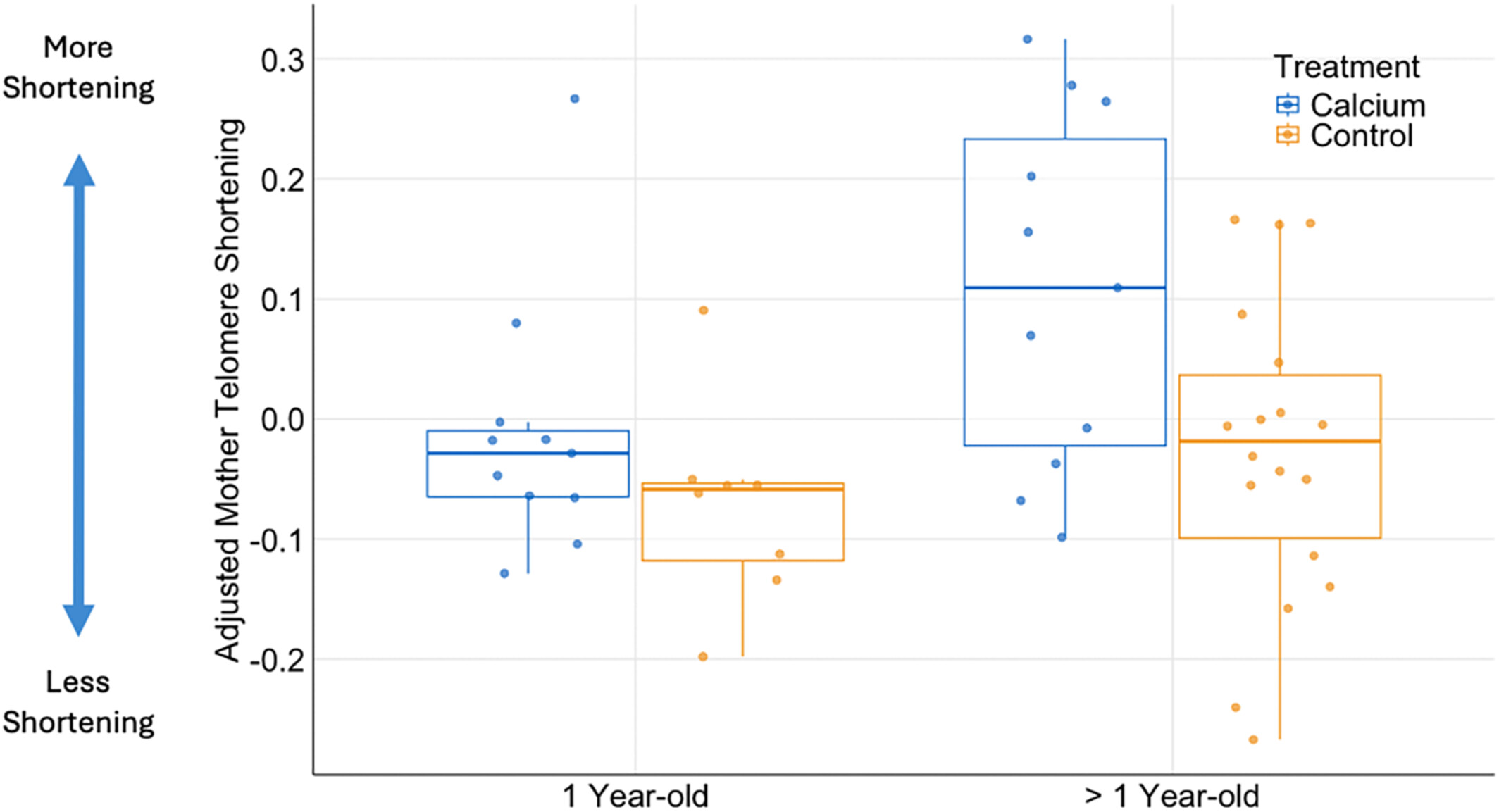
We used calcium supplementation in nesting Tachycineta bicolor (tree swallow) and measured telomere length before and after breeding to better understand the costs of reproduction and life history trade-offs. We found that mothers supplemented with calcium had higher reproductive success and greater telomere shortening, though their offspring had longer telomeres at 12 days old.
Occurrence of Fox Squirrels Influenced by Fine-Scale Landscape Characteristics on a College Campus
- First Published: 27 October 2024
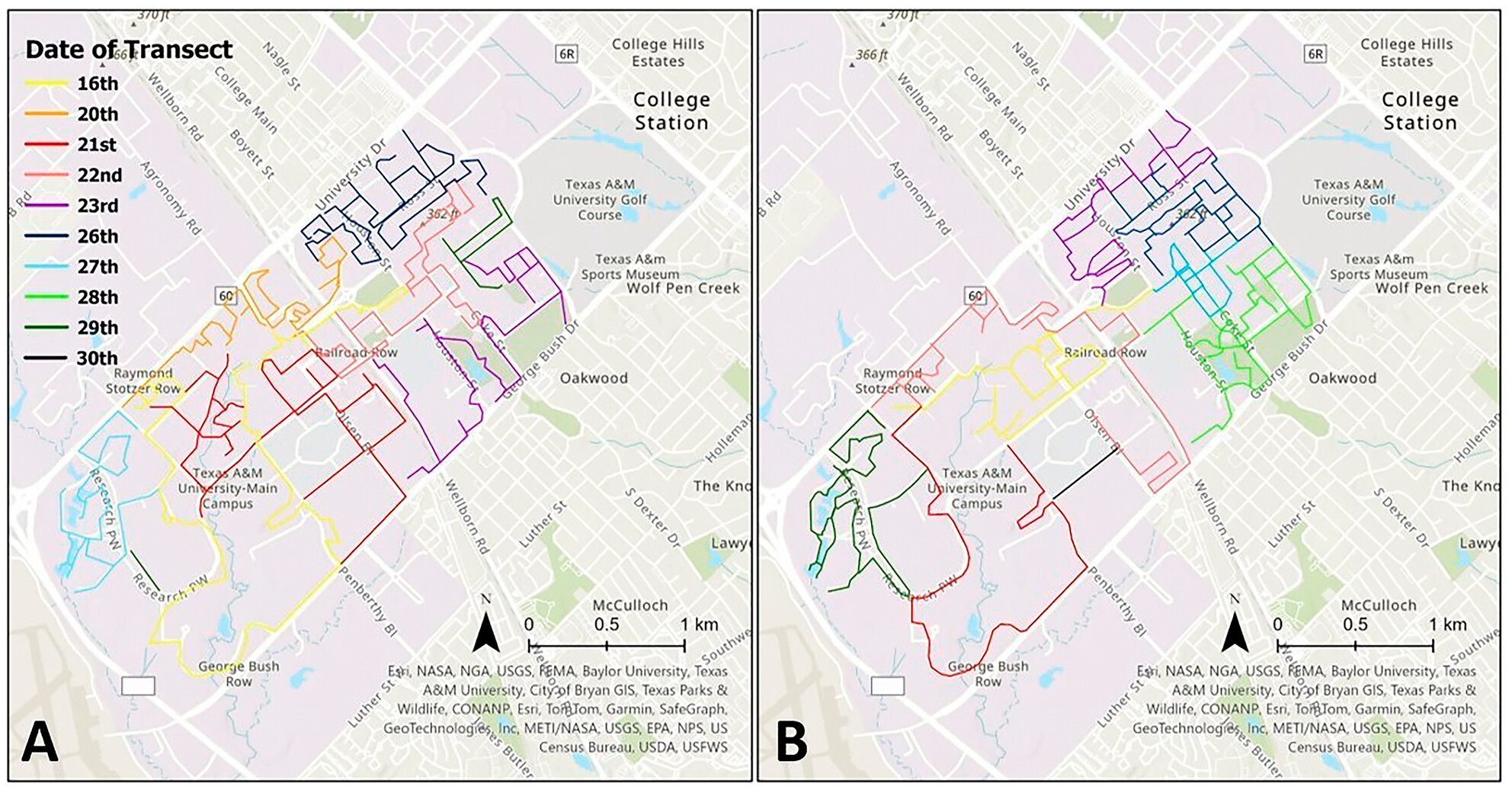
Synanthropic species are able to persist in urban environments and may even occur at greater densities than they do in their natural habitats. To determine how landscape characteristics may affect presence of synanthropic Eastern fox (Sciurus niger) squirrel presence, we conducted line-transect surveys along sidewalks on the Texas A&M University—College Station campus to record presence of fox squirrels and nearest tree species. Fox squirrels preferred only a small number of the available tree species, primarily Quercus and Ulmus species, and observed fox squirrel density significantly increased with time of day, temperature, and tree and oak density, and decreased with length and area of the transect.
Effects of Nitrogen Forms on Soil Enzyme Activities in a Saline-Alkaline Grassland
- First Published: 30 October 2024
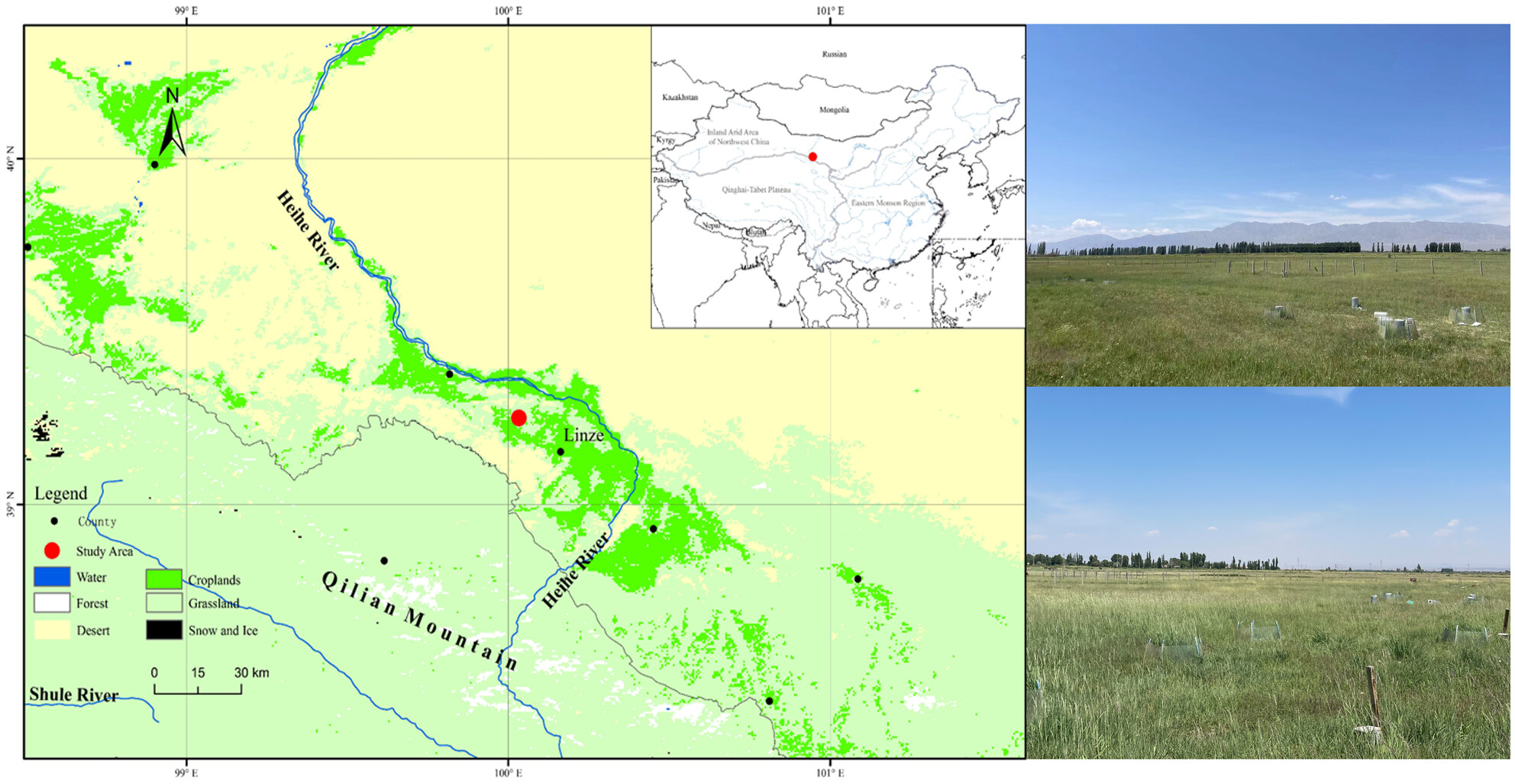
Correlation analysis revealed that soil mineral N content and pH are key regulators of enzyme activities in saline-alkaline grasslands. These results suggest that different N forms should be considered in nutrient cycling models, with organic N addition potentially enhancing soil N conversion and mitigating nutrient limitations in grassland ecosystems.
Predator-specific mortality of sage-grouse nests based on predator DNA on eggshells
- First Published: 28 October 2024

We used DNA collected from eggshells from predated sage-grouse nests to identify nest predators. We evaluated the influence of habitat and grazing on predator-specific nest predation. We evaluated the efficacy of our genetic method by deploying artificial nests with trail cameras and compared the results of our genetic method to the species captured via trail camera.
Inter- and Intraspecific Competition in Invasive Lactuca serriola and Co-Occurring Weedy Plant Species
- First Published: 29 October 2024
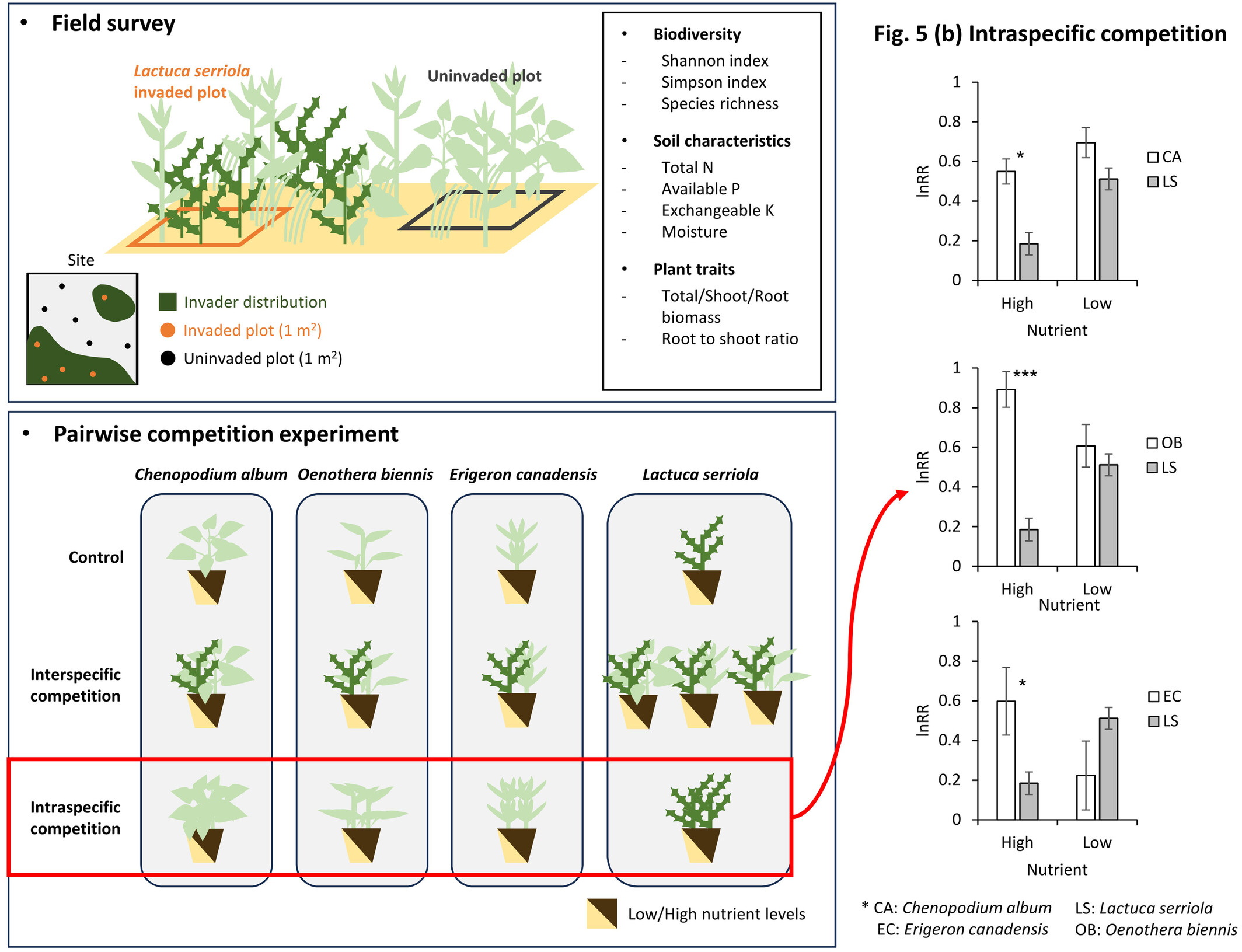
Interspecific competition between the invasive L. serriola and co-occurring weedy plants was similar, but L. serriola exhibited weaker intraspecific competition, especially in high-nutrient conditions. This weaker intraspecific competition may help L. serriola establish high-density populations, contributing to its successful invasion despite not being a strong competitor against other weedy species.
Venturing Into the Unknown: The Importance of Variable Selection When Modelling Alien Species Under Non-Analogue Climatic Conditions
- First Published: 28 October 2024
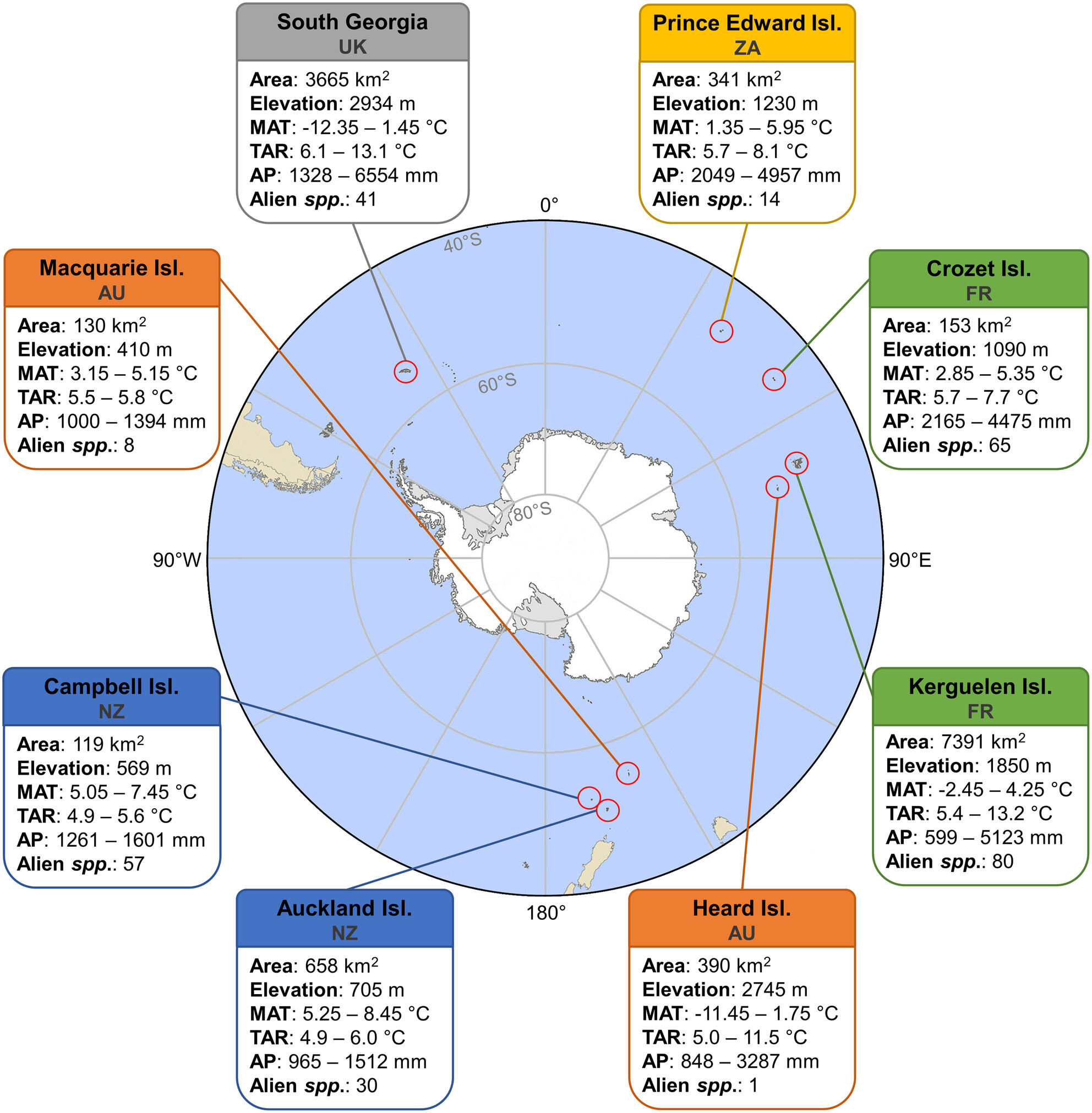
While having received less attention than other model parameters, variable selection can have a strong influence on predictions of species distribution models. This study shows how models with different sets of bioclimatic variables lead to widely varying predictions under non-analogue conditions, using the sub-Antarctic as a study system.
Antecedent Effect Models as an Exploratory Tool to Link Climate Drivers to Herbaceous Perennial Population Dynamics Data
- First Published: 29 October 2024
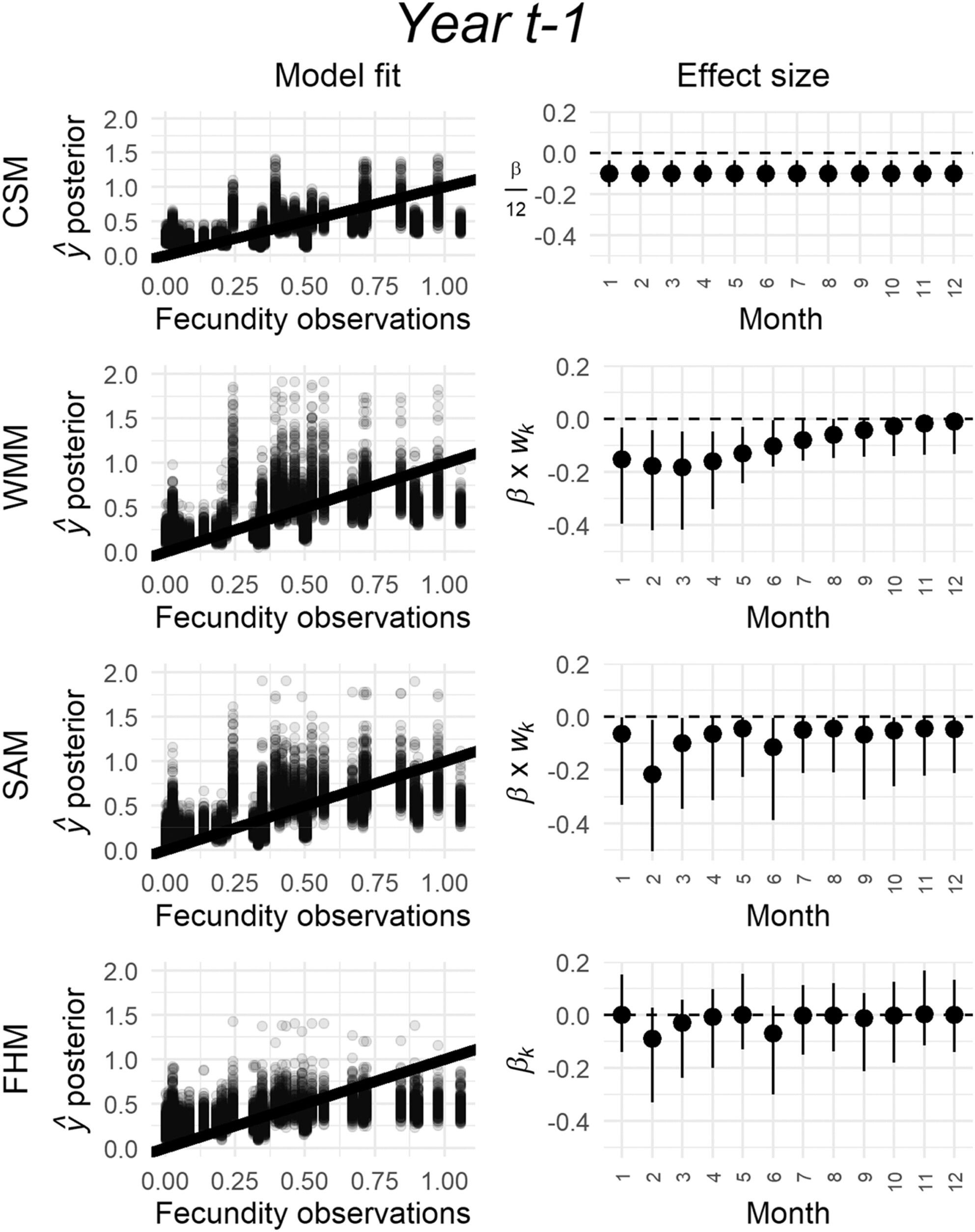
We compare the performance of predicting the effect of climate on demographic rates using three very complex (“antecedent models”), and two simple (linear regression and “null” models without climate predictors) statistical models. None of the models including climate consistently improves predictive ability. However, in the few, selected cases where antecedent effect models improve predictive ability, they can be a formidable exploratory data analysis tool.
RESEARCH ARTICLES
Essential mineral elements in roe deer: Associations with parasites and immune phenotypes in two contrasting populations
- First Published: 29 October 2024
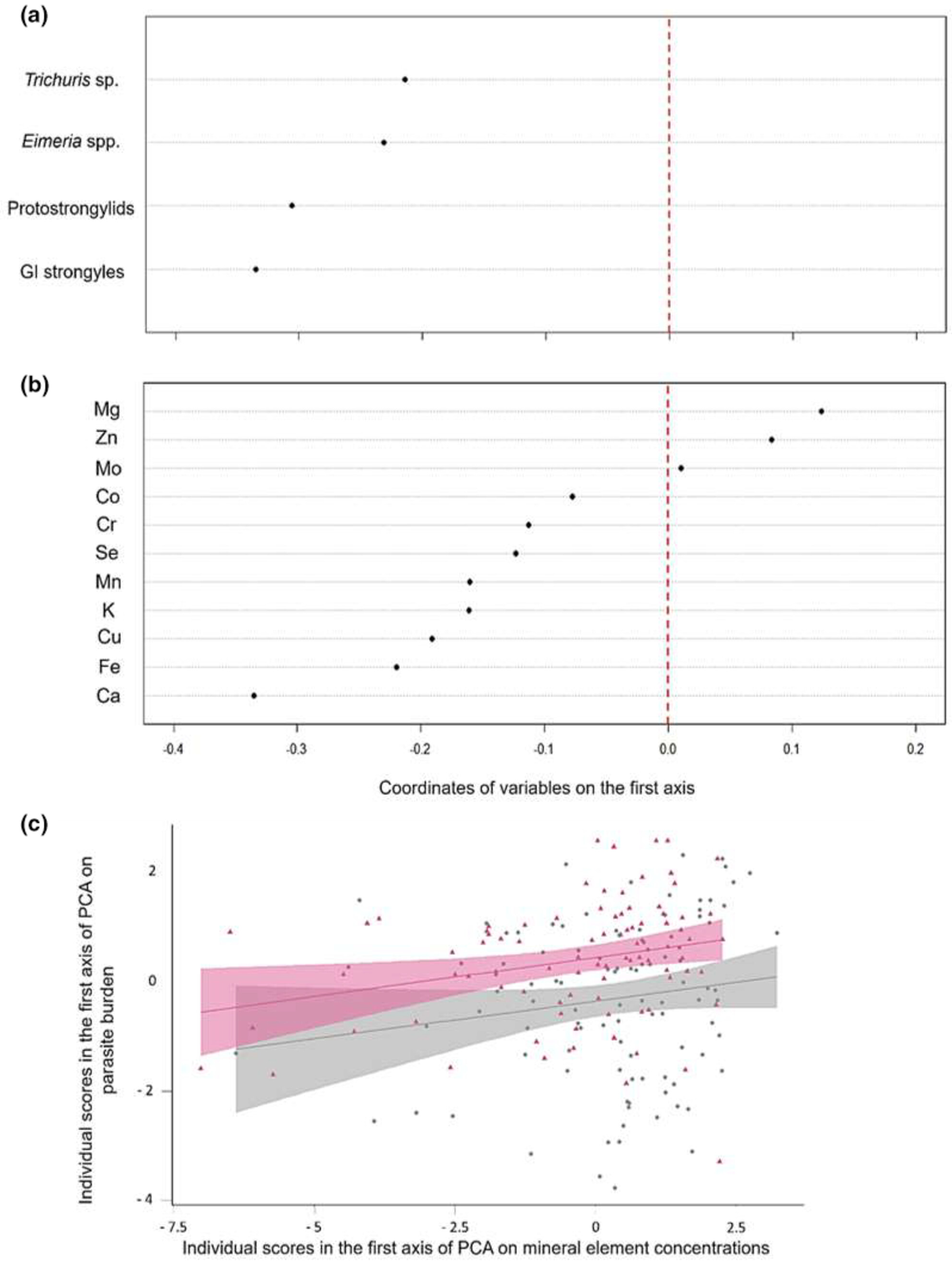
Essential trace elements are known to be necessary in an individual's life to perform various metabolic functions, for example, immunity and defense against parasites. For the first time, this study brings a new vision of the trace element-parasite-immunity relationships in two populations of roe deer living in contrasting habitats.




